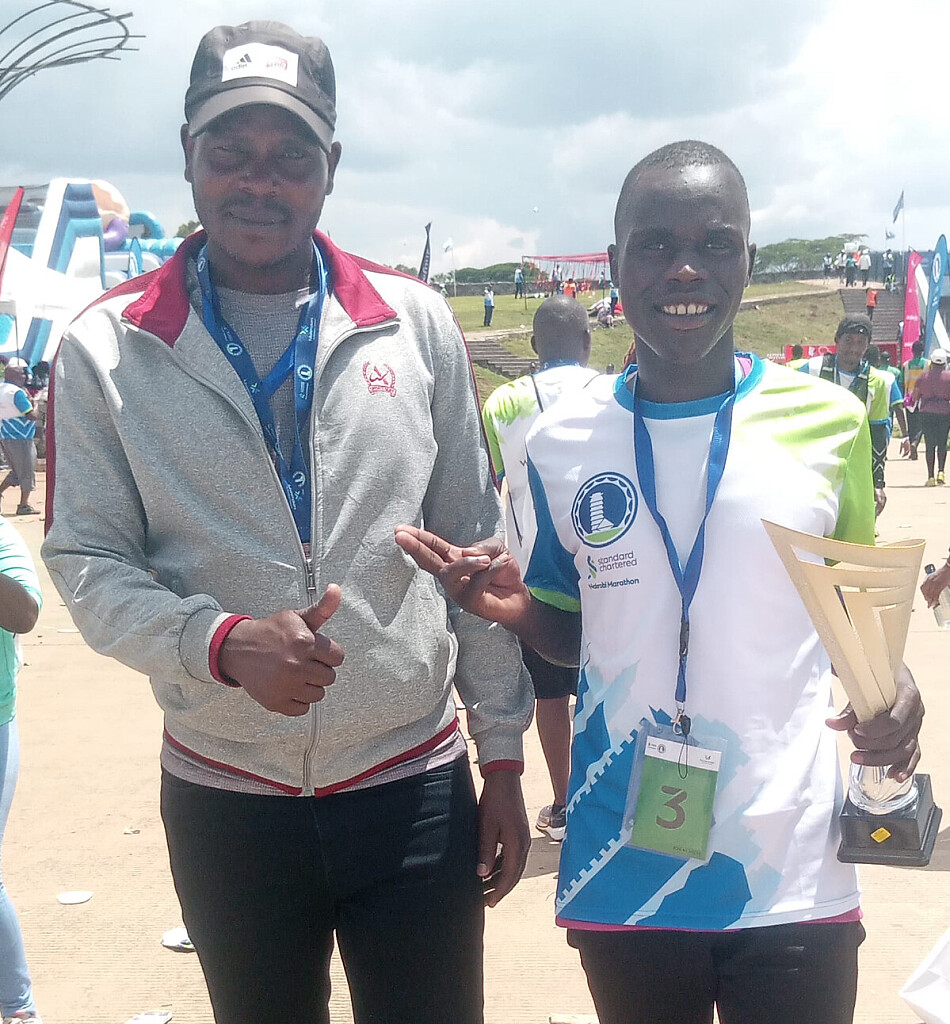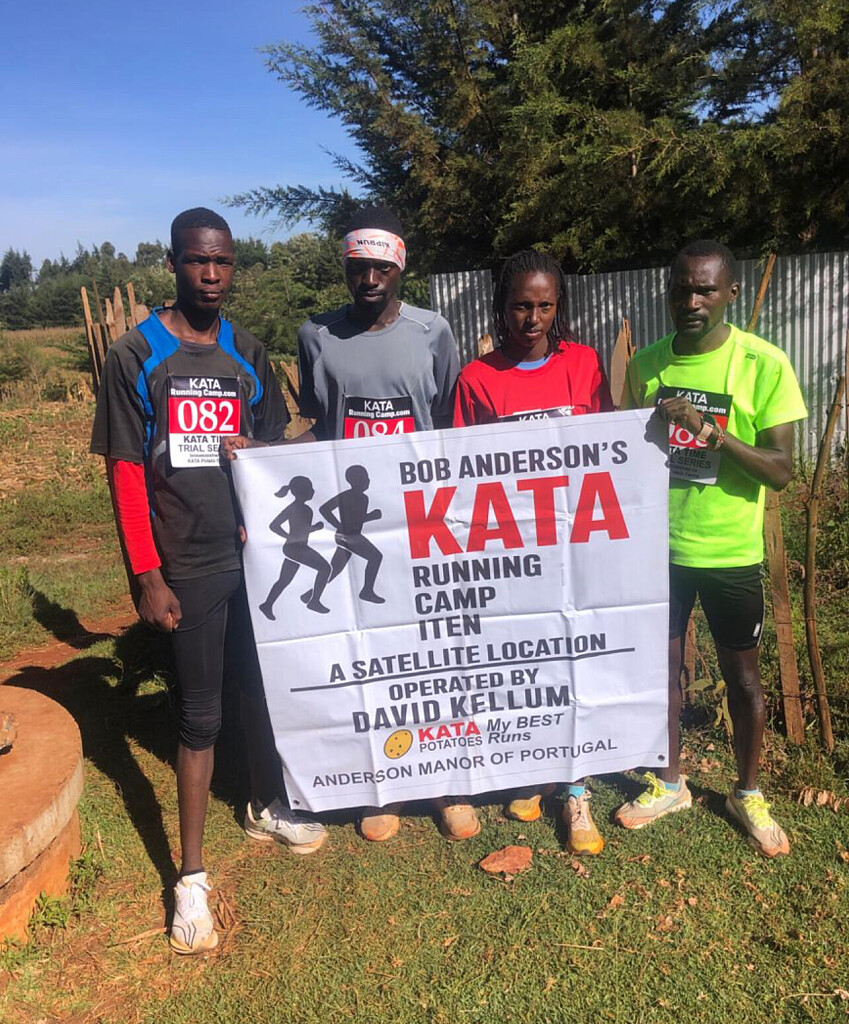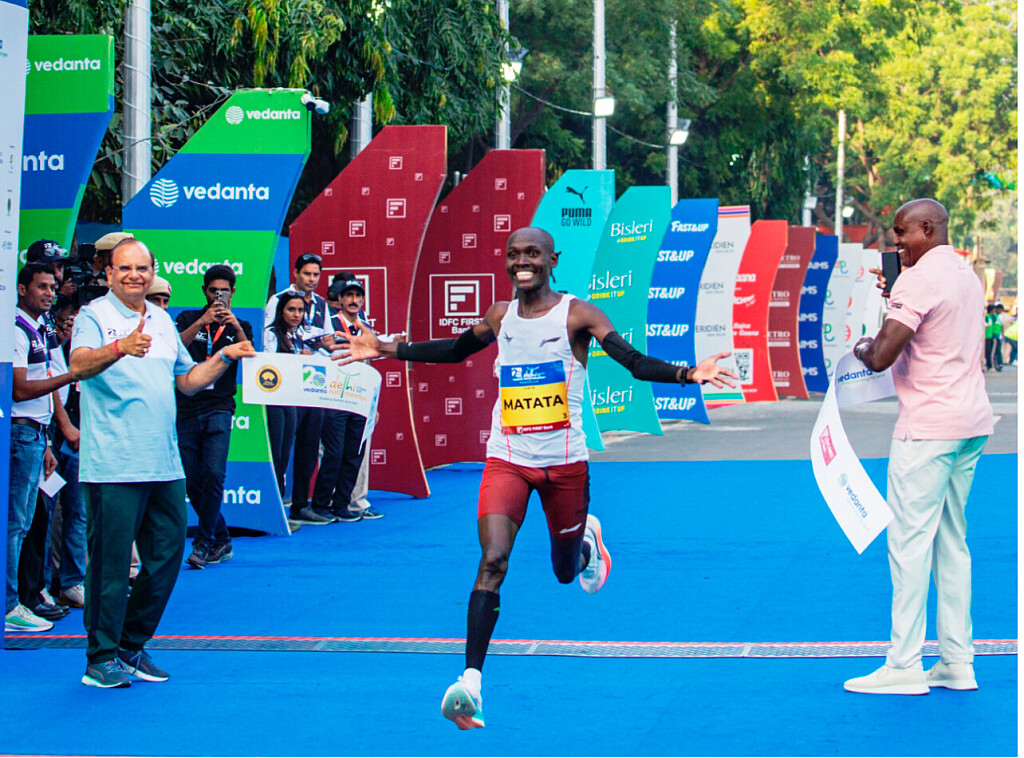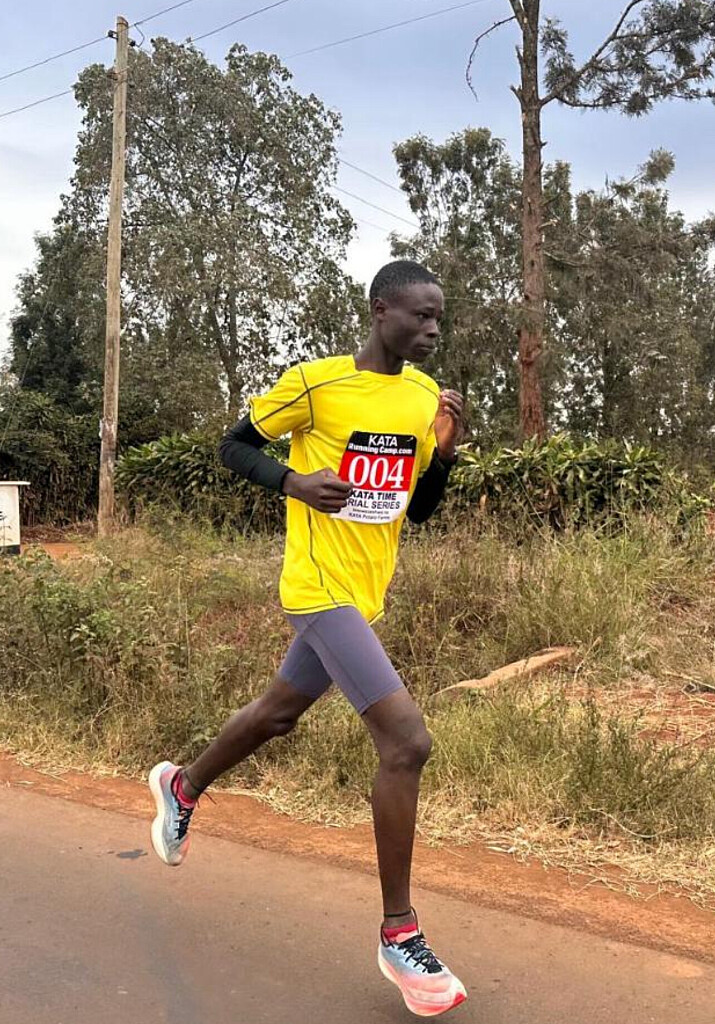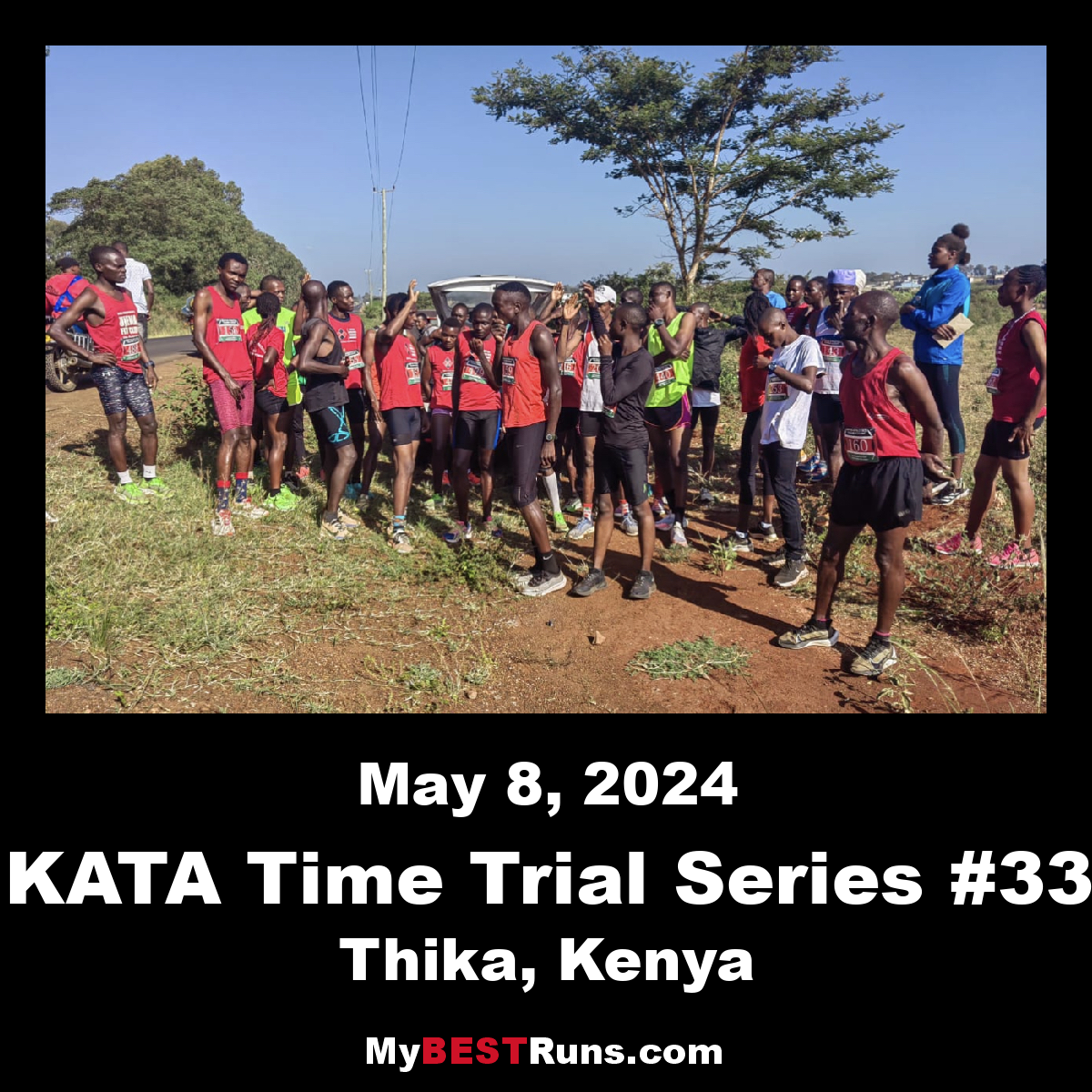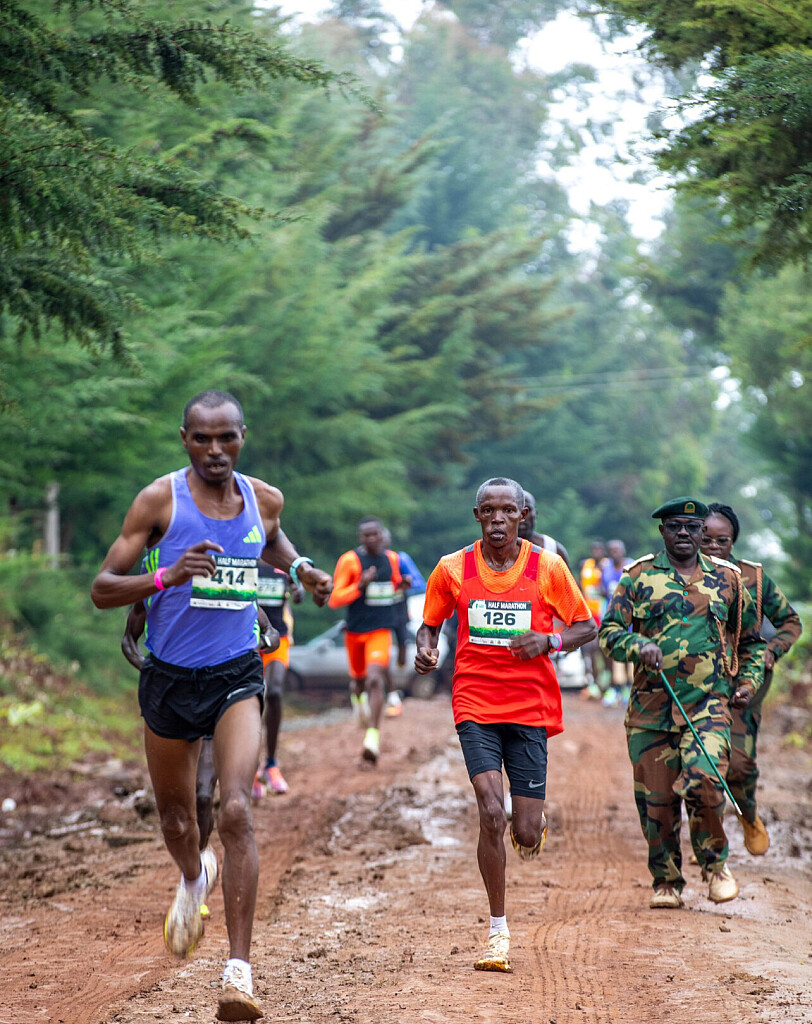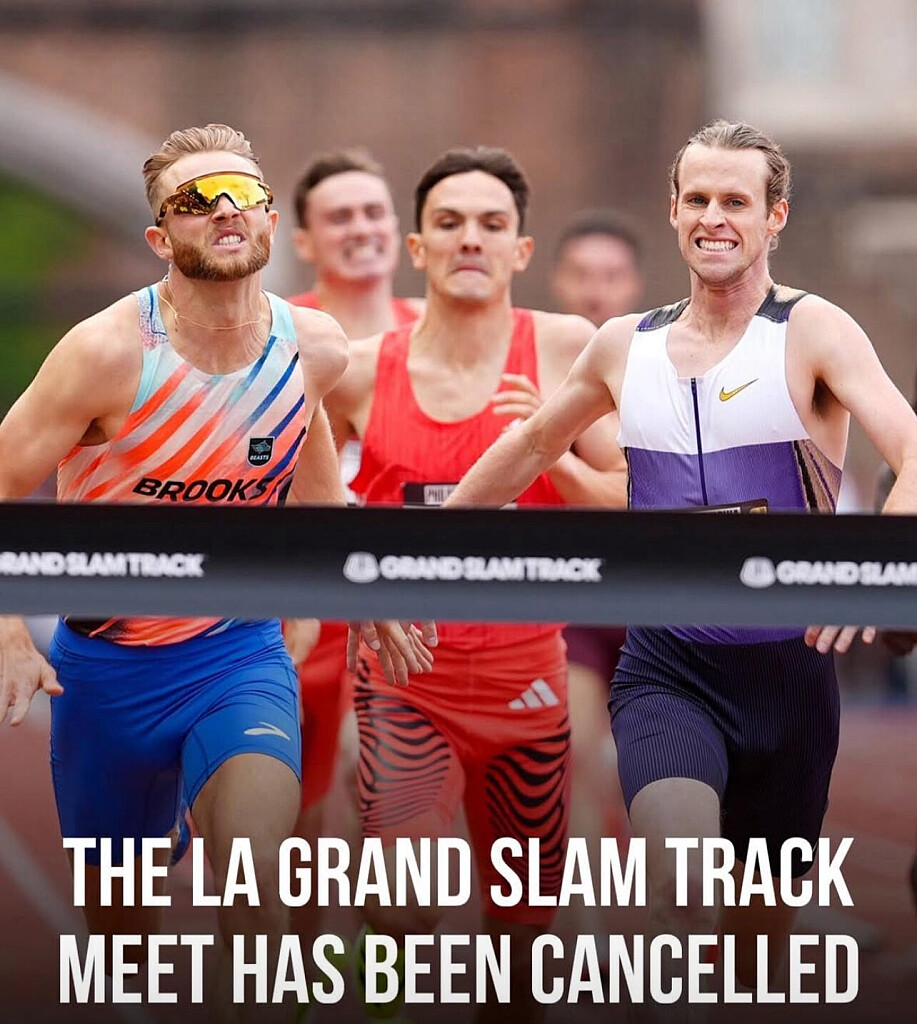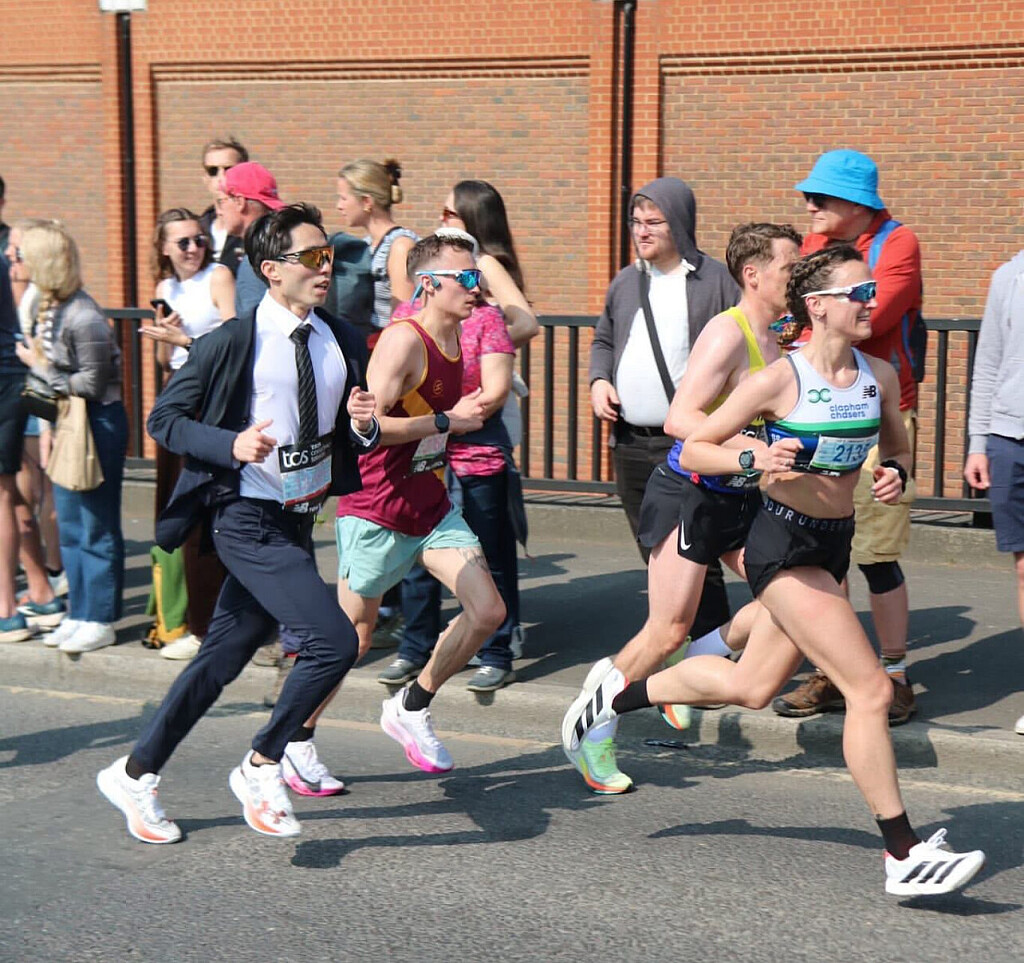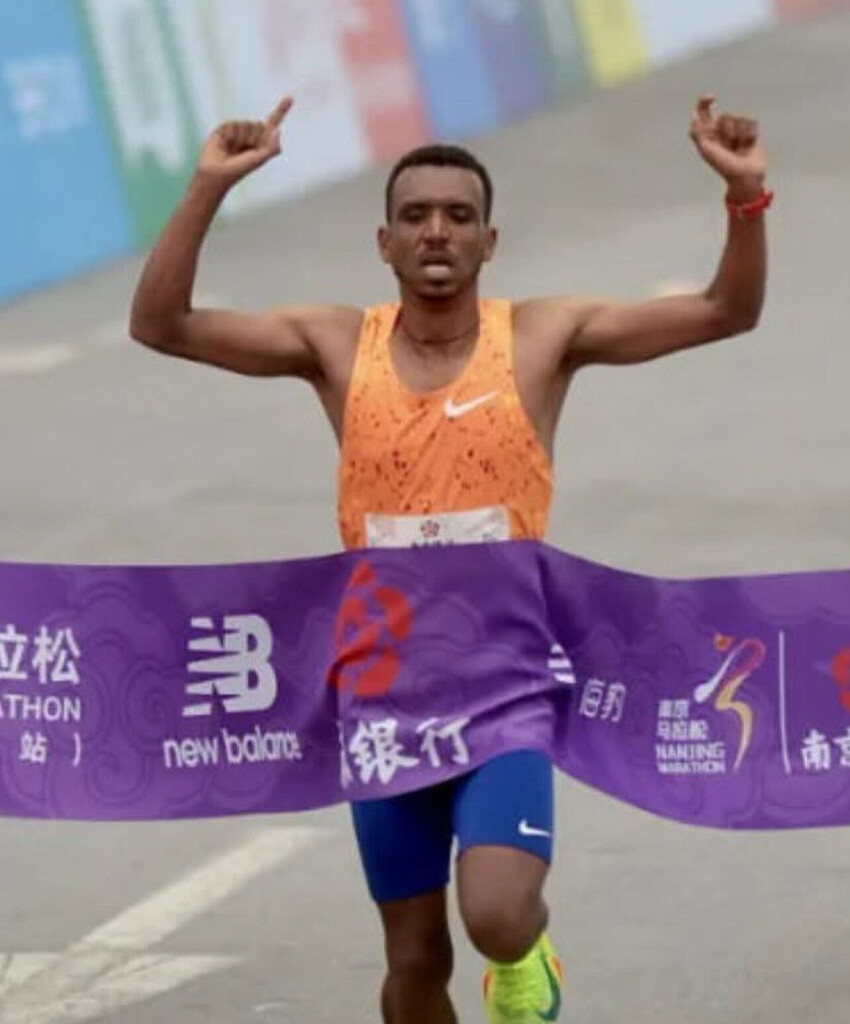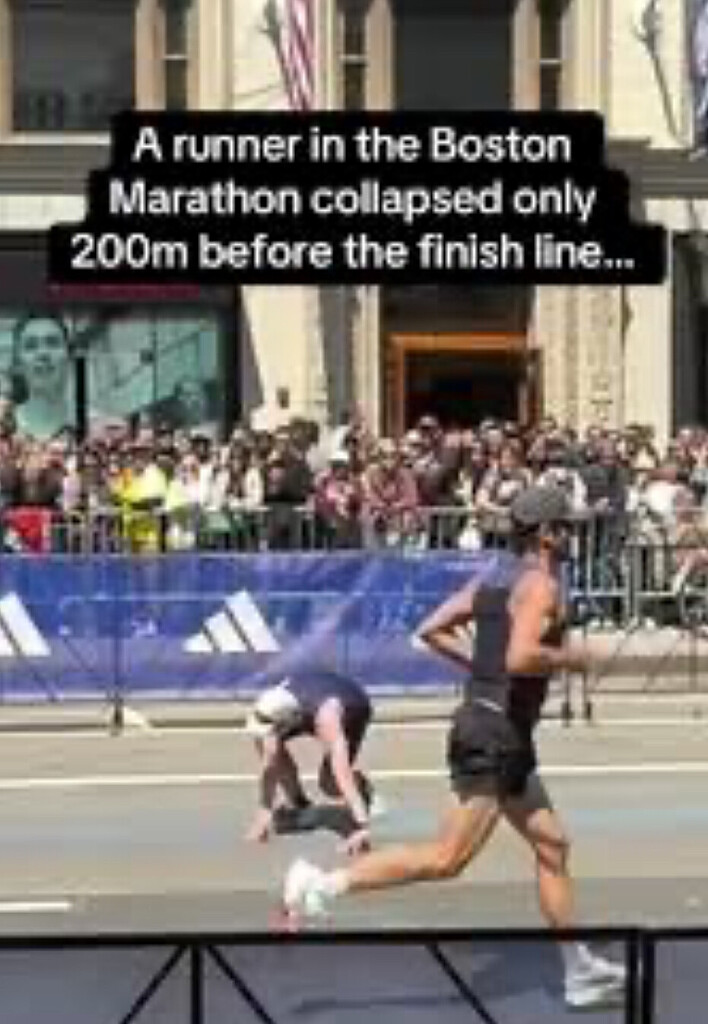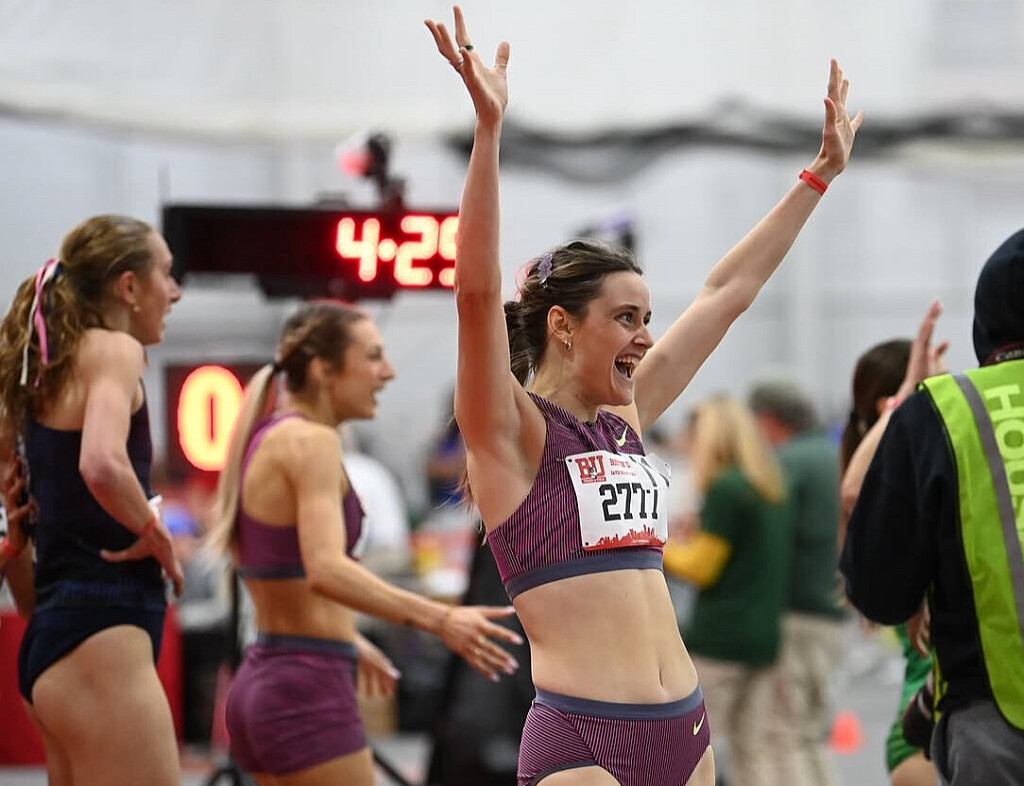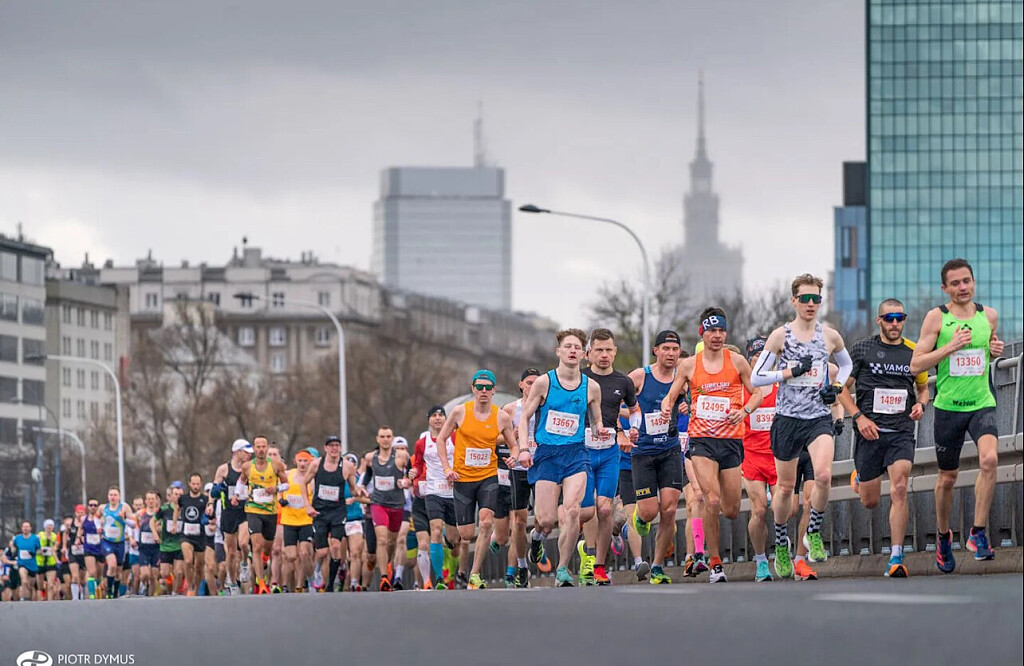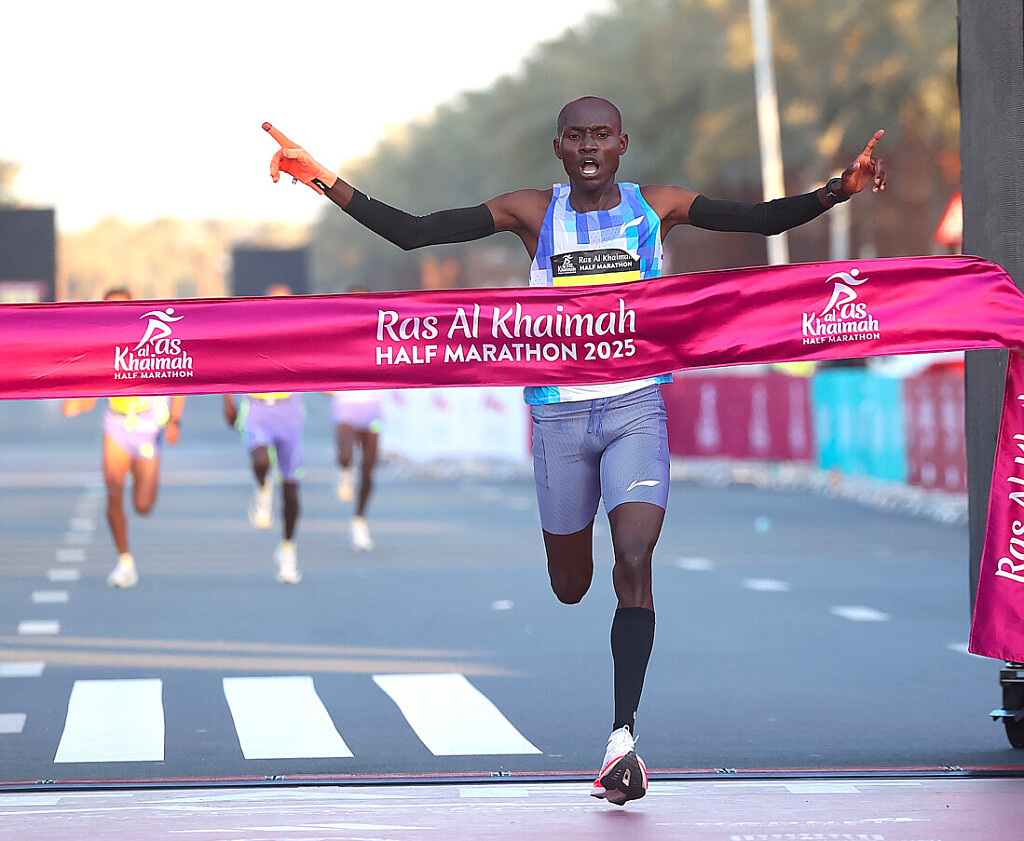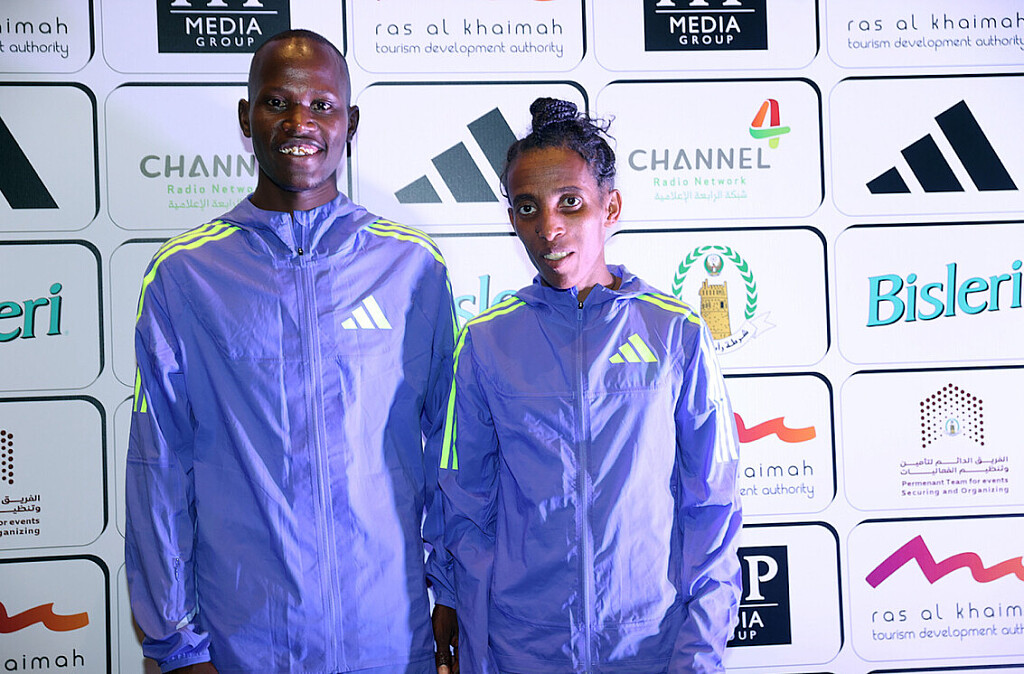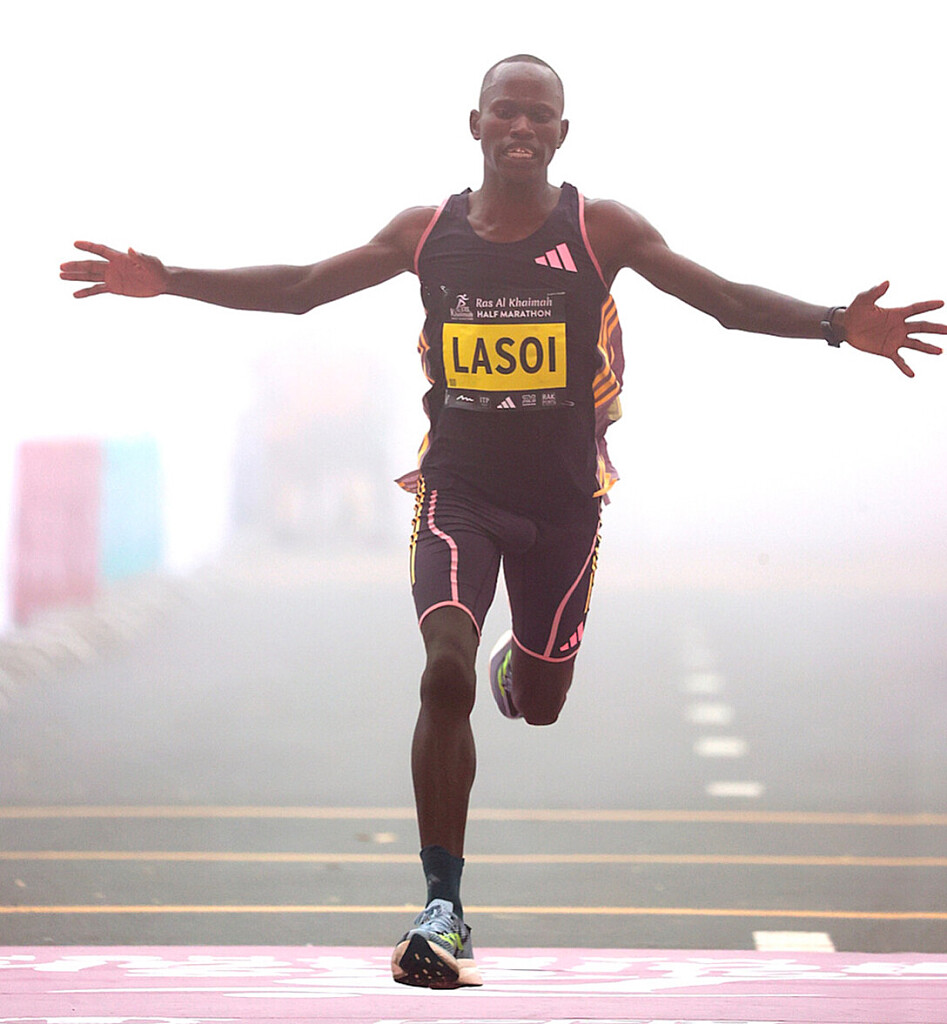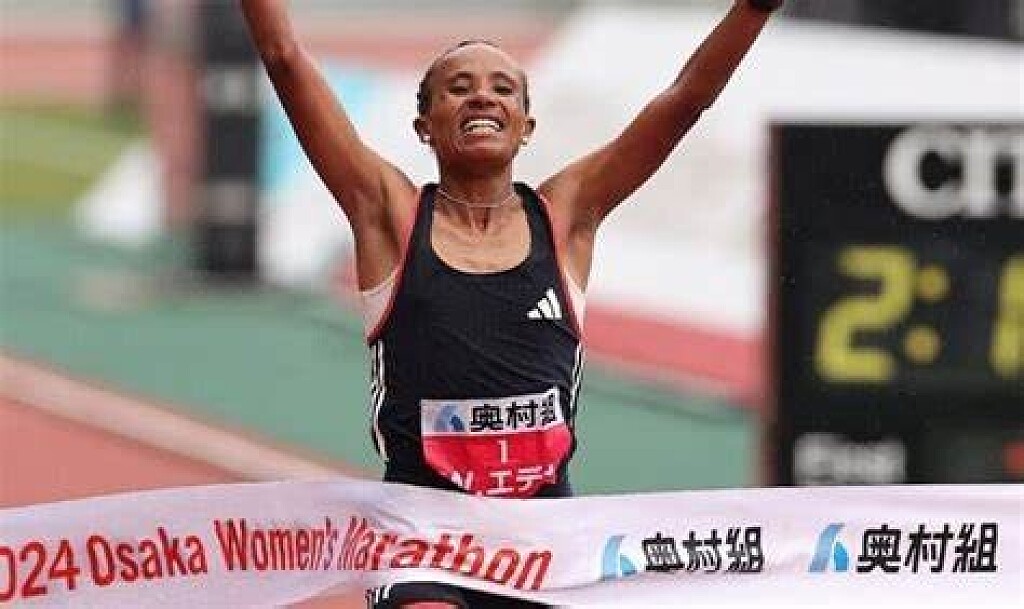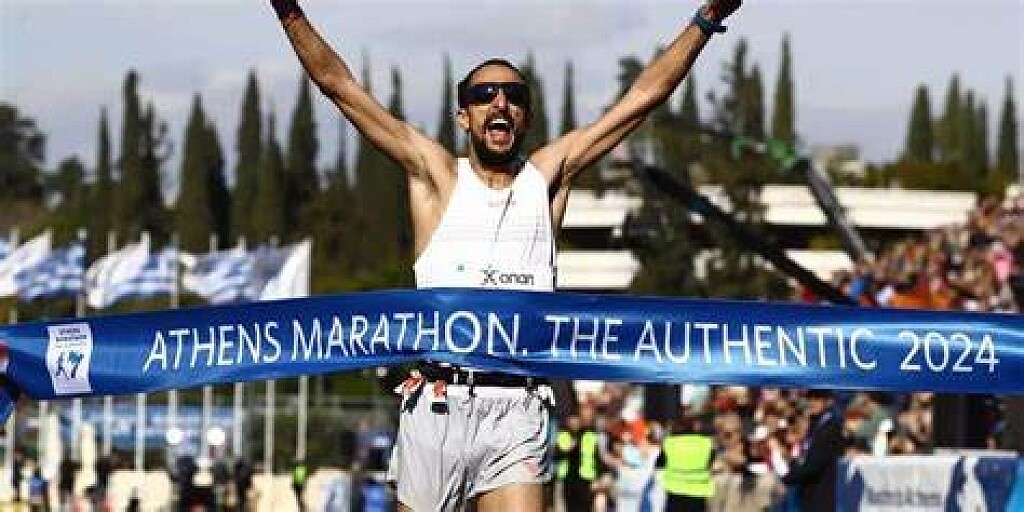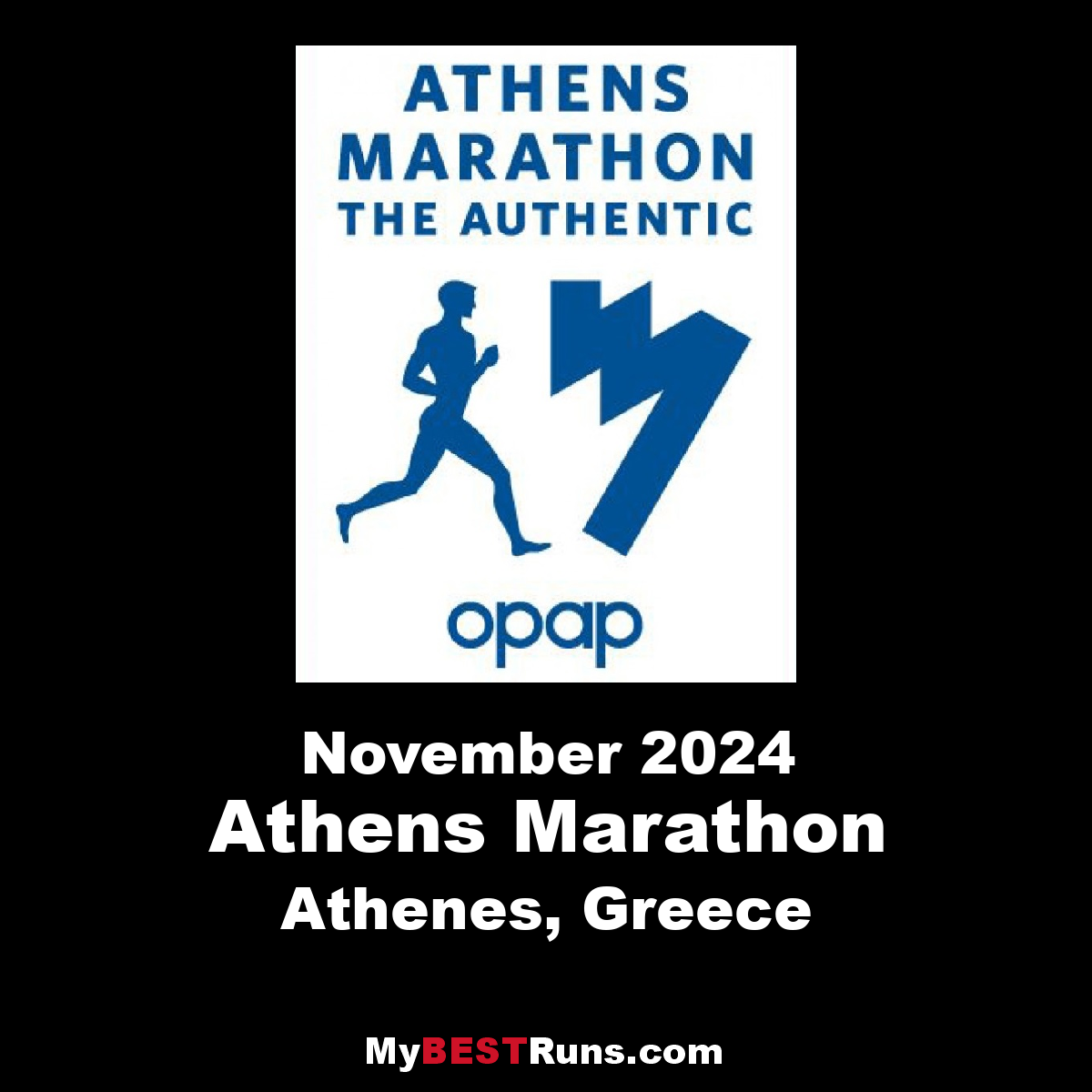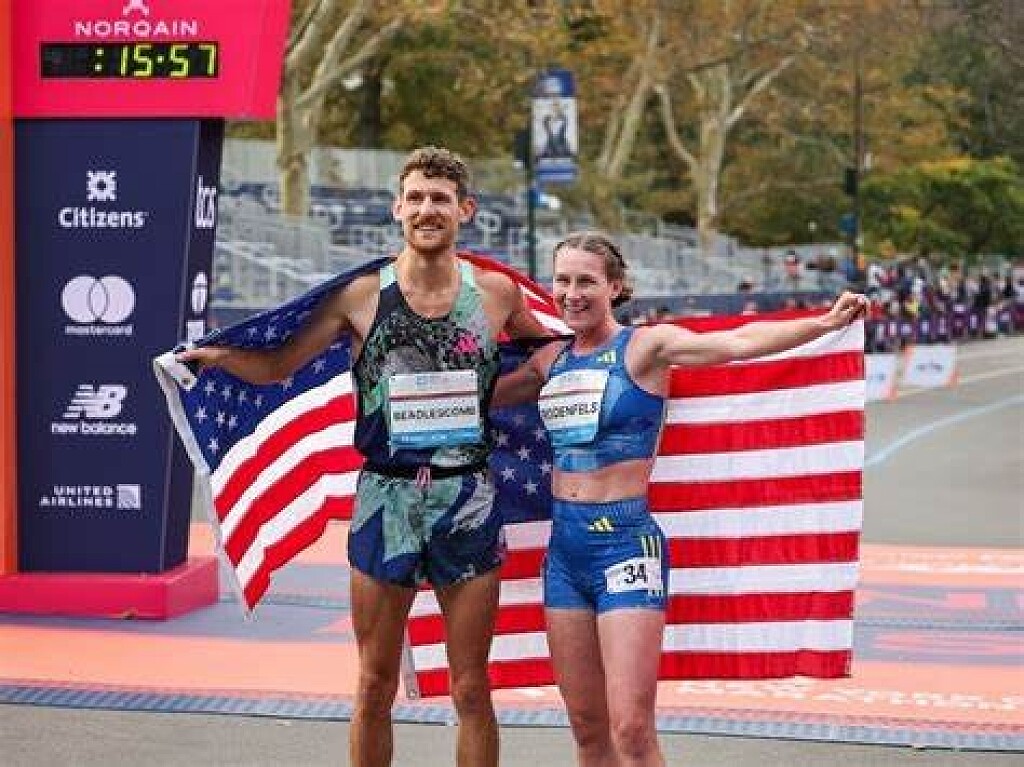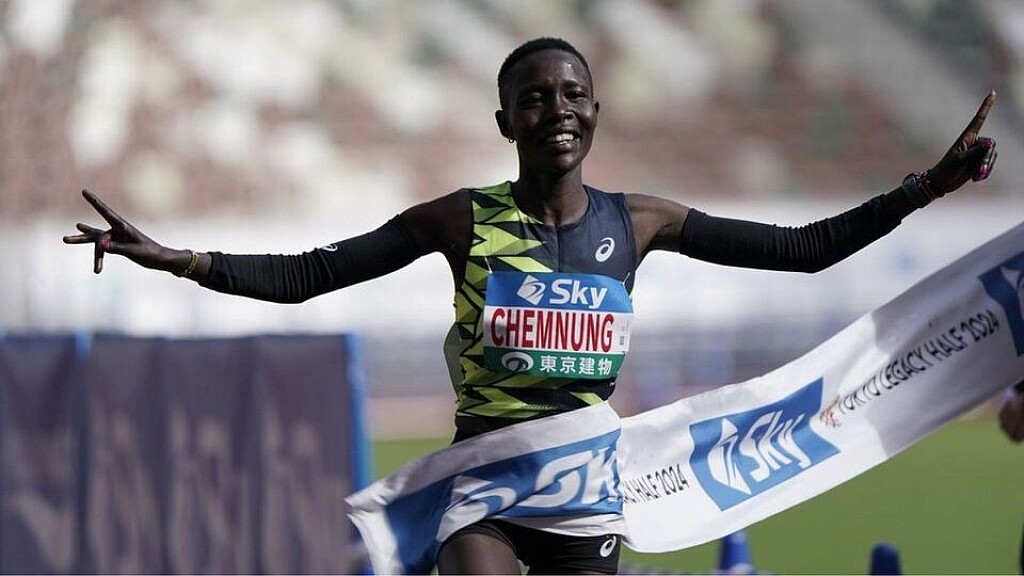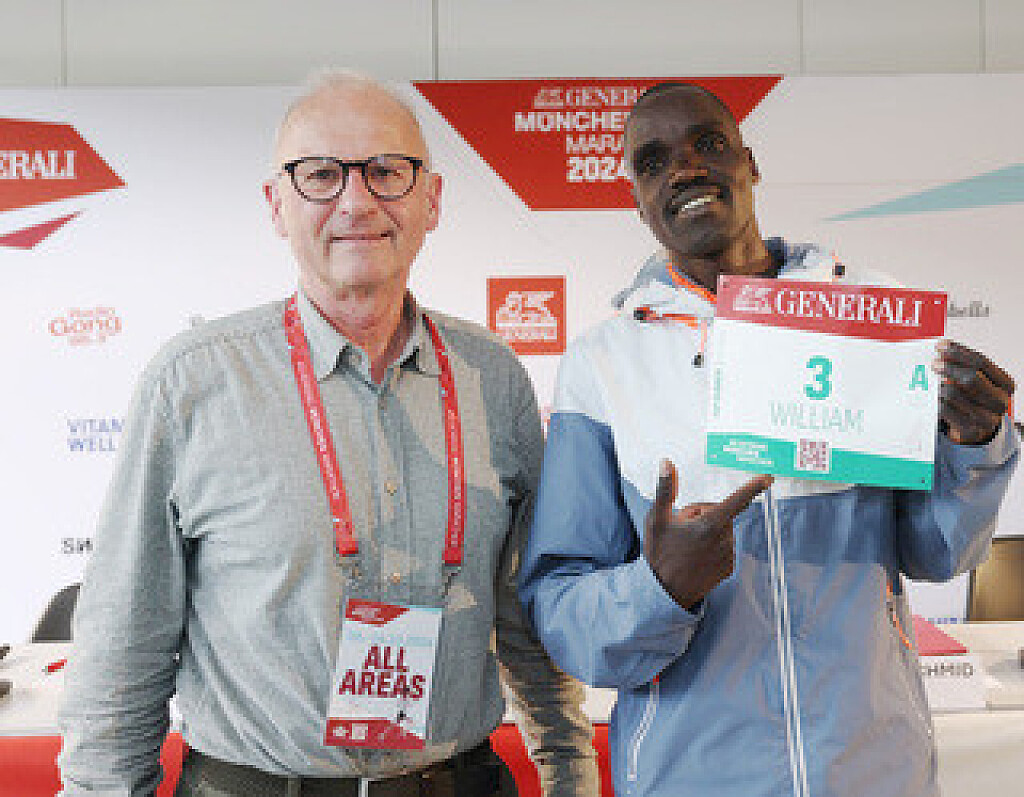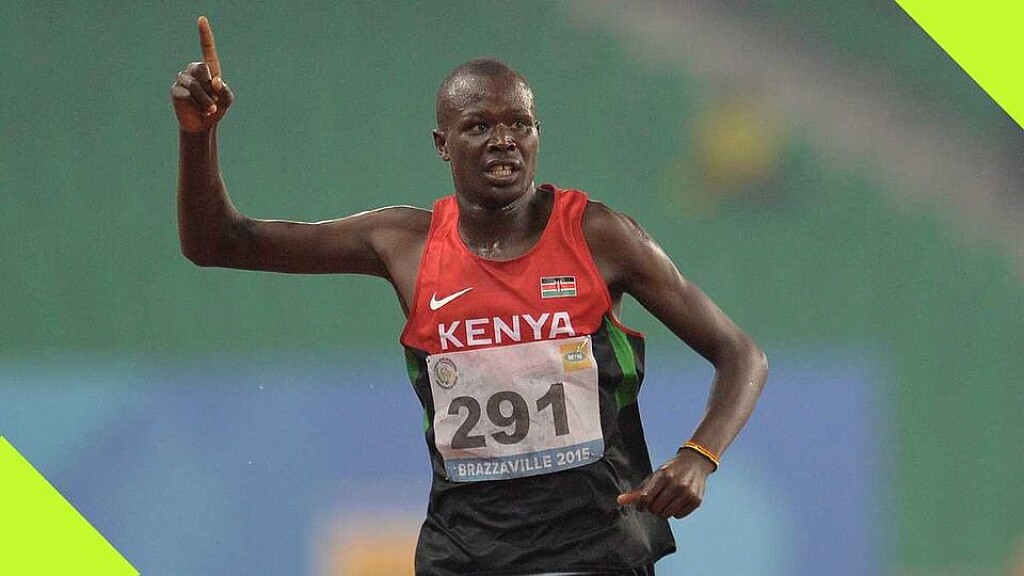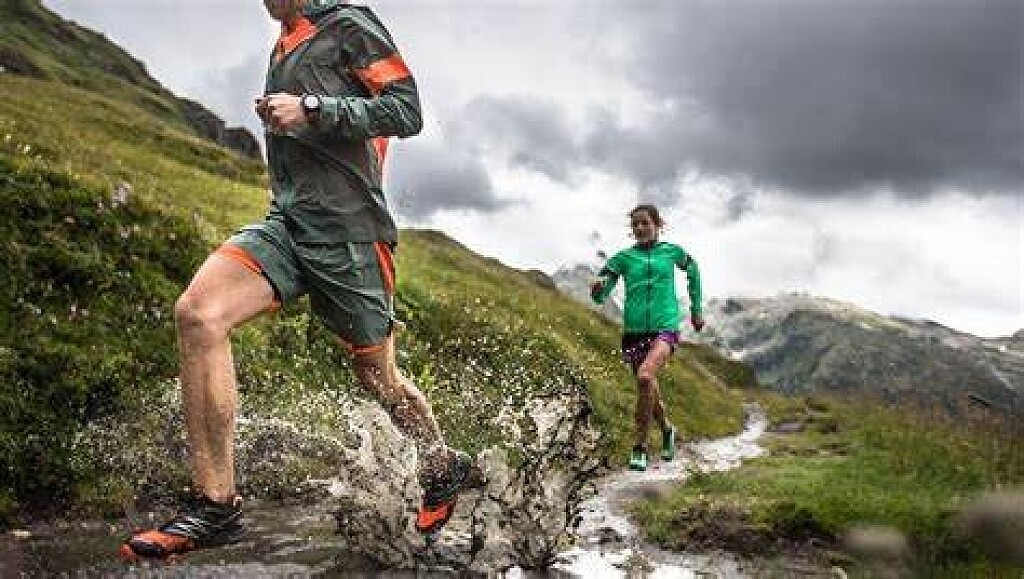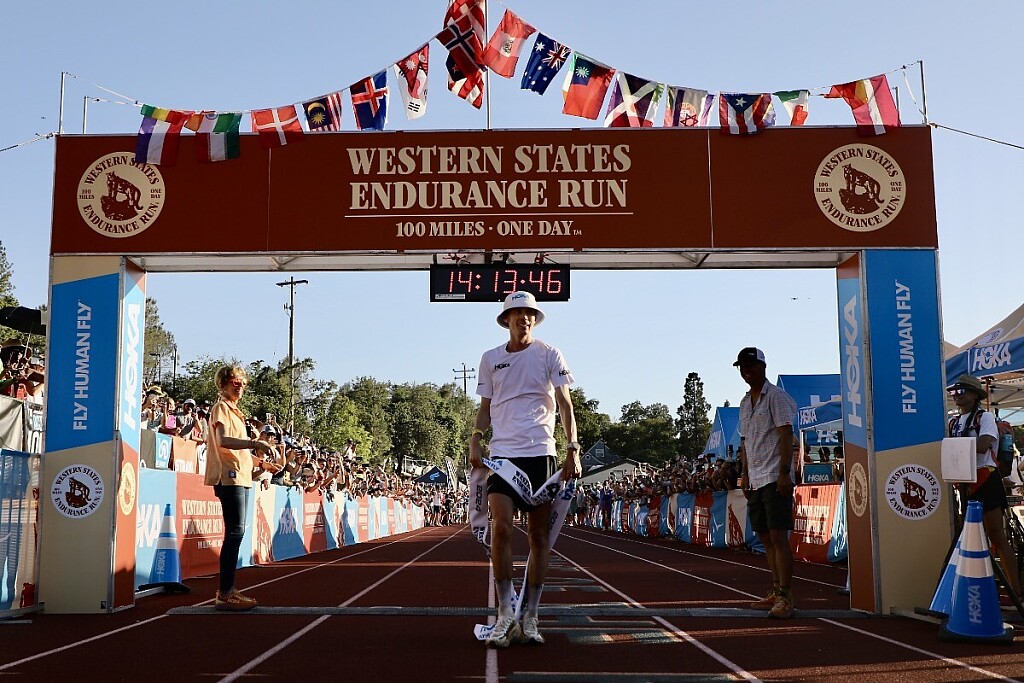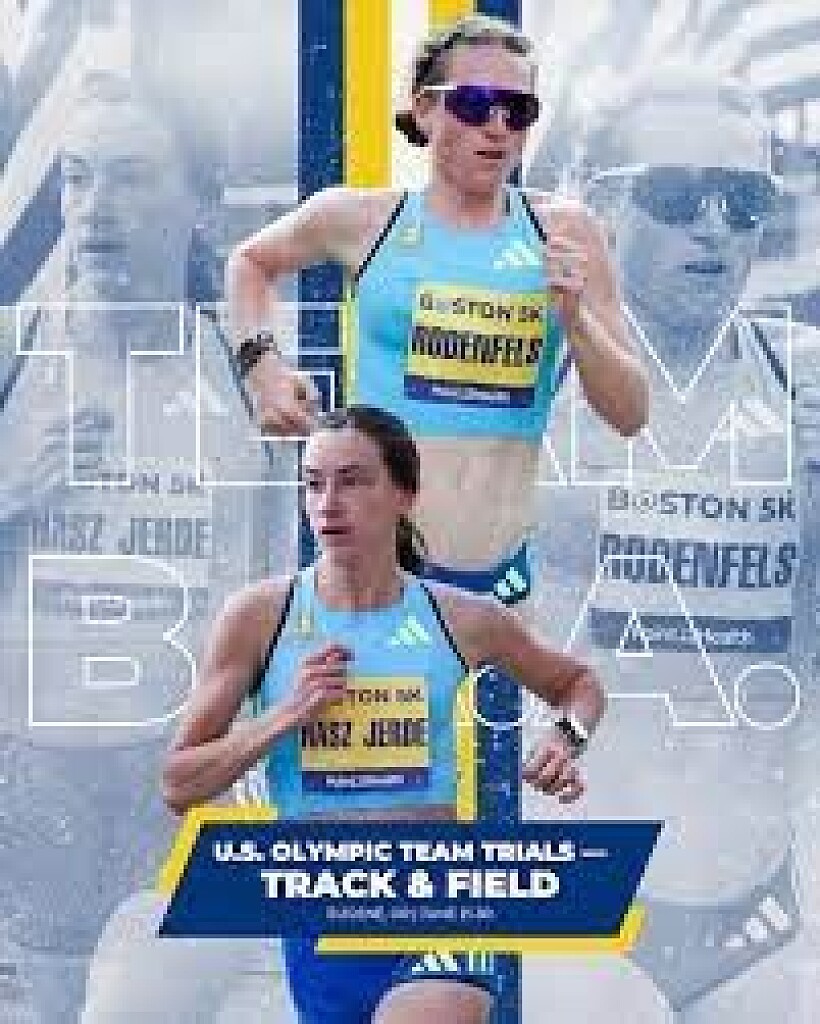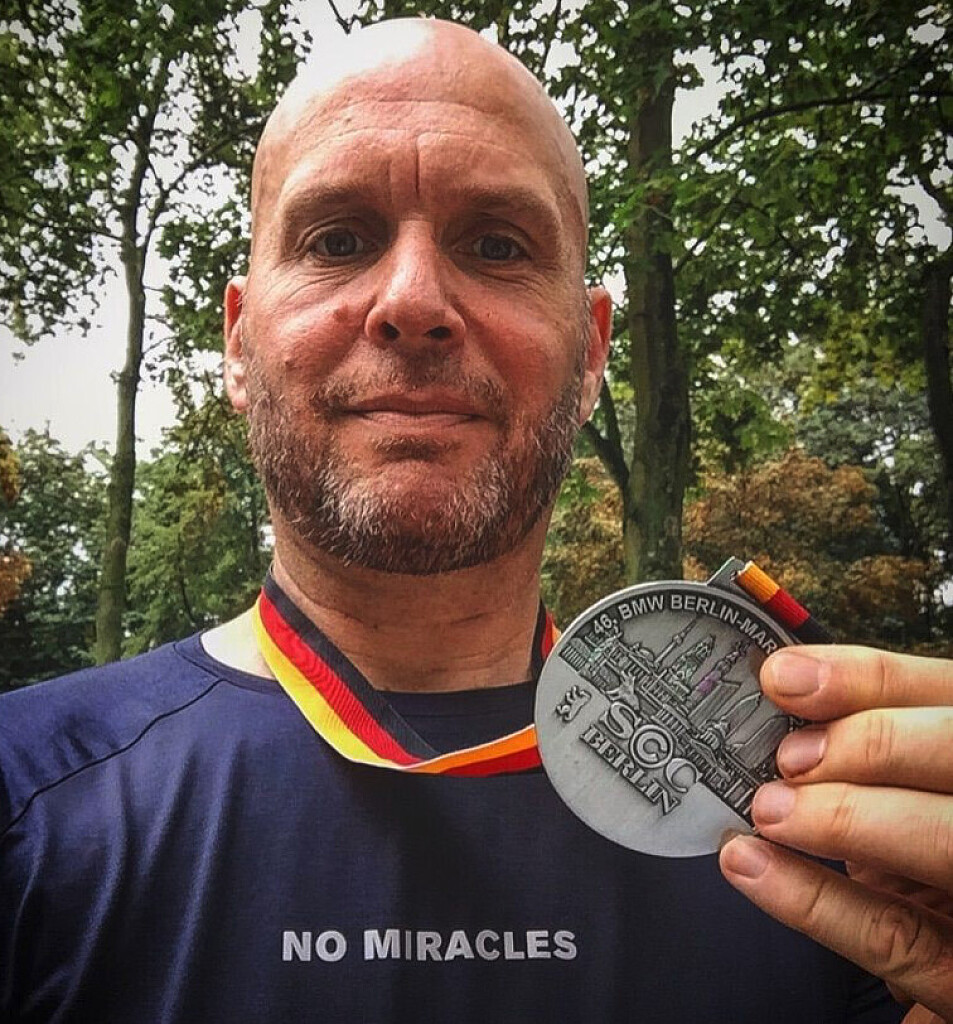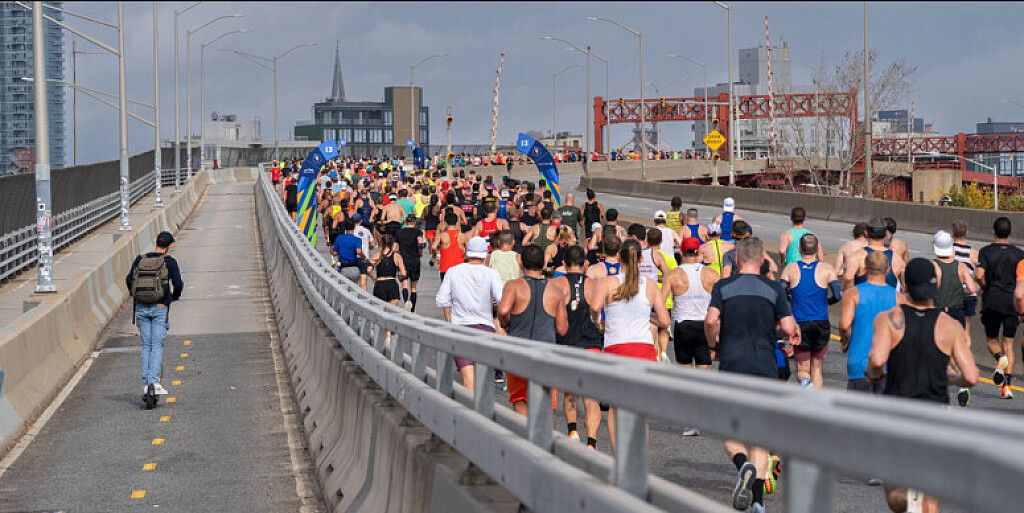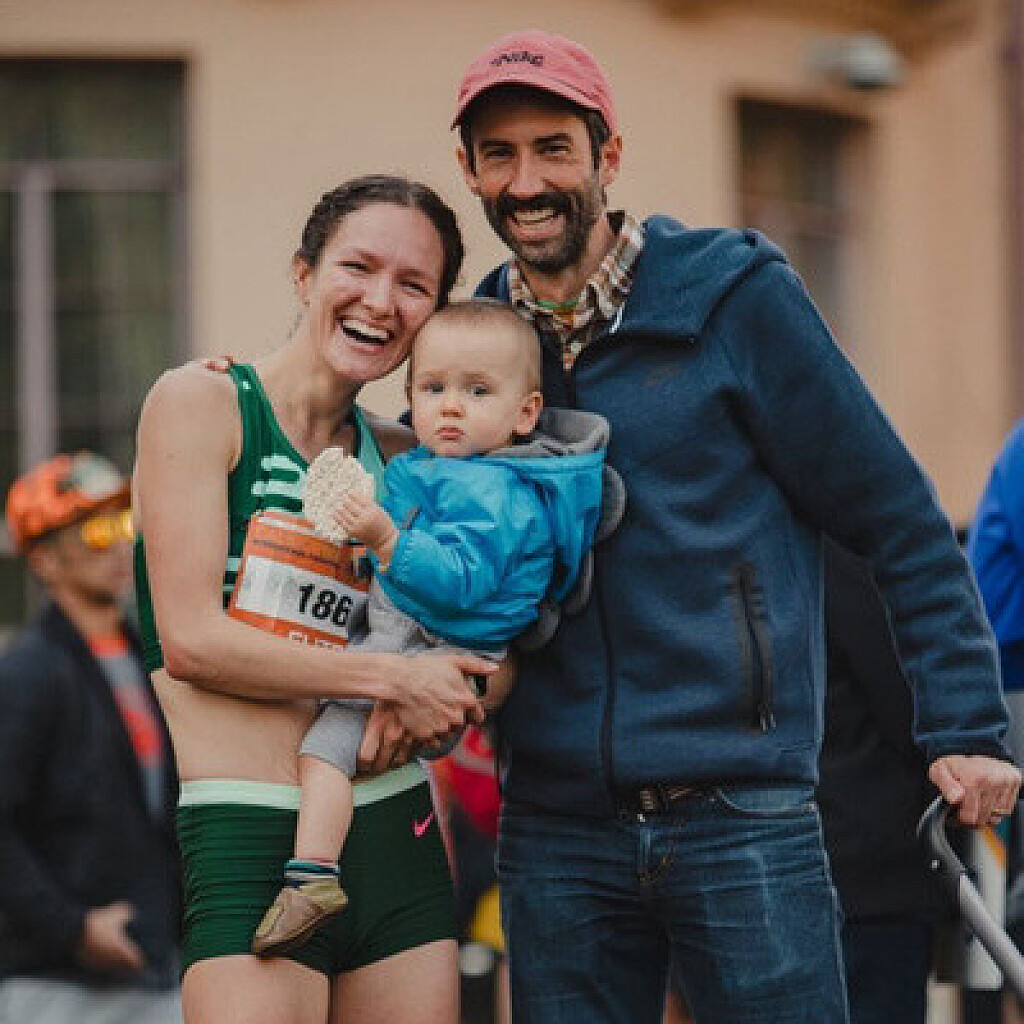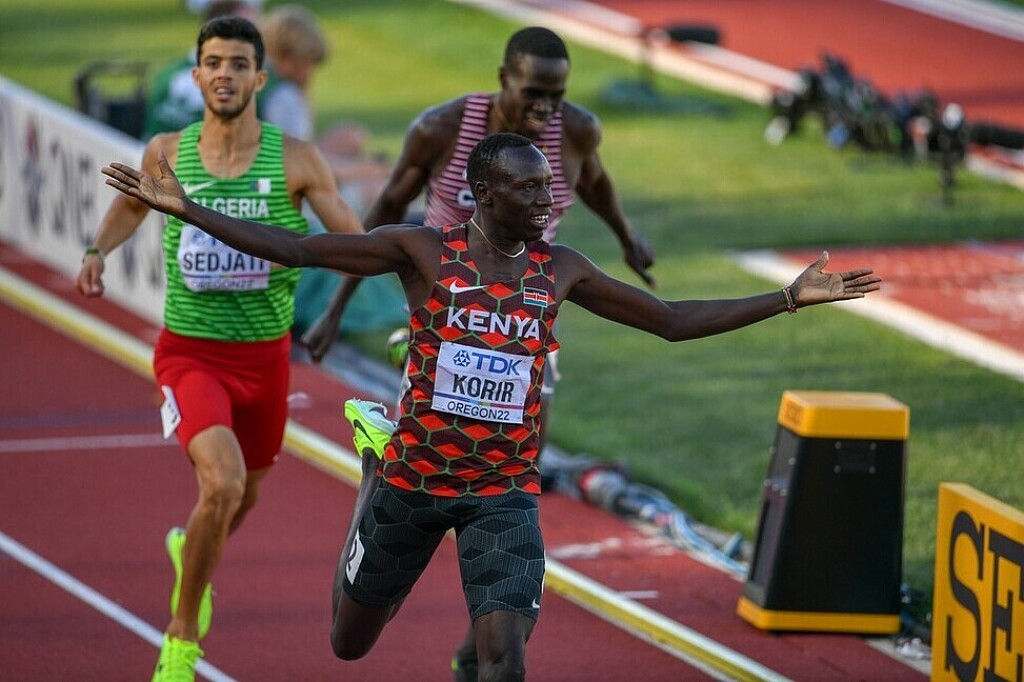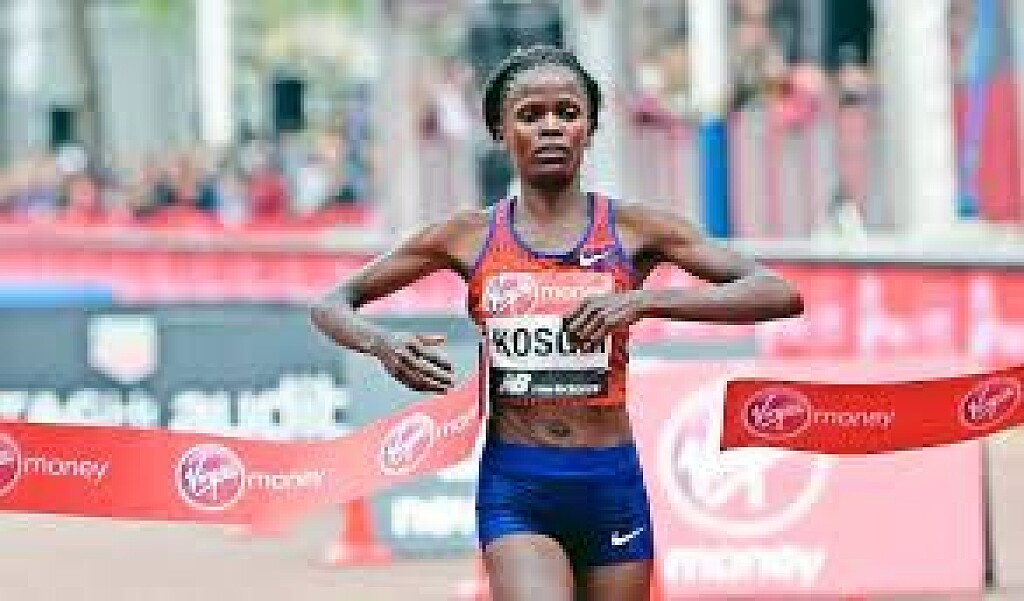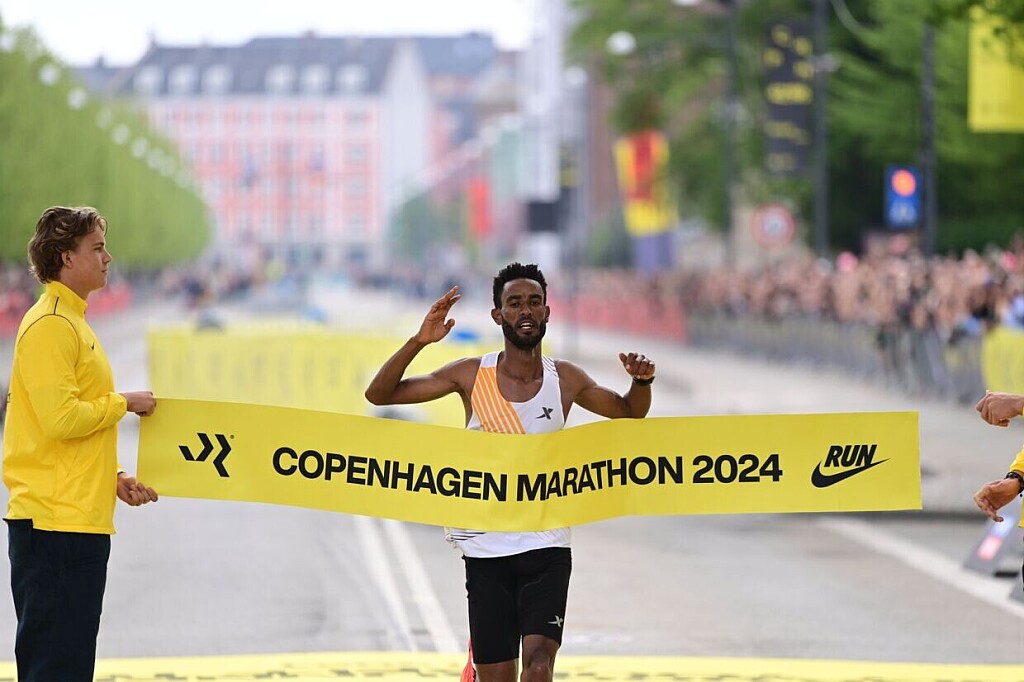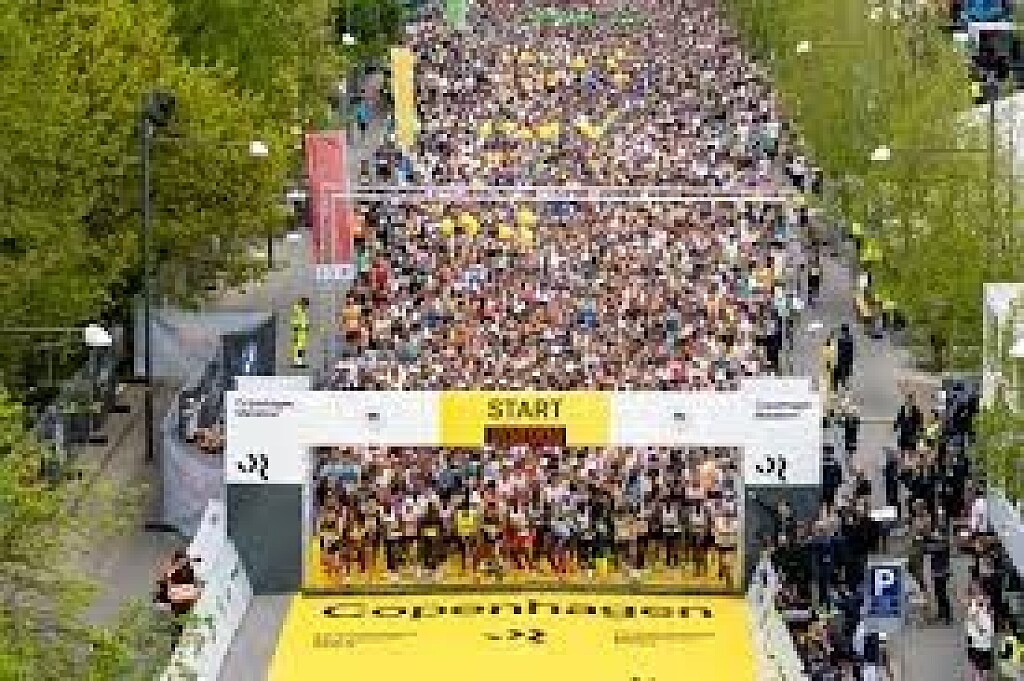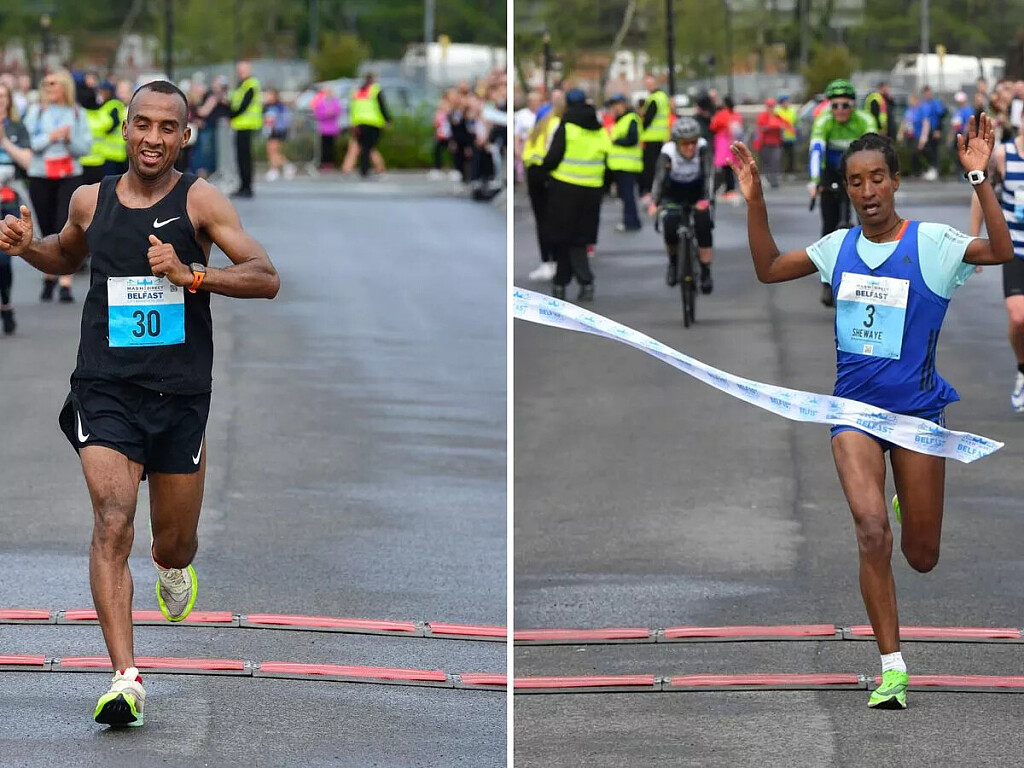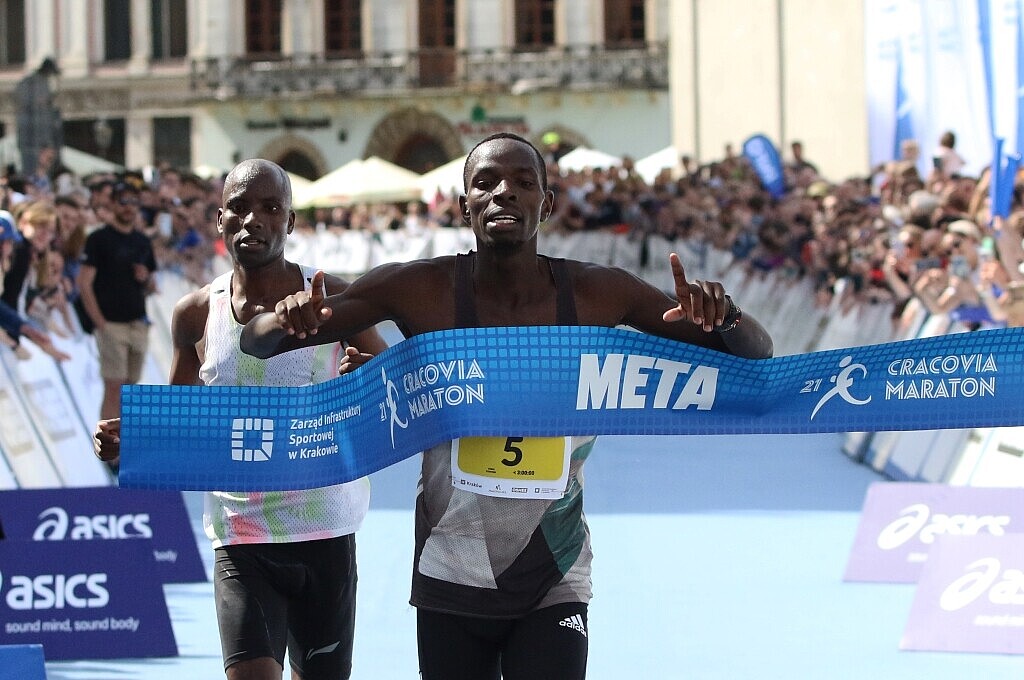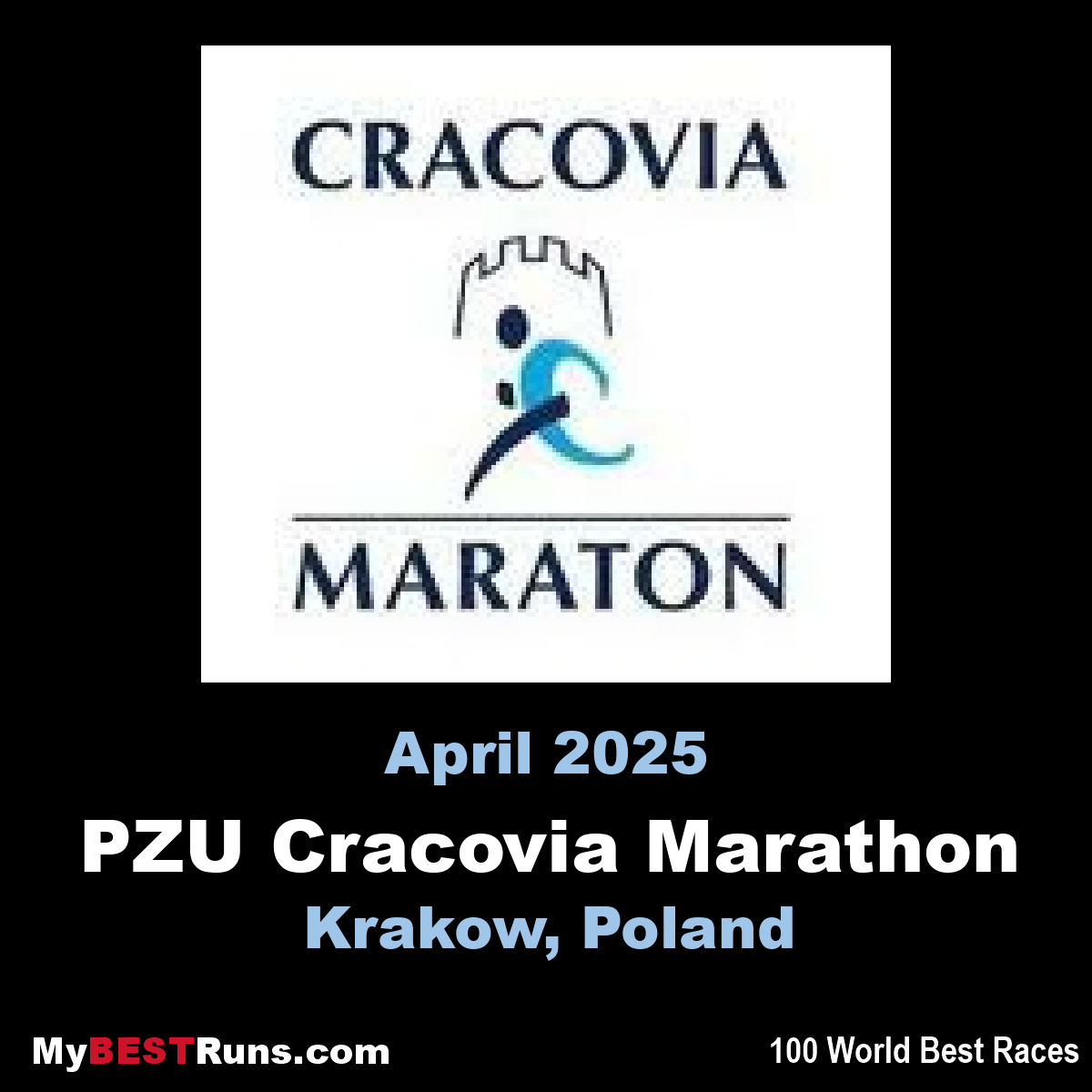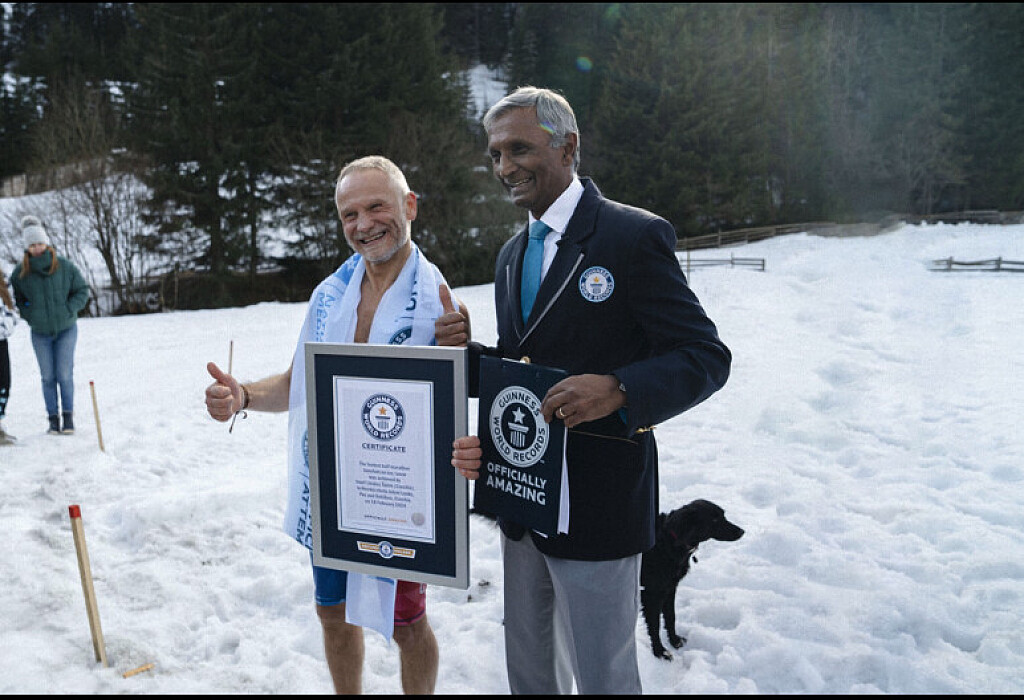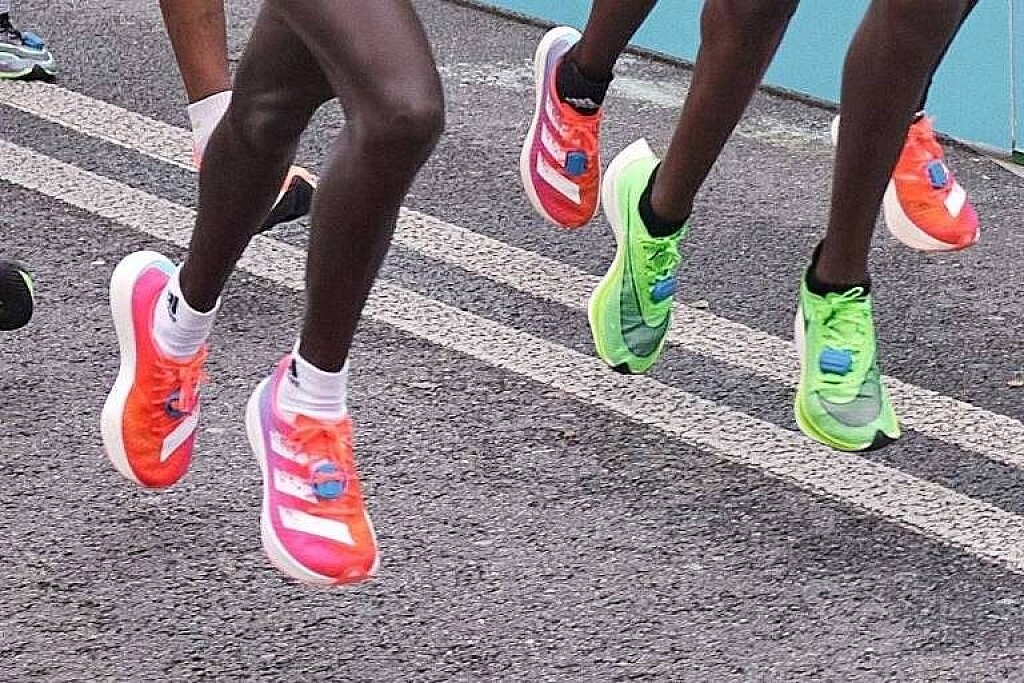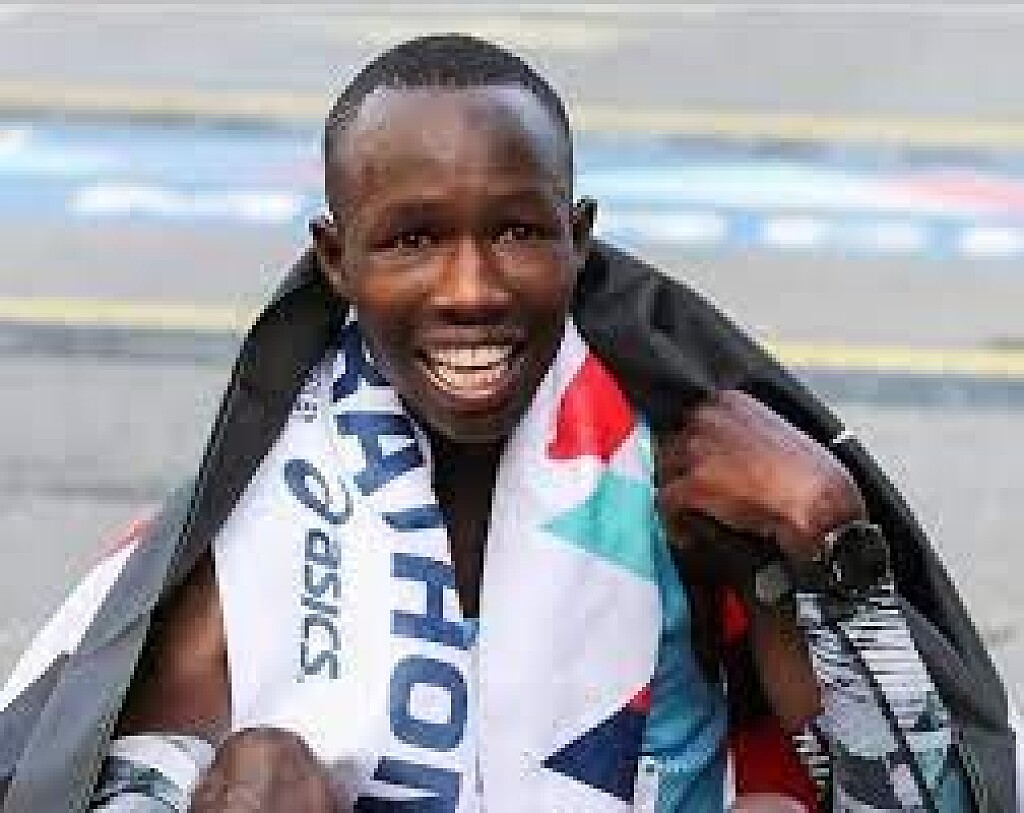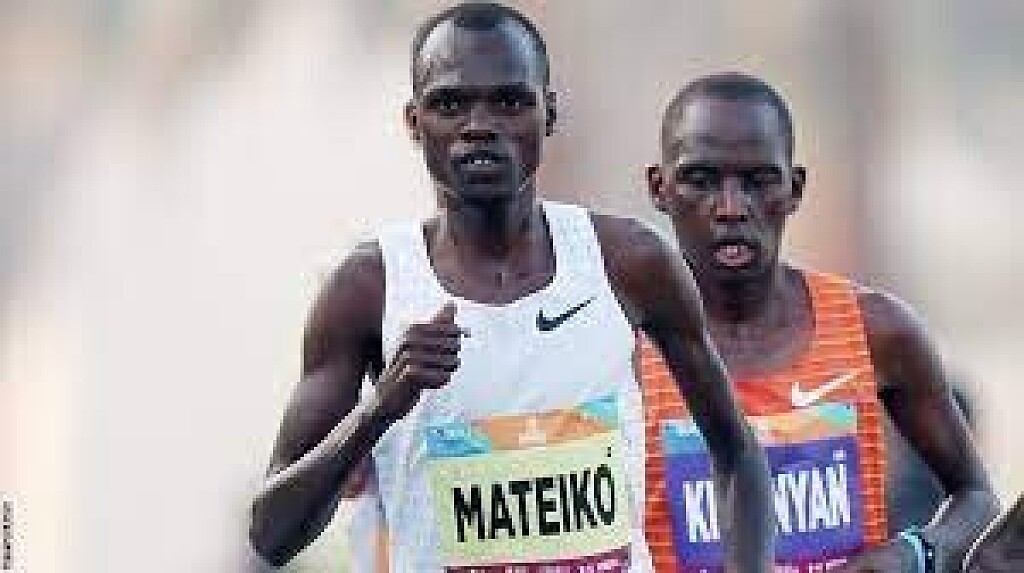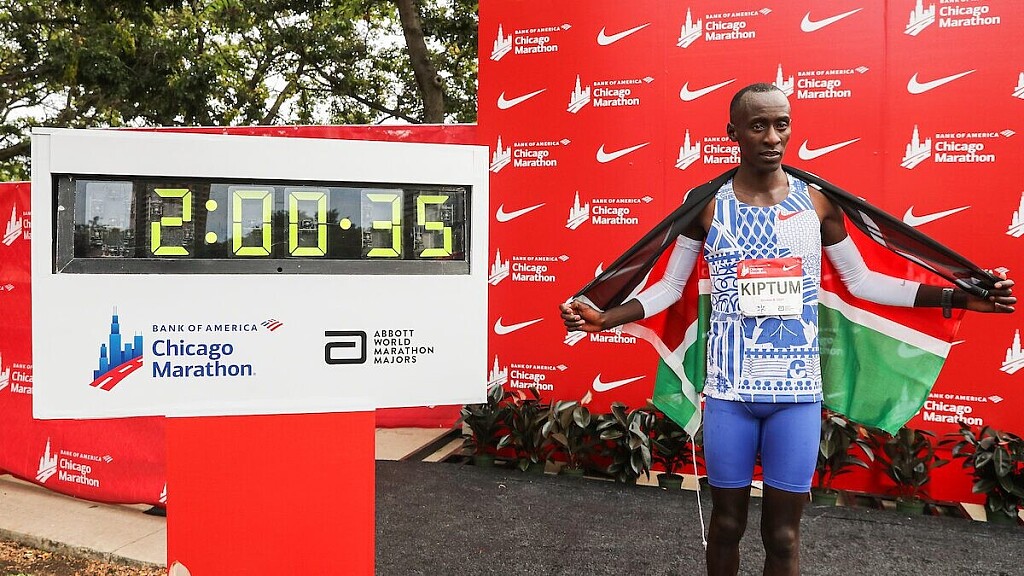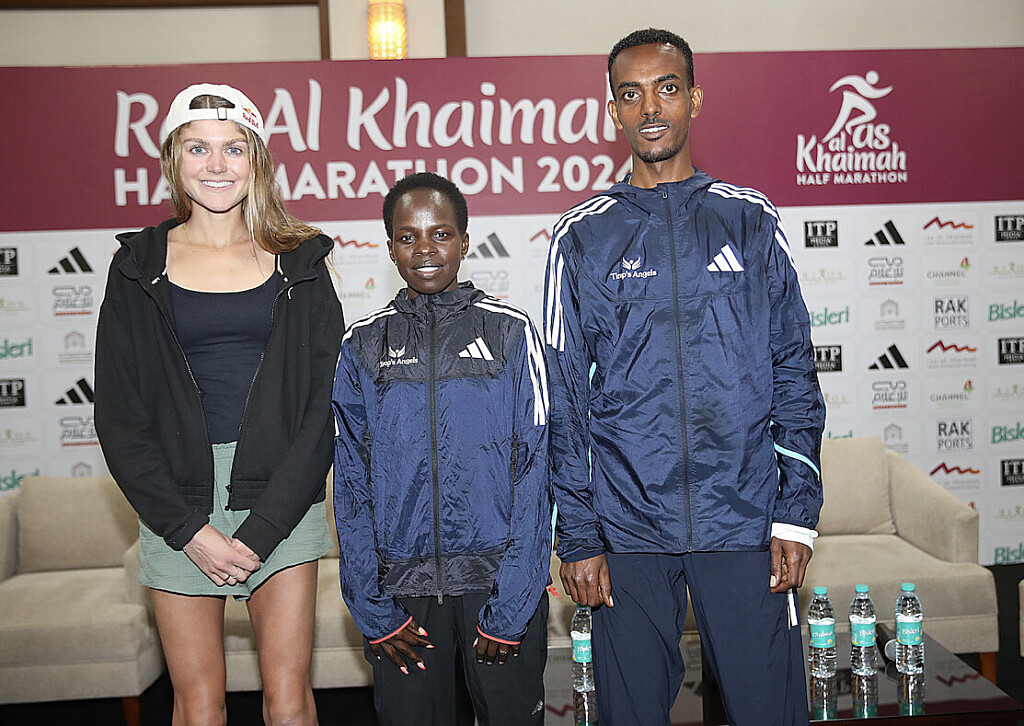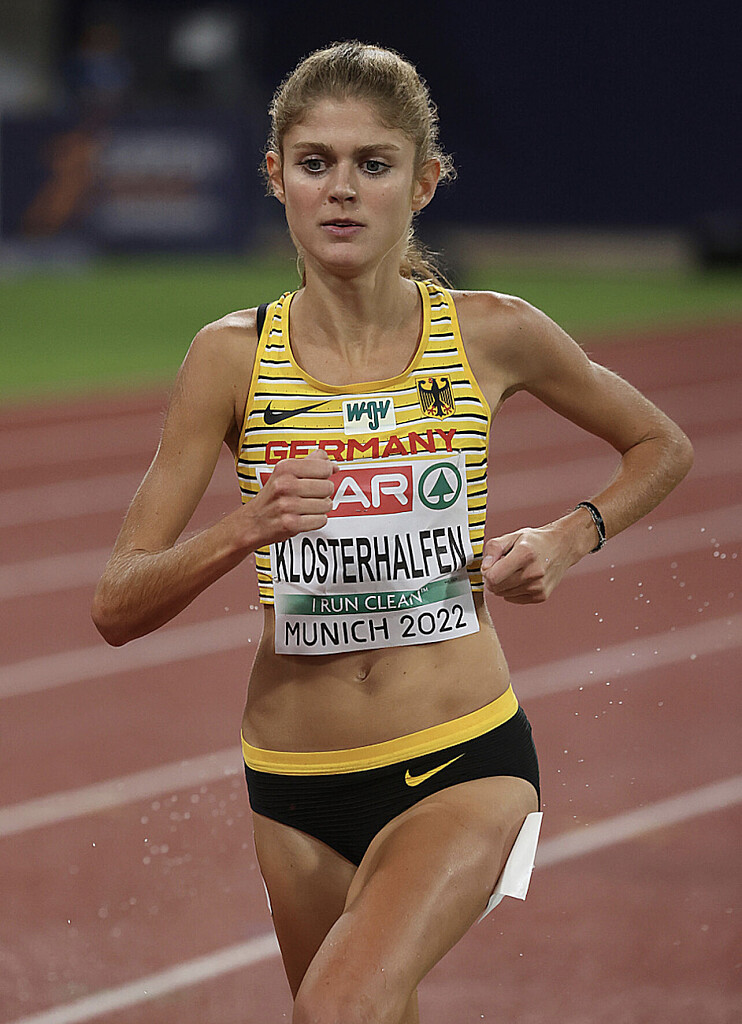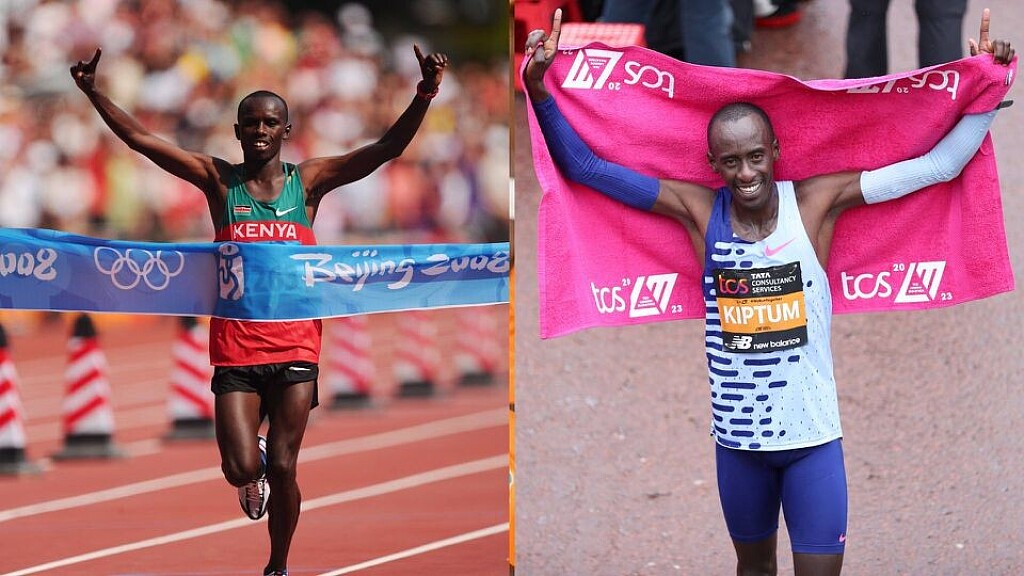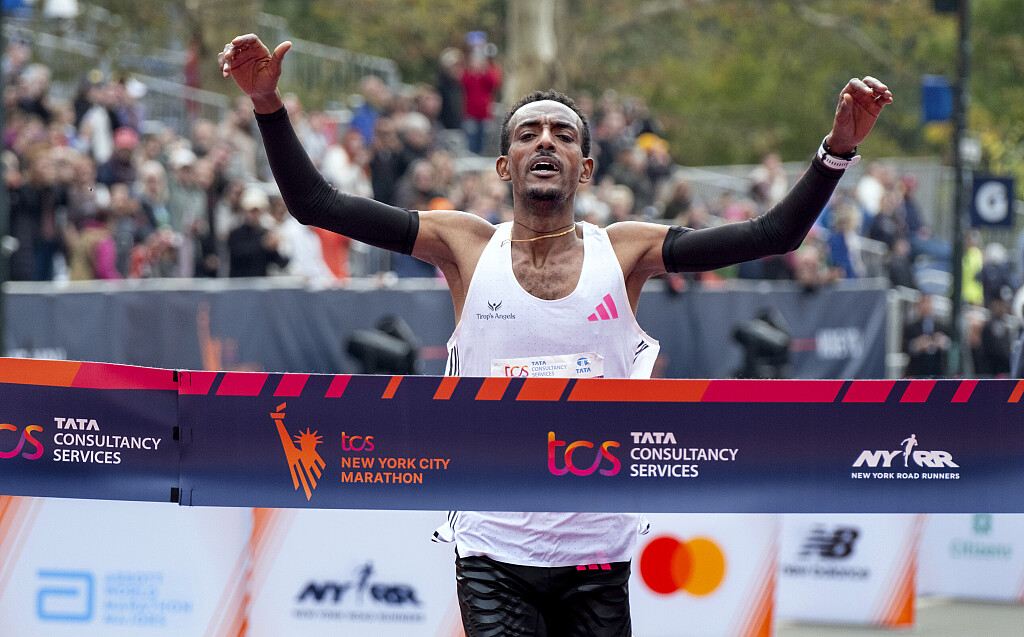Running News Daily
Running News Daily is edited by Bob Anderson. Send your news items to bob@mybestruns.com Advertising opportunities available. Train the Kenyan Way at KATA Kenya and Portugal owned and operated by Bob Anderson. Be sure to catch our movie A Long Run the movie KATA Running Camps and KATA Potato Farms - 31 now open in Kenya! https://kata.ke/
Index to Daily Posts · Sign Up For Updates · Run The World Feed
Articles tagged #RAK
Today's Running News
From Charcoal Seller to Champion Coach: The Remarkable Journey of Philemon Kiptoo in Kapcherop
In the cool highlands of Kapcherop, where morning mist drapes over rolling potato farms and runners trace winding red-dirt trails, coach Philemon Kiptoo is living out a dream that once seemed far beyond his reach.
The son of a humble family of nine, Philemon’s rise from selling charcoal barefoot to mentoring Kenya’s next generation of marathon stars is a story of resilience, faith, and the transformative power of community.
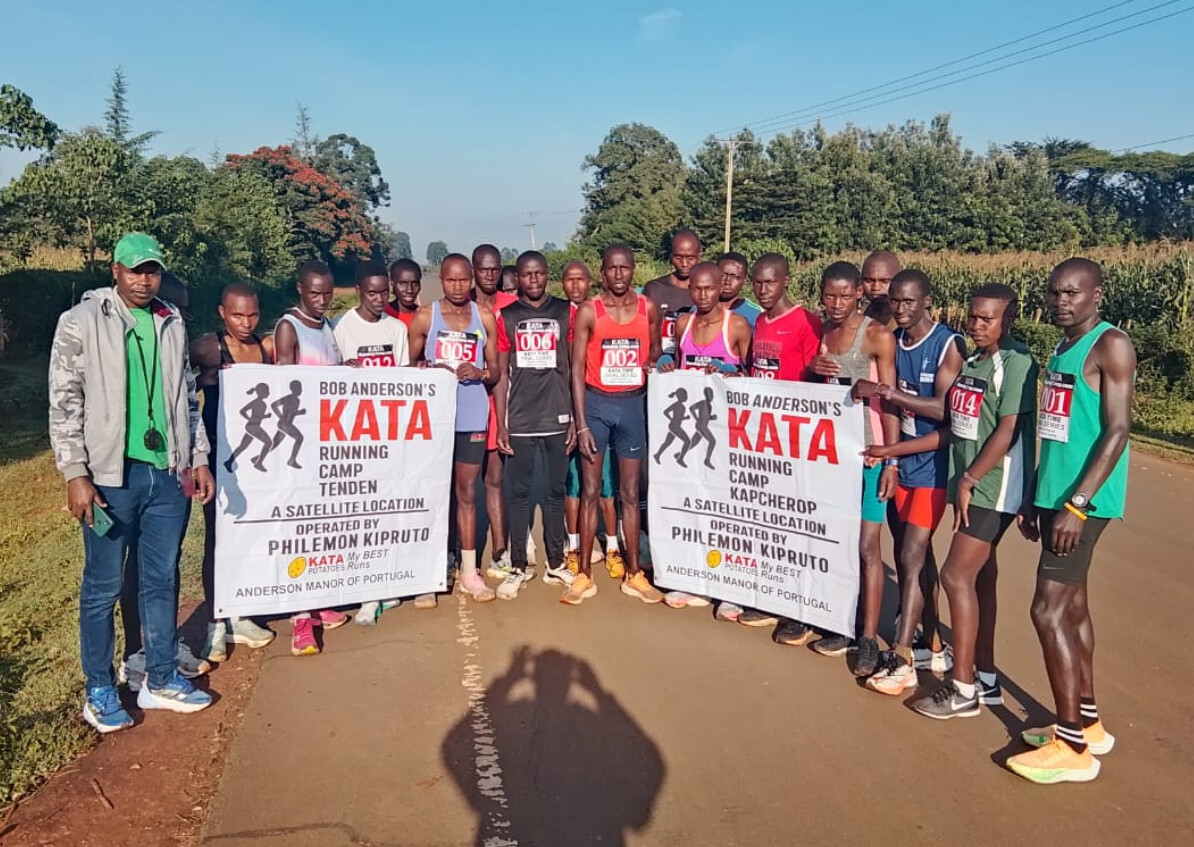
A New Chapter with KATA
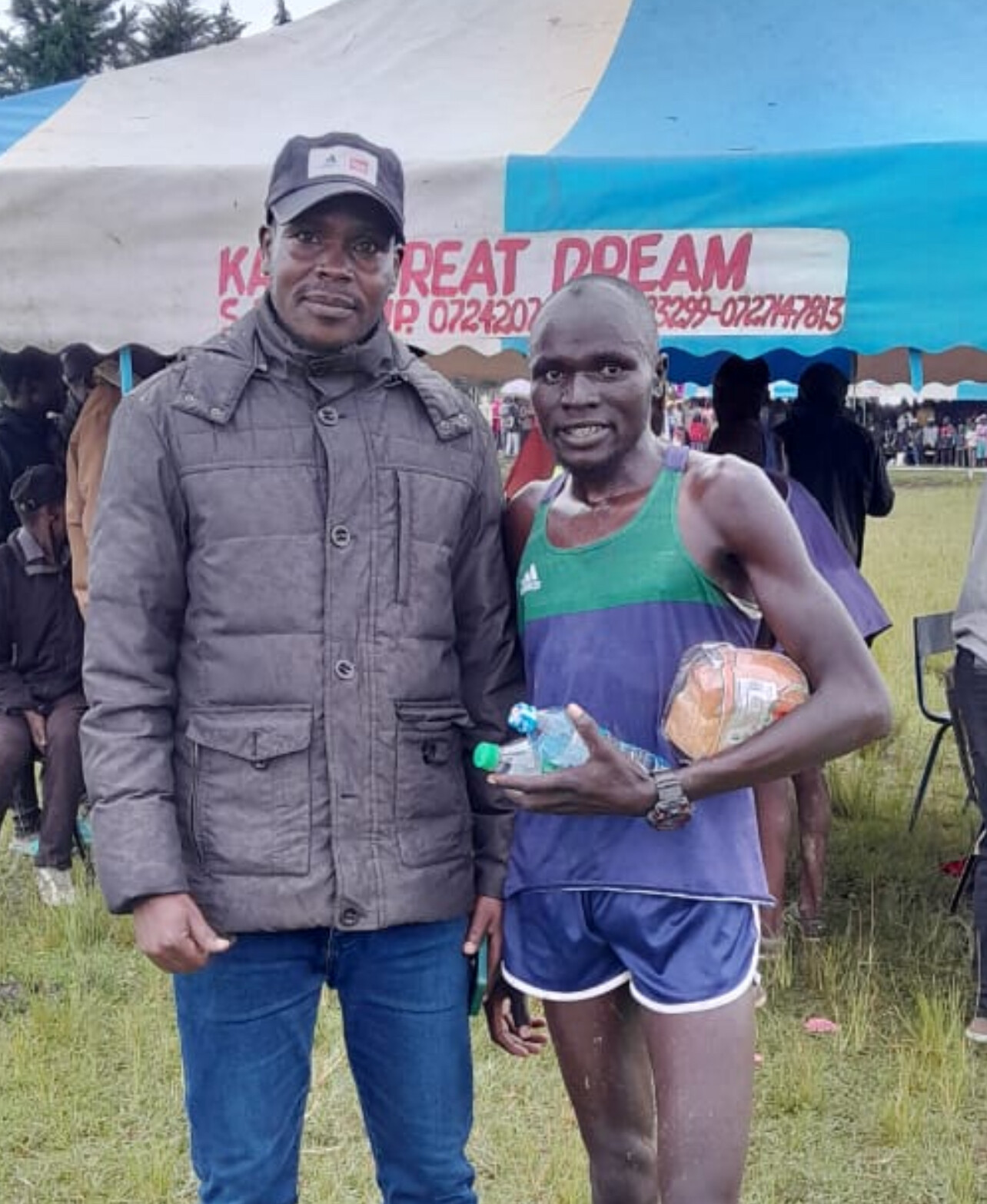
Philemon’s turning point came when he joined the KATA network — an initiative founded by U.S.-based running pioneer Bob Anderson to empower grassroots runners and coaches through mentorship, clean sport advocacy, and sustainable income projects.
At his Kapcherop Training Camp, KATA’s support extends beyond athletics. Through the organization’s integrated potato farming program, athletes earn a steady income that helps cover food, accommodation, and basic gear.

“The support from KATA has made a big difference,” Philemon says with quiet pride. “Most of my athletes come from humble backgrounds like mine. With potato farming and basic support, we can now train without worrying about what to eat or where to stay.”
That stability has begun to pay off. At the Standard Chartered Nairobi Marathon on October 26, his athletes delivered impressive performances: Donald Kimaru finished 4th in the men’s marathon; Dancan Kemei and Dennis Kosgei placed 18th and 21st in the men’s half marathon; Beatrice Rutto finished 11th in the women’s marathon; and in the men’s 10K, Leonard Pkorir and Enoch Tanui placed 3rd and 5th respectively, with Evans Kemboi 16th. Donald also on September 20th placed second at the Double Road Race 15k just 17 seconds behind the winner Edwin Soi in the two leg race. The sixth best time ever.
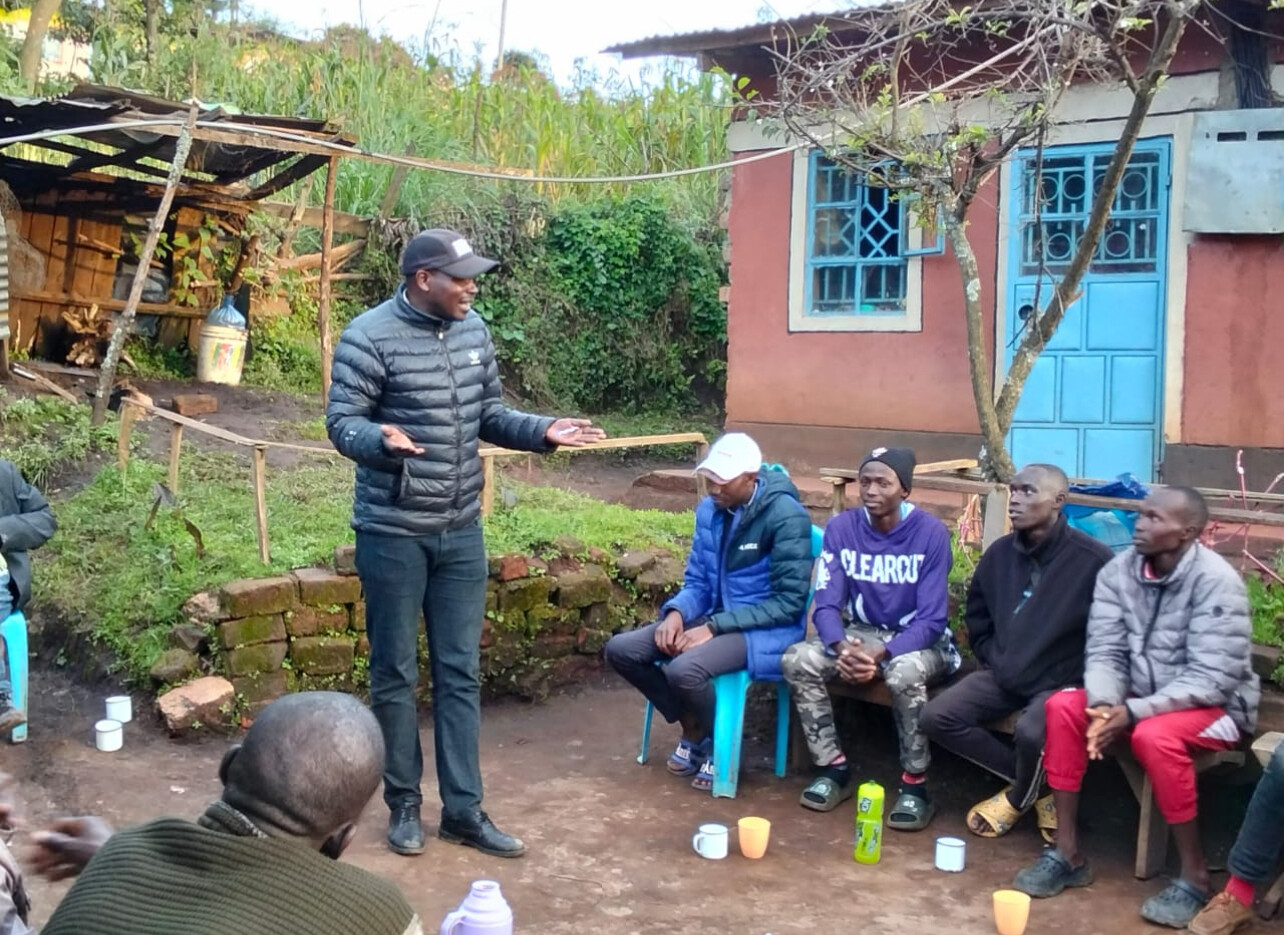
“Each of these athletes represents hope,” Philemon reflects. “With clean training and support, young people from small villages can stand tall on the national stage.”
Humble Beginnings
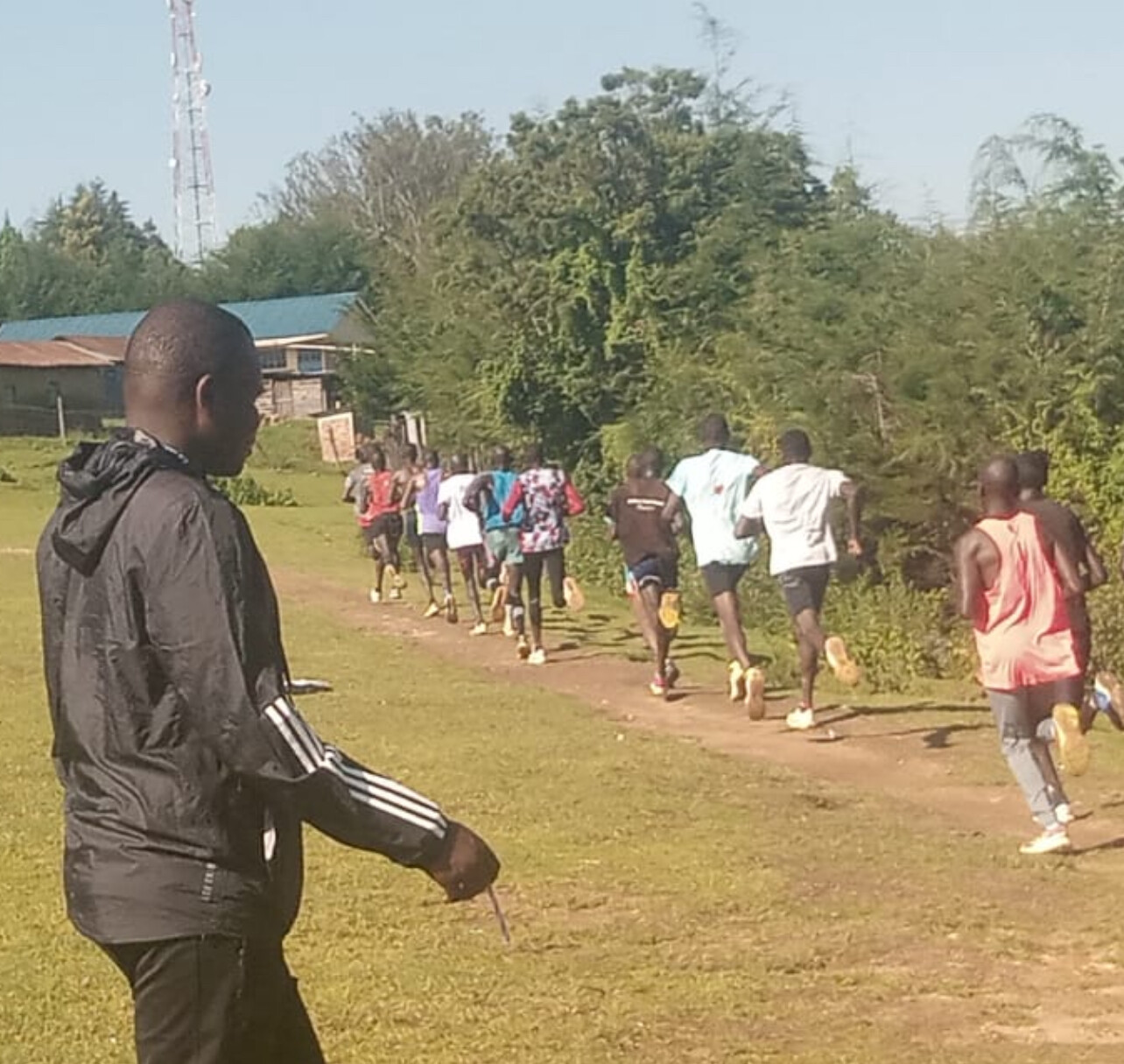
Born in Sing’ore, near the slopes of Elgeyo Marakwet, Philemon’s path to athletics was shaped by hardship.
“I was the last born in a family of nine — three brothers and sisters,” he recalls. “I attended Kobil Primary near Sing’ore Girls and later Kimuron Secondary, but I couldn’t finish because of school fees.”

Returning home to Kapkanyar, he refused to give up.
“In 2007, I started training with no shoes,” he says. “I sold charcoal to buy my first pair of Asics for 700 shillings (about $6).”
Years of persistence paid off when he began racing in 2012, earning his first major result with a runner-up finish at the Kakamega Forest Half Marathon. That breakthrough fueled his dream — not just to compete, but to guide others.
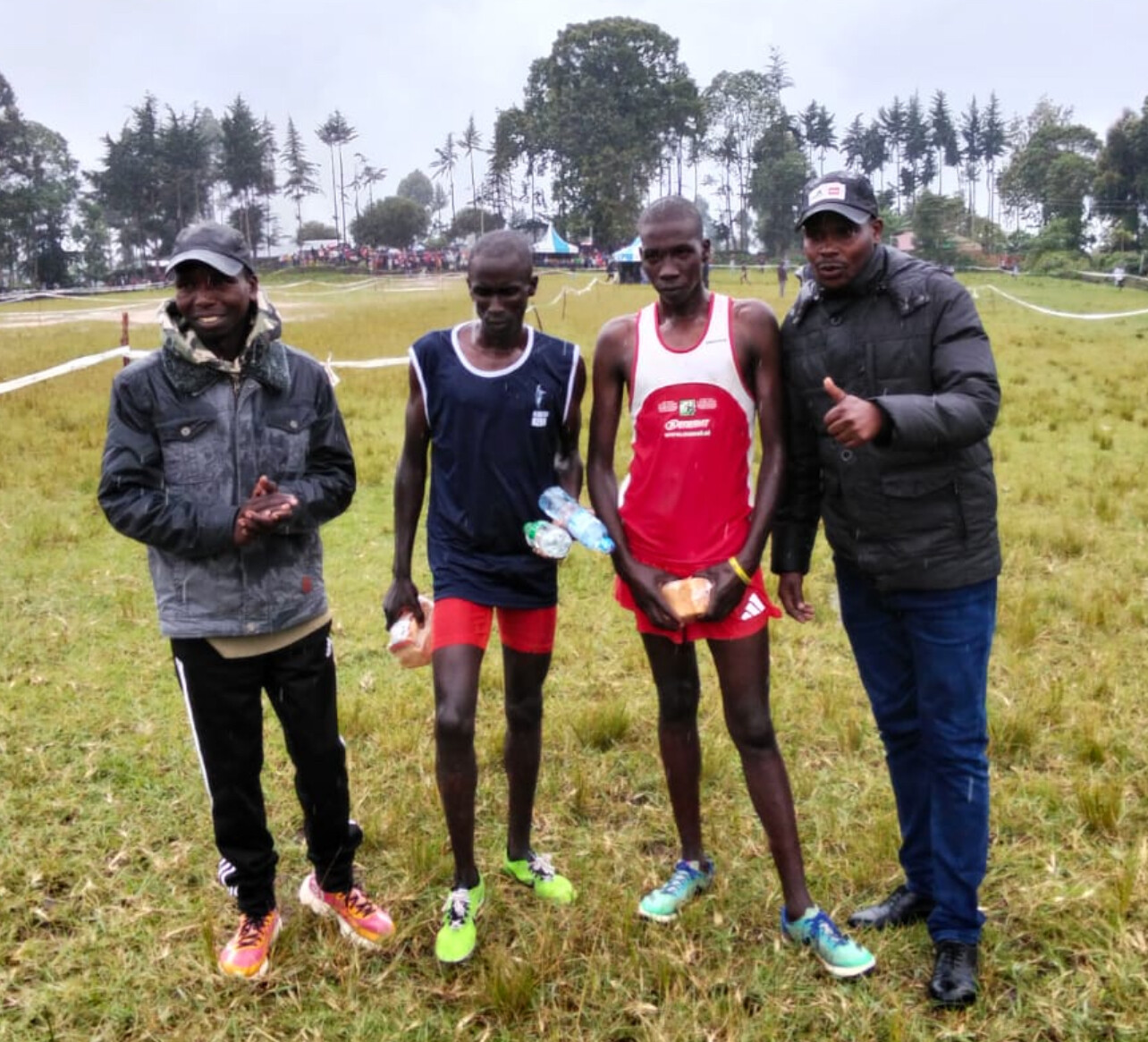
Building Champions
“I started with a few athletes,” Philemon says. “I rented them a small house and bought food — not because I had much, but because I knew what it felt like to need a chance.”
Today, he stands alongside a remarkable family of mentors: four brothers, all coaches.
• Eric Kimaiyo leads the Kapsait Training Camp.
• Andurson Chirchir coaches in Kaptagat.
• Kimutai runs training at Srowback.
• And Philemon oversees the Kapcherop Camp — a thriving hub for emerging distance runners.
Integrity and Clean Sport
What makes Philemon’s story powerful isn’t only perseverance — it’s integrity. A vocal advocate of clean sport, he embodies KATA’s core philosophy.
“We must speak the truth and say no to doping,” he insists. “If you train clean and stay patient, you’ll win with pride. There are no shortcuts to greatness.”
KATA’s influence has reinforced those values, fostering a culture of honesty and teamwork across its growing network.
“Bob Anderson’s support hasn’t just sustained our camp,” Philemon adds. “It has helped shape a generation built on discipline and hard work. We are building athletes who can inspire others.”
A Legacy of Hope
To his athletes, Philemon is more than a coach — he’s a father figure.
“He treats us like family,” says Leonard Pkorir, who won bronze in the Nairobi 10K. “He believes in our dreams even when we doubt ourselves.”
Looking ahead, Philemon’s goal remains simple yet profound: to use running as a bridge to a better life.
“My happiness will be to see my athletes doing great things, helping others, and carrying forward the spirit of running clean,” he says. “That will be my legacy.”
As evening fog rolls across the Kapcherop hills and the rhythmic thud of training shoes fades into the distance, Philemon Kiptoo’s story stands as a reminder that greatness can indeed grow from the humblest soil — when it is nurtured with purpose, honesty, and heart.
by Robert Kibet
Login to leave a comment
Champions in the Making: KATA Iten Camp Time Trial Highlights
The KATA Iten Camp held its latest time trial under ideal running conditions, with both the 10K and 5K distances producing impressive performances and multiple personal bests. Coach David Kellum’s athletes demonstrated exceptional progress and consistency, reflecting the strong training foundation established at Camp #8.
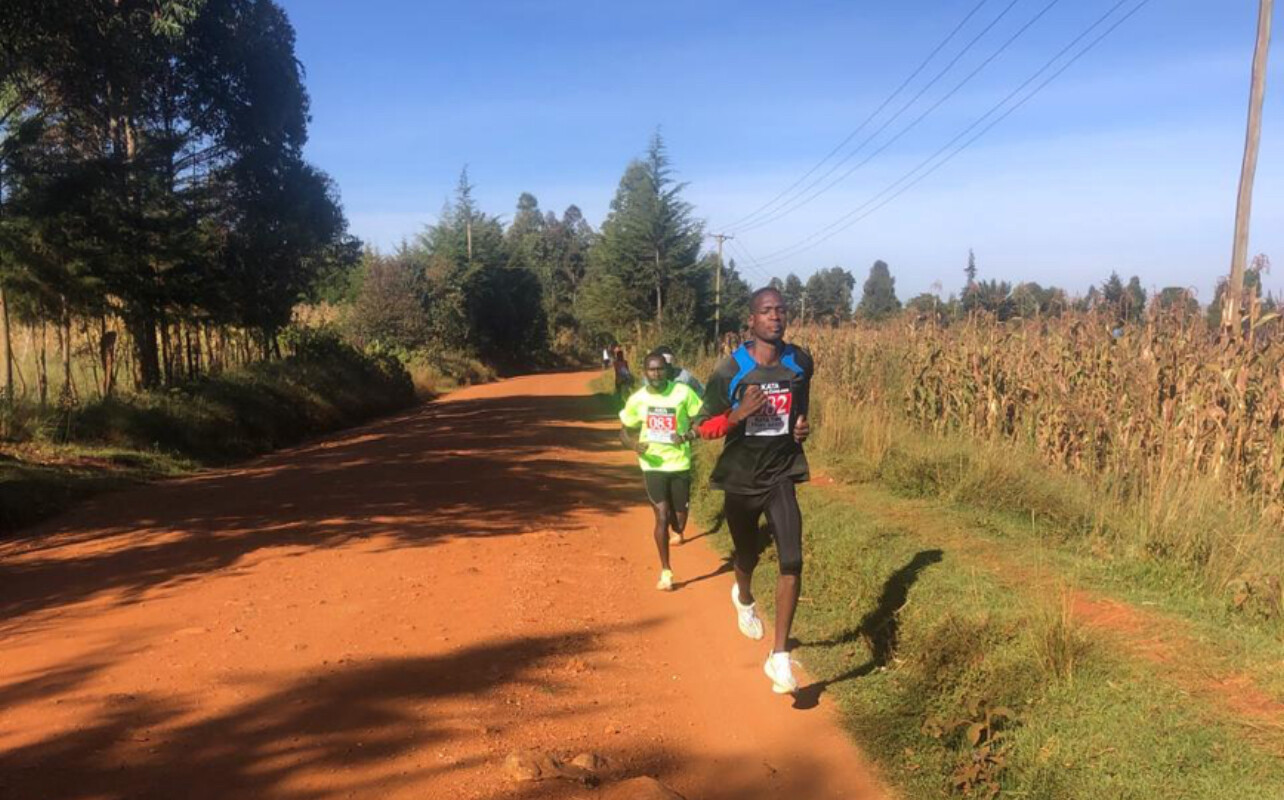
Men’s 10KM Results
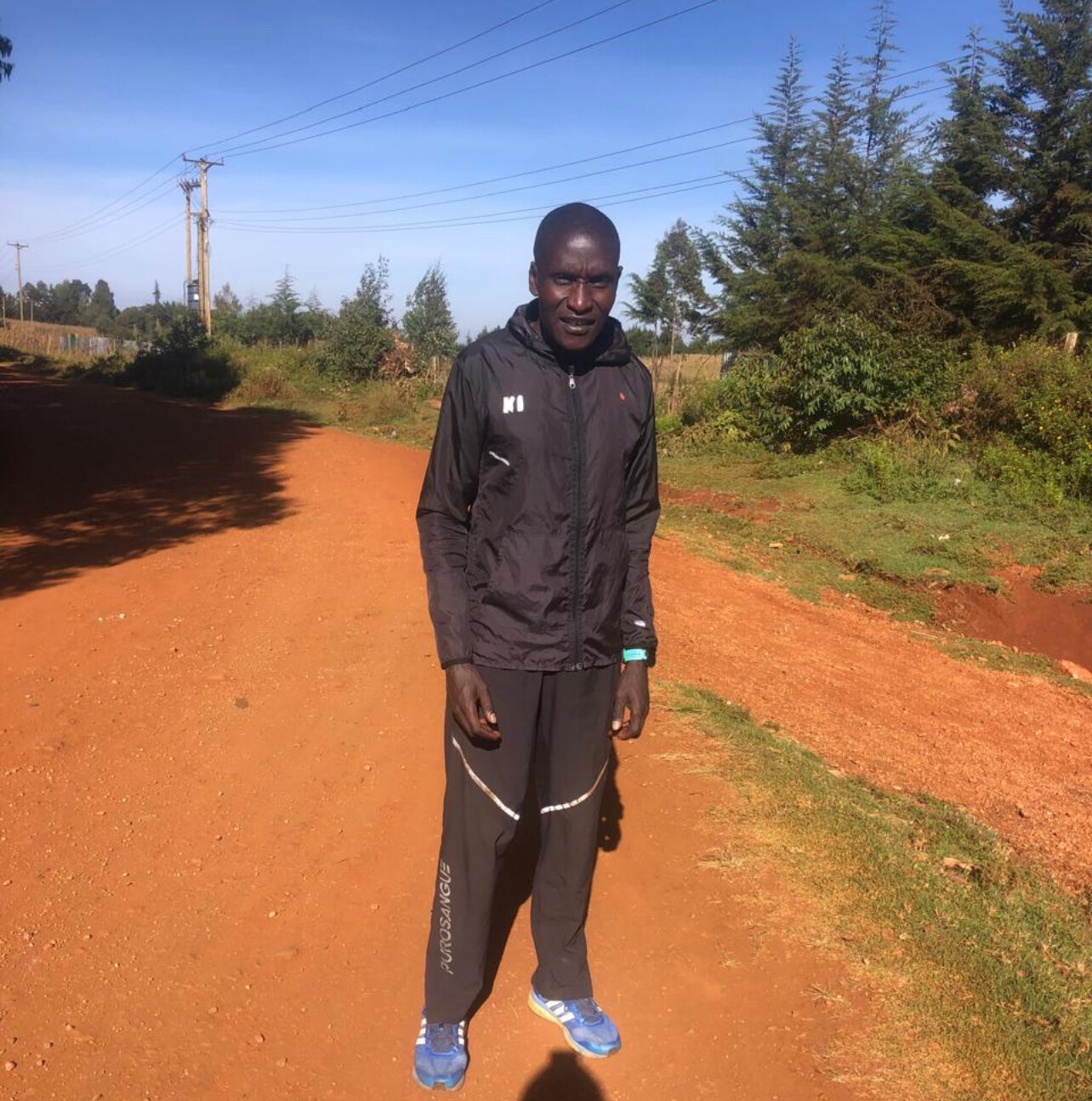
1. Amon Kipchirchir – 29:30.59
2. Linus Kangogo – 29:35.20
3. Elkana Barningo – 29:55.05
4. Moses Leparakwo – 30:20.08
Women’s 10KM Results
1. Betty Chesang – 35:45.01
2. Sharon Chesir – 35:58.32
3. Teresia Lenges – 36:06.33
4. Vivian Ololpapit – 36:40.47
Men’s 5KM Results
1. Amon Kipchirchir – 15:30.11
2. Isack Kipchirchir – 15:24.55
3. Cornelius Oloisa – 15:30.56
4. Linus Kangogo – 15:58.30
Women’s 5KM Results
1. Betty Chesang – 16:55.30
2. Cynthia Rono – 16:57.21
3. Vivian Nengai – 17:45.31
4. Sharon Chesir – 17:46.55
Date: October 16, 2025
Coach and Operator: David Kellum
Location: Iten, Kenya
Summary:
The Iten-based KATA athletes delivered an outstanding showing, highlighted by strong double performances from Amon Kipchirchir and Betty Chesang, who both dominated their respective 10K and 5K events. Coach David Kellum continues to build one of the most promising training groups in the KATA network, with athletes steadily improving through disciplined training and consistent time trial participation.
by Boris Baron
Login to leave a comment
Kenyans Matata and Rengeruk Capture Titles at Vedanta Delhi Half Marathon
Abhishek Pal and Seema Yadav lead Indian runners
New Delhi, October 12, 2025 — Kenya’s Alex Nzioka Matata and Lilian Kasait Rengeruk delivered commanding performances to sweep the men’s and women’s crowns at the 20th Vedanta Delhi Half Marathon, a World Athletics Gold Label event. It marked only the second Kenyan double in race history, the first coming in 2006.
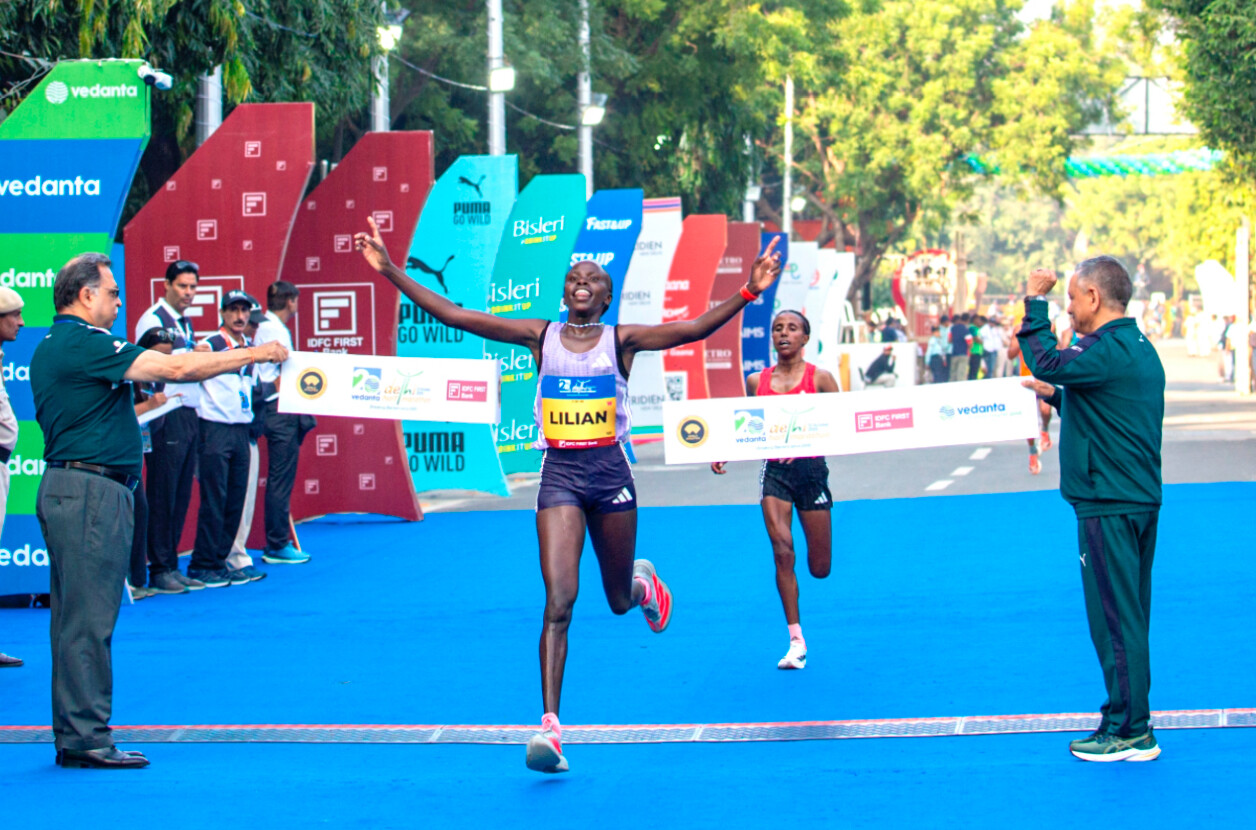
Matata, runner-up in 2024, dominated from midway, running solo to victory in 59:50, his fifth half-marathon win of the year. The RAK Half Marathon champion, who boasts a 59:20 personal best, led through 10K in 28:43 alongside compatriot Reuben Rono before breaking clear. Ethiopia’s Bayelign Teshager (1:00:22) and Kenyan James Kipkogei (1:00:25) completed the podium.
“Last year I was number two, so my goal was to do better,” Matata said. “The weather was good, I knew the course, and I ran without pressure—just to win.”
In the women’s race, Rengeruk used her experience to outkick Ethiopia’s 19-year-old Melal Biratu in a thrilling sprint, clocking 1:07:20 to win by one second. Fellow Ethiopian Mulat Tekle took third in 1:07:28. The 2023 champion Alemaddis Eyayu finished seventh (1:10:51).
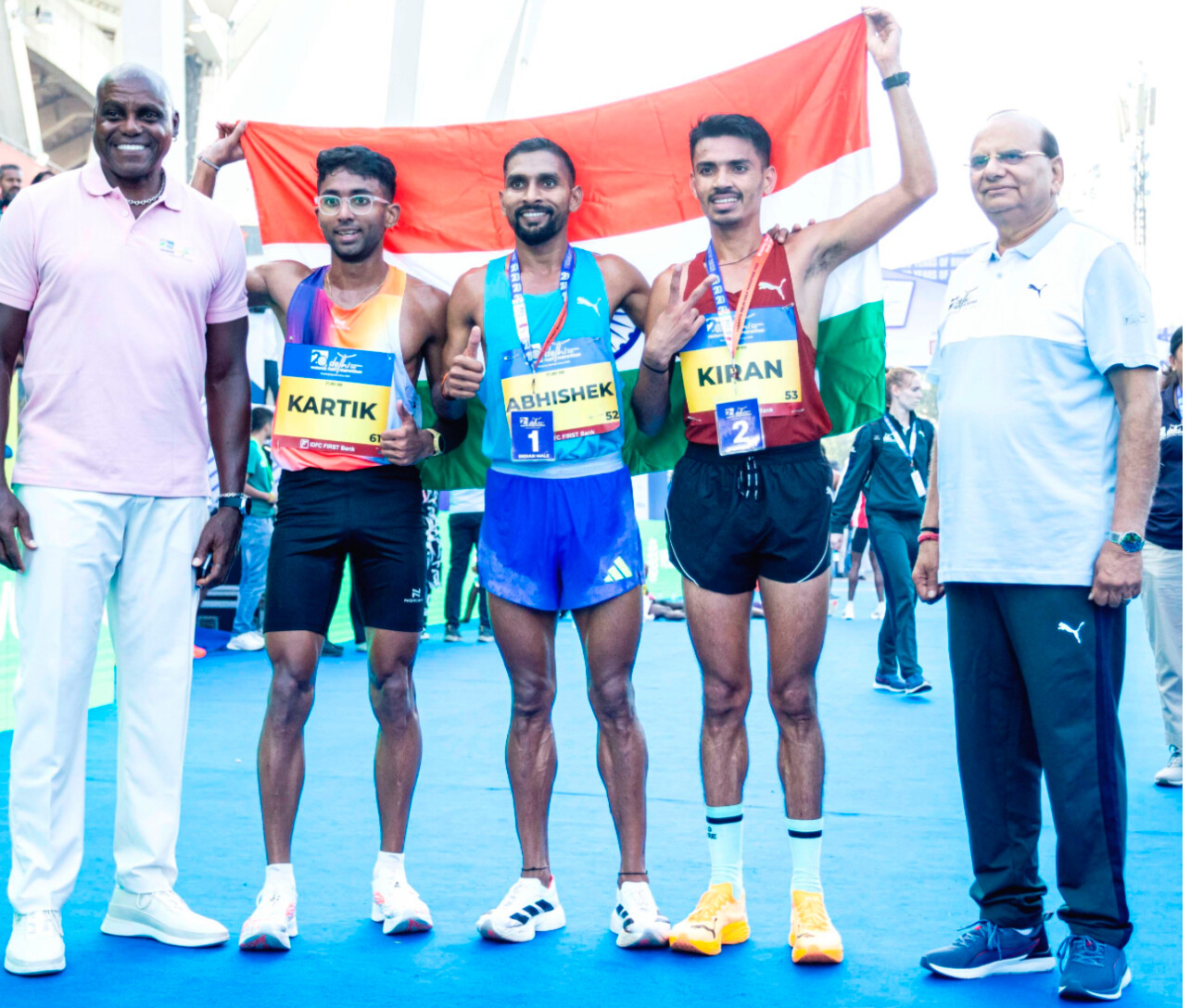
“It was tough, but I felt strong and told myself to stay patient and fight to the finish,” said Rengeruk, who recently returned from injury.
Biratu, pleased with her debut effort, added: “The humidity was higher than expected, but I’m happy with my personal best.”
Both winners earned US$27,000 from a total prize purse of US$260,000.
Login to leave a comment
Vedanta Delhi Half Marathon
The Airtel Delhi Half Marathon is a haven for runners, creating an experience, that our citizens had never envisaged. The streets of Delhi converted to a world-class running track. Clean, sanitized road for 21.09 kms, exhaustive medical support system on the route, timing chip for runners, qualified personnel to ensure smooth conduct of the event across departments. The race...
more...KATA Time Trials Expand Nationwide as 30 Running Camps Prepare for October 15 Event
For years, the Kenya Athletics Training Academy (KATA) in Thika has been the nerve center of monthly time trials — small but highly competitive races that have helped shape Kenya’s next generation of distance-running talent.
This October 15 marks another milestone. For the second consecutive nationwide edition, KATA’s time trials will take place not only at the Thika headquarters but also simultaneously across more than 30 KATA Running Camps throughout Kenya, featuring both 10 km and 5 km races.
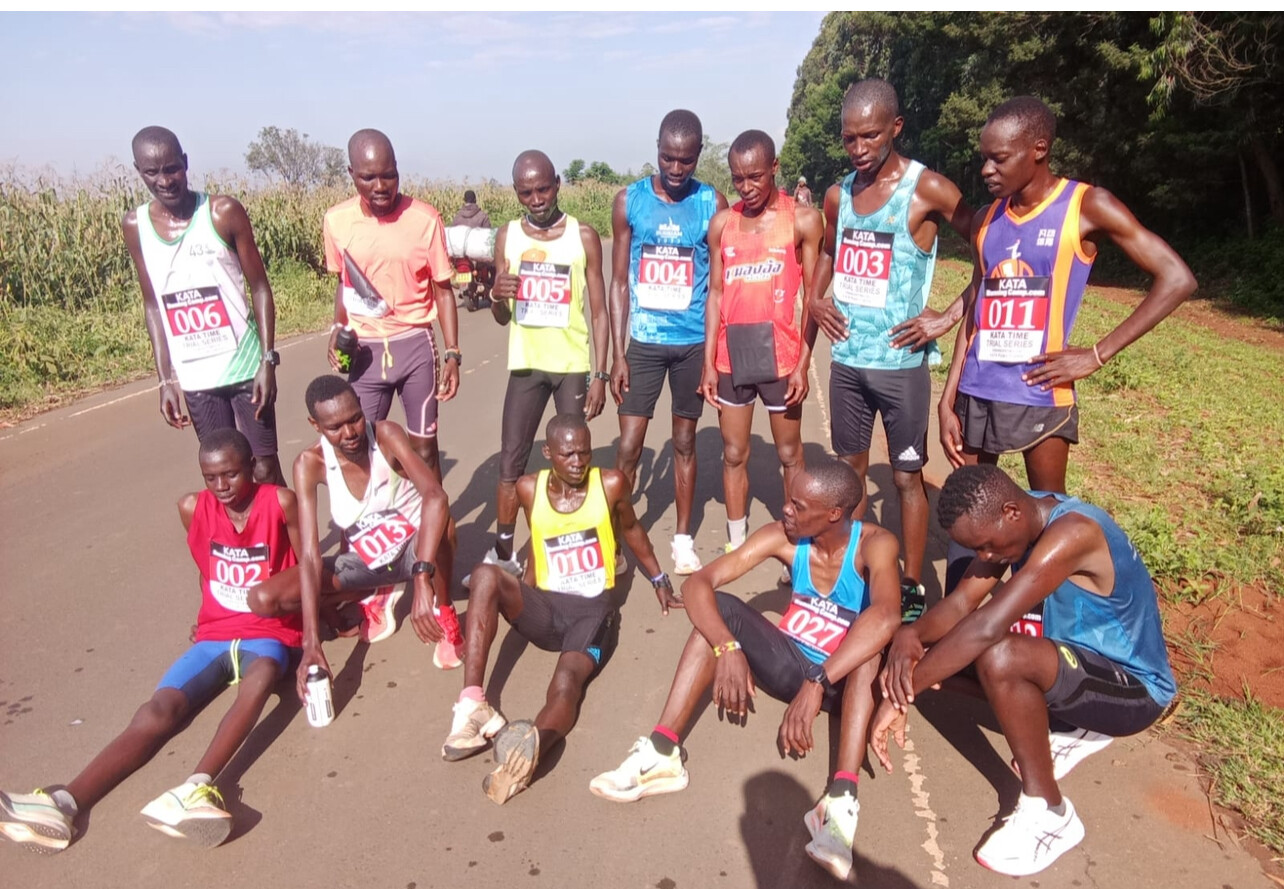
The expansion follows the success of August’s first coordinated nationwide time trial, which confirmed that KATA’s decentralized model can operate effectively across multiple regions. Each camp’s participation is not optional — under the KATA system, all official camps are required to host a time trial every other month as part of athlete development and performance monitoring.
Meanwhile, the Thika headquarters continues to set the standard. It has organized a monthly KATA Time Trial without interruption since September 2021, providing a consistent testing ground for hundreds of emerging athletes.
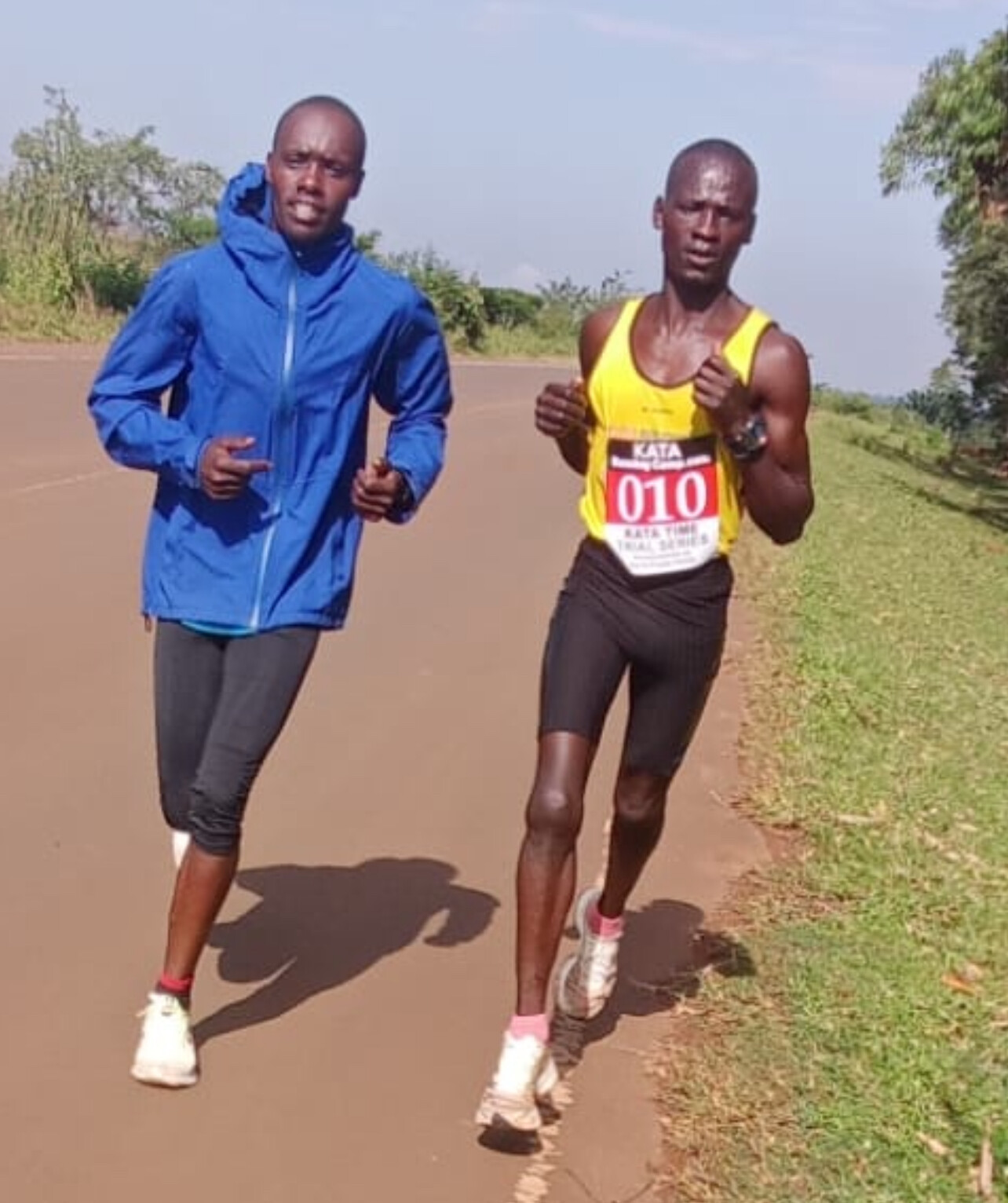
KATA founder Bob Anderson, who also created My Best Runs, said the approach is about expanding access while maintaining structure.
“The idea was to decentralize opportunity,” Anderson explained. “We want every promising runner, whether training in Thika or a rural camp, to have the same chance to be timed, compared, and supported within the KATA framework.”
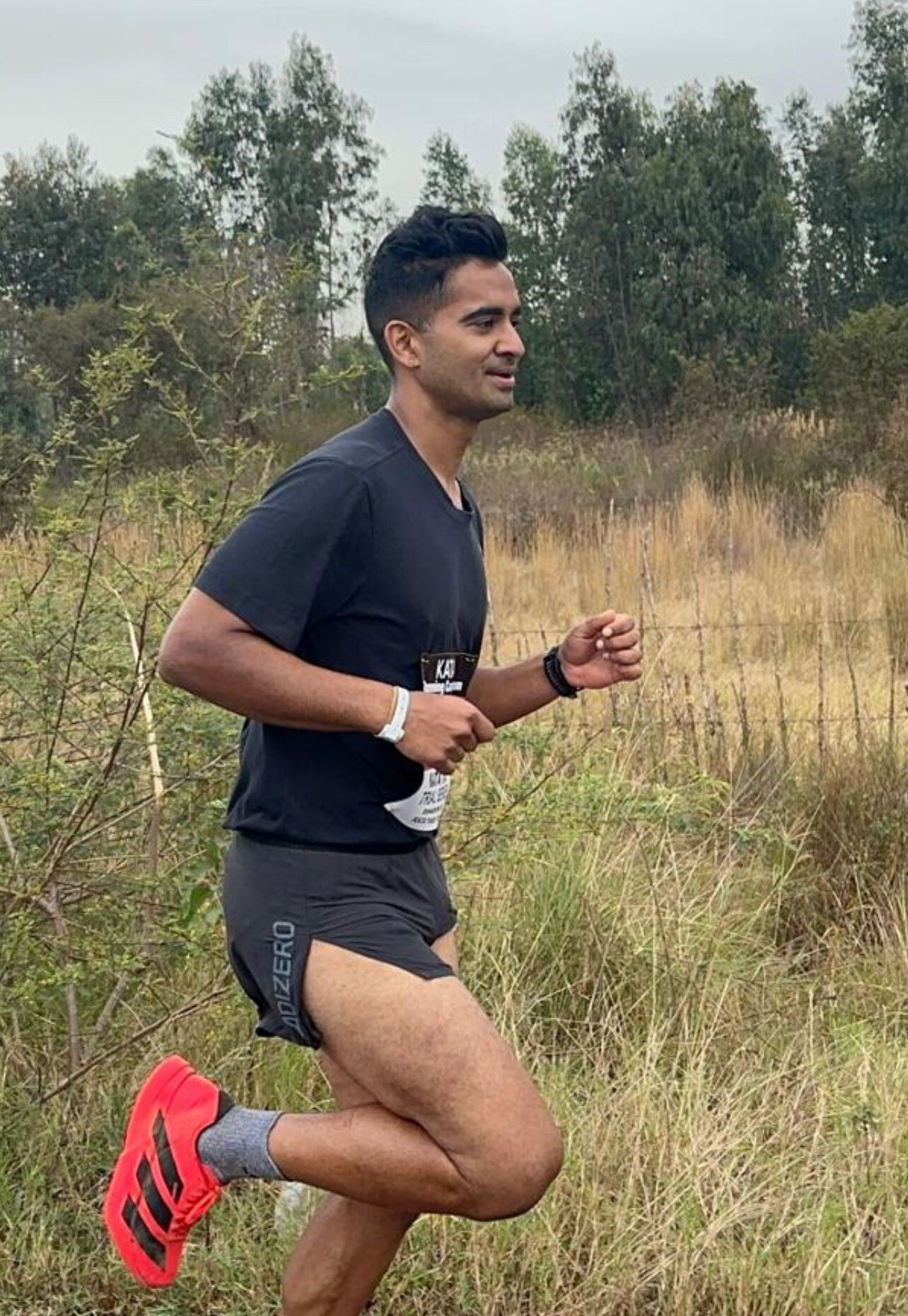
Through its network of 30+ KATA Running Camps, the academy has built a national performance pipeline. Each camp conducts its own race under strict KATA guidelines — ensuring accurate distances, verified timing, and documented results — which are then compiled centrally to produce nationwide rankings.
The program is already showing impact. The August trials unearthed new talents now being tracked for mentorship, nutrition guidance, and future competition opportunities.
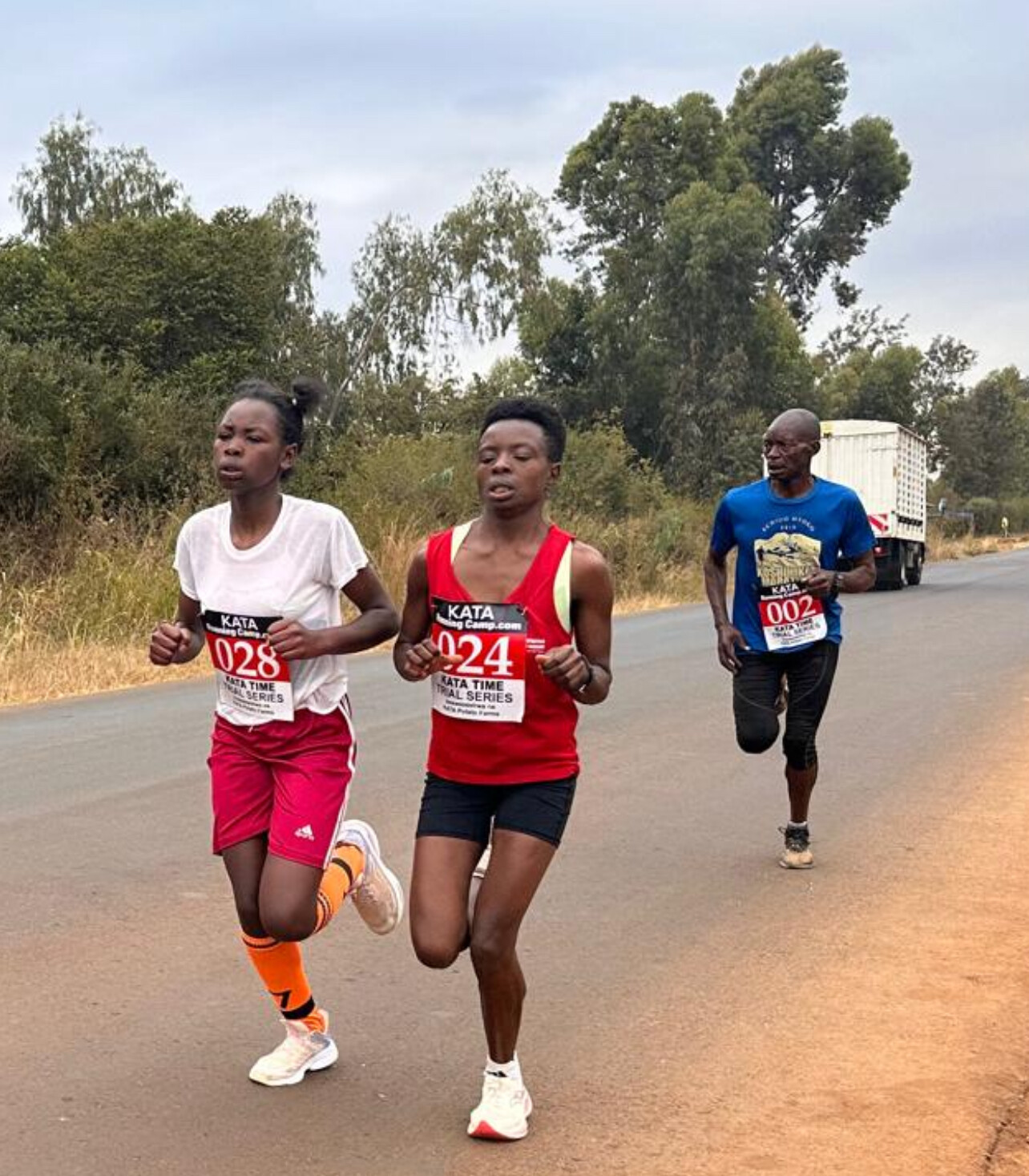
Head coach John Matheri said the system promotes fairness and progress.
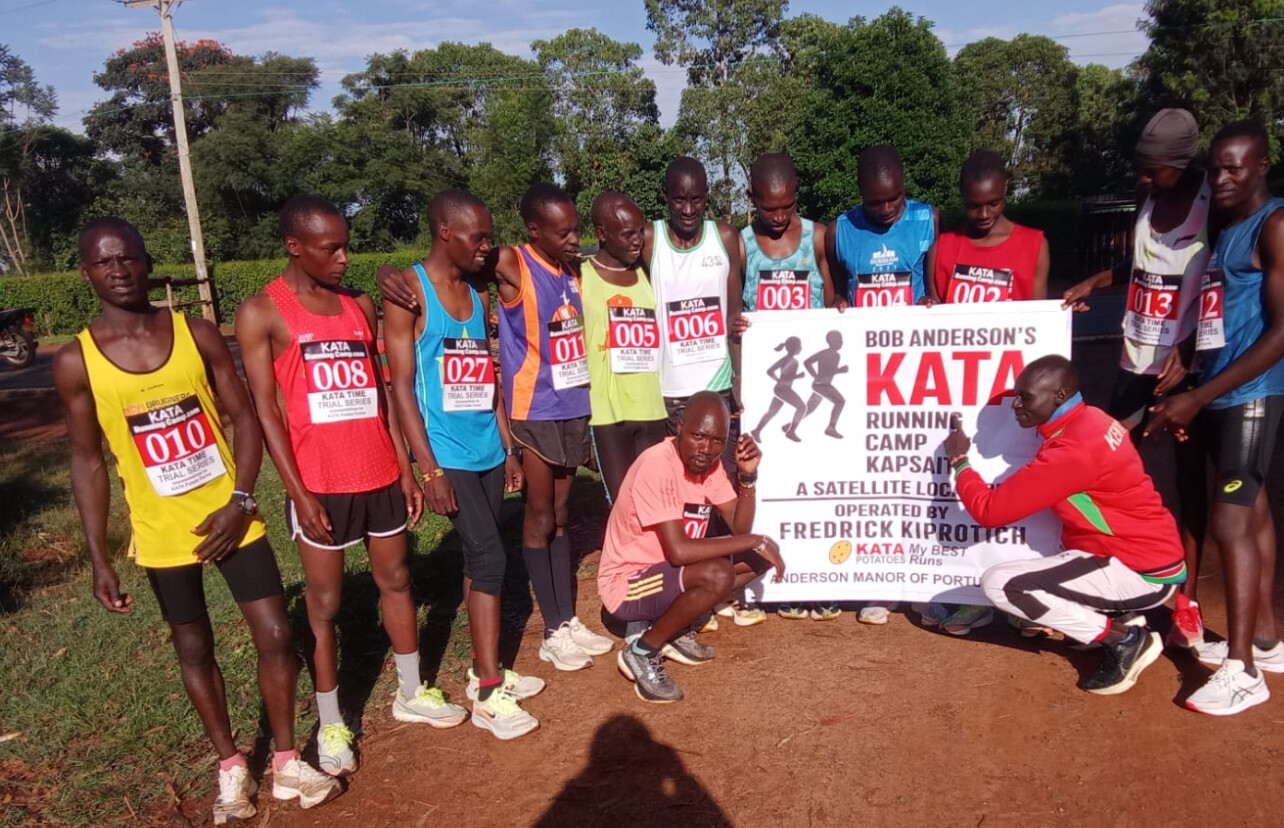
“Before, athletes had to travel to Thika for official trials. Now, the competition comes to them,” he said. “That equal footing is helping identify talent in places we might never have reached before.”
Matheri added that community involvement is strengthening outcomes.
“We expect even faster times this month,” he noted. “Athletes are training with purpose, supported by improved nutrition from our KATA potato projects and the consistent structure that these trials provide.”
Coach Silas Tiren, who leads one of the Rift Valley KATA Camps, said the program has given athletes motivation and accountability.
“These trials are more than races — they’re checkpoints,” said Tiren. “They remind every runner that consistency builds champions.”
From Kapcherop in Elgeiyo Marakwet, coach Philemon Kiptoo emphasized the difference the decentralized system is making.
“Many young runners used to give up because they couldn’t afford to travel for competitions,” he said. “Now KATA has brought the race to their doorstep. That keeps their dreams alive.”
Olympic and World medalist Edwin Soi, a longtime KATA supporter, called the program a bridge between emerging and elite athletes.
“When I look at these young runners, I see myself years ago,” Soi said. “KATA is giving them structure and belief — proof that with discipline and consistency, they can rise to the world stage.”
The October 15 event will again feature 10 km and 5 km distances for men, women, and under-20 juniors. All results from the KATA Running Camps will be uploaded to the My Best Runs database for national comparison and recognition.
As the event approaches, excitement is building across Kenya’s running communities. With standardized guidelines, consistent timing, and grassroots engagement, the KATA Time Trials are evolving into a national benchmark of progress — connecting runners from every region under one synchronized system of excellence.
From Thika’s academy grounds to the mountain trails of the Rift Valley, the whistle will blow on October 15, uniting Kenya’s KATA athletes in a single shared mission: to test, improve, and prove that talent thrives when opportunity is structured.
by Robert Kibet
Login to leave a comment
KATA Time Trial Series
Welcome to the KATA Monthly Time Trial Held at the Kenyan Athletics Training Academy in Thika, Kenya, the KATA Monthly Time Trial is a unique and inclusive event designed to support runners of all levels in achieving their goals and showcasing their fitness. This event offers both 10K and 5K distances on an accurate, certified course, providing participants with...
more...Rotich and Reline Triumph in Muddy Showdown at Kaptagat Forest Half Marathon - Kaptagat, Kenya — July 12, 2025
On a misty Saturday morning in the high-altitude woodlands of Simotwo, Elgeyo Marakwet County, Gideon Kiprop Rotich and Catherine Reline embraced the mud, mist, and mayhem to win the 2025 Kaptagat Forest Half Marathon. Battling a soaked red clay course shared by Kenya’s finest—including marathon legend Eliud Kipchoge—the two champions rose above the chaos to claim hard-fought victories in the men’s and women’s 21km races.
MEN’S 21KM — Rotich Edges Rivals in Thrilling Sprint Finish
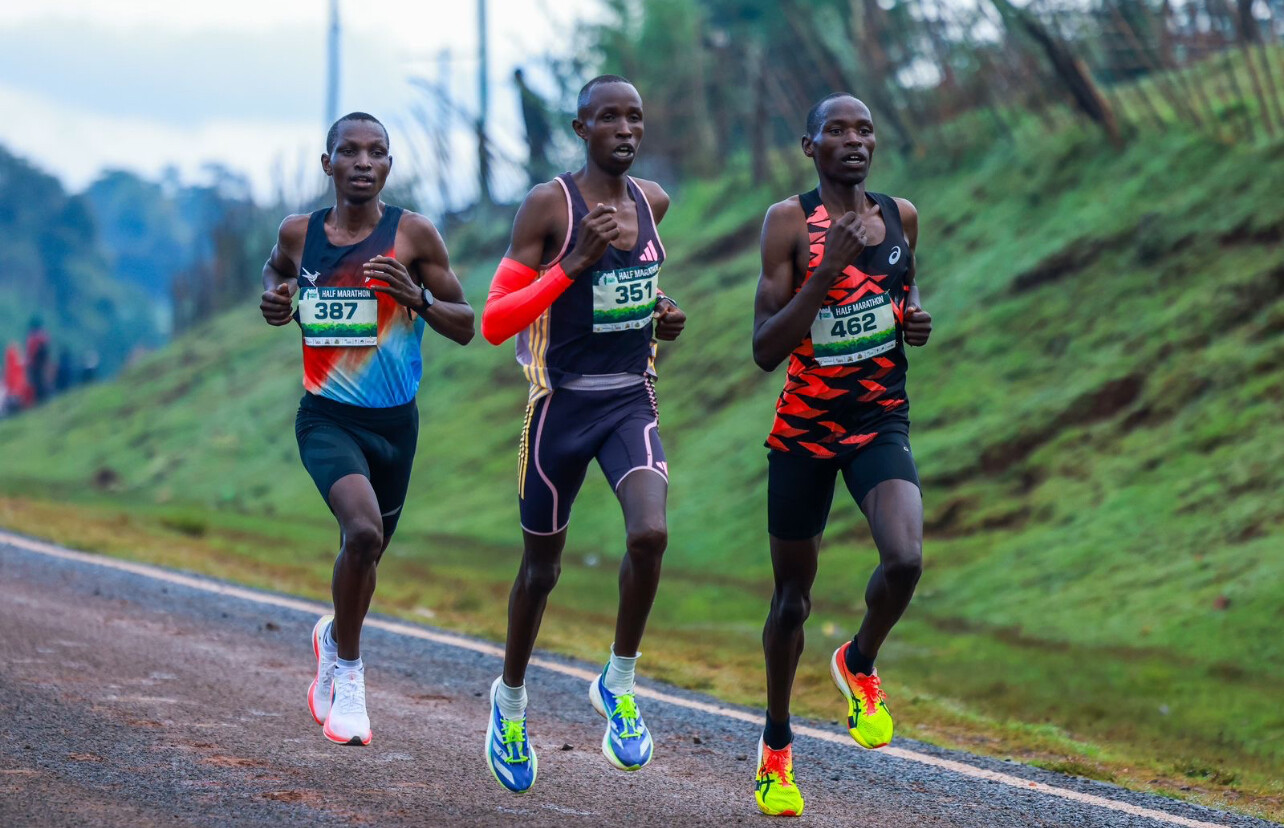
The men’s race quickly became a tactical chess match, played out on unpredictable terrain. Rotich, showing remarkable composure through the slippery climbs and sharp descents, surged in the final kilometer to win in 1:07:02.
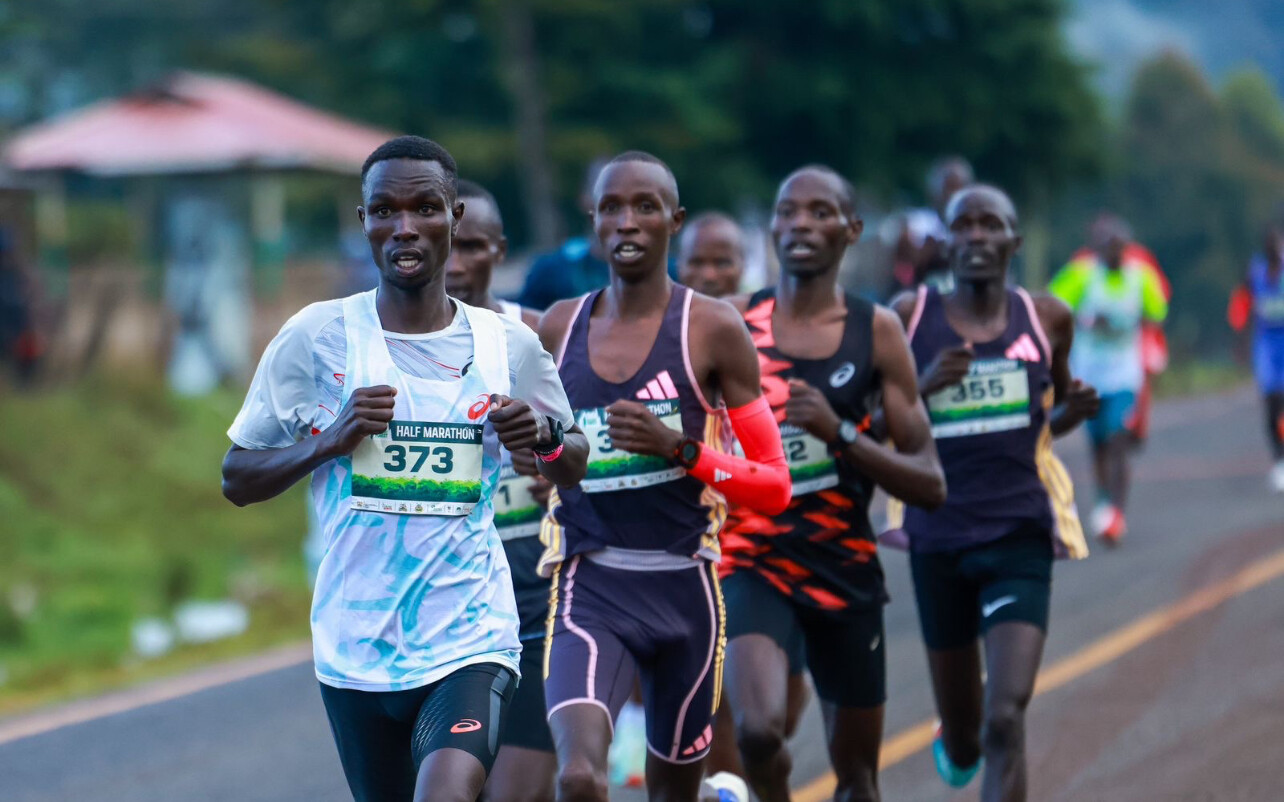
From the outset, he was closely shadowed by Wisley Kipkemoi Yego (Keringet) and Alfred Kipkemoi Cheruiyot, with the trio passing 5K in 14:19, 10K in 32:47, and 15K in 47:21. As the fog thickened and footing worsened, Rotich found a decisive gear on the final descent. Yego finished just two seconds back in 1:07:04, with Cheruiyot another heartbeat behind in 1:07:05.
“You couldn’t push the way you normally would,” said Rotich, his shoes caked with thick mud. “The ground was soft; the air was heavy. But that’s Kaptagat—it doesn’t reward the fastest, it rewards the smartest and toughest.”
Only 16 seconds separated the top five finishers, marking one of the most dramatic conclusions in the event’s recent history.
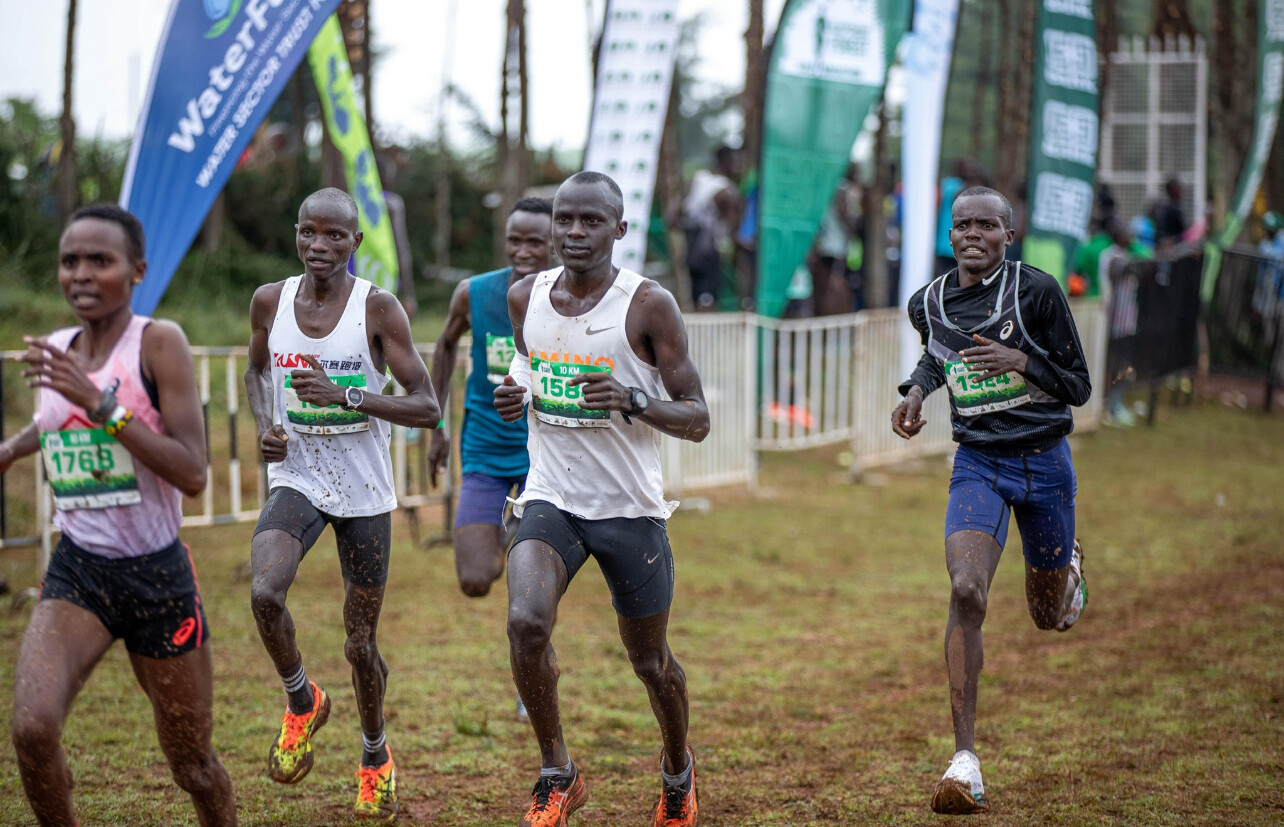
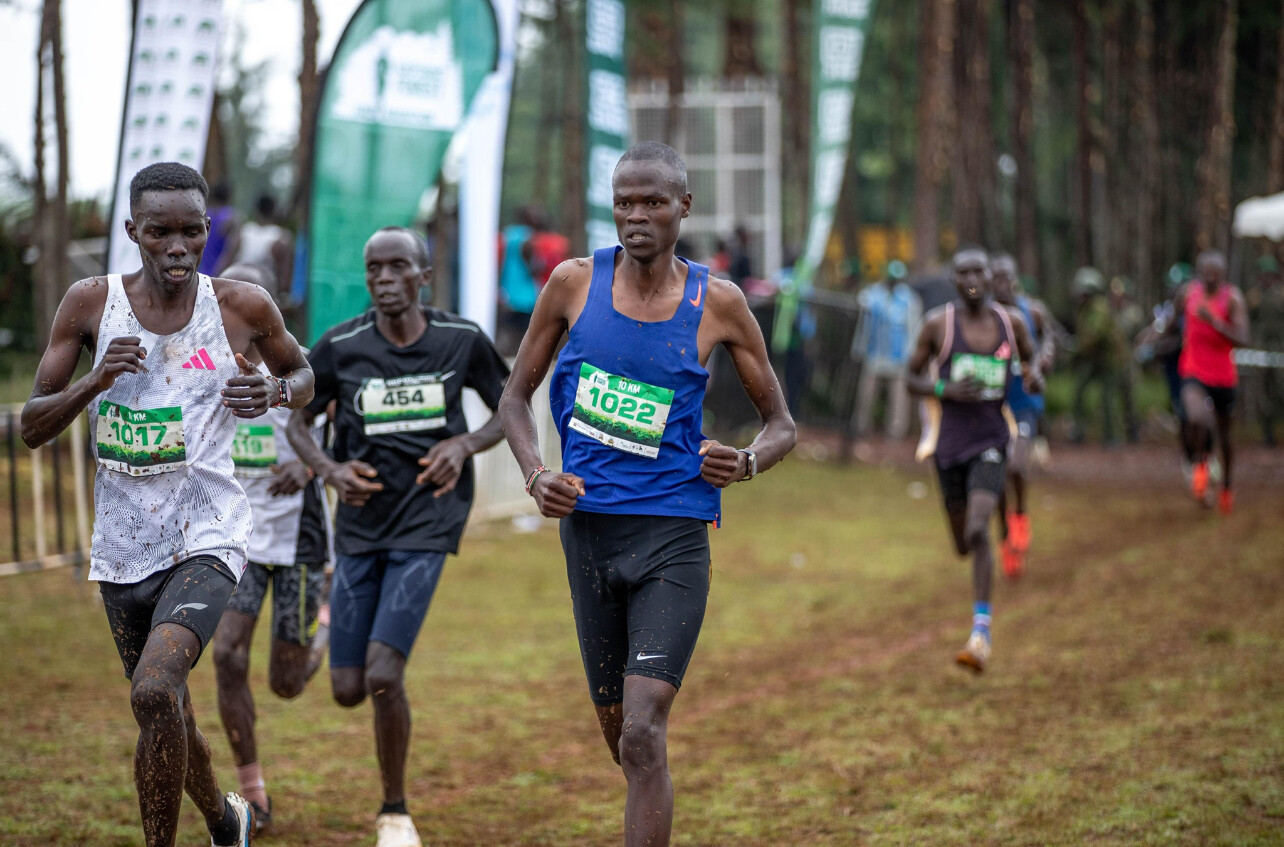
WOMEN’S 21KM — Reline Dominates with Precision and Power
In the women’s race, Catherine Reline executed a masterclass in pacing and poise. She broke away after 10K and never looked back, claiming victory in 1:14:23.
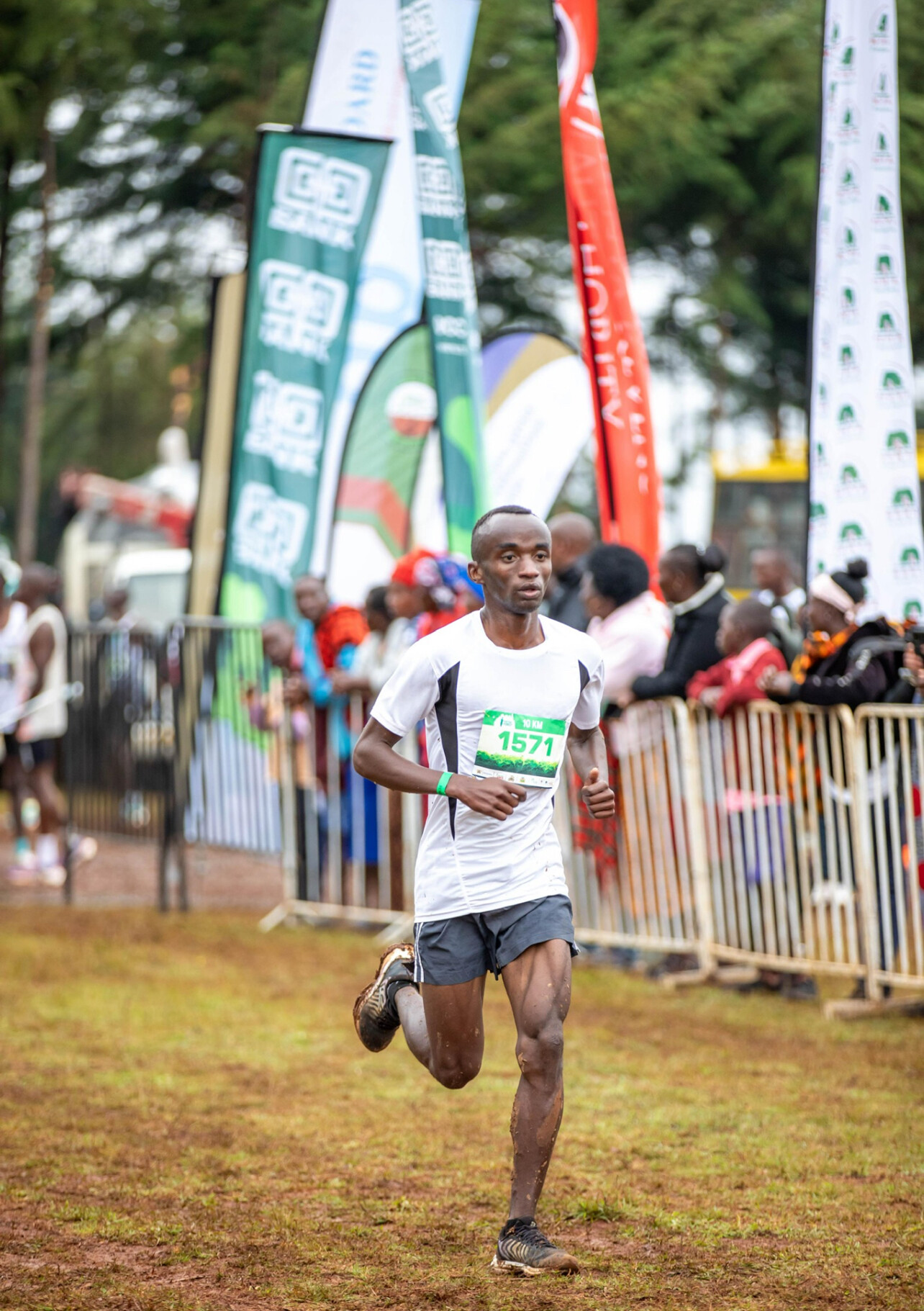
Her 5K split of 16:22 gave early notice of her form, with 10K and 15K reached in 37:33 and 53:39, respectively. Confident and sure-footed through the muddiest stretches, she ran unchallenged to the finish.
“The forest was unforgiving,” Reline said. “But I trusted my rhythm and focused on staying upright through the muddy patches. Once I found my footing, I just kept pressing.”
Vivian Cherotich (1:15:09) and Catherine Peiyoy (1:15:44) rounded out the podium after a gritty chase through the fog-shrouded ridgelines and pine forest trails.
Mud, Mist, and the Magic of Kaptagat
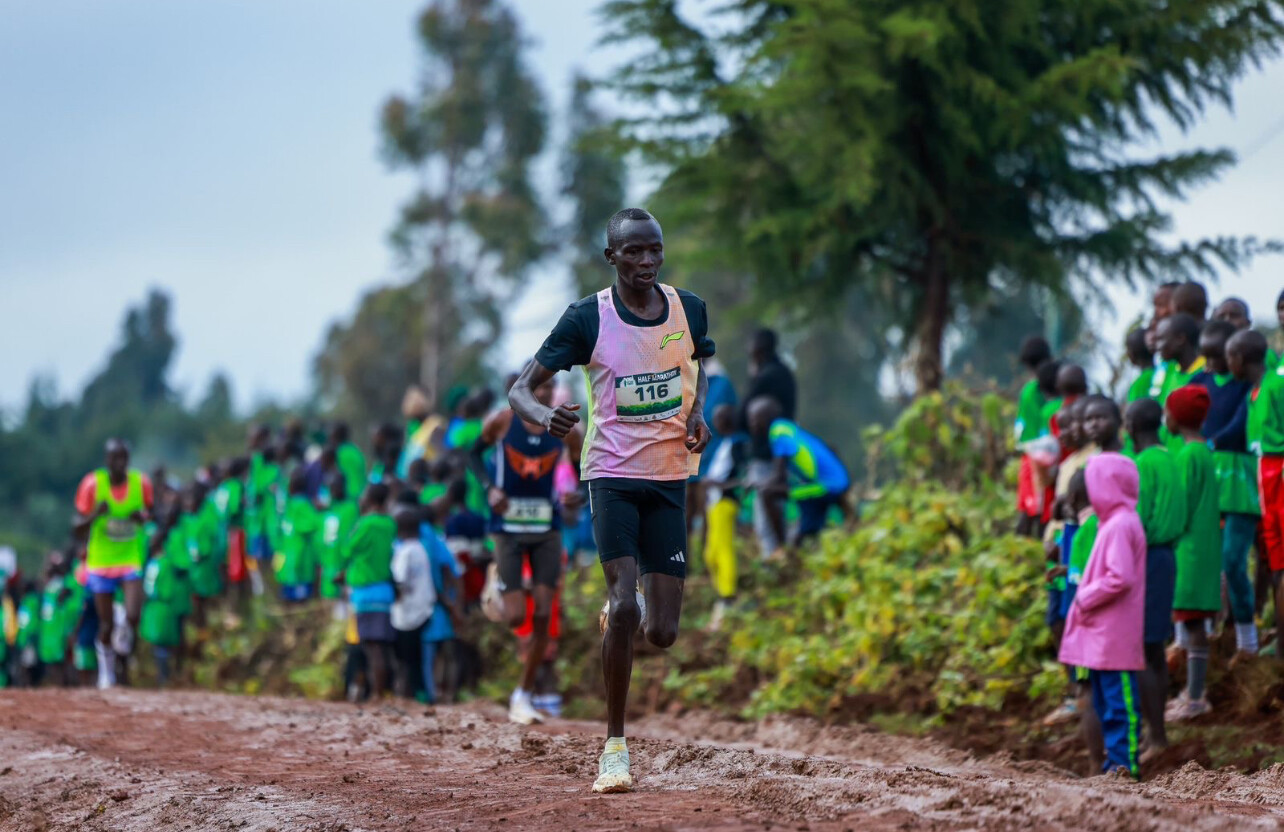
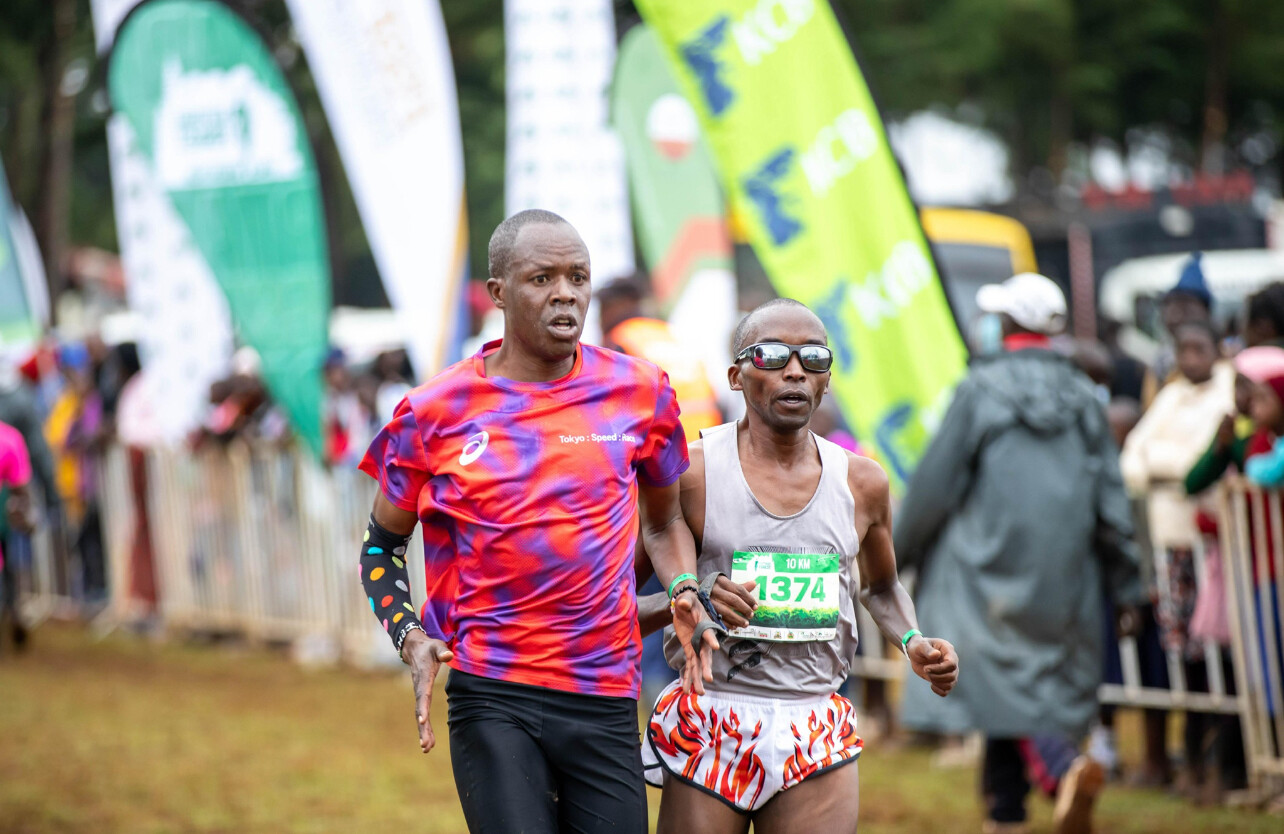
Despite a relentless drizzle and pre-race downpour, the race drew hundreds of spirited spectators. From Simotwo High School to the inner loops of the Kaptagat forest, locals wrapped in shawls, ponchos, and even barefoot stood cheering along the soaked 2,600-meter elevation trail.
Organizers praised the resilience of the athletes and hinted at possible drainage improvements for future editions. But for many, the mud and mist are part of Kaptagat’s mystique.
“This course defines toughness,” said third-place finisher Cheruiyot. “And the crowd’s energy—despite the rain—kept us going.”
As sunlight finally pierced the cloud cover, the 2025 Kaptagat Forest Half Marathon cemented its reputation once again: raw, real, and one of Kenya’s toughest tests of endurance.
Top 10 Results – Men’s 21km
1. Gideon Kiprop Rotich – 1:07:02
2. Wisley Kipkemoi Yego – 1:07:04
3. Alfred Kipkemoi Cheruiyot – 1:07:05
4. Kalipus Lomwai – 1:07:12
5. Stephen Kimutai Kibet – 1:07:18
6. Philemon Kiprotich Konor – 1:07:35
7. Timothy Kiptoo – 1:07:56
8. Patrick Mosin – 1:08:01
9. Noah Kipkemboi – 1:08:18
10. Jonah Belio – 1:08:21
Top 6 Results – Women’s 21km
1. Catherine Reline – 1:14:23
2. Vivian Cherotich – 1:15:09
3. Catherine Peiyoy – 1:15:44
4. Gladys Longari – 1:15:48
5. Beatrice Cheserek – 1:16:49
6. Gladys Jeptepkeny – 1:17:33
by Robert Kibet
Login to leave a comment
LA Grand Slam Track Meet Canceled, Casting Uncertainty Over Series Finale
The highly anticipated LA Grand Slam Track meet, scheduled for June 28–29 at UCLA’s Drake Stadium, has officially been canceled, marking an abrupt and disappointing end to the inaugural season of Michael Johnson’s ambitious new professional track league.
The cancellation, confirmed via athlete emails and an internal league meeting held shortly after the Oslo Diamond League, follows a string of logistical and financial setbacks that have shadowed the 2025 Grand Slam Track series.
Why Was the LA Meet Canceled?
Multiple factors contributed to the league’s decision to call off its final stop:
• Venue costs: UCLA’s Drake Stadium lease proved to be prohibitively expensive, and cost-benefit analysis showed the meet could not be held sustainably under current terms.
• Market saturation: The earlier cancellation of the LA Grand Prix by USA Track & Field, citing overlap with Grand Slam Track, signaled underlying concerns about the local track market.
• Attendance and revenue: Despite high-profile athletes and large prize purses, audience turnout and ticket sales in previous meets (notably Kingston and Miami) fell short of expectations.
• Operational strain: The Philadelphia Slam was also shortened from three days to two, reflecting broader constraints in the league’s first year.
Recapping the 2025 Grand Slam Track Series
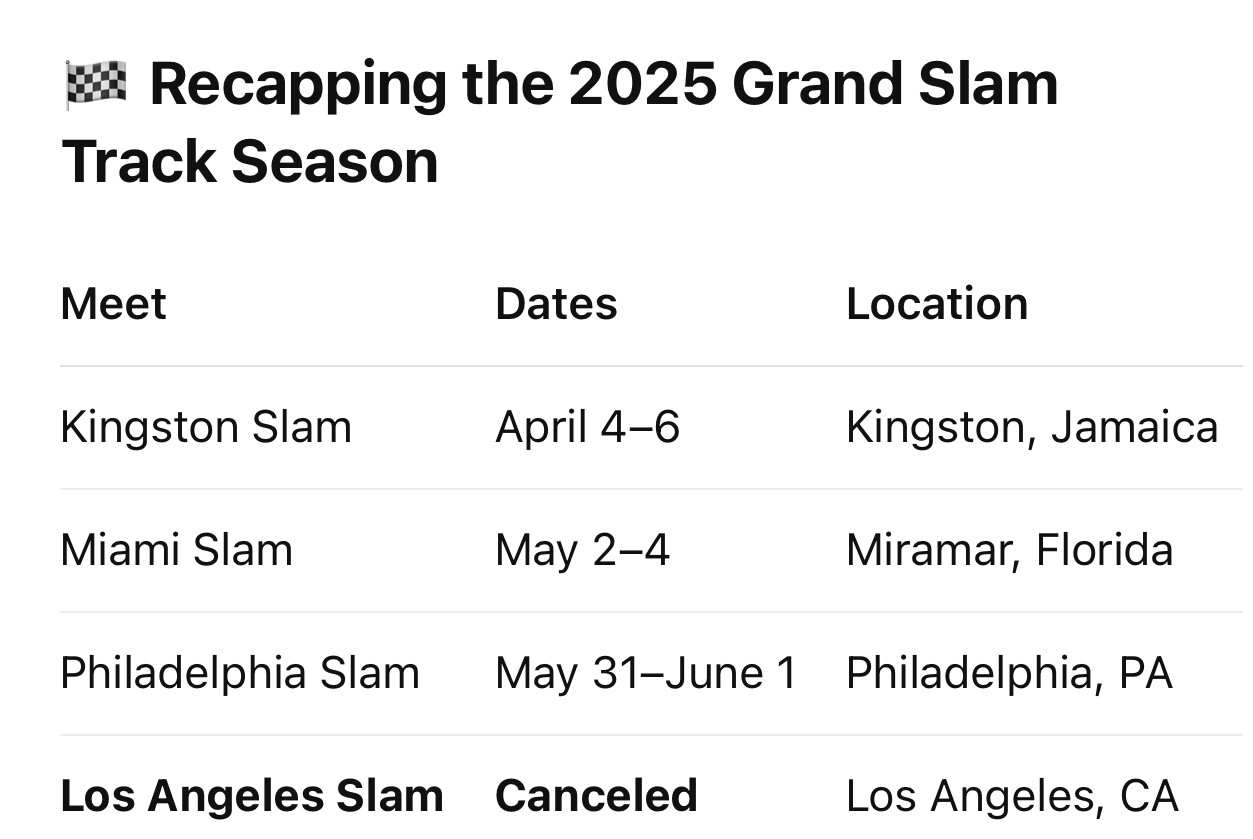
Each meet featured world-class fields and a $100,000 winner’s prize per event—part of a $12.6 million total purse. The series received coverage on Peacock and The CW, and was positioned as a bold alternative to the Diamond League.
What’s Next for Grand Slam Track?
Despite the disappointing end, founder Michael Johnson insists the pilot season met its objectives: proving that a high-stakes, athlete-first, fan-centered pro track league can attract global attention.
The league now shifts its focus to 2026, aiming to:
• Secure new strategic partners and sponsorships
• Optimize venue selection and fan engagement
• Revise its financial model for long-term sustainability
While the LA cancellation raises questions about viability, there is still optimism that Grand Slam Track will return, stronger and more refined, in season two.
The cancellation of the LA meet is a setback—but not a death blow. Grand Slam Track managed to draw eyes, deliver compelling performances, and push the conversation forward in pro track and field. Whether it can evolve into a sustainable, annual series remains to be seen—but the world will be watching.
by Boris Baron
Login to leave a comment
Soh Rui Yong Breaks World Record in a Suit at London Marathon
From the blazing heat of Singapore to the historic streets of London, national marathoner Soh Rui Yong just redefined endurance and style. Clocking 2:39:57 at the 2024 London Marathon, Soh shattered the Guinness World Record for the fastest marathon run in a three-piece suit and tie, beating the previous best by 56 seconds.
But this record-breaking feat was no victory lap.
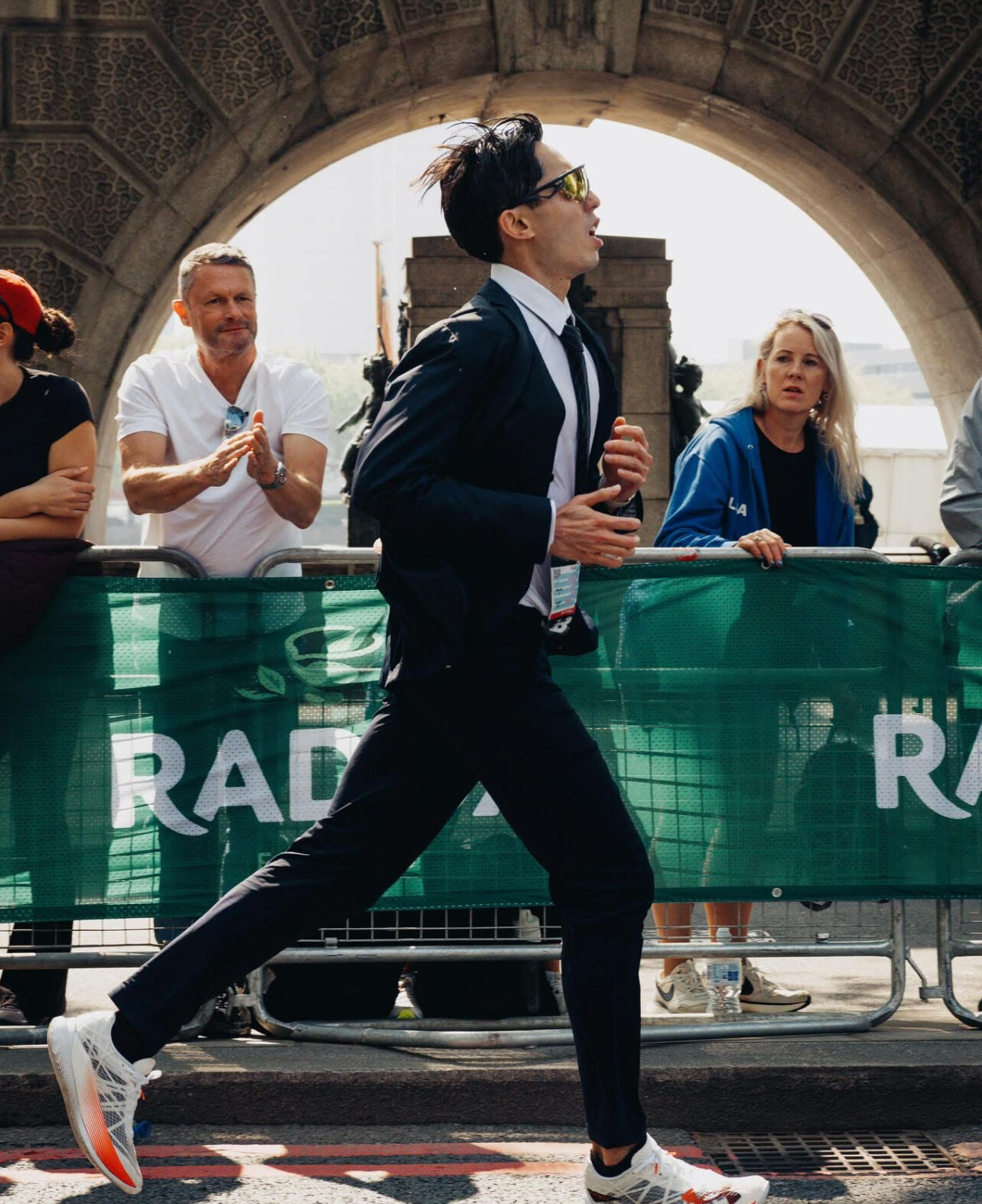
Running in sweltering heat along the Thames, Soh endured what he called a “sweatfest,” his heart pounding and pace slowing from 3:45/km to over 4:00/km by the final stretch. “The sun was beating down… with my head feeling like I was going to get a heat stroke anytime,” he shared in a candid post. Despite the discomfort, he leaned on his resilience—built from years of running in Singapore’s tropical humidity—and a quote by Haruki Murakami:
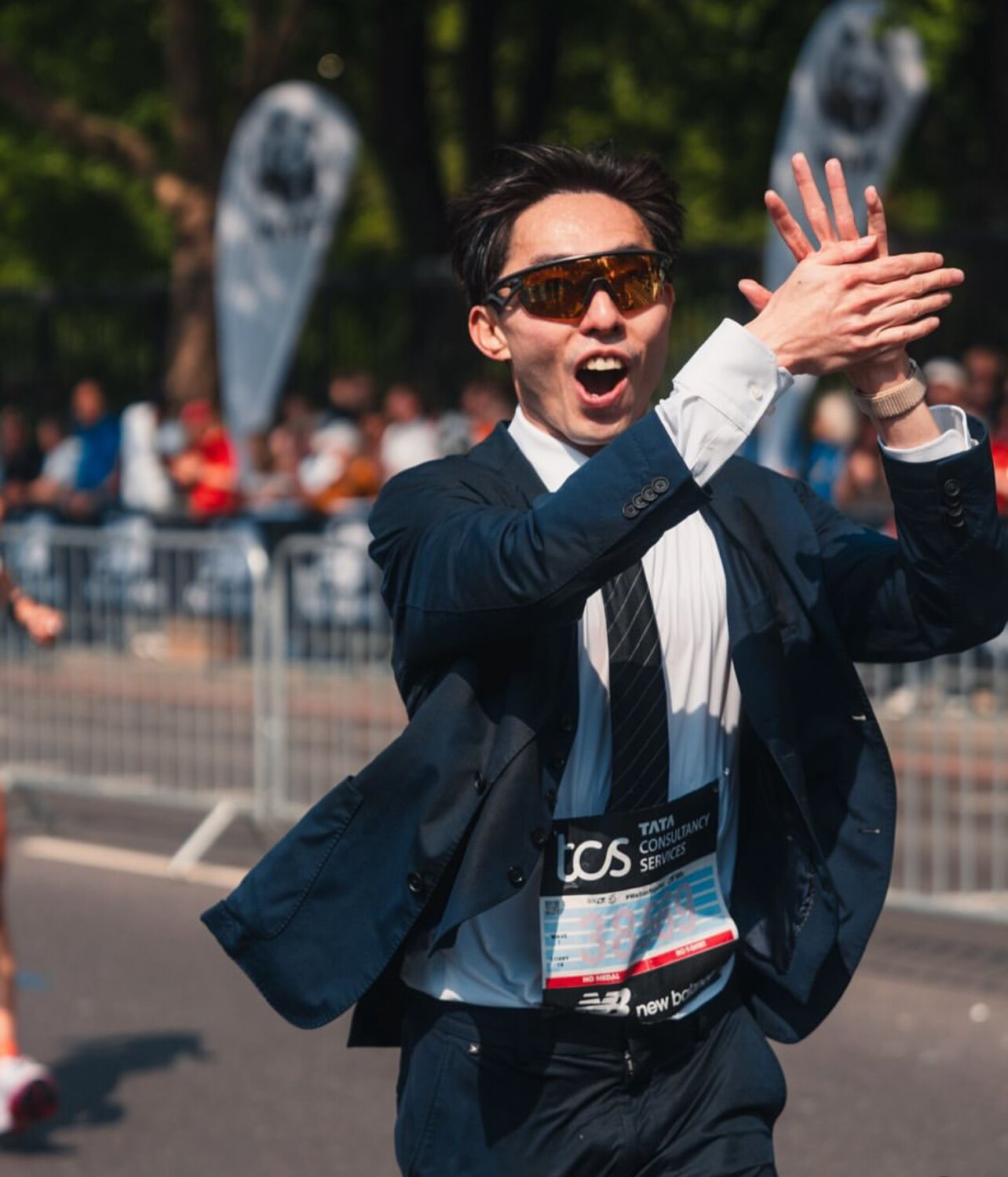
“Pain is inevitable. Suffering is optional.”
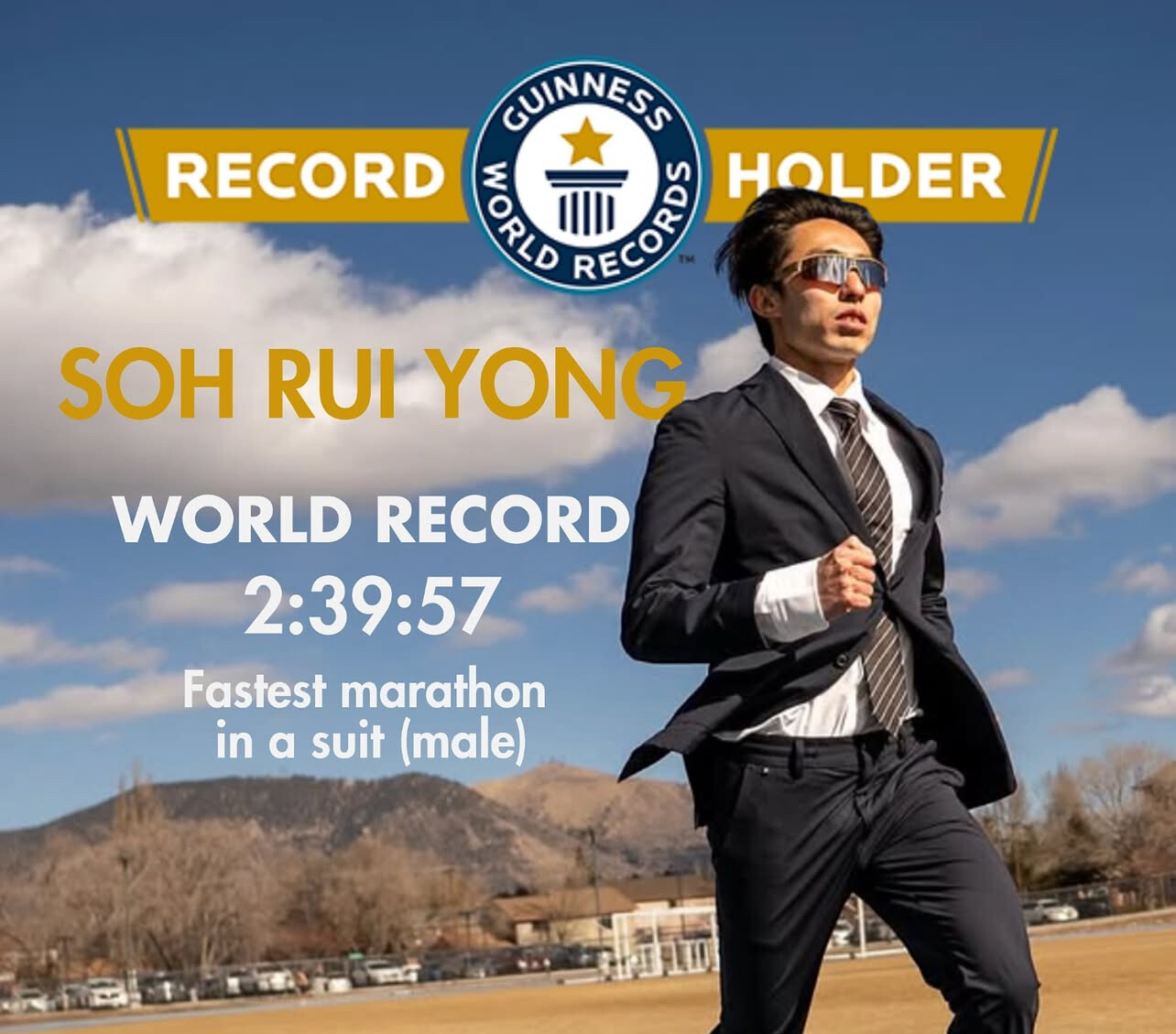
Those final 30 minutes were brutal. Shuffling step by step, Soh chipped away at the distance—kilometre by kilometre, minute by minute—passing runner after runner with sheer willpower. His sprint to the finish? “I only succeeded in looking pretty ridiculous on live BBC TV,” he joked.

Still, the result was no joke: first person in history to go under 2:40 in a full suit, making a bold fashion statement on one of the biggest marathon stages in the world.
From tiny tropical Singapore to the world, Soh’s message is clear: you don’t need ideal conditions to make history—you just need grit, heart, and maybe a really good tailor.
by Boris Baron
Login to leave a comment
Martha Akeno and Abebaw Muniye Win Close Battles at Dalian Marathon
Close Finishes and Fast Times Define 2025 Dalian Marathon in China
May 11, 2025 – Dalian, China

The 2025 Dalian Marathon delivered thrilling finishes in both the men’s and women’s races, as athletes from Ethiopia and Kenya dominated the podiums in this fast spring marathon on China’s northeast coast.
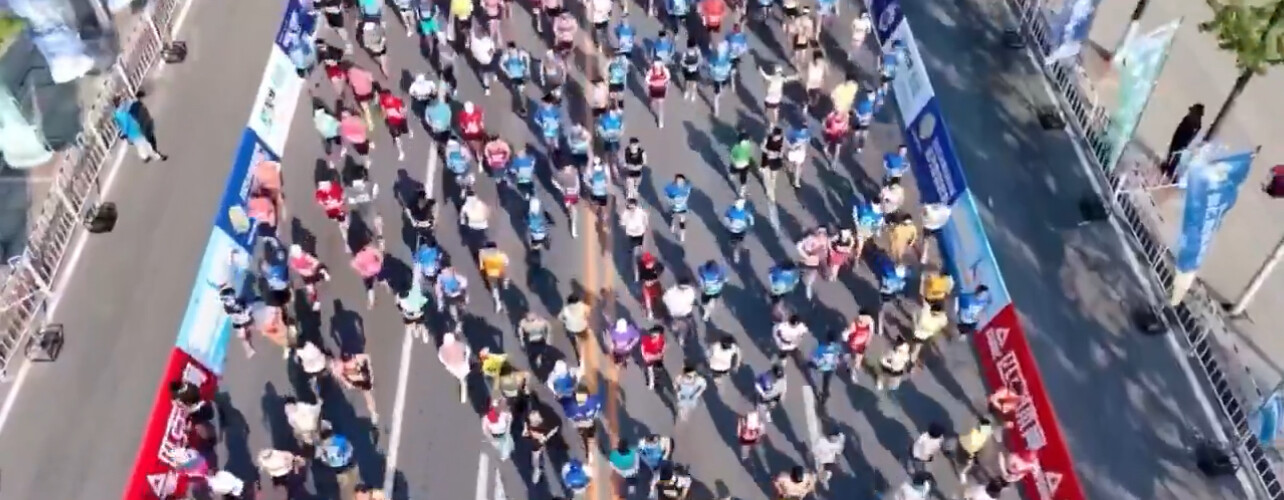
In the men’s race, Ethiopia’s Abebaw Muniye surged ahead in the final kilometers to take the win in 2:10:33, holding off countryman Kemal Husen, who crossed just 38 seconds later in 2:11:11. Kenya’s Timon Sutter rounded out the top three with a strong 2:11:36 finish.
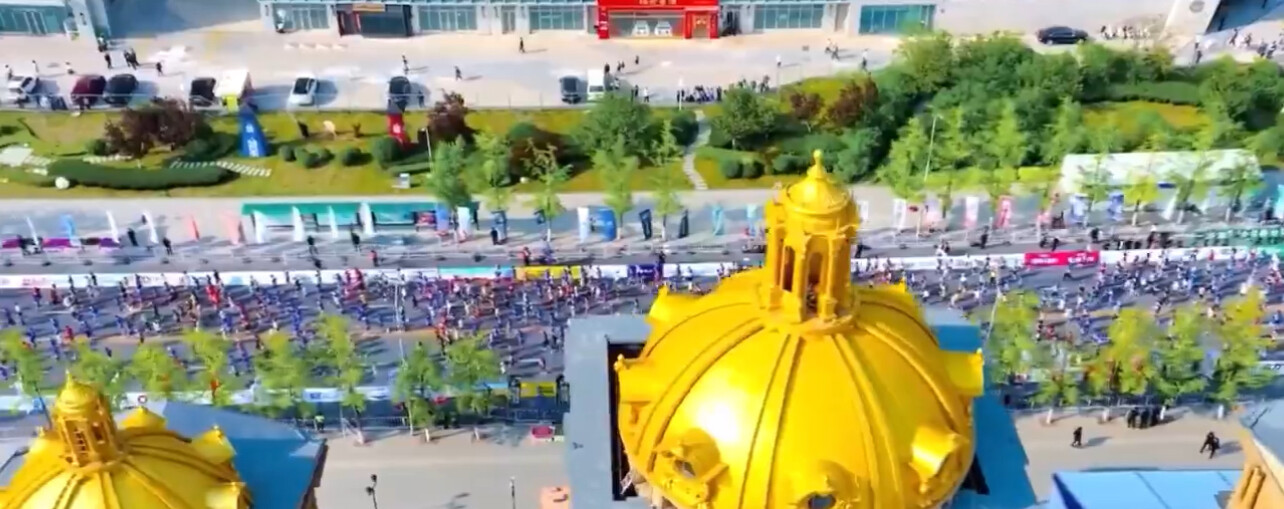
The women’s race was even tighter, with the top three separated by just 31 seconds. Kenya’s Martha Akeno claimed victory in 2:29:20, narrowly edging out Ethiopia’s Saeda Kedir (2:29:23) and Baraki Gebriala (2:29:51).
Abebaw victory was particularly impressive given the competitive Ethiopian duo behind her, who pushed the pace throughout the second half.
The Dalian Marathon has become a popular destination for elite and emerging African talent, with its flat, sea-level course and consistent organization attracting fast times year after year.
While no course records were broken this year, the close finishes and deep international field further established Dalian as one of China’s premier marathons. Over 33,000 runners participated.
Results Summary:
MEN
Abebaw Muniye (ETH) – 2:10:33
Kemal Husen (ETH) – 2:11:11
Timon Sutter (KEN) – 2:11:36
WOMEN
Martha Akeno (KEN) – 2:29:20
Saeda Kedir (ETH) – 2:29:23
Baraki Gebriala (ETH) – 2:29:51
by Boris Baron
Login to leave a comment
What Happens When the Finish Line Feels 100 Miles Away
We’ve all seen the footage: a runner, sometimes even an elite, staggering or crawling across the marathon finish line. It’s a powerful image—equal parts dramatic and heartbreaking. But what causes those jelly legs, and can it be prevented?
The Science of “Jelly Legs”
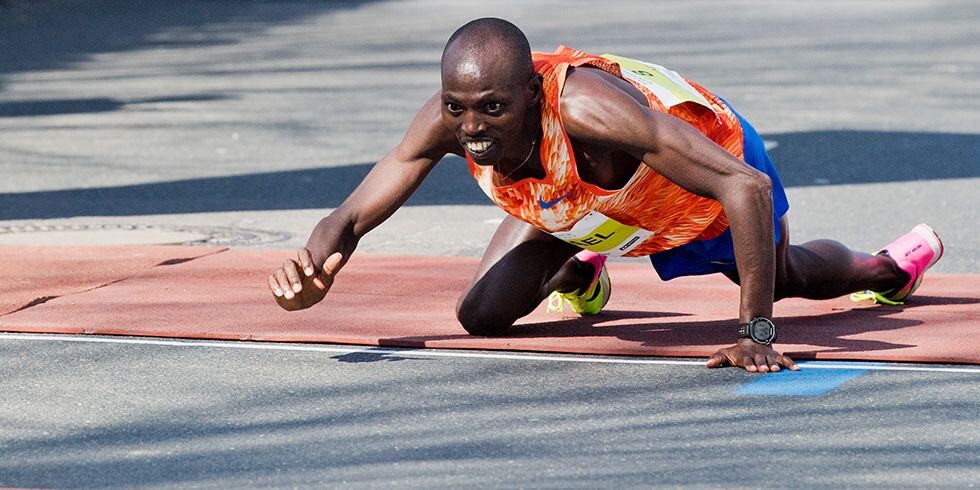
The feeling of wobbly or unresponsive legs at the end of a marathon is often the result of neuromuscular fatigue and metabolic depletion. After 26.2 miles, the body’s ability to send signals from the brain to the muscles can falter.

“You’re not just tired,” says Coach Jimmy Muindi, seven-time Honolulu Marathon champion. “Your legs stop responding to what your brain is telling them to do.”
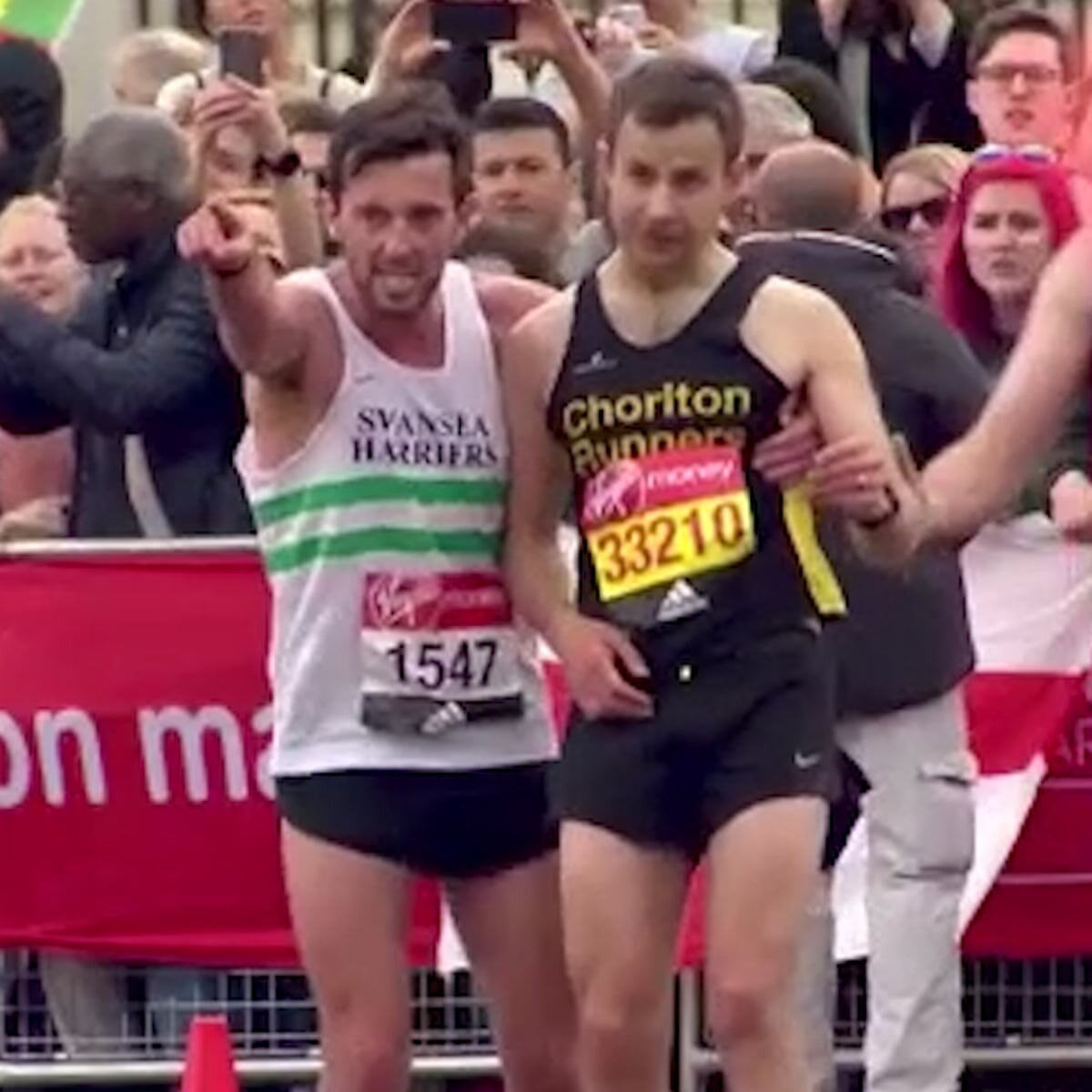
Key Causes
1. Glycogen Depletion
Muscles run on glycogen, and after two to three hours of running, those stores run dry—especially if fueling is inadequate.
2. Dehydration and Electrolyte Imbalance
Even a small loss in body fluid affects muscle function. Electrolyte imbalances (particularly low sodium or potassium) can trigger cramps and weakness.
3. Central Nervous System Fatigue
Your brain gets tired, too. Prolonged effort reduces the brain’s ability to send strong, coordinated signals to the muscles.
4. Improper Pacing
Going out too fast early in the race can lead to full-system shutdown in the final miles. Your body simply can’t hold that pace.
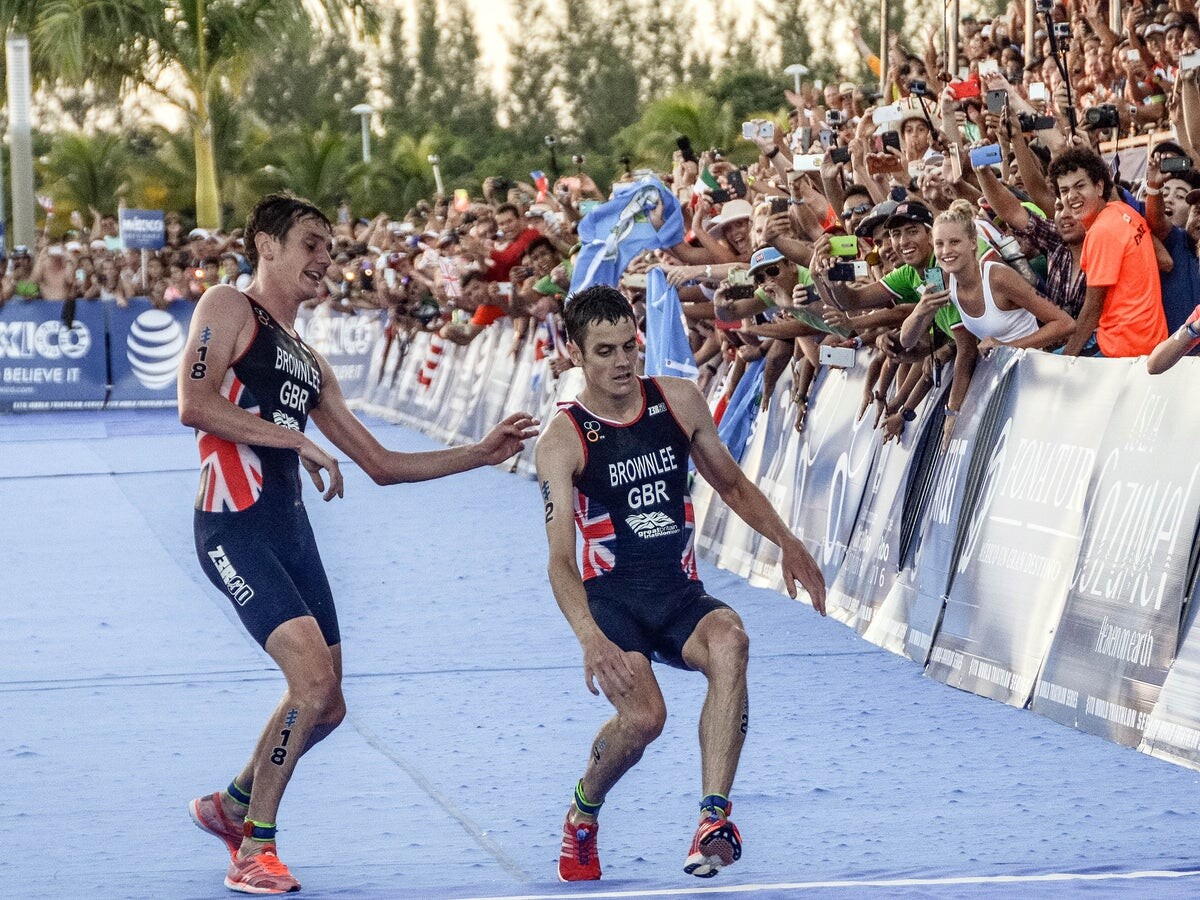
5. Heat and Humidity
Hot races amplify all of the above. Core temperature rises, making it harder for muscles to function efficiently.
Why It Even Happens to Elites
Elite runners push their bodies to the limit. Sometimes a miscalculation in pace, nutrition, or weather adjustment can bring even the strongest athlete to their knees—literally. And because they’re aiming for peak performance, they’re often operating on a knife’s edge.
In 2018, American runner Sarah Sellers nearly collapsed after finishing second at the Boston Marathon, a race defined by brutal weather. Others, like Gabriela Andersen-Schiess in the 1984 Olympics, became iconic for their final, staggering strides.
Prevention Strategies
• Dial in race-day nutrition. Practice fueling with gels, fluids, and electrolytes during training.
• Train your brain. Long runs, heat training, and race simulations help develop mental toughness and delay central fatigue.
• Know your pace. Use race predictors and experience to avoid going out too fast.
• Hydrate smart. Don’t just drink water—replace lost electrolytes.
Final Thought
Marathon running pushes the human body to its limits. Jelly legs and crawl finishes are not signs of weakness—they’re the body’s emergency brake. With smarter training and fueling, most runners can avoid it. But when it does happen, it reminds us how far people will go to finish what they started.
by Boris Baron
Login to leave a comment
Silan Ayyildiz: Oregon’s Mile Marvel Redefines Collegiate Middle-Distance Running
Silan Ayyildiz, a junior at the University of Oregon, has etched her name into NCAA history by becoming the collegiate record holder in both the indoor and outdoor mile events. Her remarkable achievements in 2025 have solidified her status as one of the premier middle-distance runners in collegiate athletics.
On February 15, 2025, at the BU David Hemery Valentine Invitational in Boston, Ayyildiz shattered the NCAA indoor mile record with a time of 4:23.46, surpassing the previous record of 4:24.26 set by Katelyn Tuohy in 2023. This performance not only set a new collegiate benchmark but also established a Turkish national record and topped the University of Oregon’s all-time list.

Continuing her exceptional form, Ayyildiz broke the outdoor collegiate mile record on April 26, 2025, at the Drake Relays in Des Moines, Iowa. Her time of 4:25.50 eclipsed the longstanding record of 4:29.04 set by Angela Chalmers in 1987. This achievement marked her third collegiate record of the year, following her indoor mile and distance medley relay (DMR) records.
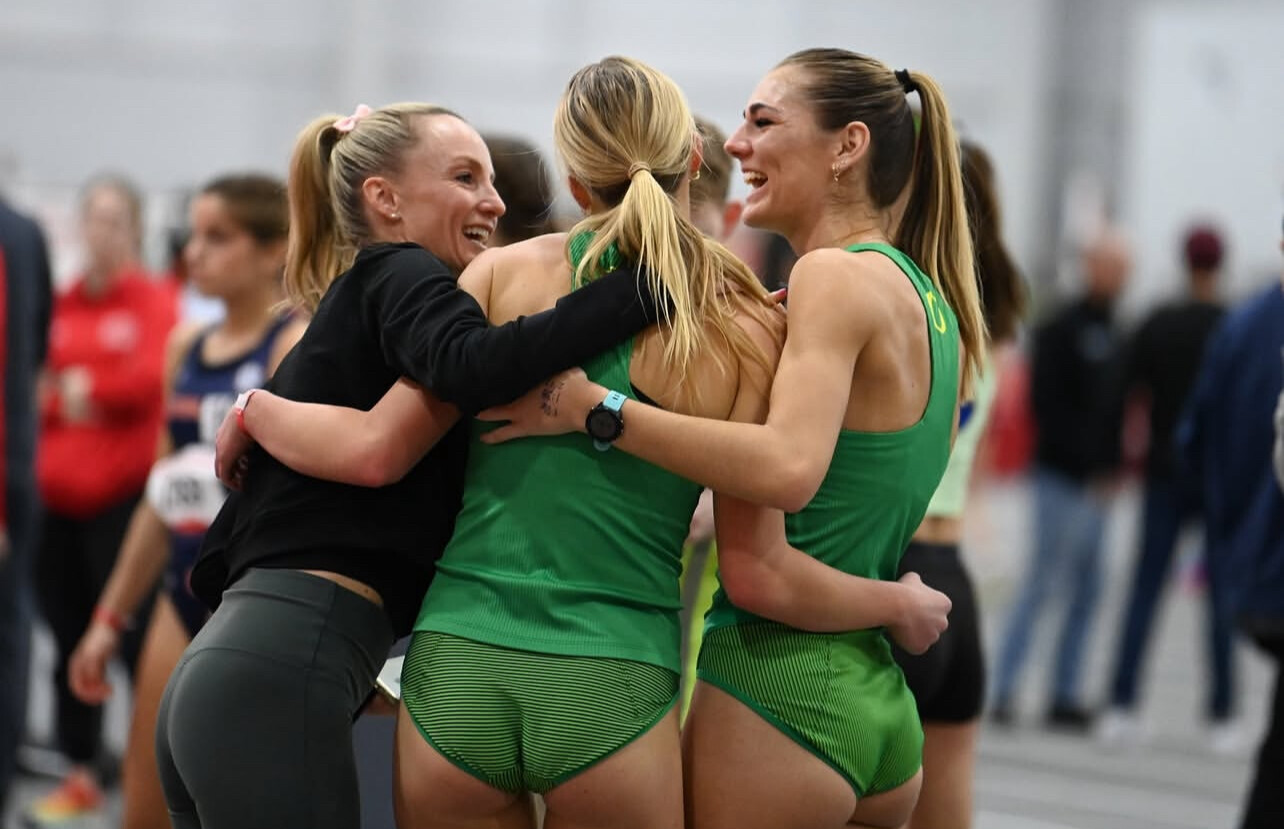
Born on October 10, 1999, in Istanbul, Turkey, Ayyildiz began her athletic journey in middle school and quickly rose through the ranks, securing national titles and representing Turkey in various international competitions. Her accolades include gold medals in the 1500m at both the 2022 Balkan Indoor and Outdoor Championships and a bronze medal at the 2021 Summer Universiade.
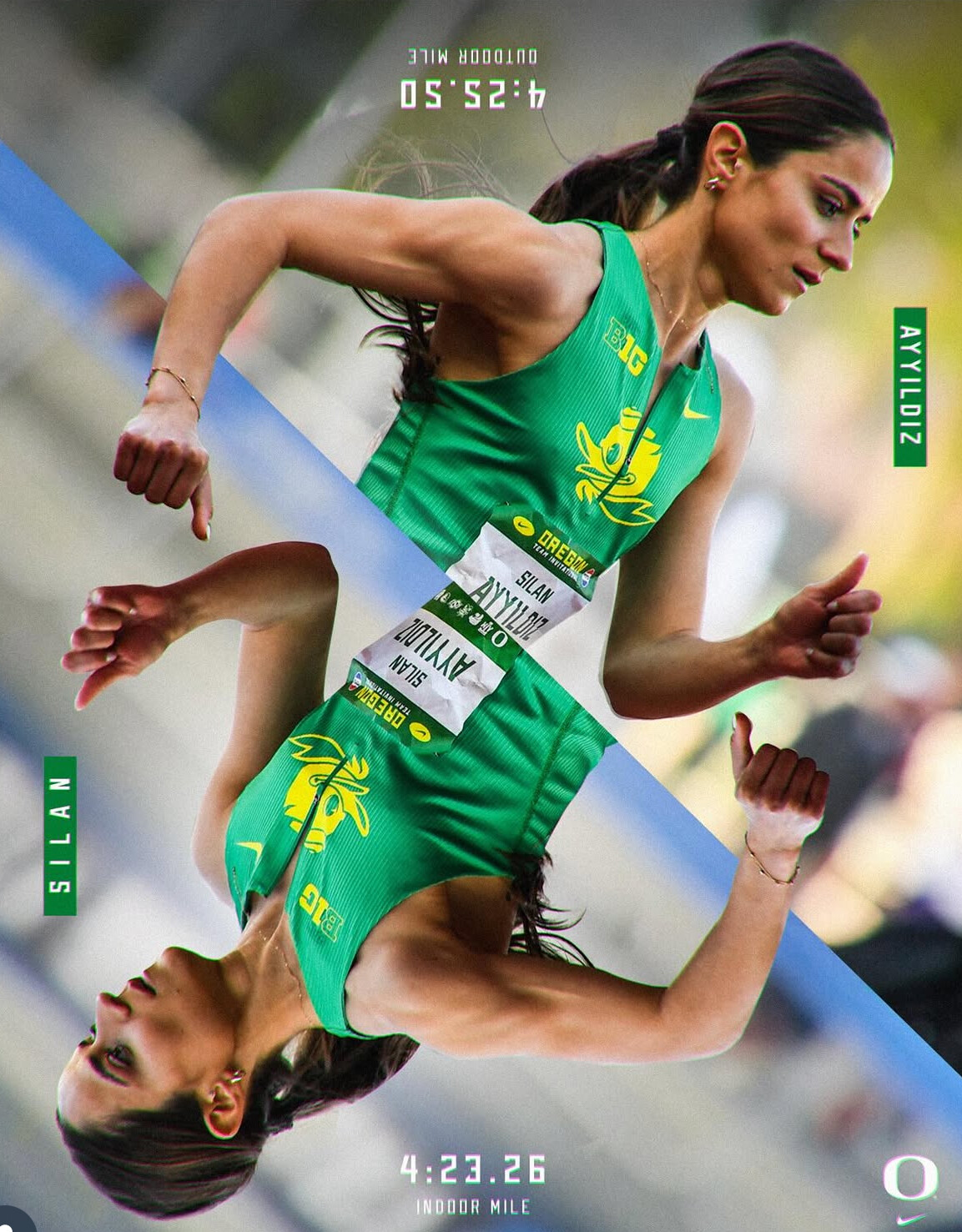
In 2023, Ayyildiz transitioned to collegiate athletics in the United States, joining the University of South Carolina. During her tenure there, she broke multiple school records and clinched the SEC 1500m title. Seeking further growth, she transferred to the University of Oregon, where she continues to excel both academically and athletically.
Since joining the Oregon Ducks, Ayyildiz has been a cornerstone of the team’s success. Her contributions include anchoring the DMR team to a collegiate record time of 10:42.05 during the indoor season. Individually, she has set personal bests across various distances, solidifying her status as one of the premier middle-distance runners in collegiate athletics.
With the Big Ten Championships and NCAA Championships on the horizon, Ayyildiz is poised to further cement her legacy. Her relentless pursuit of excellence and dedication to her craft make her a formidable competitor on the national stage. As she continues to break barriers and set new standards, the track and field community eagerly anticipates what milestones Silan Ayyildiz will achieve next.
by Boris Baron
Login to leave a comment
Grand Slam Track League Aims to Revolutionize Track and Field
In an ambitious move to elevate professional track and field, sprinting legend Michael Johnson has launched the Grand Slam Track league. This innovative series promises athletes regular, high-stakes competitions against top-tier rivals, coupled with unprecedented financial incentives.
Unprecedented Financial Incentives
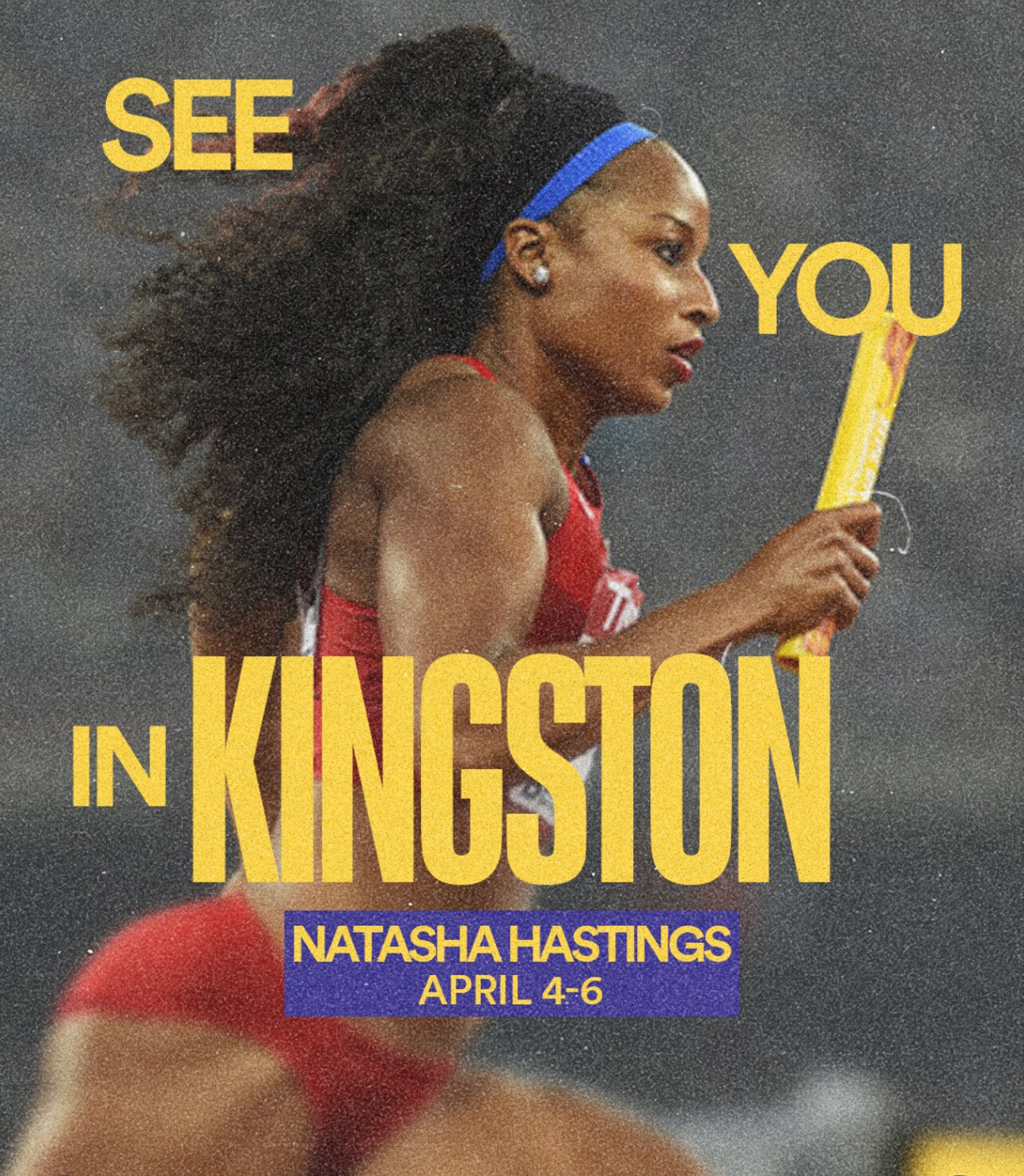
Grand Slam Track offers a substantial $12.6 million in prize money for its inaugural season. Athletes will compete in four major meets, with prize distributions as follows:
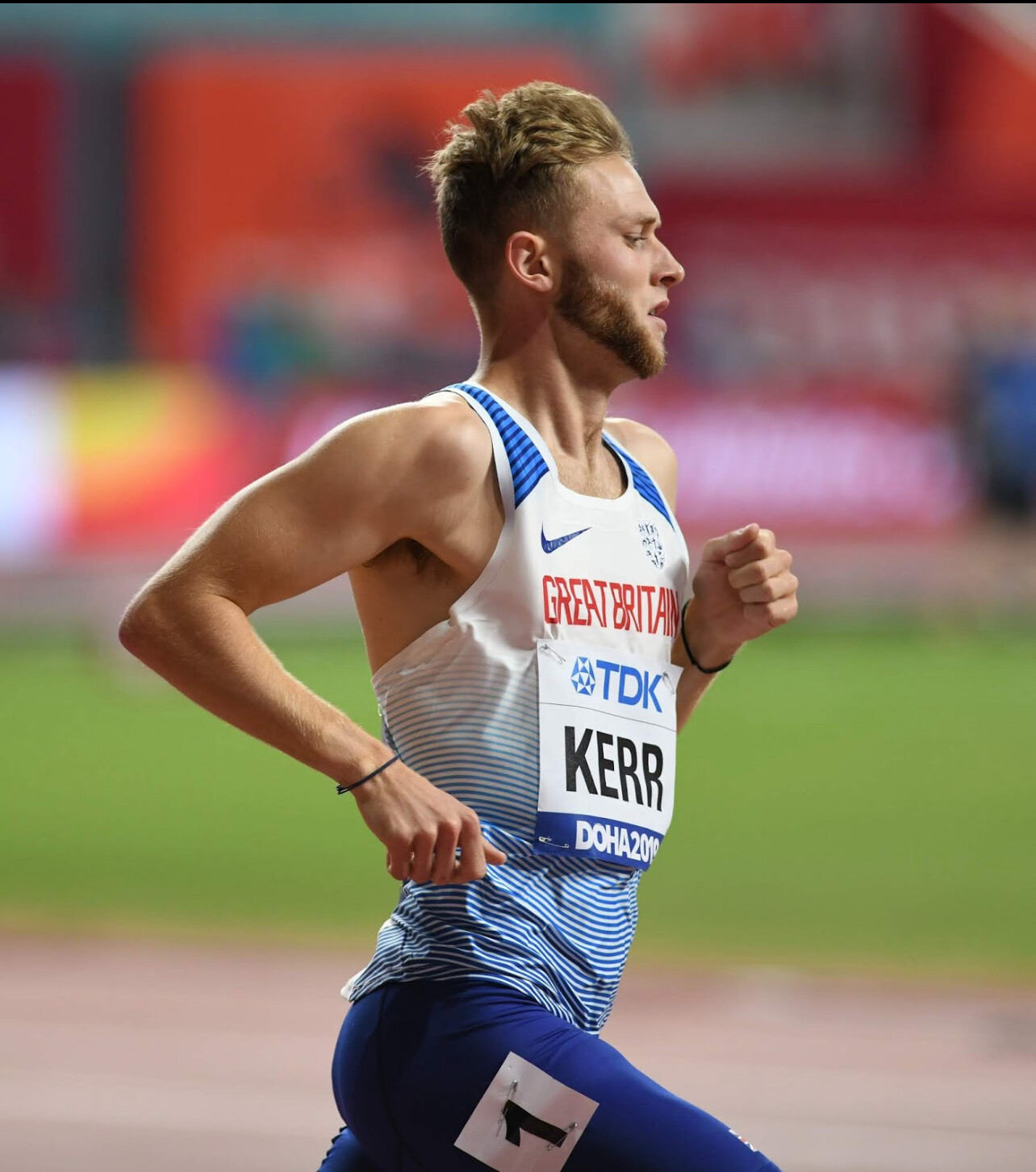
• 1st Place: $100,000
• 2nd Place: $50,000
• 3rd Place: $30,000
• 4th Place: $25,000
• 5th Place: $20,000
• 6th Place: $15,000
• 7th Place: $12,500
• 8th Place: $10,000
In contrast, the established Diamond League offers $10,000 for event winners and $1,000 for eighth place, highlighting Grand Slam Track’s commitment to elevating athlete compensation.
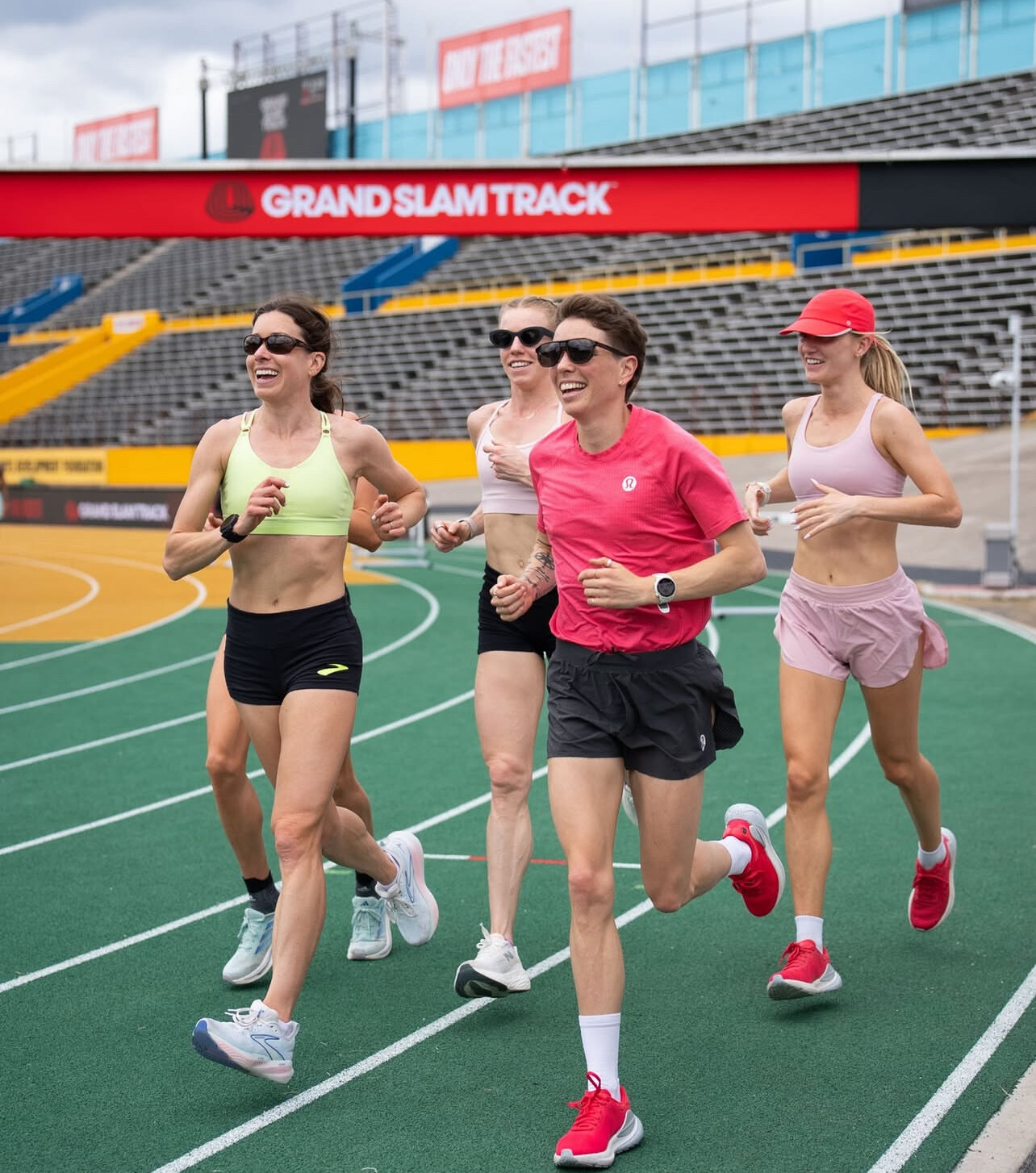
Season Schedule and Venues
The 2025 season features four high-profile meets:
1. Kingston, Jamaica – Independence Park: April 4–6
2. Miami, USA – Ansin Sports Complex: May 2–4
3. Philadelphia, USA – Franklin Field: May 30–June 1
4. Los Angeles, USA – Drake Stadium: June 27–29

These venues have been strategically selected to maximize global engagement and showcase the sport’s premier talents.
Elite Athlete Participation
The league has successfully attracted 48 elite athletes, known as “Grand Slam Racers,” who are contracted to compete in all four events. Notable participants include:
• Sydney McLaughlin-Levrone: Double Olympic champion in the 400m hurdles.
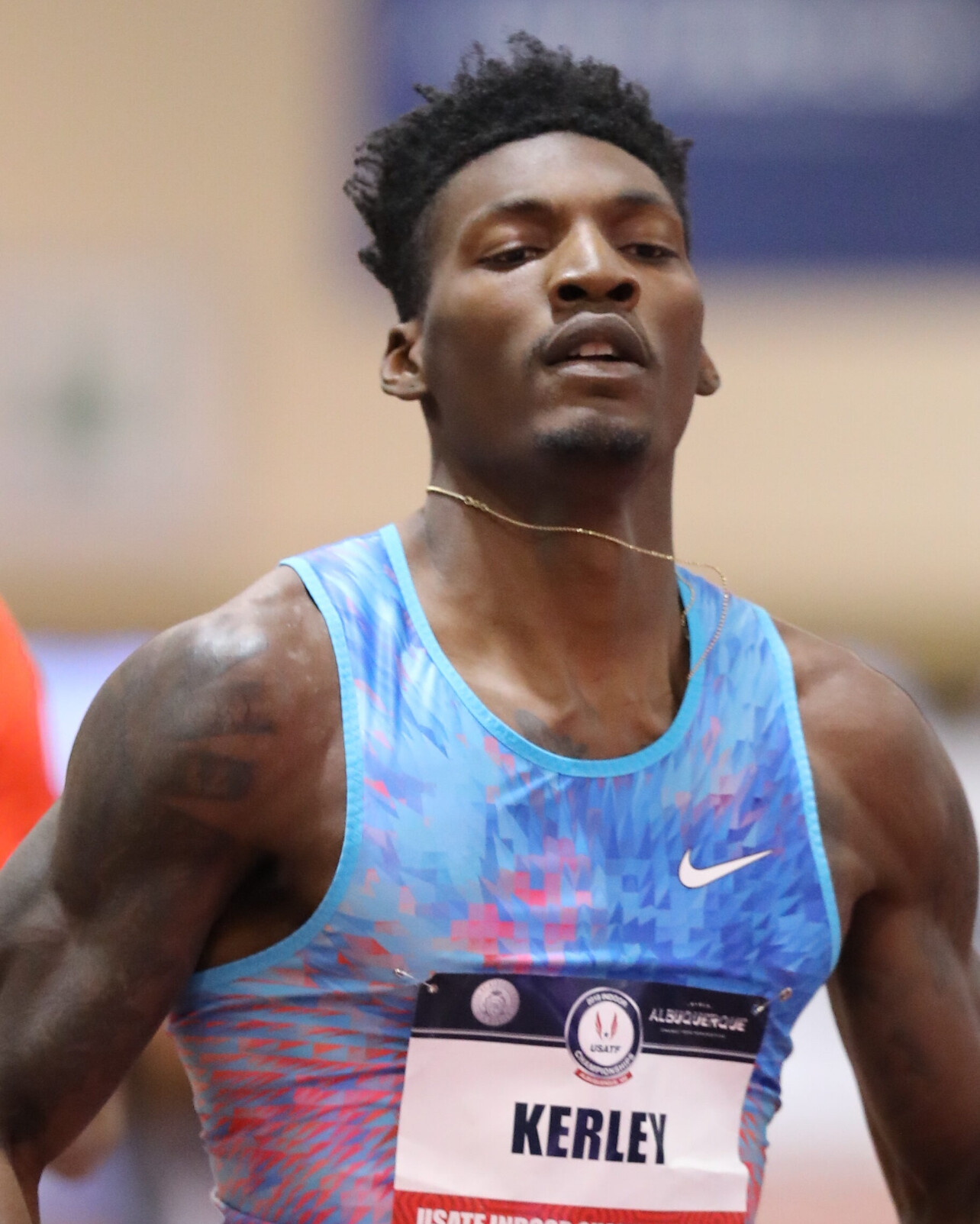
• Josh Kerr: 2023 world champion and 2024 Olympic silver medalist in the 1500m.
• Fred Kerley: World-renowned sprinter and Olympic medalist.
• Emmanuel Wanyonyi: Prominent middle-distance runner.
These athletes are poised to deliver thrilling head-to-head competitions, enhancing the sport’s appeal.
Visionary Leadership and Funding
Michael Johnson, a four-time Olympic gold medalist, spearheads the Grand Slam Track league. His vision is to create a platform that offers consistent, high-quality competitions and substantial financial rewards, addressing long-standing challenges in track and field.
The league has secured over $30 million in funding from private investments and strategic partnerships, including media rights deals with The CW Network and NBC Sports, ensuring extensive coverage and robust financial backing.
Broadcasting and Global Reach
Grand Slam Track has established broadcasting agreements with The CW Network and Peacock in the United States. Every event of each three-day meet will stream live on Peacock, with exclusive coverage of each Friday’s races, while The CW will air weekend coverage. NBC, whose parent company owns Peacock, will also air highlight specials.
The global broadcast team will be led by Steve Cram, Carrie Tollefson, and Anson Henry, with reporting from Radzi Chinyanganya and Taliyah Brooks. These collaborations aim to bring track and field to a broader audience, revitalizing interest in the sport.
With its innovative approach, substantial financial incentives, and commitment to showcasing elite talent, Grand Slam Track is set to redefine the landscape of professional track and field.
by Boris Baron
Login to leave a comment
Race to the Heart of Warsaw: The 19th Warsaw Half Marathon on March 30, 2025
The 19th Nationale-Nederlanden Warsaw Half Marathon is set to take place on March 30, 2025, inviting runners from around the globe to experience a scenic 21.0975 km (13.1 miles) course through Poland’s vibrant capital.
Course Highlights:

The race begins on the Poniatowski Bridge near the PGE Narodowy stadium. Participants will traverse iconic landmarks such as Marszałkowska Street, Krakowskie Przedmieście, and the historic Old Town, experiencing Warsaw’s rich history and modern energy. The route crosses the Vistula River twice, offering scenic views of the city, before finishing near the stadium.
Course Records:
• Men’s Record: Emanuel Giniki Gisamoda (Tanzania) set the course record with a time of 1:00:30 in 2022.
• Women’s Record: Pauline Njeru (Kenya) established the women’s course record at 1:09:06.
Event Significance:
The Warsaw Half Marathon has grown significantly since its inception. The 18th edition in 2024 attracted nearly 13,500 participants, making it the largest half marathon in Polish history. The event also hosted the 33rd Polish Half Marathon Championships, where national records were set by Monika Jackiewicz and Mateusz Kaczor.
by Boris Baron
Login to leave a comment
PZU Polmaraton Warszawski
Warsaw Half Marathon: A Premier Running Event in Poland TheWarsaw Half Marathon, officially known as thePółmaraton Warszawski, is an annual road race held in Warsaw, Poland. Since its inception in 2006, it has grown to become one of the country’s largest and most prestigious running events, attracting thousands of participants each year. Course Overview: The half marathon...
more...Alex Matata wins RAK Half Marathon, Ejgayehu Taye runs world leading time
Alex Matata of Kenya had the best win of his career in the 18th edition of the Ras Al Khaimah Half Marathon early today. But strong winds on an unusually cool morning in one of the smaller of the United Arab Emirates meant that Ejgayehu Taye’s attempt at the women’s world record was going to be blown off course, even if she had not started too fast.
The breeze and lack of a pacemaker to split the field meant that the men’s race was relatively sedate as well as over-populated in the first 10k, with 20 men still in contention at 28min 34sec. But there was no mistaking Matata in the pack, channelling Michael Jackson with a pink glove on his right hand. ‘For wiping the sweat, that’s all,’ he explained afterwards. But when colleague and race favourite Isaia Lasoi, who’d been sharing the lead with him up to then started feeling a groin strain, Matata began to assume the initiative.
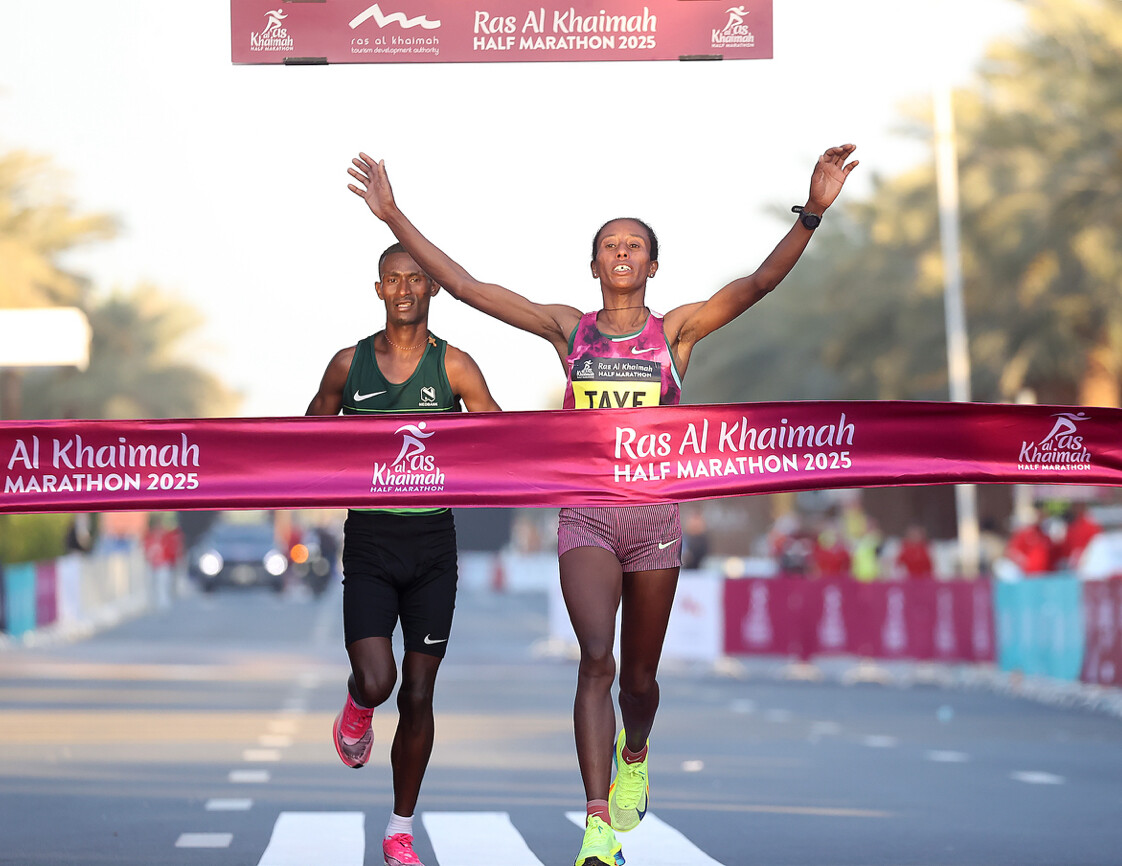
"I realised at 14k that I was stronger than the others, so I thought I had a good chance of winning,’ he said. He raised the pace such that the computed finish outside 60min was soon transformed, and his relentless front-running dropped both his rivals and the time, and he ended up taking 17sec off his personal best with a win in 59min 20sec.
Lasoi hung in well, and looked to have second place sewn up, especially when Gemechu Dida suddenly dropped back with a kilometre to run; but the Ethiopian rallied and caught the Kenyan just before the line to get second and relegate Lasoi to the same third spot as last year. A stride can be costly in this sport. While Matata took home $20,000, Dida’s last gasp second place earned him $10,000, four thousand more than Lasoi.
Matata is something of an outlier in Kenya, coming from the capital Nairobi instead of the western highlands’ hotbeds of excellence; and also being a relatively late starter in his early twenties. But when he began running well with a 61.03 clocking in the Nairobi half-marathon in 2021, he was persuaded to move up to Eldoret, the heartland of national distance running. Now at 27, a regime of 150 kilometres a week has seen him transformed into a regular winner, with four victories and three sub-60min clockings in his five half-marathons last year. And now, he’s given himself a New Year’s present. But he’s not tempted to move up to the marathon yet. ‘Not for two years. I still want to run faster at the half-marathon, in the 58 minutes and maybe 57 minutes’.
In the women’s race, Ejgayehu Taye was so confident that she could run well that she even brought her own pacemaker, Wosinew Admasu with her. And a starting temperature of 12C (54F) felt good until she headed into the wind. Although the expected contest with her colleage Girmawit Gebrzihair did not materialise (the latter dropped out) things went to plan for the first five kilometres, which she covered in 14min 57sec. But the pace and wind took their toll and she fell further behind her schedule and was grateful to win in 65.52, exactly three minutes outside her target time. ‘I was expecting to run fast, even maybe get the world record, but the wind was too strong; I felt it was pushing me back. But I’m glad to win’. Her time is a world lead for 2025.
Results, Men:
1. Alex Matata KEN 59:20
2. Gemechu Dida ETH 59:25
3. Isaia Lasoi KEN 59:26
4. Chimdessa Debele ETH 59:28
5. Gerba Dibaba ETH 59:35
6. Nibret Melak ETH 59:45
7. Hillary Kipkoech KEN 59:53
8. Tesfaye Deriba ETH 59:56
9. Haftamu Gebresilase ETH 59:56
10. Mao Ako TAN 60:28
Women:
1. Ejgayehu Taye ETH 65:52
2. Judy Kemboi KEN 66:34
3. Jesca Chelangat KEN 66:53
4. Ftaw Zeray ETH 67:05
5. Gete Alemayehu ETH 67:14
6. Adane Anmaw ETH 68:02
7. Veronica Loleo KEN 68:06
8. Lemlem Hailu ETH 68:07
9. Brillian Jepkorir KEN 68:48
10. Betelihem Afenigus ETH 69:02
Login to leave a comment
Rak Half Marathon
The Rak Al Khaimah Half Marathon is the 'world's fastest half marathon' because if you take the top 10 fastest times recorded in RAK for men (and the same for women) and find the average (for each) and then do the same with the top ten fastest recorded times across all races (you can reference the IAAF for this), the...
more...Women Take Center Stage at the 2025 RAK Half Marathon
The women’s race is set to steal the spotlight at the 18th edition of the Ras Al Khaimah Half Marathon on Saturday morning (February 1), with Ethiopian stars Girmawit Gebrzihair and Ejgayehu Taye both declaring their intent to chase the world record. Meanwhile, Kenya’s Isaia Lasoi, the fastest man in the field, is equally determined to go for victory and potentially set a new global mark himself.
The battle between the Ethiopian women promises to be fascinating, as both share a personal best of 64:14. Girmawit, who set that time when she won this race three years ago, still holds the course record. She admitted at the pre-race press conference that she surprised even herself with that performance, but after clocking a sub-30-minute 10K in Valencia just two weeks ago, she believes Letesenbet Gidey’s world record of 62:52 is within her reach.
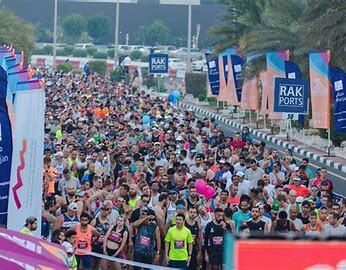
Ejgayehu, on the other hand, ran her 64:14 in her half marathon debut in Valencia three months ago. She is so confident of running fast that she has brought her own pacemaker to help push the pace. Her agent, Yonas Mekonnon, explained: “She decided to go for the world record based on her recent training. She ran just over 64 minutes in Valencia with limited mileage, having trained for no more than six weeks after the track season. Her longest run was only 25km. This time, however, she has regularly been covering more than 28km at a 3:30/km pace at altitude. Her goal in this race is the world record.”
Women have played a defining role in the nearly two-decade history of the RAK Half Marathon. While Kenya’s Sammy Wanjiru set a men’s world record in the inaugural edition in 2007, the women have since taken center stage, with world records being set by Mary Keitany and Peres Jepchirchir of Kenya, and Ababel Yeshaneh of Ethiopia.
Among the men, Lasoi is the clear favorite. With a personal best of 58:10 from Copenhagen last autumn, he is the fastest in the field by a significant margin. He is also hoping to follow in the footsteps of past RAK winners who climbed the podium before taking victory. Having finished third last year, he is eager to claim the top spot. “I’ve been running 175-190 kilometers per week in training. I’ve prepared really well and I’m ready to win,” he said. “Also, there have been some changes to the course that make it faster. I think I can go under 58 minutes, and maybe even challenge the world record.”
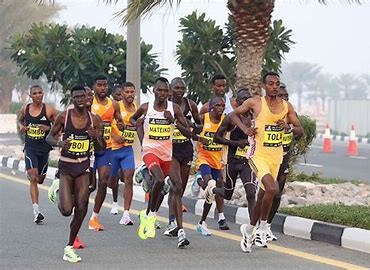
Last year’s race saw strong winds and thick mist rolling in from the sea, affecting the final stages. However, the forecast for this year couldn’t be better, with ideal racing conditions of 15-16°C (60°F) expected for the elite start at 6:40 AM.
Now in their second year of overseeing the RAK Half, the long-time Dubai Marathon organizers, Pace Events, have significantly boosted participation across all events, including the 2K, 5K, and 10K races, pushing total registrations close to 10,000. Iyad Rasbey, VP of the RAK Tourism Development Authority, remarked, “When the event began in 2007, we were aiming for 2,500-3,000 participants. To be nearing 10,000 is extraordinary.”
With perfect conditions, a deep field, and multiple world record ambitions, the 2025 RAK Half Marathon is poised for a historic edition.
Login to leave a comment
Rak Half Marathon
The Rak Al Khaimah Half Marathon is the 'world's fastest half marathon' because if you take the top 10 fastest times recorded in RAK for men (and the same for women) and find the average (for each) and then do the same with the top ten fastest recorded times across all races (you can reference the IAAF for this), the...
more...Kebede, Kipruto, Kosgei and Cheptegei announced for Tokyo Marathon
Sutume Kebede and Benson Kipruto will defend their titles when they form part of strong fields announced for the Tokyo Marathon – a World Athletics Platinum Label road race – on 2 March.
Ethiopia’s Kebede, who set a Japanese all-comers' record of 2:15:55 when winning in Tokyo last year, is set to be joined by five other women to have dipped under 2:18 in a field that features a total of 11 sub-2:20 runners.
Two of them are also formers winners, with Brigid Kosgei and Rosemary Wanjiru returning after their respective victories in 2022 and 2023.
Kenya’s former world record-holder Kosgei is the fastest in the field with her PB of 2:14:04 set in Chicago in 2019, while her compatriot Wanjiru ran 2:16:14 when finishing runner-up to Kebede in Tokyo last year.
Among those joining them are Ethiopia’s Tigist Ketema, who ran 2:16:07 on her debut in Dubai just over a year ago, and multiple global gold medallist Tirunesh Dibaba.
Their compatriots Hawi Feysa, who won in Frankfurt in October in 2:17:25, 2022 world champion Gotytom Gebreslase and 2021 London Marathon runner-up Degitu Azimeraw have also been announced, along with Japan’s Ai Hosoda and Yuka Ando.
Kenya’s Kipruto, who also set a Japanese all-comers' record when winning in Tokyo last year in 2:02:16, will be joined in the men’s race by Uganda’s Joshua Cheptegei, the world 5000m and 10,000m record-holder who returns to the roads to contest his second marathon after his 2:08:59 debut in Valencia in 2023.
The field features six sub-2:04 athletes, with Kipruto joined by Ethiopia’s Deresa Geleta, the Olympic fifth-place finisher and Valencia Marathon runner-up who has a best of 2:02:38, plus two-time Tokyo Marathon winner Birhanu Legese, Tadese Takele and Dawit Wolde, as well as Kenya’s Vincent Kipkemoi Ngetich, who was third last year.
The line-up also includes Ethiopia’s world bronze medallist Leul Gebresilase, Uganda’s Stephen Kissa, Japan’s Yohei Ikeda and Akira Akasaki, and Kenya’s Benard Koech, who makes his marathon debut.
Elite fields
WomenBrigid Kosgei (KEN) 2:14:04Sutume Kebede (ETH) 2:15:55Tigist Ketema (ETH) 2:16:07Rosemary Wanjiru (KEN) 2:16:14Hawi Feysa (ETH) 2:17:25Tirunesh Dibaba (ETH) 2:17:56Degitu Azimeraw (ETH) 2:17:58Gotytom Gebreslase (ETH) 2:18:11Winfridah Moraa Moseti (KEN) 2:18:25Mestawut Fikir (ETH) 2:18:48Magdalyne Masai (KEN) 2:18:58Ai Hosoda (JPN) 2:20:31Desi Jisa Mokonin (BRN) 2:20:47Yuka Ando (JPN) 2:21:18Jessica Stenson (AUS) 2:24:01Zhang Deshun (CHN) 2:24:05Rie Kawauchi (JPN) 2:25:35Kaori Morita (JPN) 2:26:31Khishigsaikhan Galbadrakh (MGL) 2:26:32Shiho Kaneshige (JPN) 2:28:51
MenBenson Kipruto (KEN) 2:02:16Deresa Geleta (ETH) 2:02:38Birhanu Legese (ETH) 2:02:48Vincent Kipkemoi Ngetich (KEN) 2:03:13Tadese Takele (ETH) 2:03:24Dawit Wolde (ETH) 2:03:48Leul Gebresilase (ETH) 2:04:02Stephen Kissa (UGA) 2:04:48Tsegaye Getachew (ETH) 2:04:49Amedework Walelegn (ETH) 2:04:50Titus Kipruto (KEN) 2:04:54Yohei Ikeda (JPN) 2:05:12Suguru Osako (JPN) 2:05:29Mulugeta Asefa Uma (ETH) 2:05:33Ichitaka Yamashita (JPN) 2:05:51Kenya Sonota (JPN) 2:05:59Hiroto Inoue (JPN) 2:06:47He Jie (CHN) 2:06:57Vincent Raimoi (KEN) 2:07:01Hendrik Pfeiffer (GER) 2:07:14Akira Akasaki (JPN) 2:07:32Suldan Hassan (SWE) 2:07:36Joshua Cheptegei (UGA) 2:08:59Benard Koech (KEN) debutGeoffrey Toroitich (KEN) debut
Login to leave a comment
Ejgayehu Taye and Isaia Lasoi target record times at RAK Half Marathon
Ejgayehu Taye and Isaia Lasoi are leading contenders to follow a quartet of stars who have set world records in the Ras Al Khaimah Half Marathon whose 18th running comes on Saturday, February 1. Taye of Ethiopia and Lasoi of Kenya reckon that they are running into the sort of form that suggests fast times a week Saturday.
World championships bronze medallist indoors and out, and a top eight finisher at the Olympic Games, Taye has rarely raced on the road, but if she can bring her track form to Ras Al Khaimah, she would clearly be a leading contender for victory in 2025; the more so since in her sole performance at the half marathon in Valencia three months ago, she finished ahead of last year’s RAK winner Tsigie Gebrselama.
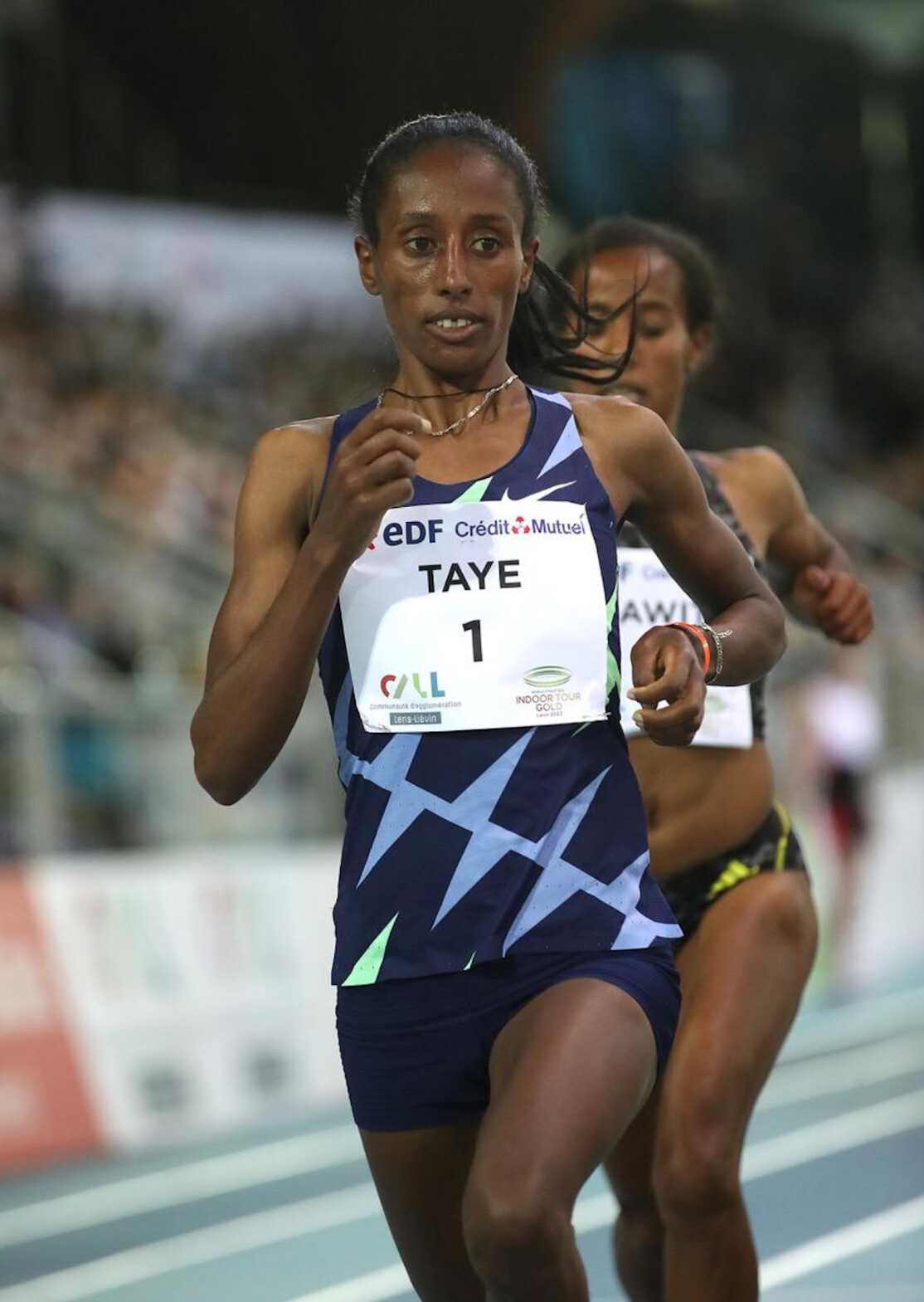
Taye ran 64min 14sec in Valencia on what her manager reports was less than adequate preparation. Yonas Mekonnon says, ‘Taye decided to try for the world record based on her recent training. RAK ‘half’ will be her second half marathon and when she compared both training based on the quality and volume, the hope for RAK half is much better. She ran just over 64minutes in Valencia without good enough mileage. She was trained really for not more than six weeks after the track season was over and the longest training was 25km. However, this time she’s regularly been covering more than 28km with 3min 30sec pace at altitude. Her goal in this race is the world record’.
The Ras Al Khaimah Half Marathon has regularly returned world record times since Sammy Wanjiru of Kenya ran 58min 53sec in the inaugural event in 2007. The women then took over with luminaries like Mary Keitany, Peres Chepchirchir and Ababel Yeshaneh setting women’s records during the last decade. But such have been the advances in shoe technology and the boost of energy gels in the interim that the current men’s record is over a minute faster, with the 57:30 that Yomif Kejelcha clocked in Valencia three months ago. The women’s record is an equally formidable 62:52 set by his colleague Letesenbet Gidey at the same race over three years ago.
In contrast, the RAK record is eminently breachable, at least on the women’s side. As it happens, Taye’s debut 64:14 is exactly the same as the RAK course record time, set in 2022 by another colleague Girmawit Gebrzihair who runs again next weekend. Gebrzihair looks to be in prime form too, following a rapid 29:34 for the Valencia 10k on January 12.
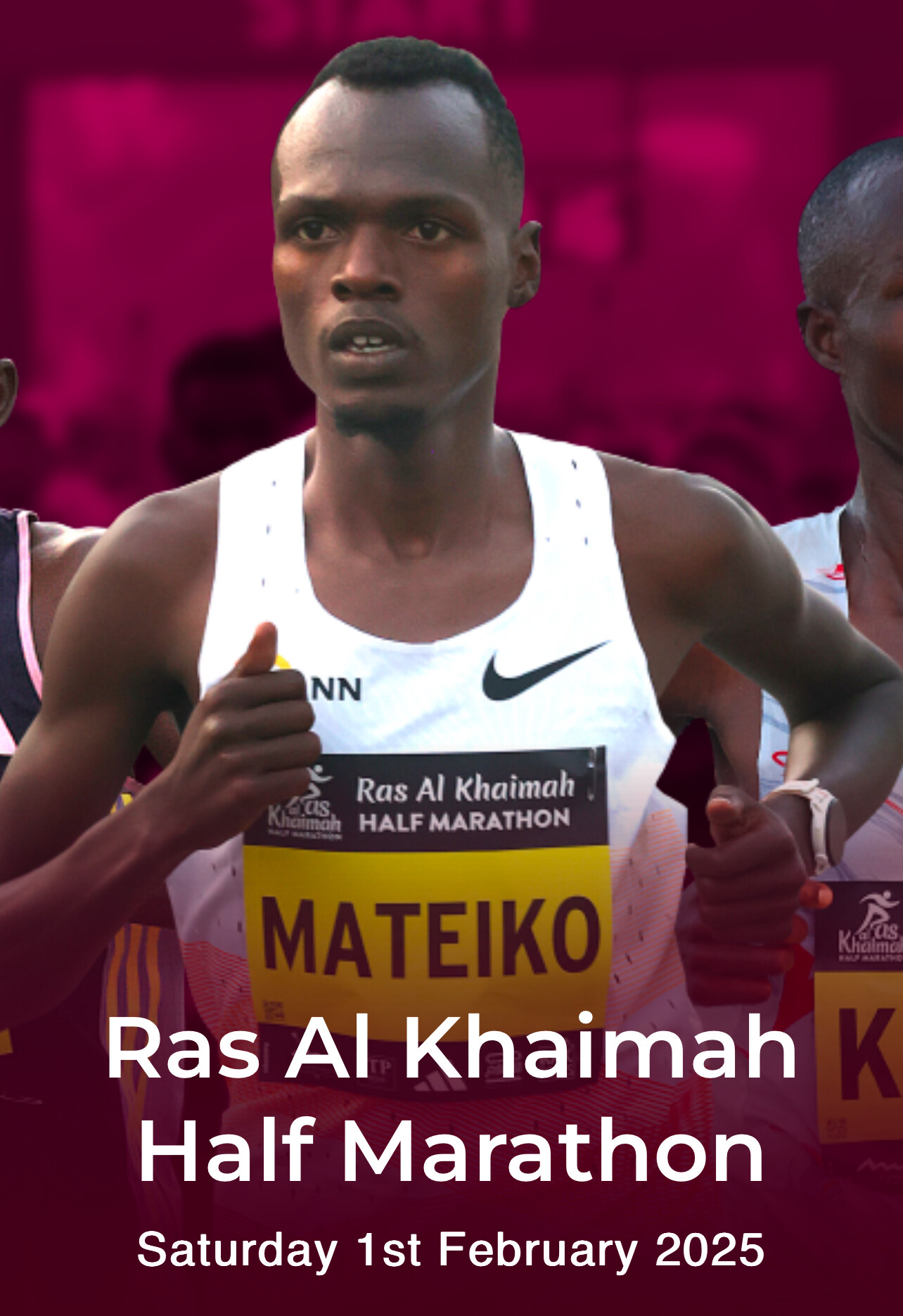
In the men’s race, Lasoi is hoping to emulate recent top three finishers who returned to win the following year. Lasoi came through for third last year, and is nothing if not ambitious. He clocked 58:10 in Copenhagen last autumn, and stated badly afterwards, ‘Eager to run 57 minutes in half marathon in future’.
This is the second year that RAK half-marathon will be overseen by Pace Events, long time organiser of the neighbouring Dubai Marathon. Race Director Peter Connerton says, ‘We’re looking to build on the success of last year’s event, and continue to bring both fast, exciting elite racing to Ras Al Khaimah, in addition to a well-supported popular race, supported by the community’.
Login to leave a comment
Rak Half Marathon
The Rak Al Khaimah Half Marathon is the 'world's fastest half marathon' because if you take the top 10 fastest times recorded in RAK for men (and the same for women) and find the average (for each) and then do the same with the top ten fastest recorded times across all races (you can reference the IAAF for this), the...
more...5 icky running habits to drop in 2025
The new year often comes with a wave of resolutions and the familiar chorus of “New year, new me.” Sure–sticking to these promises is much easier said than done, but it’s worth a try–especially when some running habits don’t deserve a spot in your 2025 plans. Here are five habits runners should ditch while striding into this fresh year of training.
1. Comparing your stats


Whether you’re racing your training partners during intervals or getting lost in a Strava rabbit hole chasing kudos, it’s time to pump the brakes. Running isn’t always a competition, and continuously pushing the pace can sour relationships with your running buddies. No one enjoys being dipped at the finish line of a workout, especially when they’re expecting a chill session.
Remember, comparing stats–be it heart rate or paces–won’t always reveal who is the better athlete. Everyone’s body and running style is different; the workout warrior might not be as strong on race day. Moreover, constantly comparing yourself to your peers will take a toll on your mental health. Focusing on your own progress can allow running to continue being fun and fulfilling.
2. Running through pain
We’ve all done it–brushing off pain as mere stiffness or a minor tweak. But pushing through is a fast track to injury. Your running buddies don’t want to hear your complaints now, and they’ll want to hear them even less if that tweak turns into a major setback.
Taking a day or two off, or even swapping out running for a bike ride or fast hike (i.e., cross-training) could save you from weeks on the sidelines. Listen to your body and leave running through pain in the past.
3. Not washing hats and headbands
Running hats and headbands, usually lost in the bottom of your bag, often get overlooked on laundry day, leaving you with a smelly accessory you’re too embarrassed to admit hasn’t been washed in weeks. It’s official: this is the year we show our headwear as much love as our shirts and shorts. You can even go as far as investing in a couple of extras to keep the rotation fresh; your scalp–and teammates–will thank you.
4. Forgetting sunscreen
Runners are notorious for skipping sun protection. Studies show that runners, especially marathoners, are at a higher risk for skin cancer, due to prolonged sun exposure. Make sunscreen as essential as your winter gloves and dry socks. Toss a bottle into your running bag so you’re always prepared–2025 isn’t the year for excuses.
5. Skipping strength
Complaining about injuries but skipping the weight room? That’s so last year. While strength isn’t as critical to performance for endurance athletes as it is for sprinters, it’s still a key ingredient for injury prevention–for all runners.
Building muscles that support and stabilize joints will help your body handle the repetitive impact of running. Strength isn’t a huge commitment, either; two to three brief sessions per week is the perfect way to invest in your longevity as a runner.
Login to leave a comment
Osaka International Women's Marathon Elite Fields announced
The elite field for the Jan. 26 Osaka International Women's Marathon is out, and it's a really short list, especially given Osaka International's World Athletics platinum label status. There's last year's winner Workenesh Edesa, 3rd-placer Mizuki Matsuda, 7th-placer Natsumi Matsushita, 9th-placer Madoka Nakano and 12th-placer Kana Kobayashi, top Japanese Paris Olympic marathon placer Yuka Suzuki, veteran Kenyan-born Israeli Lonah Chemtai Salpeter, the debuting Nanaka Izawa, and that's about it.
Workenesh outran Honami Maeda last year, both going under 2:19 and Workenesh getting the win in 2:18:51. She has to be viewed as the favorite. Salpeter has run as fast as 2:17:45 before, but she hasn't run under 2:25 in the marathon or under 1:10 in the half marathon since 2022, so there's not much reason to think she's going to be competitive in a faster race here. Matsuda and Suzuki both ran PBs in their last marathons, Matsuda a 2:20:42 in Berlin this fall and Suzuki a 2:24:02 while finishing 6th in the Paris Olympics. Kobayashi and Izawa are interesting, Kobayashi having run 2:29:44 last year as a non-track team student at Waseda University and then winning Hofu at the beginning of December in a 2:24:59 CR, and Izawa fresh off a great 1:08:25 PB at the Sanyo Ladies Half Marathon this month.
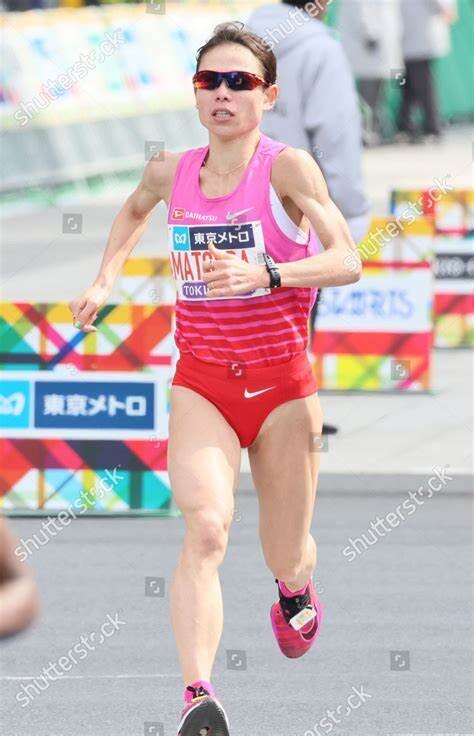
The Osaka Half Marathon is also happening in parallel with the marathon, and the fields there are decently competitive as always. Yuka Ando won the women's race in Osaka last year in a 1:08:18 PB and is back this time, facing sub-70 runner Sakiho Tsutsui, Mongolian NR holder Khishigsaikhan Galbadrakh and more. 1:00:41 Ethiopian Gebrie Erikhun leads a domestic men's field that includes Japan-based Patrick Mathenge Wambui and a million 61-minute Japanese men.
44th Osaka International Women's Marathon
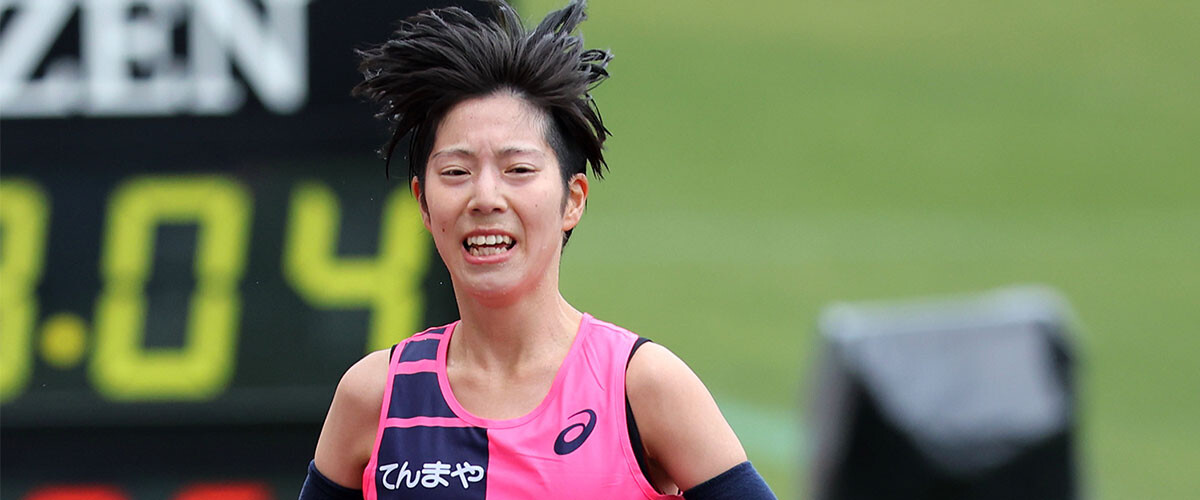
Elite Field Highlights
Lonah Chemtai Salpeter (Israel) - 2:18:45 (Nagoya 2022)
Workenesh Edesa (Ethiopia) - 2:18:51 (Osaka Women's 2024)
Mizuki Matsuda (Daihatsu) - 2:20:42 (Berlin 2024)
Natsumi Matsushita (Tenmaya) - 2:23:05 (Osaka Women's 2022)
Yuka Suzuki (Daiichi Seimei) - 2:24:02 (Paris Olympics 2024)
Kana Kobayashi (Otsuka Seiyaku) - 2:24:59 (Hofu 2024)
Yumi Yoshikawa (Chiba T&F Assoc.) - 2:25:20 (Osaka Women's 2023)
Chiharu Suzuki (Hitachi) - 2:25:59 (Osaka Women's 2023)
Madoka Nakano (Iwatani Sangyo) - 2:26:50 (Osaka Women's 2024)
Mao Kiyota (Suzuki) - 2:29:20 (Nagoya 2023)
Ayano Ikeuchi (Denso) - 2:32:26 (Seoul 2024)
Ayano Ikemitsu (Kagoshima Ginko) - 2:33:29 (Nagoya 2023)
Debut
Nanaka Izawa (Starts) - 1:08:25 (Sanyo Half 2024)
Rio Einaga (Osaka Gakuin Univ.) - 1:11:03 (National University Half 2023)
Kurumi Yoda (Osaka Gakuin Univ.) - 1:12:46 (Kansai University Half 2024)
Nanako Miwa (Kansai Gaikokugo Univ.) - 1:14:37 (Kansai University Half 2023)
by Brett Larner
Login to leave a comment
Osaka International Womens Marathon
The Osaka International Ladies Marathon is an annual marathon road race for women over the classic distance of 42.195 kilometres which is held on the 4th or 5th Sunday of January in the city of Osaka, Japan, and hosted by Japan Association of Athletics Federations, Kansai Telecasting Corporation, the Sankei Shimbun, Sankei Sports, Radio Osaka and Osaka City. The first...
more...Evans Chebet reveals secrets behind his remarkable marathon success
Evans Chebet has disclosed the key principles behind his remarkable marathon success, sharing insights into his disciplined training, perseverance, and the challenges that shaped his journey to global acclaim.
Former Valencia Marathon champion Evans Chebet has become a towering figure in the world of distance running, boasting an illustrious career with 30 marathons under his belt and three World Major Marathon titles to his name.
From humble beginnings in Elgeyo Marakwet County to the global stage, Chebet’s journey to the top is a shining example of determination, dedication and faith.
Reflecting on his achievements, Chebet, who has conquered courses in Boston and New York, says his success comes down to a simple but powerful mantra.
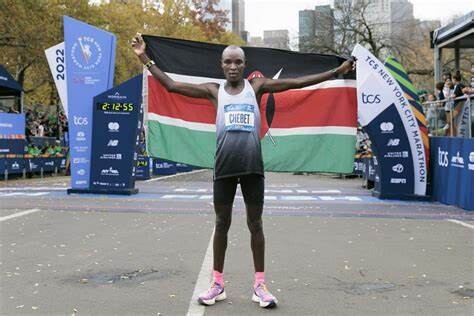
“The young upcoming athletes should exercise patience in their careers and not take shortcuts. My life story is a testament to that. I did not go past primary school, but the number of countries I have visited are numerous,” he said as per Star.
Chebet attributes much of his triumphs to unwavering discipline and a grueling training regimen.
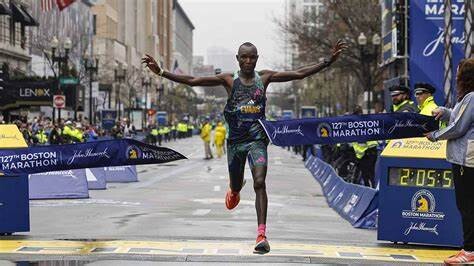
The 35-year-old marathoner has no background in track running, focusing instead on road races from the start to provide for his family.
This unique approach was shaped by financial hardships that forced him to leave school at an early age to support his widowed mother and nine siblings.
“My father died just before I was born, leaving my mother to shoulder the burden of raising 10 children. I had to drop out of school while in Class Four and start burning charcoal to help her,” he recalled.
“Life was really hard, but I knew as a man, I had to do everything to support my family.”
Chebet’s turning point came in 2005 when his uncle, Isaac Koech, introduced him to running and bought him his first pair of training shoes.
Guided by his uncle and inspired by his late father, who had been a runner, Chebet began training with unwavering determination.
His big break came in 2006 when coach Claudio Berardelli invited him to join the Rosa camp in Kaptagat, where he honed his skills for the global stage.
“Coach Berardelli recruited me and began training me. In so many ways, he has moulded me into the man I am today,” Chebet said, acknowledging the critical role his mentor played in shaping his career.
Over the years, Chebet’s path to glory has been marked by strategic planning and meticulous preparation.
For instance, leading up to his impressive performance at the New York Marathon, he focused intensively on hill work.
“I had trained adequately before the New York race. My main area of focus was hill work and long runs. I used to do 20km to 30km of hill work every day as part of my training,” he revealed.
Despite his rigorous training and consistent results, Chebet has faced setbacks, including being overlooked for Kenya’s Olympic team.
However, he remains optimistic, using each challenge as motivation to push harder.
“It was heartbreaking not to have been included in the team for the Olympics. I know if I had been there, I would have no doubt come back home with gold,” he said.
Chebet’s career highlights include victories at the 2019 Buenos Aires Marathon, the 2020 Lake Biwa and Valencia Marathons, and back-to-back wins at the Boston Marathon in 2022 and 2023.
His win in New York in 2022 further cemented his status as a world-class athlete.
“My target next season is to win both New York and Boston. It’s something I know I am capable of, and I will work towards it,” he said, expressing his desire to continue building his legacy in 2025.
Balancing his career and family life, Chebet draws inspiration from his five children and his wife, Brillian Jepkorir, who is also an athlete.
“I hope my children will take up running in the future,” he said.
To aspiring runners, Chebet offers invaluable advice rooted in his life experience.
“Be prayerful and learn to invest wisely to secure your futures. More importantly, exercise patience and avoid shortcuts. My journey proves that success is possible even when starting from nothing."
by Festus Chuma
Login to leave a comment
Greeks Pitsolis and Noula win 41. Authentic Athens Marathon 2024
Charalambos Pitsolis finished first in the 41st Authentic Marathon, as he covered the 42,195 meters of the historic course in 2 hours, 18 minutes and 56 seconds.Panagiotis Karaiskos finished in second place (2:19:50) and Giorgos Benis third (2:21.40).
The first woman to finish was Stamatia Noula, who covered the distance in 2 hours, 40 minutes and 19 seconds, followed by Gloria Privilezio (2:41:58) and Panagiota Vlahaki (2:47:24).

The 41st Authentic Athens Marathon (AMA2024) kicked off on Sunday, at 09:00, with 21,000 runners expected to cover the historic route from the Marathon to the Panathenaic Stadium.
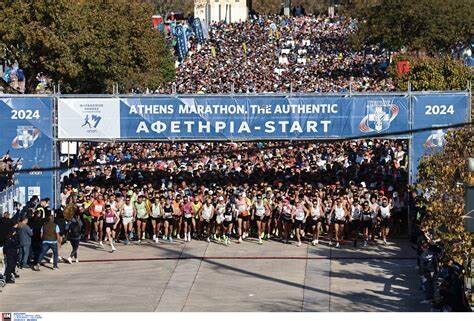
This year marks 128 years since the first marathon held during the revival of the Olympic Games.
The 41st “Athens Marathon, the Authentic” is a race inspired by the journey of the hoplite soldier who carried the message of victory to Athens after the Battle of Marathon. In the spring of 1896, in the first modern Games, athletes from five countries lined up at the Marathon bridge, at the starting point, to cross the track to the Panathenaic Stadium. The thread was first cut by the Greek athlete Spyros Louis, in a victory that went down in history symbolizing effort, overcoming physical and mental limits, as well as endurance. The presence of the experienced, also Greek runner, Harilaos Vasilakos, who finished second and together with Louis became the first two winners in the History of the Road Marathon was also important.
In its current form, it has been held since 1983, dedicated to the great Greek doctor, Balkan athlete and pacifist Grigoris Lambrakis.
Login to leave a comment
Athens Marathon
The Athens Classic (authentic) Marathon is an annual marathon road race held in Athens, Greece, normally in early November. The race attracted 43.000 competitors in 2015 of which 16.000 were for the 42.195 km course, both numbers being an all-time record for the event. The rest of the runners competed in the concurrent 5 and 10 kilometers road races and...
more...2024 USATF 5K: Ahmed Muhumed And Annie Rodenfels Win
Annie Rodenfels went back-to-back while Ahmed Muhumed claimed his second US title of the year at the 2024 USATF 5K Road Championships on Saturday morning in Central Park. Rodenfels, who runs for the B.A.A. High Performance Team, broke away from Emily Venters and Emma Grace Hurley in the final mile to win in 15:20.
Muhumed, who won the US 8k road title in July and was the runner-up here last year, dropped the field with a hard move at 2 miles and held off a late charge from Sam Prakel to win in 13:38 to Prakel’s 13:39.
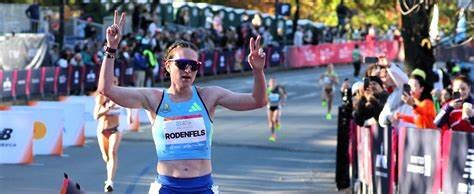
Top 10 results
Men

1. Ahmed Muhumed, HOKA NAZ Elite 13:38
2. Sam Prakel, adidas 13:39
3. Brian Barraza, Roots Running Project 13:42
4. Kirubel Erassa, unattached 13:44
5. Hillary Bor, HOKA One One 13:45
6. Anthony Rotich, US Army 13:48
7. Drew Bosley, unattached 13:49
8. Afewerki Zeru, McKirdy Trained 13:52
9. Abbabiya Simbassa, Under Armour 13:57
10. Morgan Beadlescomb, adidas 13:59
Women
1. Annie Rodenfels, B.A.A. 15:20
2. Emily Venters, Nike 15:25
3. Emma Grace Hurley, Asics 15:31
4. Bailey Hertenstein, Nike 15:32
5. Susanna Sullivan, Brooks 15:36
6. Abby Nichols, HOKA NAZ Elite 15:41
7. Paige Wood, HOKA NAZ Elite 15:41
8. Taylor Roe, Puma 15:43
9. Natosha Rogers, Puma 15:45
10. Molly Born, Puma 15:47
by Jonathan Gault
Login to leave a comment
Dash to the Finish Line
Be a part of the world-famous TCS New York City Marathon excitement, run through the streets of Manhattan, and finish at the famed Marathon finish line in Central Park—without running 26.2 miles! On TCS New York City Marathon Saturday, our NYRR Dash to the Finish Line 5K (3.1 miles) will take place for all runners who want to join in...
more...Defending champions Morgan Beadlescomb and Annie Rodenfels return to the Abbott Dash to the Finish Line 5k
New York City Marathon weekend kicks off with a much-anticipated USATF 5 km Championships at the Abbott Dash to the Finish Line 5k on Saturday, November 2, taking place the day before the 53rd running of the TCS New York City Marathon.
The USATF 5 km Championships at the Abbott Dash to the Finish Line 5k are the 11th stop on the 2024 USATF Running Circuit. Live coverage of this year’s championships will be broadcast on USATF.TV, starting at 8:20 a.m. ET, with the men’s race going off at 8:30 a.m. and the women starting five minutes after at 8:35 a.m.
Defending champions Morgan Beadlescomb and Annie Rodenfels return to the streets of Midtown Manhattan after winning last year’s USATF 5km Championships in their respective races.
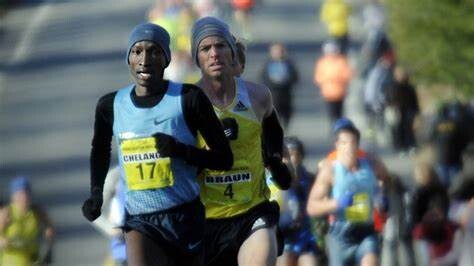
The former Michigan State Spartan Beadlescomb surged away from Ahmed Muhumed, Tai Dinger and Daniel Schaffer in the final stretch to win last year’s men’s title in 13:44, besting the field by a comfortable three seconds to claim his first USATF crown.
Looking to become the first men’s repeat champion since Ben True in 2011-12 when the USATF 5 km Championships were held in Providence, R.I., Beadlescomb will take on another tough field that will feature Muhumed (second), Schaffer (fourth) and Brian Barazza (fifth) from last year’s race, as well as a handful of others with impressive credentials.
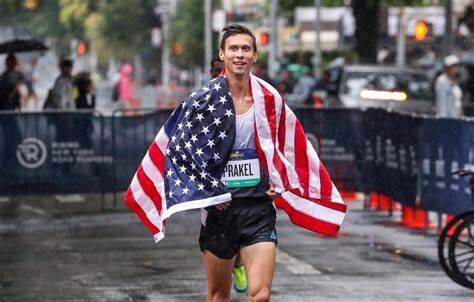
Beadlescomb could also become the first male athlete to win two USATF 5 km Championships titles at the Abbott Dash to the Finish Line 5k course, along with 2019 USATF 5 km champion Anthony Rotich making his way back into the field for the first time since winning the 2019 title.
Muhumed is the only competitor in the field that has won a USATF title this year on the USATF Running Circuit, winning the USATF 8 km Championships back in July in Kingsport, Tennessee. The USATF 8 km Championships were also the last time Muhumed raced this year.
Sam Chelanga, Sam Prakel and Josh Thompson join Beadlescomb, Rotich and Muhumed as three more USATF national champions set to race, bringing the total to six national champions in Saturday’s field.
Chelanga, a two-time USATF champion, will go after his first USATF national title since 2016 when he won the USATF 10 Mile title. He’s raced twice this season on the USATF Running Circuit, finishing third at the USATF 10 km Championships and fourth at the USATF 20 km Championships.
Prakel, the 2023 USATF Road Mile champion, and Thompson, the 2020 USATF Indoor 1500 champion, are both eyeing a second national title of their own.
Parlympian and New York native Michael Brannigan is slated to race after competing for the United States at the 2024 Paris Paralympic Games, where he came away with his second Parlympic medal in the men’s T20 1500, earning bronze to go with his 2016 gold from the Rio Games.
Derek Johnson, Titus Winder and Kirubel Erassa will be other names to watch out for in the men’s race.
Rodenfels earned her first USATF national title by defeating Rachel Smith by four seconds in last year’s women’s race, running 15:22.
Rodenfels has since won another USATF national title earlier this season, winning the 2024 USATF 6 km Championship race by 13 seconds on July 13 in Canton, Ohio.
With a win on Saturday, Rodenfels could join Weini Kelati as the only competitors to repeat as USATF 5 km champions at the Abbott Dash to the Finish Line 5k course and the sixth woman to complete consecutive national titles in the history of the USATF 5 km Championships.
Challenging Rodenfels will be Emma Grace Hurley, who will be racing in her seventh USATF Running Circuit race this year, with her latest effort being a third-place finish at the USATF 10 km Championships in Northport, New York, on September 21.
Hurley, who was ninth at last year’s USATF 5 km Championships, has finished as high as second place in two USATF Running Circuit races this year at the USATF 8 km Championships and the USATF Cross Country Championships.
Susanna Sullivan and Natosha Rogers are a pair of veterans coming off great races in their recent outings looking to mix it up in the top half of the field.
Sullivan completed this year’s Chicago Marathon as the top American, running a lifetime best of 2:21:56 to finish seventh overall, making her the 10th-fastest American marathoner in history.
Rogers won the Medtronic Twin Cities 10 Mile in St. Paul/Minneapolis, Minnesota, on October 6, in 52:29 just two weeks after finishing second at the USATF 10 km Championships.
Logan Jolly, Cailie Logue and Elena Hayday are other competitors entered in this year’s USATF 5 km Championships with past results on this year’s USATF Running Circuit.
2023 Cross Country champion Katie Wasserman adds some intrigue to the field, running in her first road race since 2022.
About the USATF Running Circuit
The USATF Running Circuit is a USATF road series featuring USATF championships from one mile through marathon and consistently attracts the best American distance runners with more than $500,000 awarded in total prize money. A total of $60,000 in prize money will be awarded at the USATF 5 km Championships.
The first ten U.S. runners earn points at each USATF Running Circuit race. For the USATF 5 km Championships, scoring is set as 15 for first, 12 for second, 10 for third, 7, 6, 5, 4, 3, 2, and 1, with those earning the most points receiving prize money at the end of the series.
The mission of the USATF Running Circuit is to showcase, support and promote U.S. runners. Since its inception in 1995, the USATF Running Circuit and its race have provided over $7 million to U.S. Distance runners.
by Keenan Gray
Login to leave a comment
Dash to the Finish Line
Be a part of the world-famous TCS New York City Marathon excitement, run through the streets of Manhattan, and finish at the famed Marathon finish line in Central Park—without running 26.2 miles! On TCS New York City Marathon Saturday, our NYRR Dash to the Finish Line 5K (3.1 miles) will take place for all runners who want to join in...
more...Loice Chemnung smashes course record at Tokyo Legacy Half Marathon
Loice Chemnung has set a new course record at the Tokyo Legacy Half Marathon leading a strong Kenyan performance.
Loice Chemnung etched her name into the record books after a stunning performance at the third edition of the Tokyo Legacy Half Marathon held on Sunday at the iconic Japan National Stadium.
The 27-year-old Kenyan long-distance runner broke the course record in style, clocking an impressive time of 1:07:27, significantly improving the previous mark and showcasing her exceptional talent.

Chemnung, who entered the race with the fastest time on paper—1:05:58, set earlier this year at the Málaga Half Marathon—lived up to expectations by leading from the front.
The 2014 World U20 5000m fifth-place finisher displayed her strength and determination as she ran a near-flawless race.
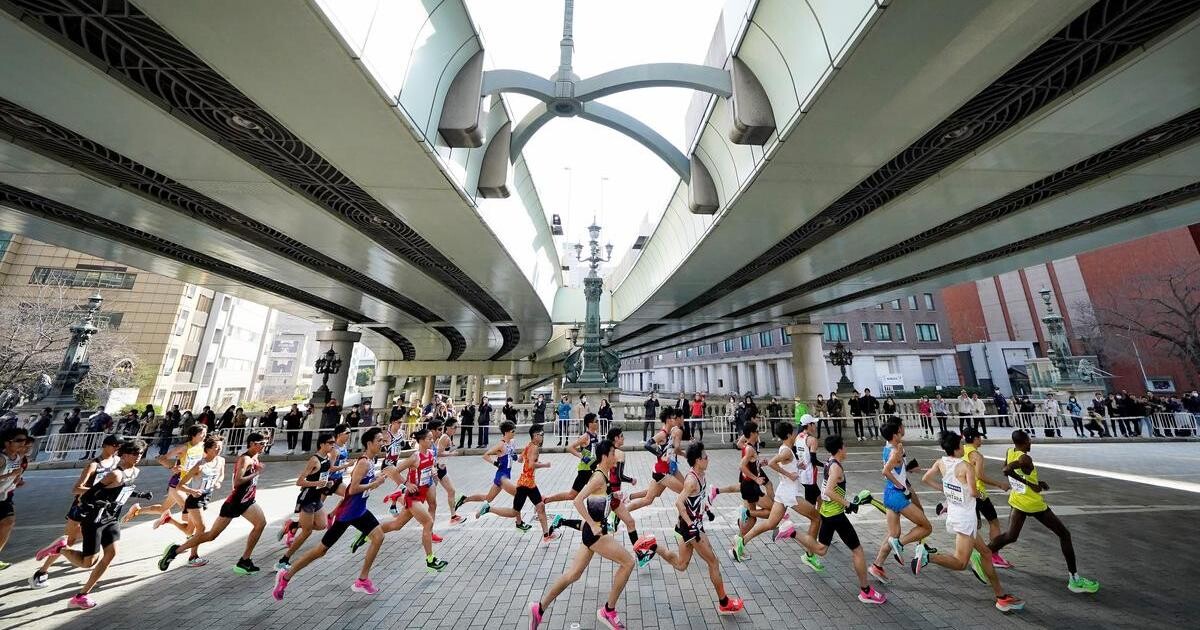
She crossed the finish line in a new course record of 1:07:27 obliterating the previous record and making her mark in the international running scene.
Her performance left a gap of almost four minutes between herself and the second-place finisher, Mao Kiyota of Japan.
Kiyota, the 2015 Asian 5000m bronze medalist, put up a valiant effort but could only manage 1:11:29, a distant second.
Meanwhile, Mongolia's Khishigsaikhan Galbadrakh rounded out the top three, clocking 1:12:12 to claim the final spot on the podium.
Chemnung’s dominance in the women's race set the tone for a thrilling day of racing but it was not just her success that stood out.
In the men's category, Kenyan runners continued their tradition of excellence. Defending champion Evans Keitany, who had won the title the previous year, saw his compatriot Amos Kurgat steal the show.
Kurgat ran a phenomenal race, clocking 59:52 and smashing the previous course record of 1:00:10, set by Vincent Kipkemoi during the inaugural race in 2022.
Kurgat’s performance was nothing short of spectacular, becoming the first man to run sub-60 minutes in the history of the event.
His victory was followed by another Kenyan, Bedan Karoki, who clocked 1:00:38 to secure second place, improving on his third-place finish from last year.
Paul Kuira, also of Kenya, came in third, crossing the line in 1:00:49. All three podium finishers managed to run faster than the previous course record, further cementing the dominance of Kenyan runners at this year's race.
Elsewhere, in Spain, Uganda’s Ezekiel Mutai won the Bilbao Half Marathon, clocking 1:01:13.
However, it was the Kenyan duo of Wilson Kiprono Too and Josphat Kiprono Menjo who grabbed headlines by finishing second and third, respectively.
Kiprono Too clocked 1:01:24, while Menjo came home in a personal best time of 1:01:28, rounding off a strong showing for Kenyan athletes on the international stage.
The women's race in Bilbao was another moment of glory for Kenya.
Purity Kajuju Gitonga, making her debut at the half marathon distance, clinched the title with an impressive time of 1:08:52.
Gitonga led a Kenyan sweep of the podium, with Sheila Cherotich finishing second in 1:10:34, and Sheila Jeruto taking third in 1:13:27.
All three athletes were racing their first half marathon and managed to dominate the field, underscoring Kenya's depth of talent in long-distance running.
by Festus Chuma
Login to leave a comment
Tokyo Legacy Half Marathon
The Tokyo Legacy Half Marathon celebrates Tokyo's Olympic heritage, offering runners a scenic course through iconic landmarks, including start and finish at teh Olympic stadium. It attracts participants worldwide, promoting sportsmanship and cultural exchange. The event highlights Tokyo's vibrant atmosphere, combining athletic challenge with city exploration, making it a memorable experience for both local and international runners....
more...Kenyans target a double hat-trick in Munich
Kenya’s elite runners target a double hat-trick at Sunday’s Generali Munich Marathon: If successful it will be the third time in a row that runners from this country take Germany’s fourth biggest marathon race.
Cosmas Birech and Shamilah Kipsiror are heading the start list with personal bests of 2:08:03 and 2:27:33 respectively.
Organizers registered a record total of over 27,000 entries from 120 countries for the 38th edition of the Generali Munich Marathon, which will start and finish next to the iconic Munich Olympic Stadium. Due to building works in the arena runners can not finish inside on the track this year. While the total figure includes races at shorter distances there will be around 6,200 marathon runners on Sunday.
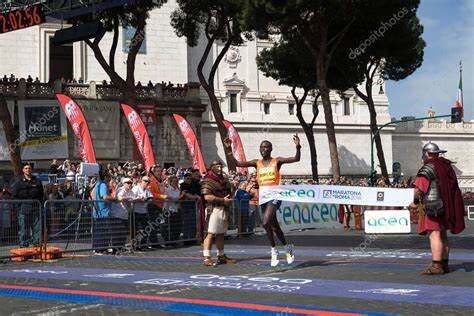
A number of athletes had to cancel their start due to either injuries of visa problems. The latest withdrawal came from Dominic Nyairo of Kenya, who would have been a strong favorite on Sunday. However there is still enough talent left to produce a good race. “It is our aim to achieve winning times of sub 2:09 and sub 2:26,“ said Michael Kraus, the elite field coordinator. The weather might be challenging, but we remain optimistic to see faster winning times than last year.“
Cosmas Birech ran his personal record when he won the Rome Marathon in 2018 with 2:08:03. Rome is not known as a particularly fast course, so Birech hopes to achieve a similar time at the Generali Munich Marathon. Fellow Kenyans William Kibor and Benard Chumba are also among the favorites. Kibor has a PB of 2:08:32 from the Vienna City Marathon back in 2012 and Chumba ran 2:10:33 in Marrakech last year. All three of them are from Kaptagat and train together. “My training went very well and I feel that I am in the same kind of shape as when I ran my personal best. If the weather is good I hope to run between 2:07 and 2:09 on Sunday,“ said William Kibor at Friday’s press conference in Munich.
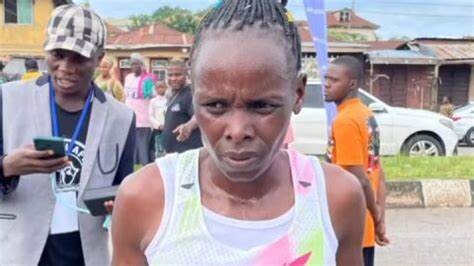
A marathon debutant could do very well on Sunday: Kenya’s Nehemiah Kipyegon showed very promising form recently. The 26 year-old improved his half marathon PB to 60:34 in Copenhagen last month. In the highly competitive race he finished ninth. Siyum Tola of Ethiopia is another athlete who will run his debut in the Generali Munich Marathon. He has been involved in marathons as a pacemaker and is a training partner of Milkesa Mengesha who won the Berlin Marathon two weeks ago.
In the women’s race Shamilah Kipsiror will be the main favorite. The Kenyan improved to 2:27:33 for fourth place in Rome this spring. Her half marathon PB of 67:53 indicates that there is potentially more to come, especially on a flat course like Munich. A trio of Ethiopians will most likely be her strongest rivals on Sunday. Gelane Senbete has a personal record of 2:29:54 while Gadise Negasa has run 2:30:30. Asmare Assefa could be in for a surprise and a big improvement. So far she has not run faster than 2:33:10 but the Generali Munich Marathon will be her first race outside Africa. Assefa is in the same training group with Tola and Mengesha in Addis Ababa.
“We are thrilled by the record entry which means we have a 20 percent surge compared to last year. We are proud of these figures which show that our event and the course are really popular,“ said Gernot Weigl, who runs the Generali Munich Marathon as Race Director for almost 25 years. Stronger elite fields and international media work have helped bring up the numbers recently.
Although the city of Munich benefits from the growing number of international runners the event attracts, it was Munich’s government that clouded the future of the Generali Munich Marathon. Officers of the city’s district department (Kreisverwaltungsreferat) decided to pass on the right of staging a marathon in the city to a new organizer who has never ever staged a road race. There is talk of a two-lap marathon course and it looks as if the city of Munich gambles with a successful international event that in addition keeps a legacy of the 1972 Munich Olympic Games. “I have never heard of anything like this happening to a major international marathon race,” said Gernot Weigl, who is now legally challenging the decision of the Munich district department.
by AIMS
Login to leave a comment
Generali Munich Marathon
The GENERALI MUNICH MARATHON has held the elite label of the WORLD ATHLETICS since 2020 and the marathon route is officially measured and recognized. The route runs from the Olympic Park and Schwabing to Leopoldstraße with the Siegestor, via Königsplatz and the Pinakotheken to the English Garden. From there past the Chinese Tower and Art Nouveau villas in Bogenhausen, through...
more...More shock as Kenyan steeplechaser Clement Kemboi found dead in Iten
Kemboi, who won the 2015 All African Games, was found hanging from a tree at St.Patrick's High School, Iten.
Kenya's athletic community is once again in mourning following the tragic loss of another talented runner, Clement Kemboi on Monday.
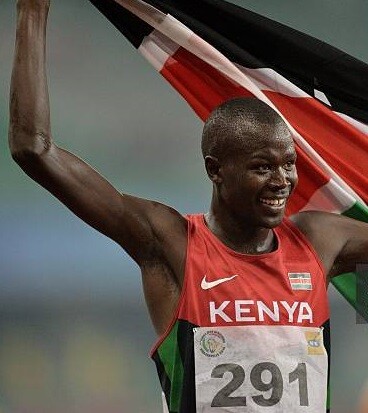
The 32-year-old athlete was found dead, his body discovered hanging from a tree in Iten, Elgeyo Marakwet County. Elgeyo Marakwet Police Commander Peter Mulinge confirmed the incident, with Kemboi's body located in the St. Patrick’s High School Farm in Koisungur village.
The heartbreaking news comes just hours after Kenya woke up to the devastating announcement that former world U20 champion Kipyegon Bett had passed away at Tenwek Hospital in Bomet County.
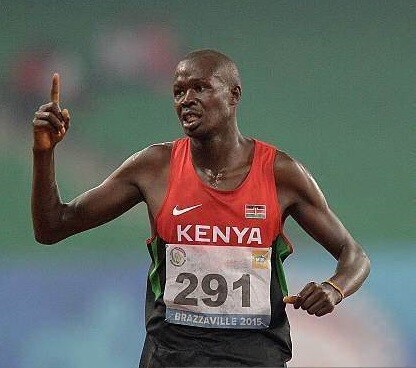
Kemboi was a highly regarded middle-distance runner who excelled in the 3000m steeplechase. Born in 1992, he made his mark on the international stage when he clinched the gold medal at the 2015 All-Africa Games in Brazzaville. His talent shone brightly, and he was seen as one of the nation's rising stars in the discipline.
Kemboi achieved his personal best time of 8:10.65 in the 3000m steeplechase at the prestigious Doha Diamond League in 2016, further cementing his status as one of Kenya’s top athletes in the event.
by Mark Kinyanjui
Login to leave a comment
Five mistakes new trail runners can avoid
New to trail running? Welcome to the wild side. But before you lace up and charge into the woods, let’s save you from a few rookie moves that could make your first trail race a comedy of errors.
Sure, you’ve got rugged shoes and maybe even a hydration vest, but the terrain demands more than just gear. Here are five unexpected (and often hilarious) mistakes new trail runners make—and how to avoid them.
1.- Don’t be the trail DJ

Picture this: you’re cruising through a peaceful forest, birds chirping, wind rustling the leaves… and suddenly, you hear someone blasting their playlist on speaker. (Which instantly kills that trail-joy vibe.) Sure, running to music can be motivating, but this isn’t a marathon on city streets (and even then, most people aren’t going to appreciate you sharing your tunes). Part of trail running is connecting with nature—and–fun fact–most people don’t want to hear your music wafting through the wilderness. If you need tunes, grab some earphones (safely) and keep the forest soundtrack serene.
2.- The jostle-sprint: you’re not at a track meet
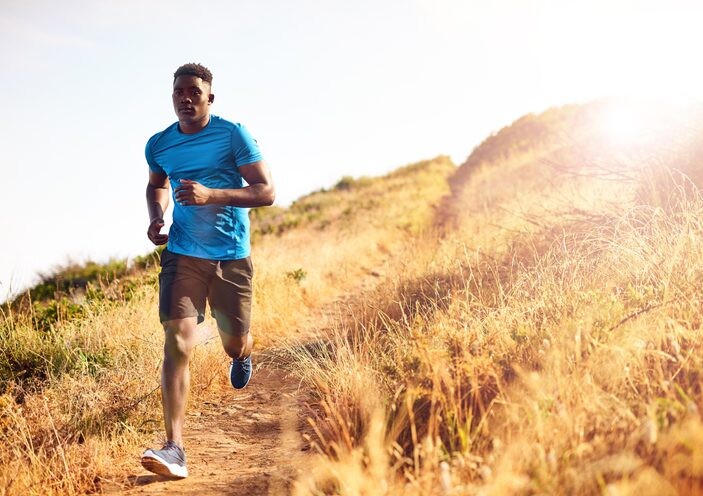
We’ve all seen them—the over-excited newbie who approaches passing another runner as if they’re sprinting for Olympic gold. Here’s the thing: you’re not Josh Kerr chasing Jakob Ingebrigtsen in the 1,500m final. It’s a trail, not a track meet—trail runners tend to be a laid-back crew, and aggressively shoving past someone while you breathe down their neck like a rhino is just poor form. Slow your roll, politely announce yourself, say excuse me and ease by. You’ll pass them soon enough without making anyone feel like prey.
3.- Downplaying the downhill
Everyone dreads the uphill grind, but let’s be honest, the downhill is where the real fun (and chaos) begins. For new trail runners, it’s either full-speed-ahead with no brakes, or they lock up tight, like every step could be their last. The sweet spot is somewhere in between—and mastering that balance can be the difference between feeling like a trail wizard and wiping out on a banana peel, cartoon-style. Yes, caution is key (no one wants a surprise somersault mid-run), but being overly timid? That’ll do your pace no favours. Loosen up, spread your arms for balance and embrace the momentum, while keeping things controlled.
4.- The classic snack underestimation
Trail running requires a little more fuel than a short jaunt on the road. Think you’re fine with just water? You’re about to face a (potentially dangerous) reckoning. That 10K trail loop can take much longer than expected, especially with some rooty, rocky climbs. Proper fuelling is as essential for trail training as it is for trail races. Bring snacks—and opt for real sustenance over gels to keep your tastebuds happy (although gels are a great option if you prefer your snacks simple and squeezable). Halfway through, that peanut butter sandwich (or whatever your chosen delight) will feel like a Michelin-star meal. Make sure you overestimate your fuelling needs when you’re hitting the singletrack, and start taking in calories early and often.
5.- Thinking you’re better than the dirt
Here’s a heads-up: you’re going to get dirty. Mud, dust and puddles are part of the package. Newbies often cling to the fantasy that they’ll stay spotless. Spoiler: they won’t. At some point, you either embrace the mess or spend your run doing awkward hopscotch like you’re dodging landmines. Own it. By the end, those mud splatters will feel like badges of honour. And look at the pros—they’re not crossing the finish line looking ready for a laundry commercial, either.
Trail running isn’t just road running with more rocks. It’s its own world, with unspoken rules and quirks that make it uniquely fun. Embrace it, laugh at your own mistakes (we’ve all been there), and for the love of all that’s sacred in the woods, leave the speaker at home.
by Keeley Milne
Login to leave a comment
Tola and Obiri lead elite fields for New York City Marathon
Organisers of the 2024 TCS New York City Marathon have revealed a world-class line up for this year’s World Athletics Platinum Label road race on 3 November, led by defending champions Tamirat Tola and Hellen Obiri.
Since winning last year in a course record of 2:04:58, Tola won the Olympic title in Paris in a Games record of 2:06:26. What made his feat all the more impressive is that he was only drafted into the Ethiopian team two weeks before the Games, having initially been named as a reserve.

“I’m excited to defend my title in New York, especially coming off an Olympic-record marathon performance,” said Tola. “The hilly course and crowds in Paris definitely prepared me well for the bridges and spectators in New York, where maybe I can go even faster this year.”
Two-time Olympic medallist Bashir Abdi will also be one to watch; the Belgian earned silver at the recent Olympics, having taken bronze at the Tokyo Olympics in 2021 and at the 2022 World Championships.
Three past winners – all from Kenya – are also in the field: 2022 champion Evans Chebet, 2021 winner Albert Korir, and 2019 and 2017 victor Geoffrey Kamworor. Chebet has twice won the Boston Marathon, and has finished first or second in 13 marathons. Kamworor has made it on to the podium in all four of his New York Marathon appearances.
Fellow Kenyan Abel Kipchumba, who won this year’s NYC Half Marathon, will be making his New York City Marathon debut.
The US charge is led by Conner Mantz and Clayton Young, who finished eighth and ninth respectively in the Paris Olympic marathon.
Women’s Open Division
Obiri is a three-time Olympic medallist and seven-time world medallist. Last year the Kenyan became the first woman in 34 years to win both Boston and New York in the same calendar year. So far this year, she retained her Boston Marathon title and went on to earn bronze in the Olympic marathon.
“There’s no place like New York, and I am so ready to defend my title,” said Obiri. “I have been racing very well on the roads in the US, and I hope I can have another good day that sees me in contention once we enter the final stages in Central Park.”
Fellow Kenyan Sharon Lokedi, the 2022 NYC Marathon winner, will return after finishing third last year and fourth in the Olympic marathon in Paris. The Kenyan delegation will also include 2010 champion Edna Kiplagat, four-time Olympic medallist Vivian Cheruiyot, and Sheila Chepkirui, who owns the fastest personal best in the field.
Ethiopia’s Tirunesh Dibaba will make her New York City Marathon debut and is one of the world’s most accomplished long-distance runners as a three-time Olympic and 16-time world champion. She will be joined by compatriot Senbere Teferi.
Dakotah Lindwurm, the top US finisher in the marathon at the Paris Olympics, will lead the US contingent.
Elite field
WomenSheila Chepkirui (KEN) 2:17:29Tirunesh Dibaba (ETH) 2:17:56Vivian Cheruiyot (KEN) 2:18:31Senbere Teferi (ETH) 2:19:21Dera Dida (ETH) 2:19:24Edna Kiplagat (KEN) 2:19:50Eunice Chumba (BRN) 2:20:02Sharon Lokedi (KEN) 2:22:45Hellen Obiri (KEN) 2:23:10Fatima Gardadi (MAR) 2:24:12Kellyn Taylor (USA) 2:24:29Fabienne Schlumpf (SUI) 2:24:30Aliphine Tuliamuk (USA) 2:24:37Dakotah Lindwurm (USA) 2:24:40Lily Partridge (GBR) 2:25:12Jessica McClain (USA) 2:25:46Des Linden (USA) 2:25:55Tristin Van Ord (USA) 2:25:58Khishigasaikhan Galbadrakh (MGL) 2:26:32Maggie Montoya (USA) 2:28:07Katja Goldring (USA) 2:29:01Savannah Berry (USA) 2:29:13
MenEvans Chebet (KEN) 2:03:00Gabriel Geay (TAN) 2:03:00Bashir Abdi (BEL) 2:03:36Tamirat Tola (ETH) 2:03:39Geoffrey Kamworor (KEN) 2:04:23Abdi Nageeye (NED) 2:04:45Addisu Gobena (ETH) 2:05:01Abel Kipchumba (KEN) 2:06:49Albert Korir (KEN) 2:06:57Conner Mantz (USA) 2:07:47Clayton Young (USA) 2:08:00Rory Linkletter (CAN) 2:08:01Callum Hawkins (GBR) 2:08:14Ser-Od Bat-Ochir (MGL) 2:08:50Elkanah Kibet (USA) 2:09:07Noah Droddy (USA) 2:09:09Jonny Mellor (GBR) 2:09:09Jared Ward (USA) 2:09:25Colin Bennie (USA) 2:09:38Futsum Zienasellassie (USA) 2:09:40CJ Albertson (USA) 2:09:53Nico Montanez (USA) 2:09:55Yuma Morii (JPN) 2:09:59
by World Athletics
Login to leave a comment
Western States 100: Walmsley Wins a Fourth Time While Schide Rocks the Women’s Field
For hours, Katie Schide (pre-race and post-race interviews) chased ghosts. For hours, Jim Walmsley (pre-race and post-race interviews) and Rod Farvard (post-race interview) chased each other. And in the end, after 100 courageous, gutsy miles at one of the world’s most iconic ultramarathons, it was Schide and Walmsley who won a fast, dramatic 2024 Western States 100.
Schide, an American who lives in France, was on pace to break the course record until late in the race, while Americans Walmsley and Farvard battled throughout most of the second half of the race, alternating the lead as late as mile 85.
Schide’s winning time was 15:46:57, just over 17 minutes behind Courtney Dauwalter’s 2023 course record, almost an hour faster than her own time last year, and the second fastest women’s time ever. Walmsley, meanwhile, won his fourth Western States in 14:13:45, the second fastest time ever — only behind his own record of 14:09:28 that he set in 2019.
Second and third in the men’s race came down to an epic sprint finish on the track between Farvard and Hayden Hawks (pre-race and post-race interviews), who finished in 14:24:15 and 14:24:31, respectively.
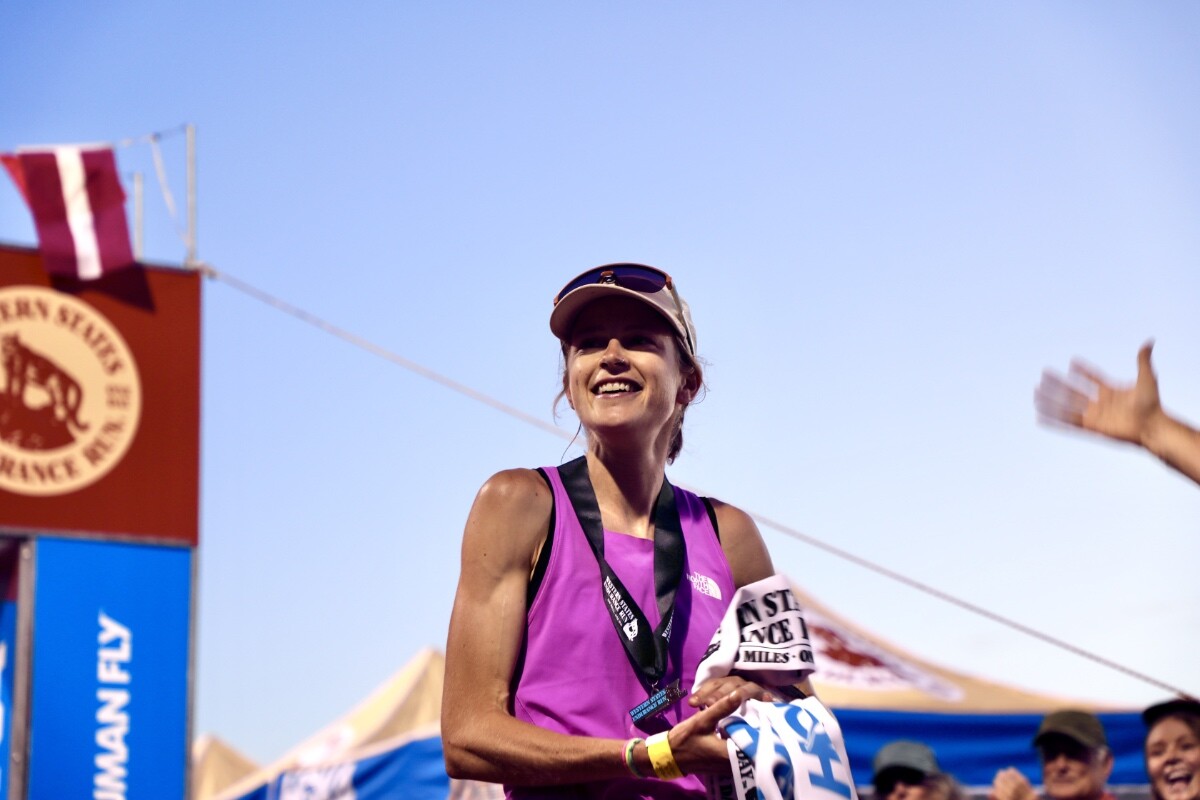
In the women’s race for the podium, Fu-Zhao Xiang (pre-race and post-race interviews) finished second in 16:20:03, and Eszter Csillag (pre-race and post-race interviews) took third for the second time in a row, in 16:42:17.
Both races featured one of the deepest and most competitive fields in race history, with the men’s top five all coming in faster than last year’s winning time, and the women’s top 10 finishing just under 40 minutes faster than last year’s incredibly competitive top 10.

At 5 a.m. on Saturday, June 29, they were all among the 375 runners who began the historic route from Olympic Valley to Auburn, California, traversing 100.2 miles of trail with 18,000 feet of elevation gain and 22,000 feet of loss. After last year’s cool temperatures, the weather at this year’s race was a bit warmer, albeit with a notable lack of snow in the high country. The high temperature in Auburn was in the low 90s Fahrenheit.
A special thanks to HOKA for making our coverage of the Western States 100 possible!
2024 Western States 100 Men’s Race
In his return to the race that propelled him to the heights of global trail running and his first ultra on American soil in three years, Jim Walmsley (pre-race interview) demonstrated why he is, once again, the king of Western States. Before the race, Walmsley exuded a calmness that perhaps eluded him during his first attempts, when he attacked it with an obsessive intensity that led him to famously take a wrong turn and then dropping out in back-to-back years.
“We’ll just roll with what plays out and just kind of see what happens in the race,” he said in his pre-race interview. There’s a marked difference when compared to his remarks from his interview before the 2016 race.
What happened in the race was this: In his fourth Western States, Rod Farvard (post-race interview) had the race of his life to push Walmsley like he’d never been pushed before in his long history with the event.
Farvard — a 28-year-old from Mammoth Lakes, California, who has improved his finish each year at the race, from a DNF in 2021 to 41st place in 2022 to 11th place last year — put himself in a strong position from the start, leading a large pack of runners that included Walmsley at the top of the Escarpment, the 2,500-foot climb in the first four miles of the race. For the next 45-plus miles, Farvard remained in the top 10, part of a chase pack of American Hayden Hawks (pre-race and post-race interviews), Kiwi Dan Jones (pre-race interview), and Chinese runner Guo-Min Deng, among others.
At the Robinson Flat aid station at mile 30 — the symbolic end of the runners’ time in the high country, which features an average elevation of around 7,000 feet — Walmsley, who started the race conspicuously wearing all black, came through in 4:24 looking fast and smooth, now wearing an ice-soaked white shirt. Jones, the 2024 Tarawera 102k champion and fifth-place finisher in his Western States debut last year, and Hawks, who set the course record at February’s Black Canyons 100k after dropping out of last year’s Western States, followed about 90 seconds later. The two runners, frequent training partners, ran together frequently throughout the day, with Hawks often foregoing ice at aid stations.
After the trio of Walmsley, Hawks, and Jones went through Last Chance at mile 43 together, Walmsley put nearly two minutes on them up the climb to Devil’s Thumb. “I was with everybody at the bottom,” he said, according to the race’s official livestream.
About halfway through, at mile 49.5, the order remained the same: Walmsley in the lead with an elapsed time of 6:58, followed by Jones one minute back, Hawks two minutes back, and Farvard just over two and a half minutes back. The rest of the top 10 were last year’s 17th-place finisher Dakota Jones; 2024 Transvulcania Ultramarathon champion Jon Albon (pre-race interview), who is from the U.K. but lives in Norway; 2023 fourth-place finisher Jia-Sheng Shen (China) (pre-race interview); 2023 Canyons 100k champion Cole Watson; Western States specialist Tyler Green (pre-race interview); and Jupiter Carera (Mexico).
Then began a thrilling, chaotic second half of the race — featuring a gripping back-and-forth between Walmsley and Farvard, a wildfire near the course, a two-man river crossing, and a sprint finish on the track.
It all started when Walmsley entered Michigan Bluff at mile 55, again looking calm and in control, changing shirts and getting doused with ice. Farvard came in just behind him and left the aid station first, leading the race for the first time since the first climb up the Escarpment. The same routine took place seven miles later at Foresthill: Walmsley entering first, Farvard leaving first.
For the next 18 miles, the two runners alternated in the lead. By mile 78, they were so close that they were crossing the American River at the same time. Their battle underscored the overall depth of the field at this year’s race: At mile 80, the top five men were within 16 minutes of one another.
Around then, the 15-acre Creek Fire, which started not long before, was visible from the final quarter of the course and crews were temporarily not permitted to travel to the Green Gate aid station at mile 80 because the route to it passed close to the fire. Eventually, a reroute was established for crews to get to Green Gate and, later, after the wildfire was controlled, the regular route was reopened.
At Green Gate, Farvard came through in the lead, with Walmsley four minutes back and looking like he was hurting. It was then, perhaps, that the thought entered people’s minds: Could Farvard really take down the champ?
But Jim Walmsley is Jim Walmsley for a reason, and he again proved why he is among the world’s best. Against the ropes, facing one of his first real challenges in the race that shaped him, he delivered, entering the next aid station, Auburn Lake Trails at mile 85, more than a minute earlier than Farvard. He had made up five minutes in five miles.
Walmsley never trailed again, increasing his lead to 11 minutes by the Pointed Rocks aid station at mile 94 and then picking up his crew, including his wife, Jess Brazeau, at Robie Point to run the final mile with him. He entered the track at Placer High School to loud cheers, his loping stride still looking smooth, stopping a few steps short of the tape to wave to the crowd and raise his arms in triumph. He had done it again.
Behind him, Farvard was fading but determined to cap an extraordinary race with a second-place finish. Hawks, who had made up five minutes on Farvard in the couple miles between Pointed Rocks and Robie Point, was on the hunt, and by the time he stepped on the track, Farvard was within sight.
It was then that fans were treated to one of the most unique sights in all of ultrarunning: After 100 miles of racing, two men were sprinting against each other on a track. In the end, Farvard’s lead held, and he finished 16 seconds ahead of Hawks. He collapsed at the finish line — a fitting end to an epic performance.
Dan Jones ended a strong race with a fourth-place finish in 14:32:29, with Caleb Olson capping an impressive second half of the race — from 11th at mile 53 to fifth in 14:40:12 at the finish. All five men ran a time that would have won the race last year.
Behind Olson came Jon Albon, running 14:57:01 in his 100-mile running-race debut, followed by the surgical Tyler Green, who finished in seventh for his fourth straight top 10 finish at the race. Green’s time of 15:05:39 also marked a new men’s masters course record, breaking the 2013 Mike Morton record of 15:45:21.
Rounding out the top 10 were Jia-Sheng Shen in eighth with a time of 15:09:49, Jonathan Rea in ninth who methodically moved his way up during the last 60 miles to finish in 15:13:10; and Chris Myers in 10th in 15:18:25.
2024 Western States 100 Women’s Race
Through the high country, into and out of the canyons, and along the river of the world’s oldest 100-mile trail race, Katie Schide (pre-race and post-race interviews) raced only the ghosts of the clock and history. Smiling throughout, she seemed unaffected by the solitude and the enormity of the possibility that lay before her: to attempt to break the course record of one of the world’s most iconic trail races.
Schide, an American who lives in France, came into the race as the clear favorite, and for good reason: She finished second last year, breaking Ellie Greenwood’s previously untouchable 2012 course record by more than three minutes and losing to only Courtney Dauwalter, who broke Greenwood’s record by an astounding 78 minutes on her way to a historic Western States-Hardrock 100-UTMB triple win. Schide, winner of the 2022 UTMB and 2023 Diagonale des Fous 100 Mile, spent the last two-and-a-half months in Flagstaff, Arizona, training for Western States, winning this year’s Canyons 100k in an impressive tune-up and putting in a monster training block.
In her pre-race interview, Schide said that she had thought about ways to improve her race from last year, which perhaps should have been the first warning to her competition. The second, then, was her immediate separation from the women’s chase pack: She summited the Escarpment, a 2,500-foot climb during the first four miles, in first place and never looked back. By the first aid station — Lyon Ridge at 10 miles — she was already 12 minutes under course record pace, and by Robinson Flat at mile 30, she was 21 minutes ahead of second-place Emily Hawgood (pre-race interview), from Zimbabwe but living in the U.S.
The lead only ballooned from there. By Dusty Corners at mile 38, Schide was an incredible 26 minutes under course record pace, and though she lost a few minutes from that pace by the time she climbed up to Michigan Bluff at mile 55, her smile had not waned even slightly. She smoothly entered the iconic aid station, doused herself with ice, changed shirts, and was soon on her way. She never sat down.
Twenty-seven minutes behind her was Hawgood, looking to build on back-to-back fifth-place finishes. Eszter Csillag (pre-race and post-race interviews), a Hungarian who lives in Hong Kong, followed soon after, in the same third spot she finished in last year.
After them ran a dense pack of women: Only 16 minutes separated Hawgood in second from Lotti Brinks in 11th.
At the halfway point, the top 10 were Schide, 33 minutes up in an elapsed time of 7:26; Csillag; Hawgood; Chinese runner Fu-Zhao Xiang (pre-race and post-race interviews), the fourth-place finisher at last year’s UTMB; Lin Chen (China); American Heather Jackson, a versatile former triathlete who recently finished fifth at a competitive 200-mile gravel bike race; ultrarunning veteran Ida Nilsson (pre-race interview), a Swede living in Norway; Becca Windell, second in this year’s Black Canyon 100k; 2023 CCC winner Yngvild Kaspersen (Norway); and Rachel Drake, running her 100-mile debut.
Schide, easily identifiable in her pink shirt, maintained her large lead throughout the second half of the race, remaining calm, controlled, and upbeat throughout the tough canyon miles. By Foresthill at mile 62, she was 19 minutes ahead of course record pace and 48 minutes ahead of the second-place Xiang. Schide’s stride still looked smooth as she waved to fans and even high-fived a cameraman.
Schide’s aggressive pace eventually slowed — by Green Gate at mile 80, her lead on the course record had dissipated — but her spirits did not. After a quick sponge bath at Auburn Lake Trails aid station at mile 85, she fell behind course-record pace for the first time all day, only 15 miles remained until the finish.
Schide entered the track a couple of hours later, running with her crew and no headlamp. She would finish before dark. She stopped for a hug on the final straightaway and lifted the tape with, of course, a smile.
Xiang had methodically pulled away from Hawgood and Csillag during an incredibly strong second half to win the battle for second. Fu-Zhao Xiang finished in 16:20:03 for the third fastest time in race history. Chen, who dropped out at mile 78, was one of the few elite runners who had a DNF on this day, which was categorized by a lack of attrition in both the women’s and men’s elite races.
Eszter Csillag came in about 22 minutes behind Xiang in 16:42:17 for her second consecutive third-place finish, a 30-minute improvement from last year — a statistic that perhaps exemplifies the speed of this year’s race better than any other.
The battle for fourth and fifth was nearly as close as Farvard and Hawks’s race for second in the men’s race a couple of hours earlier.
At Pointed Rocks at mile 94, Hawgood led by barely two minutes, running hard and straight through the aid station. Kaspersen, meanwhile, was drinking Coke and made up almost a minute by Robie Point.
Emily Hawgood’s lead ultimately held, and she finished fourth in 16:48:43 to improve her finish from prior years by one spot. Yngvild Kaspersen was less than two minutes back in 16:50:39. Ida Nilsson capped a strong day to finish sixth in 16:56:52 and break Ragna Debats’s masters course record by almost 45 minutes. That means the top six women all finished in under 17 hours in a race that had only ever had three women finish under that mark — and two of them, Dauwalter and Schide, were last year.
The rest of the top 10 were Heather Jackson in seventh in 17:16:43, and, in close succession, Rachel Drake in 17:28:35, Priscilla Forgie (Canada) in 17:30:24, and Leah Yingling in 17:33:54.
The top 10 women were all faster than the 12th-fastest time in race history going into the day.
by Robbie Harms
Login to leave a comment
Hardrock 100
100-mile run with 33,050 feet of climb and 33,050 feet of descent for a total elevation change of 66,100 feet with an average elevation of 11,186 feet - low point 7,680 feet (Ouray) and high point 14,048 feet (Handies Peak). The run starts and ends in Silverton, Colorado and travels through the towns of Telluride, Ouray, and the ghost town...
more...Two B.A.A. Athletes Qualify For U.S. Olympic Team Trials
The Boston Athletic Association (B.A.A.) today announced that B.A.A. High Performance Team members Annie Rodenfels and Bethany Hasz have earned spots on the starting line for the U.S. Olympic Team Trials – Track & Field, to be held later this month in Eugene, Oregon from June 21-30.
Rodenfels will compete in the women’s 3000m steeplechase (preliminary round June 24/final on June 27), while Hasz will toe the line in the women’s 5000m (preliminary round on June 21/final on June 24).
The Trials will be held at historic Hayward Field in Eugene, Oregon, with top three finishers in each event slated to qualify for the Paris Olympic Games (so long as athletes have met the Olympic standard or earned enough qualifying points).

Rodenfels’ personal best in the steeplechase is 9:25.48, set last year. She won the steeplechase at the Drake Relays this year (9:31.03), was fourth at the Boston 5K in April, and clocked 15:03.97 indoors for 5000m in December 2023. Last fall she won the USATF 5K National Championship on the roads in New York City.
Hasz is coming off a 5000m lifetime best of 15:05.80 set May 17 in winning the Drake Relays 5000m. This year she’s also recorded personal bests in the road 5K (15:30), road 10K (32:03), and mile indoors (4:39.24). She earned a bronze medal at the 2023 USATF 5K National Championships, finishing third just behind Rodenfels and Olympian Rachel Smith.
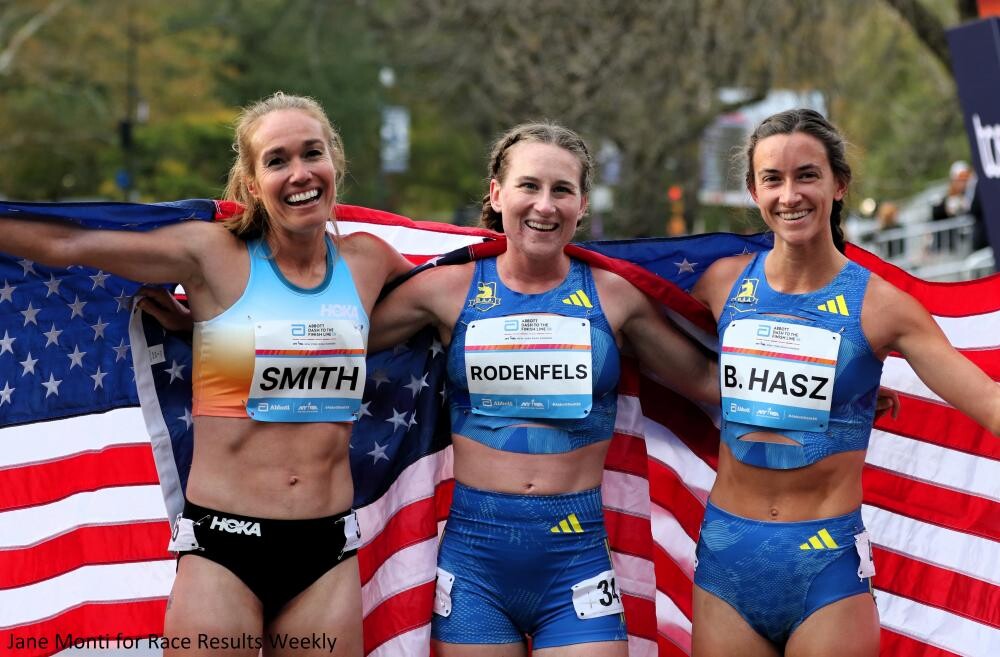
The B.A.A.’s High Performance team supports runners on their way towards making international teams, with the goal of competing at the highest level: the Olympic Games, World Athletics Championships, and Abbott World Marathon Majors. The B.A.A. is sponsored by adidas, which provides comprehensive support for the organization’s High Performance team, running club, and mass-participatory events.
B.A.A HIGH PERFORMANCE TEAM ROSTER:
Eric Hamer
Bethany Hasz
Megan Hasz
Josh Kalapos
Barry Keane
Matt McDonald
Annie Rodenfels
Abbey Wheeler
ABOUT THE BOSTON ATHLETIC ASSOCIATION (B.A.A.)
Established in 1887, the Boston Athletic Association is a non-profit organization with a mission of promoting a healthy lifestyle through sports, especially running. The B.A.A. manages the Boston Marathon, and supports comprehensive charity, youth, and year-round programming. The 129th Boston Marathon presented by Bank of America is scheduled to take place on Monday, April 21, 2025. The Boston Marathon is part of the Abbott World Marathon Majors, along with international marathons in Tokyo, London, Berlin, Chicago, and New York City. For more information on the B.A.A., please visit www.baa.org.
by B.A.A.
Login to leave a comment
U.S. Olympic Team Trials Track And Field
Eugene, Oregon has been awarded the 2024 U.S. Olympic Team Trials - Track & Field, USA Track & Field and the U.S. Olympic & Paralympic Committee announced today. From June 21 to 30, Hayward Field at the University of Oregon will be home to one of the biggest track and field competitions in the country, as the U.S. Olympic Team...
more...Six-Time Cancer Survivor Runs a Marathon on Every Continent
“Don’t let anyone tell you what you’re capable of. That’s for you to determine.”
For the last mile of the Antarctica Marathon, Jonathan Acott played one song on repeat. Trudging through snow and icy winds on the edge of the world, the runner from Surrey, United Kingdom, listened to Tim McGraw’s hit, “Live Like You Were Dying.” It was a fitting anthem for the six-time cancer survivor in his pursuit to run a marathon on all seven continents.
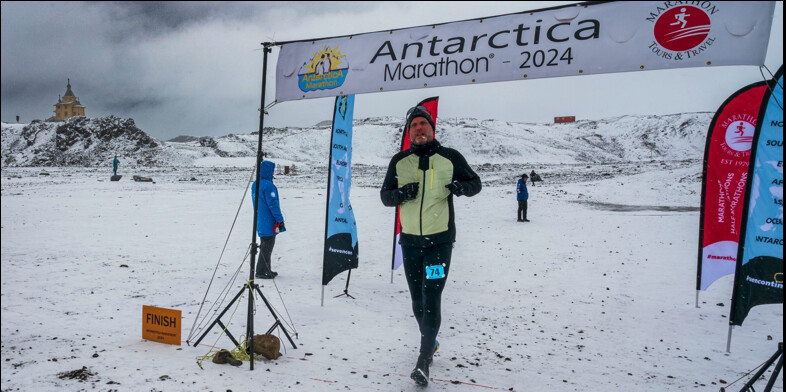
With 500 yards remaining in the race, Acott took his headphones out. He wanted to be fully present for the homestretch of the seventh marathon. Running downhill toward a small tent with a timer next to the Russian research station, the 48-year-old made his way to the finish line area, where a group of volunteers and fellow competitors cheered him on.
His legs sore from the descent, Acott took a moment to compose himself before stepping across the finish line, completing a challenge that seemed unimaginable five years ago. “The photographers are there and they say, ‘Put your arms up!’ But I don’t want to put my arms up. That’s not how I want to celebrate,” Acott said. “I needed to stop at that moment. There’ll be other mountains, but right now I just want to stop.”
Amid the devastation caused by multiple cancers and the arduous healing process that followed, Acott transformed his life, becoming a motivational speaker, coach, and avid runner intent on chasing epic goals. For Acott, becoming a member of the Seven Continents Club—645 men and 358 women who have completed 26.2 on all seven continents—is the latest example of the runner choosing to embrace every moment.
‘If I’m moving, I’m not dead.’
Acott’s cancer journey began 20 years ago. In 2004, he was diagnosed with testicular cancer at 29 years old. His first relapse occurred in 2007 when doctors discovered a tumor in his chest. He relapsed again in 2013 and 2016 and underwent back-to-back retroperitoneal lymph node dissections, a surgery to remove the lymph nodes in the back of the abdomen. In 2017, he was diagnosed with bowel cancer. The following year, doctors discovered he relapsed again. His final surgery in 2018 involved removing his kidney and spleen. The spleen ruptured during the procedure, which required an emergency blood transfusion on top of chemotherapy post-operation.
In a span of 14 years, Acott underwent numerous rounds of chemotherapy (he estimates about seven months total) and six surgeries that left his body riddled with lifelong side effects, including permanent nerve damage and hearing loss. The experience also took a heavy toll on his mental health. At his lowest, Acott suffered from suicidal ideation. Working with a psychiatrist helped him cope and reframe his perspective.
“Life is unfair to everybody. This just happens to be it,” Acott said. “And I can do two things. I can sit there and wallow about how miserable life is, or I can accept that life is difficult and hard and challenging, and you can make the most of it.”
Since 2018, Acott has been cancer free. After the last bout of the disease, his doctors encouraged him to start walking in the recovery process. He also lost his job after being unable to work during treatment. Walking not only gave him time to process his emotions, it also gave him something to work towards. In a few months, Acott was walking up to three hours at a time.
After spending months building up to long distances, Acott decided he wanted to be more efficient by running. “I push because if I’m moving, I’m not dead,” Acott said. “If I’m moving further each day, I am getting healthier.”
Because Acott is immunocompromised and his body takes longer to heal now, he trains every other day. He’s also battling pain most of the time from scars and neuropathy in his feet, among other ailments, and needs to run a conservative pace most of the time. “My body has been through a lot, but it’s still capable of doing so much," he said.
Choosing to live in optimism
In the fall of 2019—15 months after his last surgery—Acott raced the Berlin Marathon as a way to celebrate his comeback. He finished his first 26.2 in 4:58:38. Shortly after, he set out to complete the seven continents challenge.
“I chose to apply myself to making the most of my time because I don’t know how much time I have,” Acott said. “It’s a choice about how you live. You can live in fear, and I am always scared, or I can live in optimism that I’m going to have the best life I possibly can.”
The following year, he ran the Africa leg at the 2020 Marrakech Marathon in 4:45:48. In 2020, he also took up motivational speaking on top of his full-time job as the head of guest experience at a business complex.
After COVID restrictions were lifted, he finished the 2022 Austin Marathon in 5:15:28. The same year, he completed the South America portion by finishing the Curaçao Marathon in 5:09:16, trudging through flood waters on the course.
He ran the Asia leg with a 5:15:33 at the 2023 Dubai Marathon along a desert roadway. Last fall, he covered Australia at the 2023 Perth Marathon with a finishing time of 5:01:40. On March 21, he completed the Antarctica Marathon in 5:38:16.
Looking back on the experience, Acott remembered his surgeon’s warning after the last procedure. The doctor told him he wouldn’t be able to complete the same physical feats he used to do before cancer. Less than two months after completing the global marathon challenge, he’s already training for his next goal—breaking four hours in the marathon.
“Don’t let anyone tell you what you’re capable of,” Acott said. “That’s for you to determine. Find what the best version of you looks like, and make it happen.”
MORE FROM RUNNER'S WORLD ON APPLE NEWS
by Runner’s World
Login to leave a comment
How to Add Hills to Your Marathon Training
Everything to know about adding inclines to training, including how often to tackle them and the best strength moves for prepping your legs.
Running a marathon is a difficult feat in and of itself. Add in a hilly course—like you’ll find in the Big Sur, Boston, New York City, or San Francisco marathons, for example—and that adds a new level of challenging.
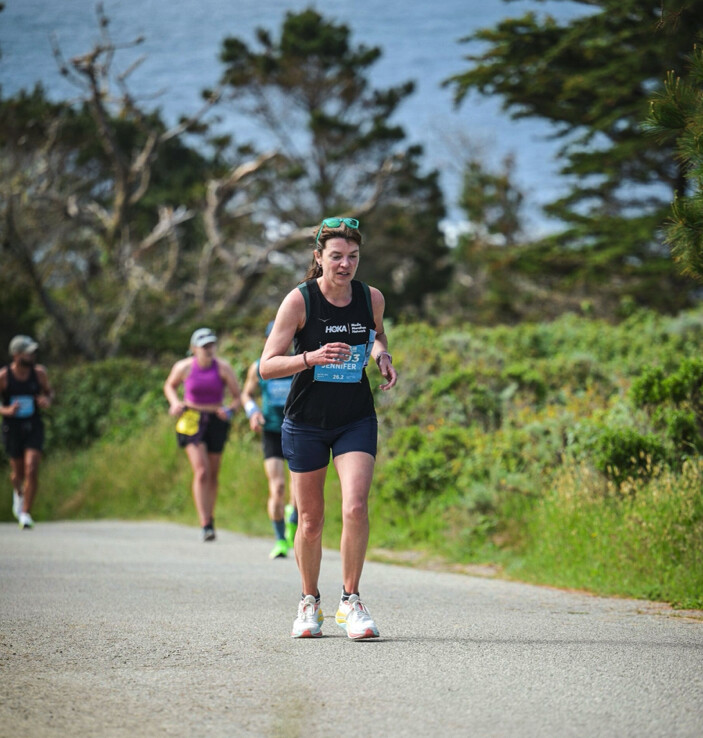
Having just run the Big Sur International Marathon, thanks to an invitation from the Hoka team last month, I learned the importance of incorporating hills into my marathon training cycle from Ben Rosario executive director of the HOKA Northern Arizona Elite in Flagstaff, Arizona, who was also my running coach.
In order to prepare for the demanding elevation changes of the course, I tackled hills every week of my training. Being that I live in Eastern Pennsylvania with many rolling hills, it wasn’t hard to seek out inclines regularly.
“You’re going to have a more enjoyable experience on race day, if you hill train throughout your marathon training,” says Rosario, whose advice rang true for me.
On race day, by mile 20, I had had enough of the hills mentally. Despite the breathtaking views of the Pacific ocean in the distance, six more miles still felt like an eternity in my head. However, I reminded myself that physically I had more to give because of the work I’d put into training, especially having pushed through so many tough climbs. I conquered the last 10K that day, and hit my marathon goal.
So how can you add hills to your own marathon training plan? Can running hills all the time be too much? And what do you do if you don’t have access to hills? To answer these questions, we chatted with expert run coaches to find out their best tips for how to train for hilly marathons.
How Often to Incorporate Hills Into Your Marathon Training Plan
If you live in a hilly area there’s nothing wrong with running hills on your regular runs—it will only help you come race day, Rosario says. “Not the hilliest run you can find necessarily, but there is nothing wrong with having a little bit of up and down in your runs everyday,” he adds.
If you don’t live in a hilly area, but you’re able to get to some place with hills, adding hills to your runs twice a week is smart, especially if you’re a more seasoned runner who has some base fitness. Incorporating hills into your weekly long run and speed session is a good place to start, Rosario suggests.
For novice runners taking on a hilly marathon, who have never consistently run hills before, be careful not to take on too much too fast, as you can get injured if you add hills into your training too aggressively or too quickly, says Richelle Weeks, D.P.T., physical therapist, certified run coach, and marathoner in Ottawa, Canada.
To make sure you don’t overdo it, Weeks advises new runners start with adding hills to one shorter run per week, until you get comfortable with climbing. Then, gradually add distance and more hills over the course of four to six weeks. “This is why I recommend a marathon training session be 20 weeks so there’s plenty of time to introduce hills,” says Weeks.
She also recommends runners have a comfortable base of running fitness first, before tackling inclines. “Most runners who get injured training for a marathon get their injury in the first month or the last month,” Weeks says. That’s because runners often are upping too many variables at once, like frequency, volume, speed, and hills. “Build frequency and volume first to get a good base. Then add in hills or speed, one at a time,” she adds.
I have a five-mile loop from my home with four big hills involved, so I would always incorporate this loop into my weekend long run, sometimes doubling it as my distance increased over the weeks. In previous marathon training, I mainly stuck to flat paths for longer runs, but knew this wouldn’t help me train for Big Sur. While my times were slower on that loop because of the hills, I did notice the more I ran it, the more efficient I was at covering climbs.
My weekend long run consisted of, on average, 1,200 feet of elevation gains for my 10- to 15-mile runs, reaching more than 1,500 feet for my 20-miler, which was helpful considering the Big Sur Marathon course features 2,182 feet of elevation gain.
How to Prep for a Hilly Marathon on a Treadmill if You Don’t Live Near Hills
If you can’t find a hilly route, finding a treadmill with both incline and decline capabilities is the next best thing, says Rosario. For many runners who don’t have access to a treadmill with decline options, Weeks advises strength training to build your quadriceps, which you need strong to tackle tough descents (see moves below).
You can research the elevation changes on the course you’ll run, and simulate that on the treadmill. If you’re doing a 15-mile treadmill run, for example, Rosario suggests plugging in the course inclines based on the elevation changes. For example, if you notice your course has a 6-percent grade at mile nine that stretches for one mile, add that percent and duration into your treadmill workout.
How to Handle Recovery Runs on Hills
It’s a good idea to keep recovery runs flat and easy during marathon training, as you want your easy runs to stay easy! If that means driving to a flat path or track, and you have the time, certainly do so, Rosario says.
If you can’t get to a flatter area, it’s okay to have those hills on your easy runs, with one caveat: Accept that you’ll really slow down your pace. “If you’re doing a recovery run, make sure you keep it easy, and if that means stopping and walking to go up the hills to keep your heart rate low and to make it feel like a relaxed run, then walk up the hills,” says Weeks.
For example, I ran some of the steeper hills on my recovery runs at a 10- to 12-minute mile pace, while my typical recovery pace is about a nine-minute mile. This strategy of adding hills to my recovery runs actually helped throughout the race. When the hills got long and taxing toward the end of the Big Sur course, I reminded myself to find my recovery pace and settle into it, so I could make it through the hills and feel strong for the subsequent miles.
The Garmin Forerunner 265S helped me maintain a lower effort on recovery runs, as I could keep an eye on my pace and heart rate, making sure I wasn’t exerting too much effort.
What to Do About Speed Workouts When Prepping for a Hilly Marathon
A mistake many runners make when it comes to training for a hilly marathon is tackling their hard workouts—like mile repeats or tempo runs—on the track or flat path that they’re comfortable with, Rosario says. The reason that’s an issue is because you’re not training your leg muscles to handle the demands of running hills at a harder effort.
Hill-based workouts ask more of the quads and calves and better prepare you for race day, Rosario adds, which is why speed workouts are precisely where you should incorporate hills. Just remember: “Hilly loops aren’t as cut and dry as training on a track,” he says, meaning your times are going to vary more as you run uphill and downhill, rather than sticking with a specific pace.
If you’re doing a speed session with hills, pay attention to your effort instead of pace, Rosario says, and give the workout the same effort you would on the track. For example, if you’re doing mile repeats with hills at threshold, instead of focusing on trying to hit a specific time, focus on maintaining about a 6 to 7 on the RPE scale (that’s a hard effort, but you can still say a few words).
Repeating the same hilly loop over and over again for those repeats will also help you see how you’re improving.
How to Strength Train for a Hilly Marathon
On average, two strength workouts a week is a good goal for most runners looking to prepare for a hilly marathon, says Weeks. Those workouts can include both uphill and downhill strength movements in each session.
“In the classic hilly marathons like Boston and Big Sur, it’s the quads that are beat to shreds after the race,” says Rosario. That’s why it’s important to incorporate strength moves to build up the quads so they can withstand the impact.
If you’re a lower mileage runner (around 30 or fewer miles per week), you can do strength work on non-running days. High mileage runners who do two or more speed sessions per week and a long run would benefit from keeping their easy days easy and hard days hard. So Weeks suggests pairing strength work with speed days.
Form Tips for Running Hills in a Marathon
Downhills are more dangerous than the uphills, say Rosario, because they cause us to run in a way that is less efficient. “When we run up a hill, there’s no way to get up it except fairly efficiently,” he says. “You’re running in a way that’s as close to perfect [form] as possible [on the uphill].”
That said, you still want to focus on solid running form when going up an incline. Think about running with a tall posture (avoid dropping your head and shoulders), a forward lean from the ankles, and avoid overstriding by keeping your foot strike underneath you. Also, use your glutes to push off and offer power.
When running downhill, runners tend to land hard on their heels, which sends a lot of shock through and up the kinetic chain—from the heel to the legs and hips—which causes eventual soreness postrace because the body is having to violently absorb all that shock, Rosario says.
Allow your feet to land closer to the hips, as opposed to way out in front of you in an overstride, as this creates a more gentle impact on the body, Weeks adds.
What runners need to practice, Rosarios says, is letting gravity do the work on the downhill. “You don’t want to bomb down the hill out of control, but you also don’t want to put on the brakes. You want to run as smoothly as possible down the hill,” he says. “It’s that medium effort that you want to find [running downhills] which takes time to learn and practice.”
As for accomplishing your hilly marathon: Give yourself grace, flexibility, plenty of time to train, and learn the marathon course you’ll run as best you can before race day. Marathons with a lot of inclines aren’t for the faint of heart, but now having raced one, I can say I’m proud I accomplished it. Afterall, American novelist and poet Jack Kerouac, who spent time living in a cabin at Big Sur in the 60s and traveling the United States wrote: “Because in the end, you won’t remember the time you spent working in an office or mowing the lawn. Climb that goddamn mountain.” In this case, just run it, for as long as you can.
by Runner’s World
Login to leave a comment
Meet the ultimate ultrarunning power couple
The running accomplishments of Rachel Drake and Tyler Green are astonishing on their own—but there’s far more to this pair of high-achievers than paces and race results. Drake recently earned her entry to the 2024 edition of the legendary Western States 100 with a strong win at Black Canyon Ultras 100K in Arizona, and Green finished second at the 2023 edition of Western States (and capped off his season with a sixth-place finish in the men’s race at UTMB 171K); the couple juggles demanding careers, school (Drake), coaching (Green) and family time with their one-and-a-half-year-old son, Lewis. We connected with the couple to find out how they make it work.
Drake, now 32, grew up in White Bear Lake, Minn., and the family currently lives in Green’s hometown of Portland, Ore. They will soon be moving to Salt Lake City, Utah, so Drake can begin her anesthesiology residency in the summer. The dynamic trail-running duo met at the McKenzie River 50K, and now combine their strengths in raising a family while balancing high-level running performance. Green, 40, works as a trail running coach and a high school cross country and track coach.
From Western States to World Trail Majors

The couple has similar goals for the 2024 season—they are both racing Western States on June 29, and both hope to capture another top performance at one of the World Trail Majors races, with the current plan being to run Ultra Trail Cape Town in November. The couple exemplifies flexibility in running and life—when a recent trip to run Ultra Trail Madeira was entirely derailed due to travel difficulties, they rallied, enjoying time at home instead. And when Black Canyon Ultra 100K in February was delayed several hours due to bad weather, Drake rose to the occasion.
“I’m really proud of how I handled the multiple changes in plans, I never felt stressed or perturbed,” Drake posted on Instagram after Black Canyon 100K was delayed several hours. “And I guess my ability to fall back asleep showed that my catecholamines were indeed not yet surging through my bloodstream. I think having been through medical school, graduate school and the birth of a child has really put things in perspective.”
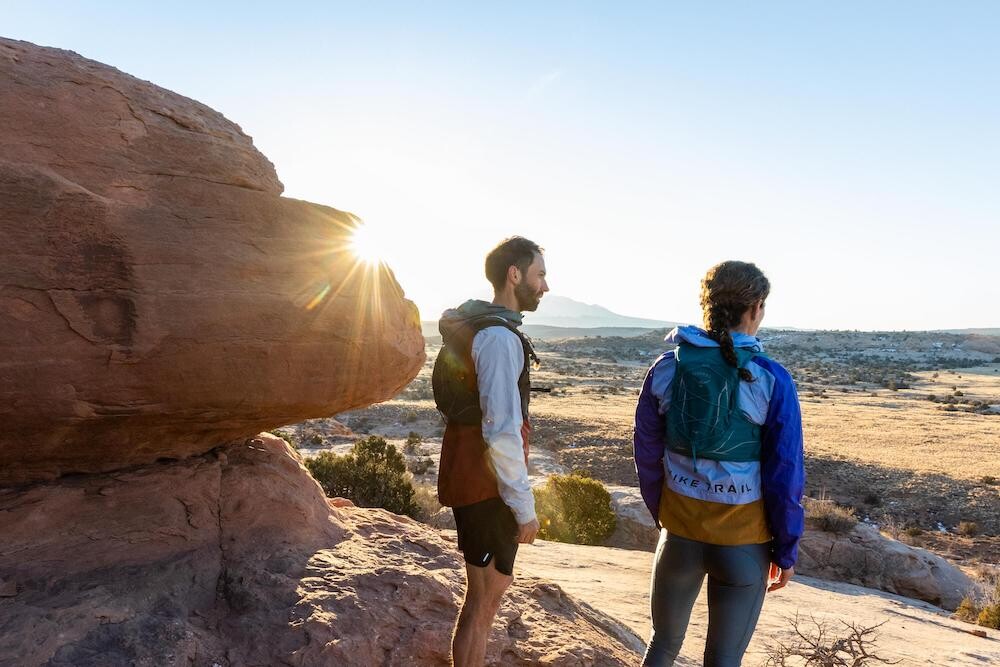
An element of surprise
Both Green and Drake love being a part of the trail running community, and while being parents adds an element of challenge, they are finding joy in bringing Lewis to events. “Just a few weeks ago we were at the Gorge Waterfalls trail races, and it’s so fun to bring Lewis into the fold,” Drake told Canadian Running. “He was making friends and wandering around at the finish line, and it was just the best.”
While Drake is quick to express gratitude for their lives, she also acknowledges that they have their hands full. “It’s challenging to balance everything. Lewis is a super easygoing kid, but having a toddler definitely adds an element of surprise to every well-laid plan,” she says. “When we travel, the logistics are a lot more complicated, but it’s always worth it.”
Combining strengths
Drake says that, as athletes, her strengths and Green’s are quite different. “Tyler is much more of a 100-mile specialist, and I am more of a 50K specialist,but moving up in distance this year,” she says. “I think I am also more of a speed-oriented runner and Tyler is probably more of a strength runner.”
As well as being partners through life, Drake and Green share a specific dynamic in the running world—that of coach and runner. “Tyler actually coaches me, so he gives me a lot of advice,” Drake explains. “I’ll weigh in on race strategy and planning our competitive calendars, but I don’t get involved with his training, since he has a great coach.”
Drake and Green share a mutual sponsor in the backpack brand Osprey. “Rachel has partnered with Osprey for five years now, and I followed suit three years ago as I saw how positive the partnership was,” Green explains. “Our connection with Osprey runs deep; they have supported us as people first, whether that’s celebrating a great race result, jumping for joy when we shared we were expecting a baby, or caring for us through injury. We feel like our stories are interwoven.”
The brand’s commitment to sustainability and longevity in its products pairs well with the couple’s values. “I have an Osprey backpack I’ve had for 20 years, it’s still my favorite pack, and I think that tells a lot about how our values align with the company,” says Green. “The gear Osprey makes truly performs and lasts. We’re ultrarunners who work incredibly hard to keep going and going and going, and an Osprey pack on our backs reflects that process.”
Running as a new mom
Drake and Green are now parenting a toddler, and while Drake’s top-notch performance may seem remarkable so quickly after having a child, she says she wouldn’t call it a fast return. “I had a sacral stress fracture at four months postpartum and had to take time to recover from that and then build back fitness,” she says, emphasizing that the culture that celebrates “bouncing back” from postpartum rarely includes any discussion about the challenges of returning to running after giving birth.
“I nursed Lewis for a year after he was born,” she adds. “I loved nursing and it felt important to me to prioritize that. While I was nursing, I felt much more limited with my training, so I had to accept that, even though I was preparing for races that I really cared about.”
Drake’s social media captures enviable images of family, travel, running and mountains, almost always with Lewis in tow. The key to the couple’s success: “Lots of communication with each other, planning our days out and capitalizing on getting stuff done during Lewis’s nap time,” Drake says. One could safely predict fans will follow Drake’s and Green’s performances on trails and off, long after the results of this year’s Western States.
by Keeley Milne
Login to leave a comment
Western States 100
The Western States ® 100-Mile Endurance Run is the world’s oldest and most prestigious 100-mile trail race. Starting in Squaw Valley, California near the site of the 1960 Winter Olympics and ending 100.2 miles later in Auburn, California, Western States, in the decades since its inception in 1974, has come to represent one of the ultimate endurance tests in the...
more...Emmanuel Korir reveals when he will make long-awaited return
Olympic 800m champion Emmanuel Korir has announced when he will return to action as he seeks to return to shape ahead of his title defense in Paris after a poor 2023 campaign.
Olympic 800m champion Emmanuel Korir will make his long return to action at the Marrakech Diamond League in Morocco on May 27.
Korir has not been in competitive action since his disappointing outing at the 2023 World Championships when he was eliminated at the heats and subsequently failed to defend his title.
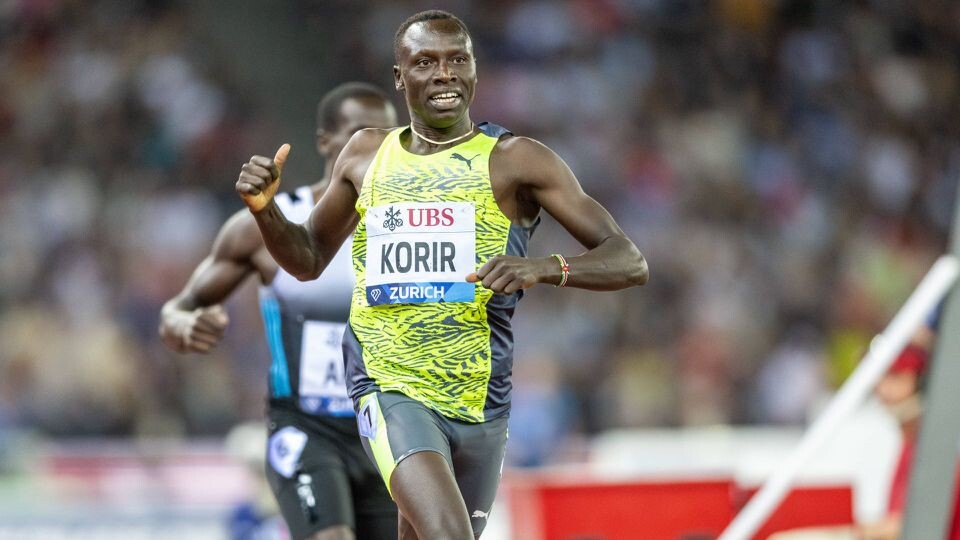
The 28-year-old was just returning after a long injury layoff but found the going tough after which he went downlow perhaps to tune up for his Olympic title defense.
Nine months on and Korir will be hoping for a good outing in Marrakech where he will run in the 800m but faces stiff competition from compatriots Emmanuel Wanyonyi and Wycliffe Kinyamal.
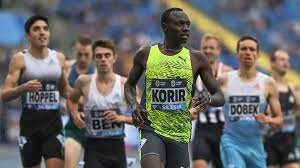
World 800m silver medalist Wanyonyi is the man of the moment and will head into the race on confidence having shown no signs of rustiness at the Kip Keino Classic last month, when he ran a world leading time of 1:43.57 to win what was his first race of the season.
Another extra motivation for Korir will be the need to hit the Olympic qualifying time given his 1:46.78, clocked at the World Championship was out of the set standard of 1:44:70.
Korir is hoping to get back to the heights of 2022 when he won the world title in 1:43.71 which will also get him closer to his rivals ahead of the Olympics.
With new runners emerging, such as world champion Marco Arop of Canada and Wanyonyi in his absence, the 28-year-old has a lot of work on his hands to regain his old form.
Korir, who has had to deal with a calf injury, also opened his 2023 season in Morocco, starting in Rabat, where he finished eighth, before proceeding to Paris, France, only to finish 10th.
He followed that up with another eighth-place finish in Stockholm, Sweden before his poor showing at the World Championships.
by Joel Omotto
Login to leave a comment
Paris 2024 Olympic Games
For this historic event, the City of Light is thinking big! Visitors will be able to watch events at top sporting venues in Paris and the Paris region, as well as at emblematic monuments in the capital visited by several millions of tourists each year. The promise of exceptional moments to experience in an exceptional setting! A great way to...
more...Kosgei believes she can go one step further and win title in Paris
Tokyo 2020 Olympics women's marathon silver medalist Brigid Kosgei believes she can go one step further and nail the title in Paris this year.
In an exclusive interview on Wednesday Kosgei said she is ready to annihilate the rich field of competitors in the cut-throat 42km race on her way to the winner's dais.
The two-time world champion constitutes the starry eight-member Team Kenya marathon delegation for the Paris 2024 Olympic Games unveiled by Athletics Kenya last week.
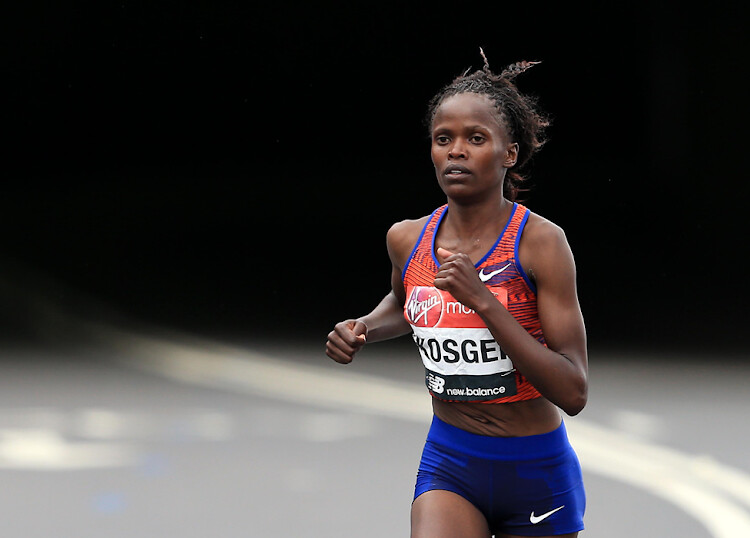
"I'm happy to be part of the team. The biggest dream of any athlete is to don the national colours and I'll do everything within my power to make the country proud," Kosgei remarked.
"It's one great opportunity I cannot take for granted. Several brilliant Kenyan athletes deserved to be on board but were left out. My goal is to steer the nation to victory," she added.

Kosgei will be gunning for the women's accolade alongside compatriots Peres Jepchirchir and Hellen Obiri. Sharon Lokedi is the reserve in the squad.
"We have a strong team of marathoners and I'm certain we can achieve something positive results if we put our heads together," Kosgei stated.
Her performance at the London Marathon on April 21 was, however, disappointing after she clocked two hours, 19 minutes, and two seconds to fizzle out to a disappointing fifth.
She will, nevertheless, find comfort in her masterclass act on March 17, 2024, where she stormed to the Lisbon Half Marathon title.
Kosgei is well aware she has a lot to pan out in Paris after her inclusion in the starting lineup ahead of Lokedi ruffled some feathers, with a section of fans arguing that she ought to have been the reserve runner judging by their recent performances.
Born on February 20, 1994, in Elgeyo-Marakwet County, Kosgei has demonstrated her gumption as a course diva since her inauguration, having bagged five World Marathon Majors.
She gleamed to the Chicago Marathon title in 2018; and took the 2019 London Marathon gold medal, becoming the youngest woman to win the event. The feat saw her record the third-best time after Paula Radcliffe in 2005 ( 2:17:42) and Mary Keitany in 2017 ( 2:17:01).
She went on to replicate her conquering exploits at the 2019 Chicago Marathon. Her credentials were boosted further by a first-place finish at the 2020.
London Marathon and another gold medal at the 2021 Tokyo Marathon.
This will be her second appearance at the Olympics after wrapping up second behind Jepchirchir at the Tokyo 2020 Olympic Games and ahead of compatriots Cheruiyot and Ruth Chepng'etich.
by Tony Mballa
Login to leave a comment
Paris 2024 Olympic Games
For this historic event, the City of Light is thinking big! Visitors will be able to watch events at top sporting venues in Paris and the Paris region, as well as at emblematic monuments in the capital visited by several millions of tourists each year. The promise of exceptional moments to experience in an exceptional setting! A great way to...
more...Abdi Gelelchu and Margaret Agai took the honors at Copenhagen Marathon
With all 15,000 entries sold out in January, the Copenhagen Marathon already set a historic record since the race was born in 1980. But the elite runners were aiming for more records Sunday May 5th as they took on the newly designed, fast and flat course in near perfect marathon weather.
Edition number 43 of Copenhagen Marathon was a new breakthrough for the race with the strongest starting field ever sent out into the streets of the capital of Denmark. The female winner of the day was Margaret Agai from Kenya, who surprised the favorites and finished in 2:27.31.
“I’m very, very happy. The spectators were amazing and carried us through,” Agai said shortly afterwards and found a smile when talking about meeting the Danish crowd.
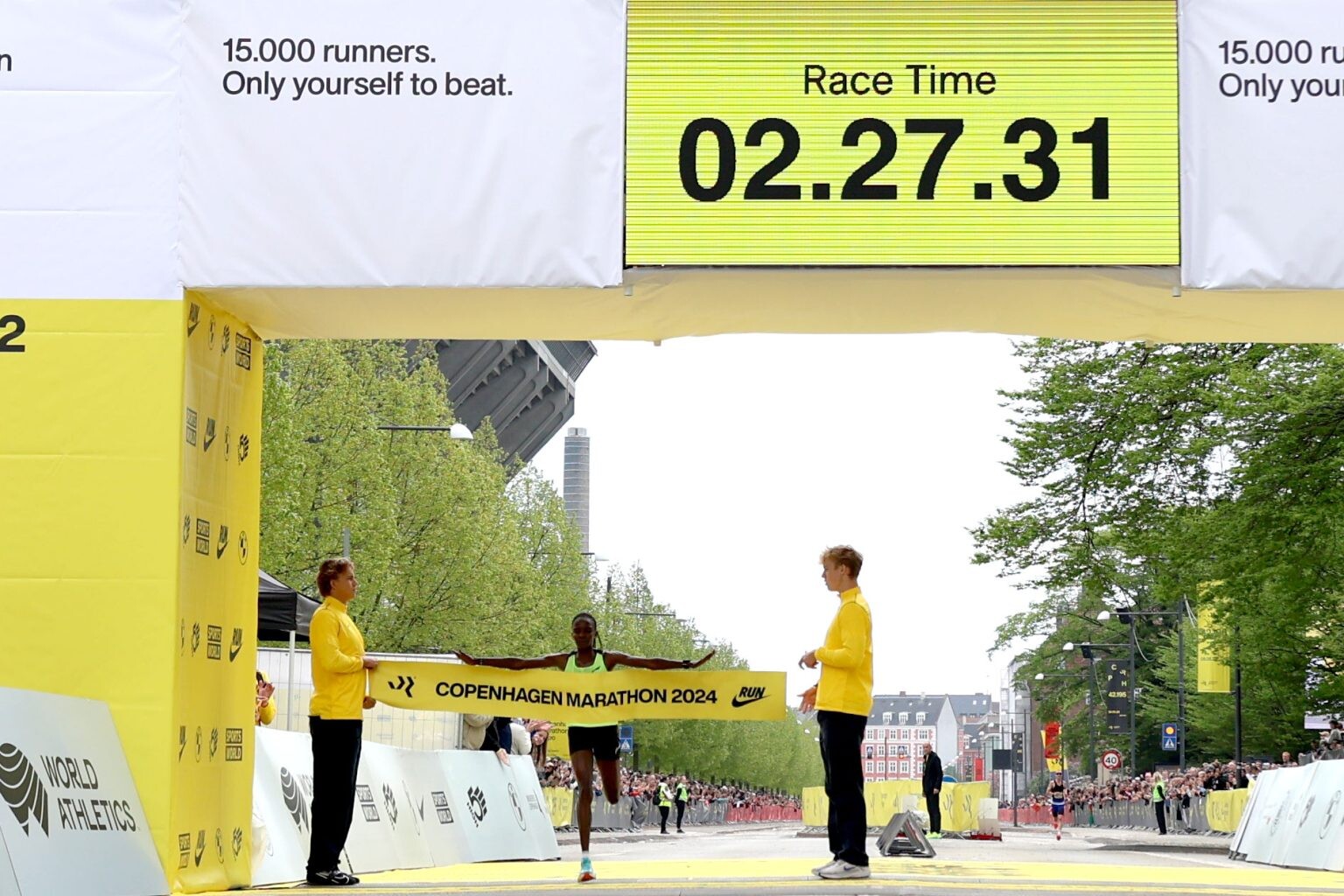
In the men’s race, favorite Gadisa Birhanu was also challenged by a strong field of favorites and was ultimately beaten by Abdi Gelelchu from Bahrain, who followed up on the surprises and crossed the finish line at Øster Allé in a winning time of 2:09.11.
“I’m very happy,” were the words that came out of the mouth of a hard-pressed winner who managed to lift his thumbs in triumph.
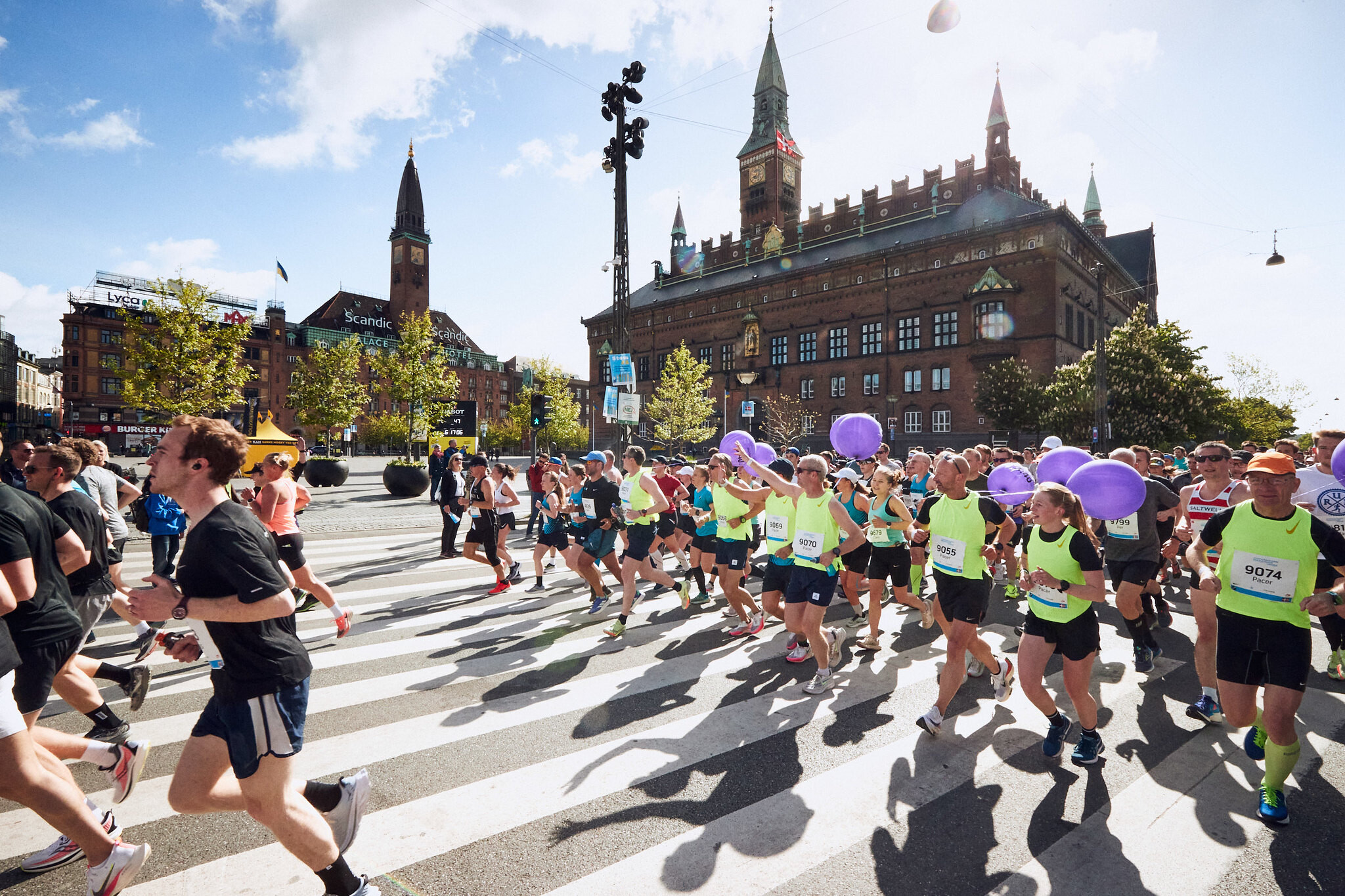
Last year’s female winner Rodah Chepkorir came into the race as the clear favorite with her race record from 2023 of 2:23.14. However, the 33-year-old Kenyan faced very strong competition. A total of 11 women were entered with times under 2 hours and 30 minutes. Mongolia’s Khishigsaikhan Galbadrakh surprisingly broke into the top 10 at the Tokyo Marathon this year and initially conquered the pacer and opened a small gap to Chepkorir and the other favorites. After 20 kilometers, she extended her lead to over a minute and was on course for direct Olympic qualification.
But her energy ran out and instead Agai came blowing from behind in a more measured race strategy to take the win and receive the flowers and be wrapped in the Kenyan flag.
Favorite defeat in the men’s raceIn the men’s race, expectations were high for Birhanu. The 31-year-old Ethiopian ran 2:04.59 when he won the Seville Marathon last year. The pacer was booked for a finishing time of just under 2:07 hours. It was a strong signal that the race record set by Eritrea’s Berhane Tsegay two years ago with 2:08.23 should be put to bed in the good conditions on an improved route. At the same time, it was well below the current time requirement for direct Olympic qualification of 2:08.10.
That goal was sought after early in the race when the favorite field of just under 10 runners completed 5 kilometers in 14.51. 25 seconds faster than the previous course record and also a pace well below the direct Olympic qualification requirements. It wasn’t enough for Gelelchu, but a lot of effort was put in to give the Danish audience a record.
After 25 kilometres, the front runners were still within reach of the race record. And after 35 km, a trio of Birhanu, Kenyan James Kiplagat and Abdi Gelelchu were decisively free and set the biodynamic GPS after breaking a yellow triumphal ribbon at the finish on Øster Allé.
Top-3 men and women
Women’s top three1: Margaret Agai, Kenya 2:27:312: Mercy Kwambai, Kenya 2:28,123: Alisa Vainio, Finland 2:28:21
Mens top three1: Abdi Gelelchu, Bahrain 2:09:112: Gadisa Birhanu, Ethiopia 2:09:553: Abebaw Muniye, Ethiopia 2:10:27
Login to leave a comment
Copenhagen Marathon
The race is special in many ways But one thing is the course around almost every part of Copenhagen. The course goes to Frederiksberg which is a very beautiful part of the city. Theres a fantastic atmosphere in the city, and a lot of spectators along the route. The course is pretty fast, and the field of elite runners is...
more...Course records could fall at Copenhagen Marathon this weekend
Sunday’s Copenhagen Marathon can once again boast a strong, East African dominated start field. In the women’s race, Rodah Chepkorir of Kenya is returning to the scene of her record-breaking race from last year, while Ethiopia’s Gadisha Berhanu in the men’s race holds the role of favorite.
With all 15,000 start numbers sold out as early as in January, the 44th edition of the Copenhagen Marathon has already set a record. At race day, Sunday the 5th of May, further records could as well be broken. In the women’s race, eyes are set on Rodah Chepkorir Tanui, who won last year’s edition in a race record of 2:23,14 hours. However, the 33-year-old Kenyan will be up for a tough task defending her title in the Danish capital. Among her strongest opponents is Derartu Gerefa of Ethiopia, who finished fourth at the Seville Marathon in February.
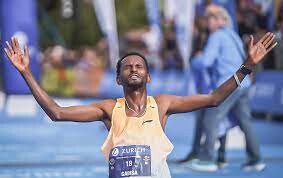
With 11 women entered with a personal best under two and a half hours, the international level of the race has never been higher. Alisa Vainio set a national record of 2:27,26 last year, and with the second pacemaker aiming for 2:26,59, the Finn will as well be targeting the Olympic entry standard (2:26,50). Another national record holder is Khishigsaikhan Galbadrakh of Mongolia, who ran 2:26,32 when finishing 8th at the Tokyo Marathon two months ago.
Birhanu of Ethiopia is the one to beatWith a personal best of 2:04,59, Gadisa Birhanu is the one to beat in the men’s race. The 31-year-old Ethiopian ran the impressive time when triumphing at the Seville Marathon last year. 10 men are entered with a personal best under 2:10 hour, among them Japan’s Tsubasa Ichiyama (2:07,41) who will have his debut on European soil. The elite field includes as well the legendary figure of Ser-Od Bat-Ochir; the 42-year-old runner has represented Mongolia at all Olympic Marathons since Athens 2004 – and at 11 (!) consecutive World Championships.
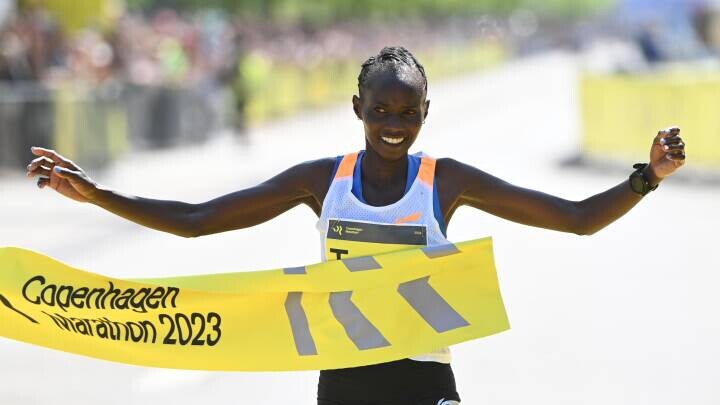
“We are thrilled to be able to present such a strong field of elite runners at this year’s Copenhagen Marathon – both men and women,” says Dorte Vibjerg, CEO of Sparta Athletics & Running.
“This is a great endorsement of Copenhagen Marathon as an organization and of Copenhagen as a city. It shows that we have the right framework for the runners to achieve something great on a beautiful, flat and fast course through Copenhagen and Frederiksberg. So if you want to see some of the world’s fastest runners unfold, Copenhagen is the place to be on Sunday.”
Pacemaker Mathew Chekwurui of Kenya is set to aim at finishing time of 2:07 hours – well below the race record of 2:08,23 set by Berhane Tsegay of Eritrea in 2022. At the same time, it’s close to the Olympic requirement of 2:06.50, so it will be exciting to see who will join that train.
The race incorporates once again the National Championships, and with deadline for Olympic qualification approaching soon, the best Danish runners are all set for fast times.
Login to leave a comment
Copenhagen Marathon
The race is special in many ways But one thing is the course around almost every part of Copenhagen. The course goes to Frederiksberg which is a very beautiful part of the city. Theres a fantastic atmosphere in the city, and a lot of spectators along the route. The course is pretty fast, and the field of elite runners is...
more...Defending champions return to defend Belfast Marathon crowns
A RECORD 5,500 runners are expected to take to the streets of Belfast on Sunday, May 5 for the sold-out Moy Park Belfast City Marathon, making it the biggest to date.
The 2023 winners, Morocco’s Mohamed Oumaarir and Kenyan Shewaye Wolde Woldemeskel, will be there to defend their respective male and female titles.
Oumaarir, who ran a time of 2:22:54 for the overall victory 12 months ago, will lead a strong contingent of international and local athletes. These include former Great Britain and Wales steeplechase representative Adam Bowden, who finished runner-up in last year’s event.
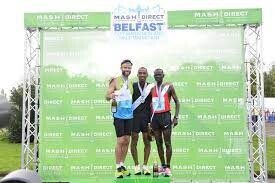
There are three interesting entries of east African origin. Former Ethiopian and now Bahrain national Aweke Ayalew finished 11th in the 2018 World Half Marathon Championships, recording a world-class time of 61 minutes and 19 seconds. More lately he clocked 2:07:12 in the 2019 Frankfurt Marathon, making him the fastest man in the field.
The Kenyan duo of Mathew Kemboi and Moses Kilmulwo also boast impressive credentials. Kemboi finished fourth in last November’s Istanbul Marathon in a time of 2:13:48, while Tuyange was 15th at the Barcelona Marathon last month in a time of 2:12:43.
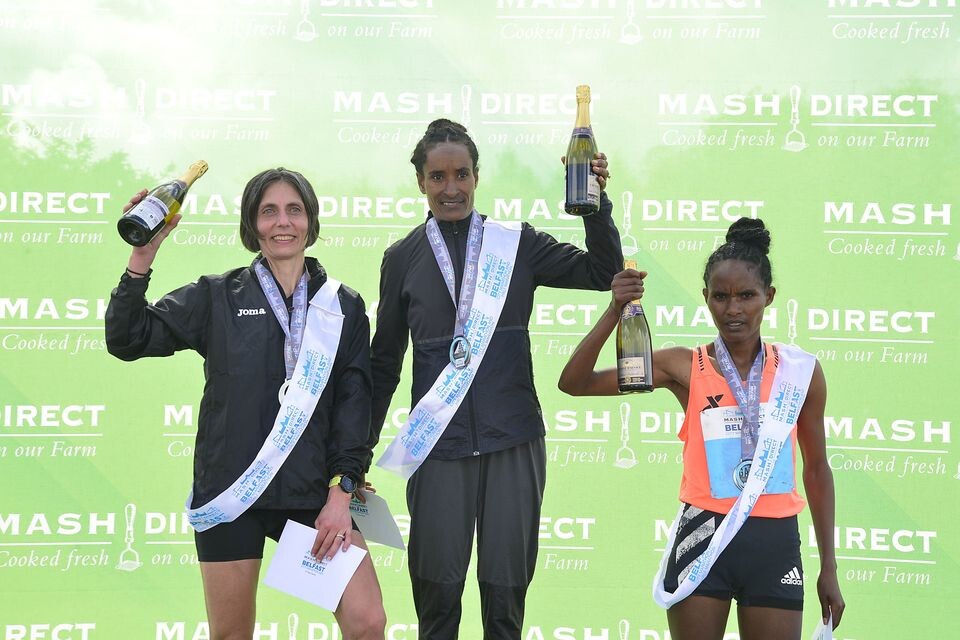
Also taking to the field, will be GB’s Michael Young, who recently ran a time of 2:24:33 in December at the Valencia Marathon; William Strangeway, who finished third in the Murcia Costa Calida Marathon last year, recording a time of 2:20:32; and Welshman, Dan Nash, who won the Great Welsh Marathon on St Patrick’s Day in a time of 2:27.19.
Favorite for the first local prize is Annadale Strider Eskander Turki, who won the 2023 Moy Park Belfast City Half Marathon in a time of 1:09:10.
Dark horse here is the comeback kid Ed McGinley, who returned to the sport after an absence of nine years to win the Larne 10 Miles just over a week ago.
Conor Gallagher of St Malachy’s should not be ignored either given he was runner-up in the 2022 Belfast Marathon.
Turning to the women’s race, it will be Woldemeskel’s third time competing in Belfast, while Morocco’s Hanane Qallouj is no stranger to the Emerald Isle either, finishing sixth at the Dublin Marathon last October in a time of 2:37:20.
Others to watch out for are Qallouj’s compatriot Laila Aziza Selsouli, who finished eighth in the Marrakesh Half Marathon, and Kenya’s Beatrice Jepkemei, who recently ran 2:30:41 in the Linz Marathon.
North Belfast Harrier Gladys Ganiel heads the home challenge.
This year’s Moy Park Belfast City Marathon runners will be joined by 12,500 relay runners and another 1,200 participants in the 8-Mile Walk, all adding up to making it the biggest mass sport participation event in the north.
by Malcolm McCausland
Login to leave a comment
Belfast City Marathon
The event has grown with the inclusion of new sponsors which now include Deep River Rock, Belfast City Council, U105, ASICS, Daily Mirror, Translink, Athletics Northern Ireland, Linwoods, Belfast Live, Centra, White's Oats, Podium 4 Sport, U105 and Tayto. The route will remain the same - starting at the City Hall and finishing at Ormeau Park. The race starts at...
more...Ezekiel Kipkorir and Vitalyne Jemaiyo Kibii won the 21st Cracovia Marathon
Ezekiel Kipkorir and Vitalyne Jemaiyo Kibii won the 21st Cracovia Marathon. 5676 runners took to the route through the streets of Kraków.
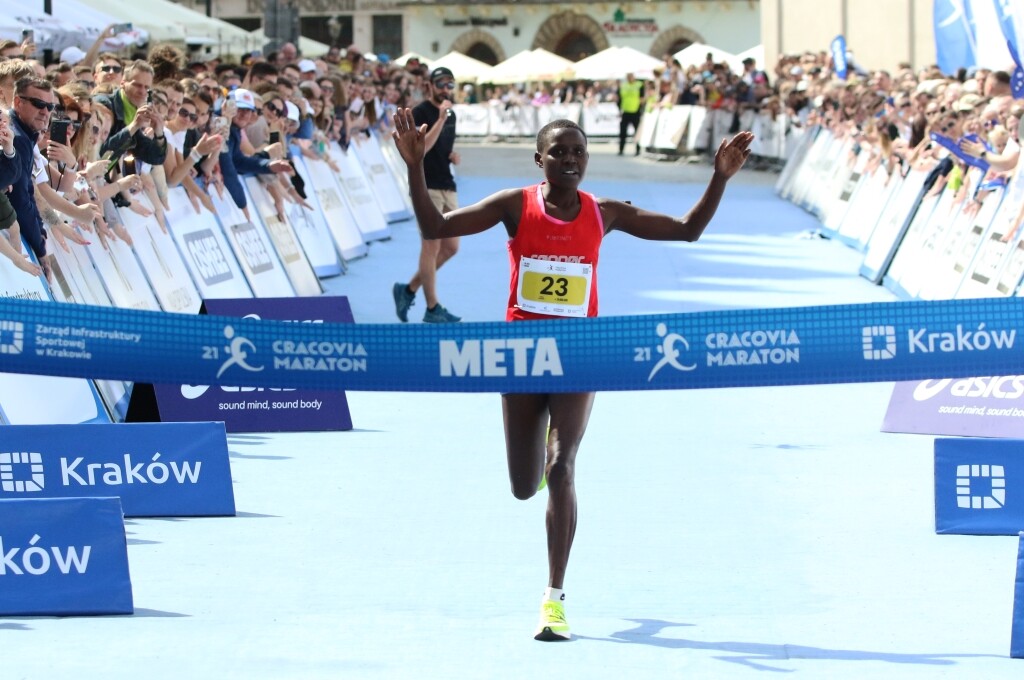
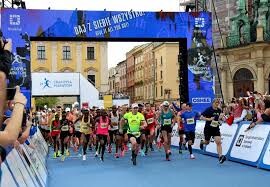
Ezekiel Kipkorir, who achieved a time of 2:13:36, and Vitalyne Jemaiyo Kibii, who covered the royal distance of 42 km and 195 m in a time of 2:39:26, became the winners of the 21st Cracovia Marathon.
The other places on the podium were taken by Shedrack Kiptoo Kimaiyo and Vitaliy Shafar among men, and Monika Brzozowska and Beata Michałków among women. 5676 runners took off on the route "through history" from the Main Market Square.
Login to leave a comment
PZU Cracovia Marathon
The Marathon, organized since 2002 is one of the most popular running events in Poland. It is also the event which brings the biggest number of international participants, who every year come to Krakow to compete. So far, the Cracovia Marathon has seen participants from 55 countries. The Sports Infrastructure Management Board of Krakow is leading the project of the...
more...Man Breaks World Record For Fastest Barefoot Half Marathon Run On Ice
Josef Šálek of Czechia ran 1:50:42 in freezing temperatures, wearing nothing but a pair of shorts.
Josef Šálek is the proud new Guinness World Record holder for the fastest half marathon completed barefoot on ice/snow, a feat he accomplished in 1:50:42 clad in nothing but a pair of short tights and an ecstatic grin. The Czech therapist, lecturer, and personal development coach bested the previous record of 2:16:34 set by Dutch runner Wim ‘The Iceman’ Hof in 2007.
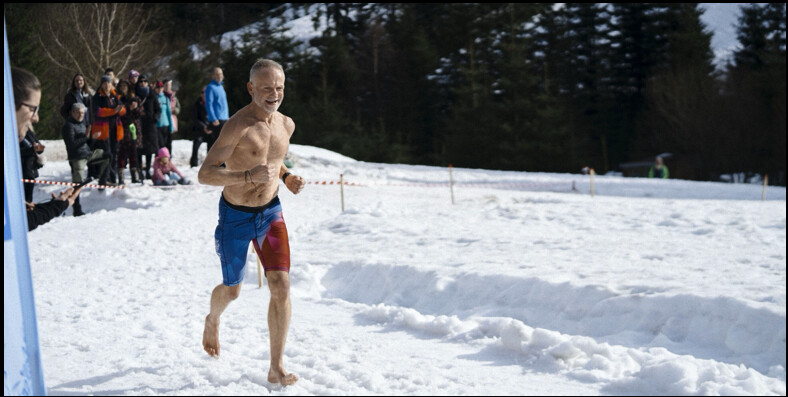
It’s not his first world record either. In 2023, the fitness enthusiast proved his extreme abdominal strength by holding a plank for 9 hours, 38 minutes, and 47 seconds, besting the previous record by more than eight minutes.
The new record for the fastest barefoot half marathon on ice was set on an open circuit in a valley near the highest mountain in Czechia (previously referred to as the Czech Republic), measured by a professional surveyor.
Technically, Šálek’s preparation for the record began back in 2013, before he even became a runner. He started hosting workshops where he would walk barefoot over hot coals and glass shards. “I needed to show people how to manage their fears and lack of self-confidence in practice,” he wrote on his website.
Then in 2017, after going through a breakup and struggling with unhealthy eating and alcohol and cigarette use, he decided to try running. It provided a distraction from his heartbreak.
“My communication with my body developed strongly,” he wrote, “and after only a few months I had the need to run barefoot and half-body. Since then, I regularly run several tens of kilometers or marathons year-round barefoot.”
In the two weeks leading up to his official record attempt, Šálek submerged his feet in a tub of ice everyday. The night before, the course froze over and it appeared that it wouldn’t be possible for Šálek to run that day after all, but after volunteers raked the ground, the athlete was able to embark on his mission to embrace the pain cave.
On the course, Šálek zigzagged and adapted his running pattern to keep from slipping on the ice. It was by no means easy—picture running an 8:27/mi average pace over sharp, slick ice whilst barefoot and scantily clad—but thanks to his training and mental fortitude, Šálek conquered his goal, and made it to the finish line with a broad smile on his face. The Guinness World Records official adjudicator, Pravin Patel, was on site to announce Šálek’s successful attempt and to hand him his certificate.
After his abdominal plank world record, Šálek told an interviewer, “I knew that in my case it’s not about demanding physical training, but rather about mastering the process… about my mindset.” One of the mental techniques he practiced was acceptance; he embraced the difficulty of the exercise. Making peace with the physical discomfort probably went a long way in helping him towards his new superlative on the ice as well.
by Runner's World
Login to leave a comment
Dr. Kris Sheppard explains how your shoe may be helping–or hindering–your stride
Shoe offset, also known as heel drop, refers to the difference in height between the heel and forefoot of a running shoe. This feature influences a runner’s stride and can have implications for injury susceptibility. We spoke to Dr. Kris Sheppard, a chiropractor at the Runner’s Academy in Toronto, to understand how the heel drop in your shoe may be impacting your running.
How does shoe offset affect running stride?
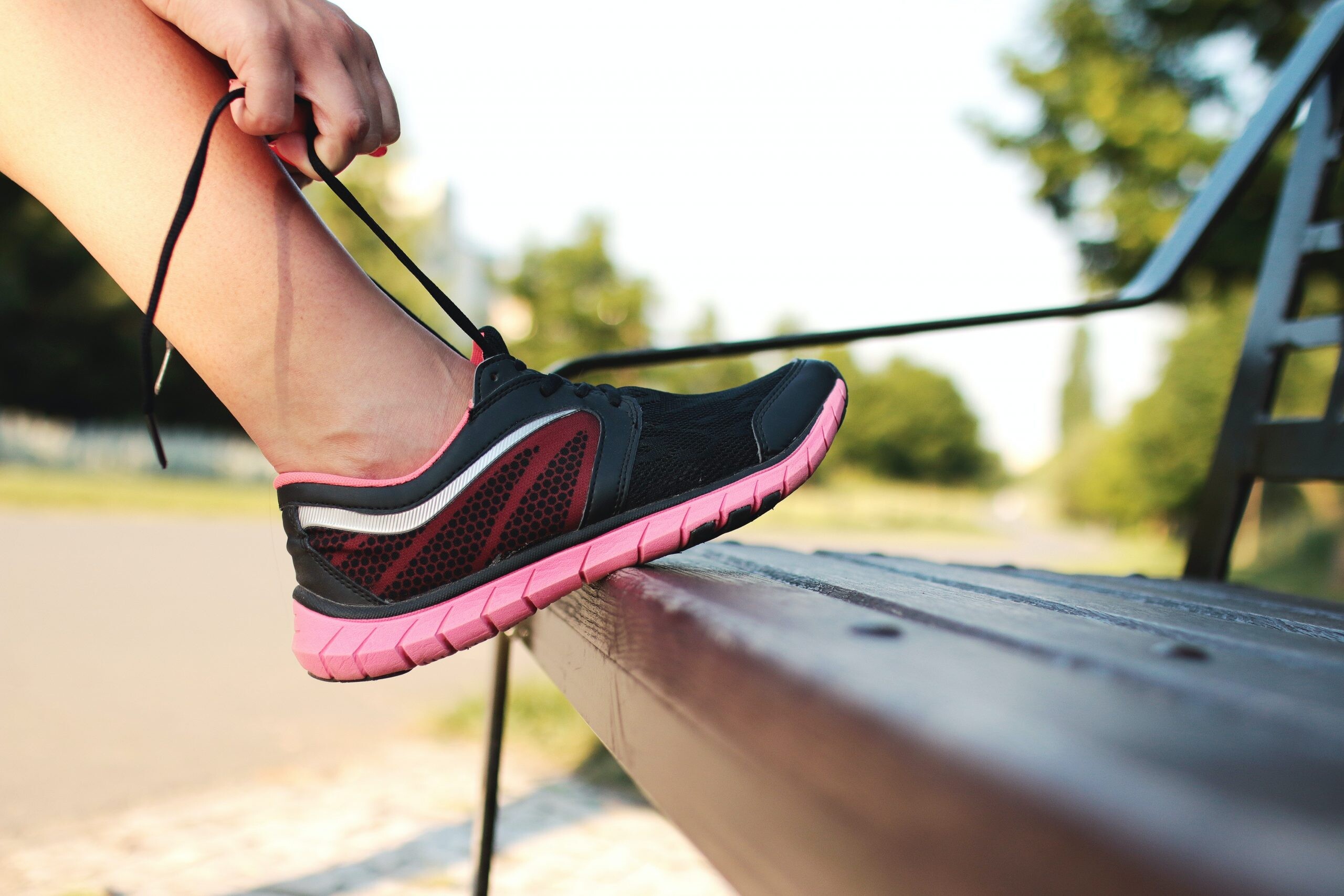
Low-drop shoes may have a drop of between 0 mm and 6 mm, whereas a higher-drop shoe will generally be between 8 mm and 12 mm. Sheppard explains that a lower heel-toe drop in running shoes can decrease inward knee motion (knee adduction), which has been associated with knee and hip issues in running. A lower drop can also reduce load at the patellar femoral joint (knee joint) by approximately 30 per cent.
“Some studies have shown that zero-drop shoes can encourage a midfoot strike, which was once considered to be protective overall,” says Sheppard. “And a midfoot strike can also help reduce forces on the patellar femoral joint.”

During the minimalist shoe trend, it was believed that lower-drop shoes were superior, however recent research suggests otherwise.
Is heel-striking bad?
Some experts suggest that higher-drop shoes encourage heel striking, which is thought to be “bad.” But Sheppard points out that heel striking is not actually the problem; the problem is that it usually leads to overstriding. More on that in a minute.
“Lower [drop] shoes have been shown to encourage a midfoot strike rather than a heel strike,” says Sheppard. “It is important to note that heel striking does not necessarily equate to overstriding. Interestingly, research has shown that the majority of runners, including elite runners like [former marathon world record holder Eliud] Kipchoge, actually land with their rear foot.”
Overstriding occurs when the foot and ankle land in front of the knee, rather than directly under the knee with the shin in a vertical position. “Imagine landing on a trampoline with your foot and ankle in front of your knee; this would result in a rebound backwards, regardless of the foot strike pattern,” he says. Over-striding increases horizontal braking forces in the body, which has been shown to increase the risk of injury–as well as slowing runners down.
It is worth mentioning that the new “super shoes” with carbon and spring-type components work with the heel-toe offset to drive runners faster and more efficiently toward the big toe, but this is only effective if landing on the rear foot.
Is a higher or lower offset better for your Achilles tendons?
“Contrary to common belief, a higher drop does not increase the risk of Achilles tendon injury,” says Sheppard. “In fact, a higher drop has been shown to help with Achilles tendon pain.”
However, the body’s tissues adapt to the way they have been loaded. If a runner has always been using a higher drop shoe and suddenly switches to a lower offset, the tissues are at greater risk of injury. To mitigate this risk, a gradual transition is recommended. For example, a small change of 2 mm can be made over a period of six months by incorporating low-offset shoes into training cycles once or twice a week. This strategy can help adapt the tendons to a lower drop and reduce the risk of injury.
Should runners buy high or low-offset shoes? Are some runners better suited to one or the other?
“In general, it is not recommended to make drastic changes in the drop of the shoe you have been consistently using if it has been working well for you,” says Sheppard. “However, if a runner is prone to knee pain, a shoe with a lower shoe may be beneficial.” This means that if you buy a new shoe you haven’t worn before, make sure the new shoe’s drop isn’t significantly lower than what you’re used to–or if it is, incorporate it into your routine gradually to avoid injury.
On the other hand, Sheppard notes that if someone is susceptible to Achilles tendon issues, a higher drop may be more suitable. He adds again that making significant changes in shoe offset can increase the risk of injury, so it is important to proceed with caution and consider personal factors and injury history when selecting running shoes.
by Brittany Hambleton
Login to leave a comment
John Korir is going to run the Boston Marathon
Two-time Los Angeles Marathon champion John Korir is targeting a podium finish in the Boston Marathon after falling short last year.
Korir said he aims to win the race scheduled for April 8 if not finish on the podium.
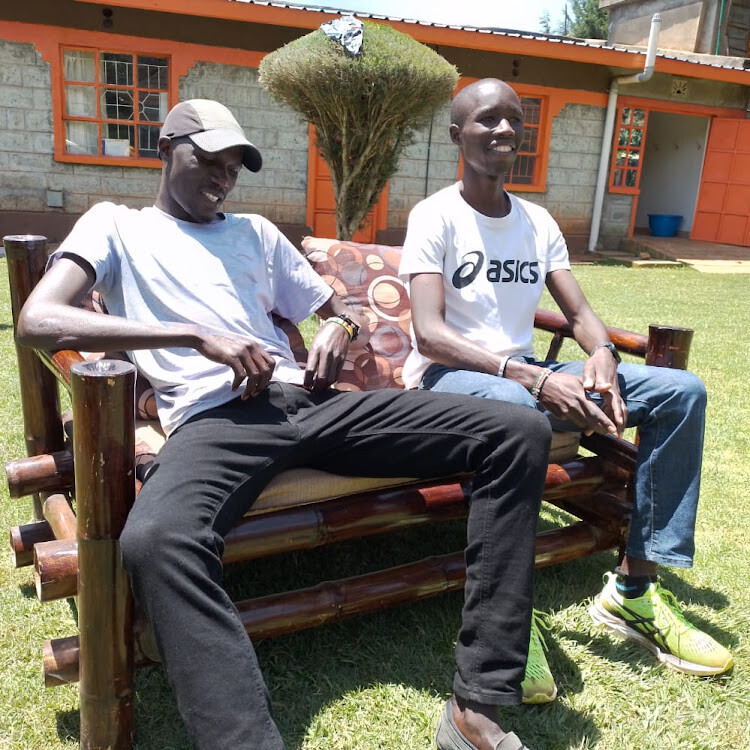
Korir, who finished 9th last year, said he believes his last year's experience will help him run away with the title.
Korir is fresh from finishing second in the Ras Al Khaimah (RAK) Half Marathon, where he clocked 58:50 minutes behind the champion Daniel Mateiko (58:45). Isaiah Lasoi (58:55) ensured an all-Kenyan podium sweep.
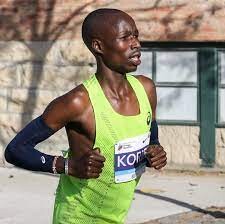
“As we speak, I am more than ready to battle for the Boston title or finish on the podium. Last year, I miscalculated and ended up in the wrong position,” said Korir.
Korir, a younger brother to former Boston Marathon champion Wesley Korir, will be seeking redemption on the course where he clocked 2:10.04 last year.
“My training is going well and I hope to secure a top position with a great time,” he said. He said RAK was a good experience for him considering he is not a half marathon runner.
“I used RAK as part of my speed work and build-up ahead of the big task in Boston and it was a great experience finishing second,” said Korir
Korir finished fourth in the Chicago Marathon, where he clocked 2:05:09. The late Kelvin Kiptum won the race in a world marathon record time of 2:00.35 followed by Benson Kipruto (2:04:02), and Dutch runner Bashir Abdi (2:04:32).
Korir will be making his third appearance at the Boston Marathon after debuting in 2022 when he finished third in 2:05.01 behind Benson Kipruto (2:04.24) and Ethiopia's Seif Tura (2:04.49).
“Last year, the Boston Marathon was too tough but I want to try my luck this year,” he said.
Korir, just like his brother Wesley, is remembered for winning the LA Marathon twice in a row. Wesley won in 2009 and retained the title in 2010 while the junior Korir won in 2021 before defending the title in 2022.
by Emmanuel Sabuni
Login to leave a comment
Boston Marathon
Among the nation’s oldest athletic clubs, the B.A.A. was established in 1887, and, in 1896, more than half of the U.S. Olympic Team at the first modern games was composed of B.A.A. club members. The Olympic Games provided the inspiration for the first Boston Marathon, which culminated the B.A.A. Games on April 19, 1897. John J. McDermott emerged from a...
more...Mateiko looks to run in London after RAK exploits
Fresh from winning the Ras Al Khaimah (RAK) Half Marathon, Daniel Mateiko has set his focus at the London Marathon scheduled for April 21 in the United Kingdom.
Mateiko arrived in the country on Monday following his exploits in the United Arab Emirates (UAE) on Saturday.
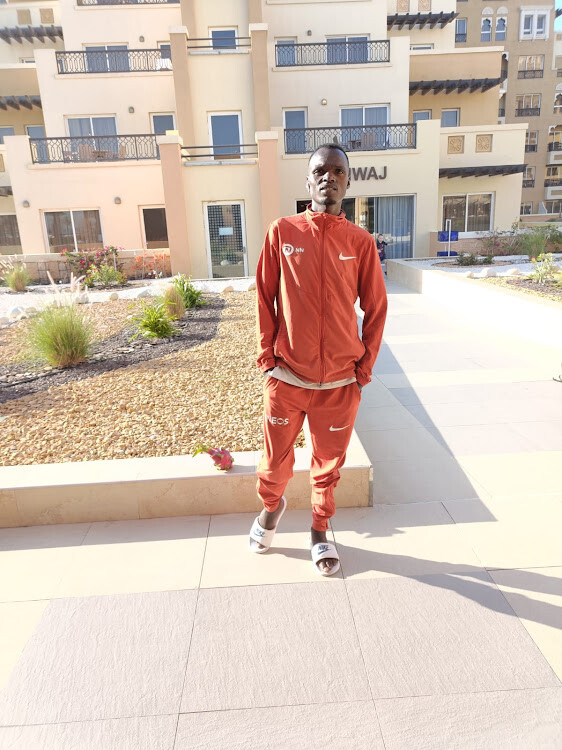
He won the race in a world-leading time of 58:45 minutes, beating John Korir to second in a PB of 58:50 and Isaiah Lasoi to this also in a personal best of 58:55.
“It is time to focus on the London Marathon following good results at RAK,” said Mateiko, who failed to complete the 2023 Chicago Marathon.
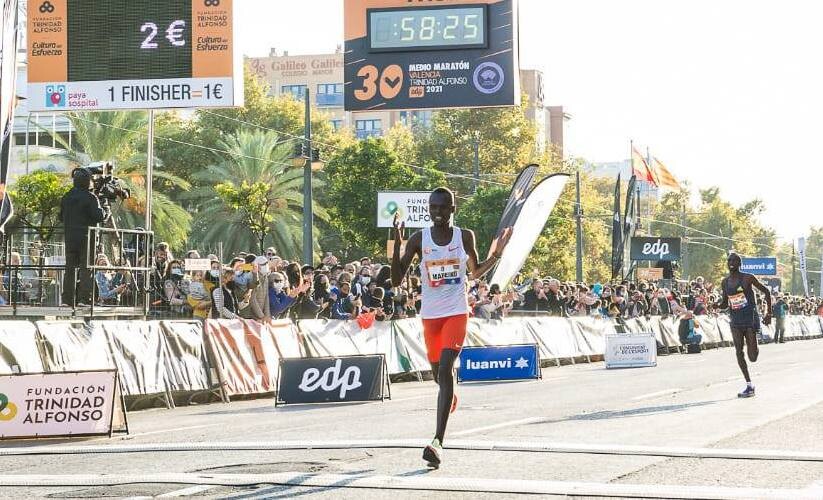
“I developed some challenges and failed to complete the race . This time around, I pray that all will be good at the London race,” said Mateiko.
He said he hopes to make up for his failures at the 2023 Chicago in London.
He noted that in the last eight half marathons, he has managed to run a sub-59 and this is good for his marathon career.
“I think I am improving with every race. When I first competed in RAK in 2022, I finished in position 6. Last year I was second and won the title this year,” he said.
In other races over the weekend, Kenya’s Dorine Cherop won the Castellon Marathon in Spain. Jerop won the title in 2:29.39 ahead of Irene Jerobon (2:30.51) with Aderra Minalle coming third at 2:31.24.
In men, James Kiplagat was the best Kenyan in the race after finishing second in 2:15.14 behind the Ethiopian duo of Ghebregiabhier Welldmicael Kibrom (2:07.25) and Abraham Medhanie (2:15.32).
At the Napoli Half Marathon, Kenyans dominated the races in both men and women.
In the men's race, Brian Kwemoi won the title in 59:26 ahead of Antony Kimtai (59:45) and Bernard Kipkurui (59:47).
Great Britain's Emile Caress (60:01 hrs), Kenyan Gideon Kiprotich Rop (60:28) and Charles Wanjiru (61:49) followed in that order.
by Emmanuel Sabuni
Login to leave a comment
TCS London Marathon
The London Marathon was first run on March 29, 1981 and has been held in the spring of every year since 2010. It is sponsored by Virgin Money and was founded by the former Olympic champion and journalist Chris Brasher and Welsh athlete John Disley. It is organized by Hugh Brasher (son of Chris) as Race Director and Nick Bitel...
more...Mateiko and Gebreselama with bright future after dominant RAK wins
There were breakout victories for hitherto little known Daniel Mateiko of Kenya and Tsigie Gebreselama of Ethiopia in the Ras Al Khaimah Half Marathon in the United Arab Emirates early Saturday morning. And the imperious manner of their wins on a breezy, humid morning with a sea mist invading the latter stages suggests they both have a very bright future.
Yet the contrast in their race-winning tactics could hardly have been greater. Mateiko led from the gun, and only conceded the lead for brief periods, before outgunning his colleagues John Korir and Isaia Lasoi in the final kilometre, to win in a world leading 58min 45sec. Korir and Lasoi finished five and ten seconds behind respectively.
In contrast, Gebreselama contented herself to stay in the pack until she was ready to strike for home in the last five kilometres. Only former world record holder (64.31) and 2020 winner, colleague Ababel Yeshaneh could go with her, but that challenge didn’t last long. And such was Gebreselama’s attritional pace that by the time she crossed the line in 65.14, Yeshaneh was exactly half a minute in arrears. Jackline Sakilu of Tanzania was the surprise of the day, setting a national record of 66.05 in third place. What was no surprise was that the podium places were taken by athletes from three East African countries who share the same topography, the high altitude plateau of the Great Rift Valley.
Konstanze Klosterhalfen of Germany threatened to gatecrash that exclusive club up to the hallway point in a race, having come directly from her own training camp in Ethiopia. But, having headed the field up to 10k, which she passed in 31.09, which would have been a PB had she finished the race, she tailed off drastically and dropped out shortly afterwards, saying she did not feel well.
Olympic marathon champion, Peres Jepchirchir had been one of the favourites to win, but in the bustle of the start, someone trod on her heel and she lost around 20sec putting her shoe back on. Surprisingly for someone with her long experience, instead of working her way gradually back to the group, she shot off and rejoined them before they had completed the first kilometre. She paid for that unnecessary effort in the closing stages, and could only finish seventh in 67.19.
Gebreselama was not entirely unknown prior to today; she finished second in the world cross country championships in Australia last year. ‘That was my best performance, but today is better than that, because I won,’ she said after the race. ‘I knew I was in good shape. I think I like cross country and road running equally, but now I must prepare for the track’. In a reversal of tradition, she is leaving here for a four-month stint in an altitude training camp in the USA, before she runs the Ethiopian trials with the intent on making the Olympic team at 10,000 metres.
Having been told that there was no pacemaker in the men’s race, we wondered why Mateiko, who led from the gun kept consulting his watch and checking over his shoulder at his pursuers. Maybe he was surprised they were still there for so long, right up to the final kilometre. But having done all work, he was rewarded with a more than worthy victory, then engagingly stated that that was his intent throughout the race. ‘After finishing second last year, I promised myself to win. But the conditions were difficult; it was windy and very humid.’
Mateiko hails from Mount Elgon on the Kenya-Uganda border, but now trains in Eldoret with twice Olympic marathon champion Eliud Kipchoge under the tutelage of former steeplechaser Patrick Sang. ‘Patrick told me I was in good shape, but to be strong-minded. And Eliud is giving me advice too. I would like to have his consistency. Now my dream is to run well in the London Marathon’. If his marathon debut is as impressive as his win here today, the London crowds in April will be in for a treat.
Results, Men:
1 Daniel Mateiko KEN 58:45
2 John Korir KEN 58:50
3 Isaia Lasoi KEN 58:55
4 Gerba Dibaba ETH 59:38
5 Benard Koech KEN 59:42
6 Birhanu Legese ETH 59:43
7 Tamirat Tola ETH 59:46
8 Amos Kibiwot KEN 59:51
9 Boki Diriba ETH 60:10
10 Alphonce Simbu TAN 60:28
Women:
1 Tsigie Gebreselama ETH 65:14
2 Ababel Yeshaneh ETH 65:44
3 Jackline Sakilu TAN 66:05
4 Margaret Chelimo KEN 66:31
5 Evaline Chirchir KEN 66:36
6 Catherine Amanang’ole KEN 66:49
7 Peres Jepchirchir KEN 67:19
8 Gete Alemayehu ETH 67:25
9 Megertu Alemu ETH 69:23
10 Ashete Bekere ETH 70:03
Login to leave a comment
Rak Half Marathon
The Rak Al Khaimah Half Marathon is the 'world's fastest half marathon' because if you take the top 10 fastest times recorded in RAK for men (and the same for women) and find the average (for each) and then do the same with the top ten fastest recorded times across all races (you can reference the IAAF for this), the...
more...14 Tips to Make the Most of Your Treadmill Workouts
Improve performance with your indoor workouts, thanks to this expert-backed advice.
We’re going to go out on a limb here and guess that if given the choice between an outdoor run and a treadmill session, most athletes would pick option A, no hesitation. And while there’s a lot of stigma surrounding the dreadmill—er, treadmill—there are also a lot of legit perks to relying on this tool every now and then.

The obvious: Treadmills can help you complete scheduled workouts when weather or safety concerns kibosh outside runs, T.J. Garlatz, cross country and track and field coach at Western Washington University, and certified run coach with RunDoyen, tells Runner’s World.
They also allow busy runners to train more consistently. For example, folks with a treadmill and kids at home can hop on the machine and bust out a workout without having to arrange childcare, Garlatz adds. Another plus: You can control key variables—namely, pace and incline—making it easy to accomplish specific workouts, like hill repeats and threshold runs. This can be especially helpful for runners who don’t live in hilly places but want to train that skill, as well as those who struggle to pace themselves.
To boot, treadmills provide a flat, soft surface, which can make running more comfortable for people with joint pain or injuries, Kai Ng, USATF- and RRCA-certified run coach in New Jersey and New York, tells Runner’s World.
Of course, to reap the benefits of treadmills, you need to be willing to use them in the first place, which for many runners involves overcoming the negative association they have with this oft-loathed machine. To help facilitate a more positive mindset, we tapped Garlatz and Ng for their tips for how to run on a treadmill. From beating boredom to setting paces to specific workouts to try, here’s the advice that may just tempt you to hop on the belt today.
1. Toggle With Speed and Incline
The biggest mental block people have with the treadmill is “the monotony and boredom associated with it,” Garlatz says. And if you’re running at the same exact speed and incline for your entire treadmill workout, of course it’s going to be a mind-numbing experience.
One easy way to shake things up? Change the pace and/or grade often throughout your workout. For example, do two minutes at a 3 percent grade, then two minutes flat, then two minutes at a 5 percent grade, then two minutes flat, then two minutes at a 7 percent grade, then two minutes flat, and repeat that pattern until you’ve completed your mileage for the day. Or, embrace the concept of Fartleks and alternate between easy, moderate, and hard paces. (Of course, there are nearly infinite ways to vary your pace and incline in one workout, these are just two examples.)
However you choose to splice things up, expect your workout to feel a whole lot quicker. “As you’re rotating through either pace zones or incline zones, after a while, you don't realize it and 25 minutes have passed,” Garlatz says.
2. Give Yourself Time to Find a Flow
Treadmill running (and really, any type of running) is not going to feel awesome for the first mile or two. “I don’t think anybody really enjoys the first 20 minutes,” Ng says. “No one starts running and says that this is amazing. Not even elite athletes.”
Instead, “it takes some time to get into a flow state where everything locks in and you feel good,” he explains. Remind yourself of this fact before you start your treadmill workout so that you can better embrace the initial discomfort instead of being tempted to quit three minutes in when your legs still feel like lead.
3. Focus on Form
Logging an easy run on the treadmill is “a great opportunity to work on good running form,” Ng says. That’s because the surface is soft and even, and there are fewer distractions compared to outdoor running, he explains. To do this, complete a body scan every five minutes.
Here’s how: First, check your posture. Are you standing up tall? If not, imagine a balloon gently pulling the top of your head, straightening your spine, Ng says. Next, think about relaxing your shoulders, arms, and hands. Then, make sure you’re leaning slightly forward from your ankles (not your hips) and focus on pushing the belt backwards with every step, he says.
Finally, note where on the belt you’re running. “‘The ideal place is probably the middle,” Ng says. “You don’t want to be too far back where you have to worry about falling off or you don’t want to be too far forward where it intrudes on arm swing.”
4. Combine Outdoor Runs With Treadmill Time
The treadmill doesn’t have to be an all or nothing tool. “You can make treadmill running part of your run—it doesn’t have to be the run,” Ng says.
What he means by this: Weather and location permitting, instead of committing to a full workout on the treadmill, which in itself can be daunting and loathsome, warm up by jogging outdoors to the gym. Once you get there, hop on the belt and run a little faster for a brief period of time (for example, go for 20 minutes at marathon pace). Then, get off and jog home at an easy pace, Ng suggests. This hybrid approach can reduce the intimidating factor of treadmill running by bookending your run with fresh air and sunshine.
5. Recruit a Friend–or Five
Fact: “All running is better when you’ve got friends or workout buddies,” Garlatz says. Though most social runs happen outdoors, cajoling a pal or group to join you for a treadmill session (so long as you have access to a space with multiple machines in a row) can be a great way to make an otherwise loathsome workout more appealing.
Don’t know any local people who run? Reach out to an area run club to get connected with possible treadmill buddies or sign up for Peloton to join a virtual community.
6. Pair It With Something Positive
One surefire way to make the ‘mill more palatable is to cue up a favorite movie or TV show to watch it while you stride, Garlatz says. Consider it a treadmill-specific treat (after all, you can’t safely stream Netflix while running outdoors) and save up your most-anticipated episodes for the days when you’ll be hopping on the belt. A side benefit of this approach: By combining exercise and screen time, you can free up your schedule late in your day when you may otherwise be parked on the couch watching the tube.
Just be sure to save this for an easy or long treadmill run where you can just zone out instead of a speed or interval-focused workout that requires more concentration.
Oh, and speaking of concentration, if you’re streaming and striding, make sure to stay aware of your surroundings. Obviously you need to pay attention enough so you don’t fall off the treadmill, Ng says.
Not a TV or movie buff? Lean on your go-to podcast or favorite Spotify playlist to help pass treadmill minutes.
7. Try a Threshold Run
Outdoor threshold workouts can be a tough skill to master, considering people tend to either over or undershoot their goal pace, Garlatz explains. But on the treadmill, pacing is guaranteed: Simply input your desired speed and then resist the urge to toggle with the numbers until you’ve completed your workout. You can also pay attention to your heart rate as you go to make sure you stay within that zone.
8. Conquer Hills
Like we mentioned, treadmills can be a great way to incorporate hill-specific training, and playing with the incline can be a surefire hack for making your workout more interesting.
For a no-brainer hill workout, simply use the machine’s “hill run mode” (many treadmills have this) and you’ll get a workout that automatically cycles through varying incline levels, Garlatz says.
If your treadmill doesn’t have this feature, simply adjust the incline manually. Garlatz recommends alternating between a 2, 3, and 4 percent grade. If you’re looking for a little more challenge, increase the grade to 6, 7, or 8 percent for brief bursts, though keep in mind “once you get past 6 or 7 percent, it’s honestly pretty darn steep and it makes it a little bit less enjoyable,” Garlatz warns.
Another option: If you’re training for a specific race with known hills, look up the course elevation profile and simulate some of the climbs during your treadmill runs, Ng says.
9. Run Intervals for Time vs Distance
The treadmill can be a great place for speed workouts, but instead of going for distance, run for time. That’s because the former can involve doing a lot of math—wait, how many tenths of a mile equals one 200-meter repeat?—which can be distracting and tedious, Ng says. Plus, if the treadmill is running continuously, sometimes it’s hard to remember exactly what distance you started a sprint at (and thus when it’s time to pump the brakes), Garlatz adds.
For a fuss-free workout, crunch the numbers ahead of time to figure out how to translate your sprint workout from distance into time. For example, if you typically run 400-meter sprints at an 8-minute mile pace, aim to run hard for 2 minutes on the treadmill at 7.5 mph.
10. Embrace 0% Grade
You may have heard the common advice to always set the treadmill to a 1 percent incline if you want to simulate running on flat ground outdoors. “The theory behind it is that because there’s no wind resistance or air resistance that you’re encountering when you’re running on a treadmill,” Garlatz explains. So, by bumping up the treadmill incline, you level the playing field, so to speak.
But a 1 percent grade isn’t always necessary, Gartlaz caveats. In fact, he sometimes encourages athletes to leave the grade at 0 and instead run at a slightly faster pace—say, 7:50 per mile versus 8 minutes. “If you put the treadmill at 1 percent and theoretically, the effort is a little bit harder, our legs aren’t turning over as fast,” he explains. “And so if you keep the incline flat, then sometimes you’re getting a little bit more practice just turning your legs over more quickly.” This can help train your neuromuscular system to be able to maintain faster paces, which can become helpful in a race day scenario, he explains.
11. Stay Hydrated and Cool
Unless it’s the heat of the summer, chances are you’ll sweat more during a treadmill workout compared to an outdoor session. That’s because on a treadmill, the room tends to be hotter than outside and the heat your body generates from exercise hangs around you, sort of like a hot fog, Garlatz explains. Compare that to outdoor running, where the naturally cooler temps and wind resistance help cool you as you stride, and it’s no surprise you may overheat on a treadmill.
Combat the effects of that—namely, discomfort and diminished performance—by bringing ample hydration. Also consider propping a fan on the treadmill for mid-workout cooling. Even a little tiny fan can “go a long way,” Ng says.
12. Don’t Trust Your Watch
PSA for all runners who use a fitness smartwatch: You can’t trust the distance and pacing data for treadmill runs. “At least for now, the GPS and indoor running mode for Garmin, for any other running watches, is just so inaccurate,” Ng says. So instead of tracking your workouts via a wrist-worn device, simply rely on what the treadmill itself reports for your distance and pace, he advises.
13. Work on Cadence
Another way to rev up your excitement for the treadmill—plus practice your cadence—is to line-up a beats-per-minute (bpm)-specific playlist. Ng recommends striding at 150 bpm or faster, he explains.
On Spotify or most any other music provider, search for playlists tagged under a certain bpm. A bunch of options should show up; pick one that jives with your musical tastes. Then, once you’re adequately warmed up, hit play and do your best to stride to the rhythm.
14. Maintain Paces You’d Run Outside
Need to move a scheduled outdoor run to the treadmill? You don’t have to reinvent the wheel. “A lot of the components are really easy to mimic,” Gartlaz explains. A well-rounded run will start and end with easy running, two components Gartlaz recommends also doing on the treadmill.
In terms of the workout itself, whatever target pace you planned for your outdoor run will likely suffice for a treadmill session, Gartlatz says. For example, if you were aiming to hold a 9-minute-per-mile pace outside, then that should be your target for the treadmill—most machines will tell you how a mile-per-hour pace corresponds to a minutes-per-mile pace, but if not, here’s a quick cheat sheet you can reference.
For interval and threshold running, just make sure you know ahead of time which pace zones you’re targeting so you can set the treadmill accordingly. Also, don’t feel beholden to the numbers. “You definitely can run by feel and just adjust the paces up and down accordingly,” Gartlaz says.
by Runner’s World
Login to leave a comment
Kelvin Kiptum: Thousands mourn marathon world record holder at funeral in Kenya
On Friday in Chepkorio, Kenya, thousands gathered for the funeral of marathon world record holder Kelvin Kiptum, who died at the age of 24 in a car accident on Feb. 11 with his coach, Gervais Hakizimana.
Kiptum will be remembered as one of the biggest rising stars in the sport for his record-breaking two-hour and 35-second run to break the world record at the 2023 Chicago Marathon.
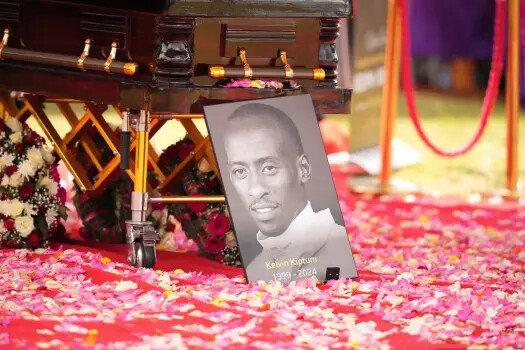
Kiptum’s widow, Asenath Rotich, led the mourners at the funeral for the Kenyan marathon star. According to BBC Africa, she broke down when revealing that the couple had been planning a big wedding celebration in April. He had stunned the world in his short marathon career, and figures from sports and politics came to pay tribute to a man whose life had promised so much.
Kenyan president William Ruto was in attendance, as well as World Athletics president Sebastian Coe, who believed Kiptum would have become the first person to run a competitive marathon in under two hours. “It is a frustration to all of us that we won’t witness what I truly know he was capable of,” Coe told BBC Africa. “For sure he would have broken it. It would have been (Roger) Bannister and Edmund Hillary, both of them, wrapped into one.”

Kiptum was looking to better his world record time at the 2024 Rotterdam Marathon in April.
Also in attendance were notable Kenyan athletes Faith Kipyegon, former world record holder Paul Tergat, and 2022 London Marathon champion Amos Kipruto, who was one of Kiptum’s pallbearers at the service. Eliud Kipchoge did not attend as he continues to prepare for the Tokyo Marathon on March 3.
“Since he arrived… he has rewritten history,” said Tergat. “He has a legacy that we’ve never seen in this world. We are here to celebrate what he has achieved in a very short time.”
Before Kiptum became one of the world’s biggest marathon stars, he had worked as a livestock herder and trained as an electrician in Chepkorio. The government in Elgeyo-Marakwet County plans to honor the late marathoner by building an athletics stadium in his name.
by Marley Dickinson
Login to leave a comment
RAS AL KHAIMAH HALF MARATHON IS ON SATURDAY AND IT SHOUlD BE A FAST ONE
New regime, new course, but with Olympic and world champions and the usual array of speedsters, Saturday’s Ras Al Khaimah Half Marathon is virtually assured of the sort of fast times that have been a feature of the event throughout its 17 year history, including three women’s world records.
Pride of place both on the start list and at this morning’s press conference in one of the smaller emirates in the UAE were Olympic marathon and three time world half-marathon champion, Peres Jepchirchir of Kenya, and keeping the balance in the long-term East African distance running rivalry, world marathon champion Tamirat Tola of Ethiopia heads the men’s entry. The wild card, hoping to gatecrash the party is Konstanze Klosterhalfen of Germany, who surprised the East Africans when she beat a dozen of them to win her debut half-marathon in Valencia in 2022.
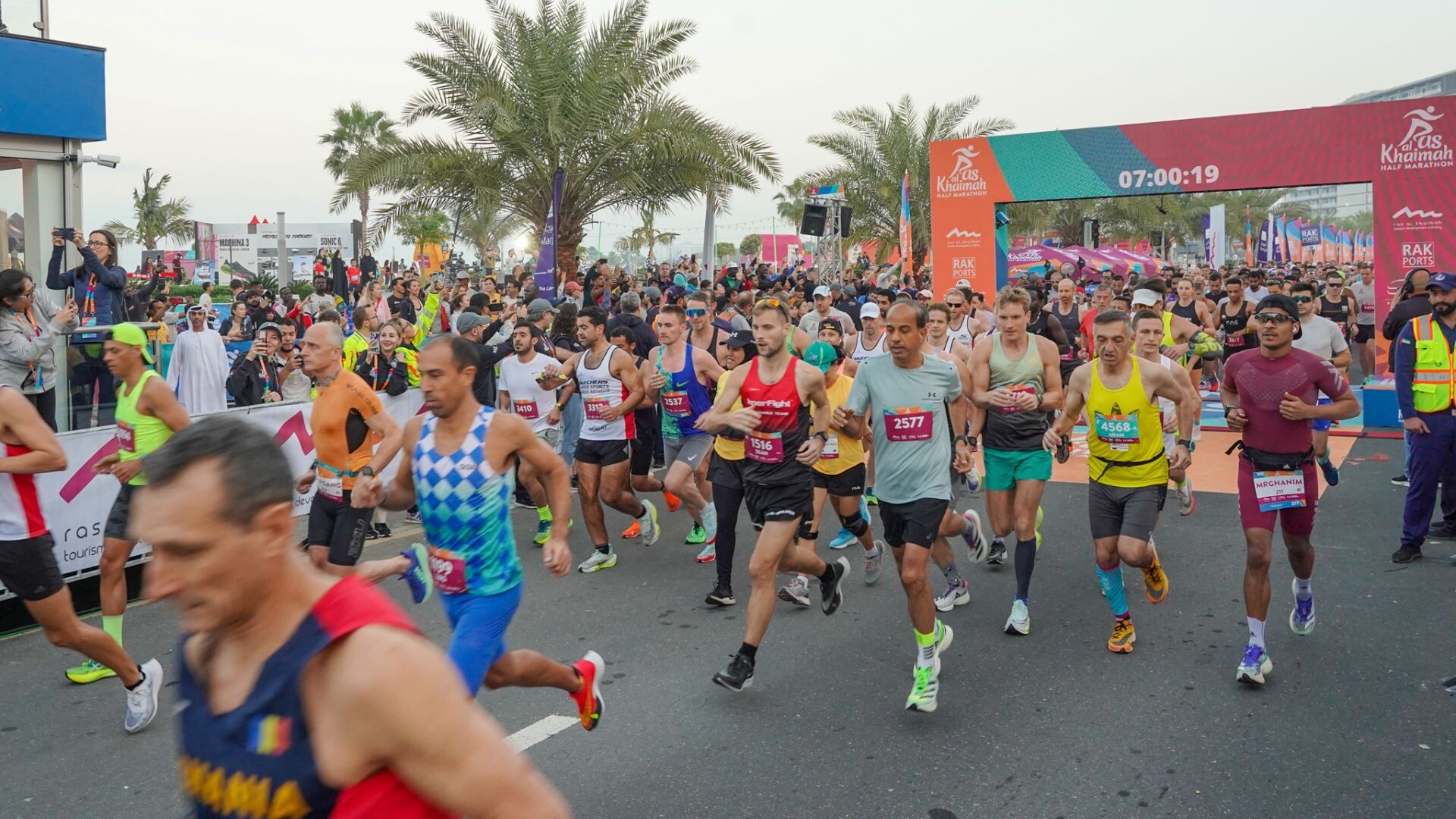
Jepchirchir may neither be the fastest marathoner or half-marathoner among current women long distance runners, but she knows how to win races, an asset far more valuable than fast times. In the seven months between late August 2021 and mid-April 2022, she won the Olympic, New York and Boston Marathons, a rare collective achievement. In her comeback marathon following an injury, she finished third in last year’s London Marathon. And she has won 12 of her 16 half-marathons. She is loath to admit her plans yet, but this RAK ‘half’ is perfectly scheduled as a springboard, to going back to London in April, to upgrade that third place.
Tola was similarly annoyed that an injury preventing him successfully defending his 2022 world marathon title in Budapest last summer, but a speedy recovery saw him break the long-standing New York Marathon record with 2.04.58 three months later. He is one of the few elites to be making his debut in the RAK ‘half’ and the scale of his task may be judged by the fact that on paper there are 15 men faster than his best of 59.37 set seven years ago in Prague. But he suggested that is due for drastic revision. ‘I’d like to think I can do under 59 minutes if the race turns out to be fast,’ he said at the press conference. Fastest man in the field is Daniel Mateiko of Kenya with 58.26, but his colleague Benard(sic) Kibet has the advantage of having won last year in 58.45.
Klosterhalfen, ‘Koko’ to her pals may prove to be not only the wild card, but the joker in the pack in the women’s race. A world bronze medallist on the track and European 5000 metres champion, the German called a halt to her summer season last year when a foot injury caused her to reassess her career. She had changed her shoe sponsor, left her coach and long-term training venue in the USA already. She then switched again and has teamed up with Gary Lough, latter-day coach to Mo Farah and spouse of former world record holder Paula Radcliffe (here in RAK as a TV commentator). Klosterhalfen has also switched her altitude training venue to Addis Ababa, where she has just spent six weeks, coming directly to here. ‘Road running is still a bit of an adventure for me’, she said this morning. ‘I still want to run on the track, but I want to more road races’.

The roll-call of winners since the race began in 2007 is a ‘Who’s Who’ of distance running over the last two decades; beginning with Sammy Wanjiru and Berhane Adere in the inaugural race, via luminaries such as Patrick Makau, Geoffrey Mutai, Elvan Abeylegesse, Mary Keitany, Geoffrey Kamworor, Lelisa Desisa, Samson Kandie and Hellen Obiri. Add to that Jepchirchir herself who won in 2017 in a then world record of 65min 06sec.
The promoters of the successful marathon down the road in Dubai have been invited this year to give the RAK ‘half’ a makeover, and they began by introducing a 10k race for locals and altering the half-marathon course. ‘It’s faster and better than any route before here in Ras Al Khaimah; we’ve cut out some of the sharp turns,’ said race director Peter Connerton, ‘so we’re hoping for at least similar times and hopefully better. But with a couple of good races into the bargain’.
ELITE CONTENDERS
MEN
Daniel MateikoKEN58:26
Kennedy KimutaiKEN58:28
Seifu TuraETH58:36
Amdework Walelegn ETH 58:40
Benard Kibet KoechKEN58:45
Alex Korio KEN 58:51
Birhanu Legese ETH 58:59
Haftu Teklu ETH 59:06
Tamirat TolaETH59:37
WOMEN
Ababel YeshanehETH64:31
Margaret KipkemboiKEN64:46
Peres JepchirchirKEN65:06
Catherine Amanang’ole KEN 65:39
Konstanze KlosterhalfenGER65:41
Tsigie Gebreselama ETH65:46
Evaline ChirchirKEN66:01
Vivian Kiplagat KEN 66:07
Yalemget YaregalETH66:27
Login to leave a comment
Rak Half Marathon
The Rak Al Khaimah Half Marathon is the 'world's fastest half marathon' because if you take the top 10 fastest times recorded in RAK for men (and the same for women) and find the average (for each) and then do the same with the top ten fastest recorded times across all races (you can reference the IAAF for this), the...
more...Konstanze Klosterhalfen is running the RAK Half Marathon
Konstanze Klosterhalfen is one of the few Europeans who have successfully challenged East African superiority in long distance running in recent years; but the German star will have a mass challenge from Kenyans and Ethiopians in her next venture, the Ras Al Khaimah Half Marathon on Saturday February 24.
The reigning European 5000 metres champion ‘Koko,’ to her fans, won bronze in the World Championships at that same distance in 2019, but her debut victory over a posse of leading East Africans in the Valencia Half Marathon in October 2022 signalled not only a step-up in prestige but also potential for success in the full marathon. And RAK in nine days’ time will be another stepping stone.
The RAK ‘half’ has been one of the fastest 21.1k races in the world since its inception 17 years ago in one of the smaller emirates in the UAE. The list of winners and record breakers reads like a ‘who’s who’ of distance running. Leading this year’s women’s field and a formidable opponent for Klosterhalfen is reigning Olympic marathon champion and three-time world ‘half’ winner, Peres Jepchirchir of Kenya, who set a then world record of 65:06 when she ran RAK in 2017. Burgeoning competition and the advent of super-shoes has resulted in that record now standing at 62.52, to Letesenbet Gidey of Ethiopia.
Klosterhalfen’s debut win in Valencia came in 65:41; and with another former world record holder – Ababel Yeshaneh of Ethiopia (64:31) in the RAK field, the German will not have an easy task, the more so since she took a break in the second half of last summer season, and has not raced for six months. She was understandably cautious this week when she said, ‘Overall I am happy with how my training has been going and I’m ready to test myself and see exactly where I am after a good training camp. I’m certainly looking forward to returning to racing, especially at the Ras Al Khaimah Half Marathon as it is a race I’ve heard a lot about’.
Klosterhalfen spends a lot of time training at altitude in the USA, and in her quieter moments has walked the runway at Berlin Fashion Week, and also plays piano and flute; but running full tilt for just over an hour before breakfast will be the order of the morning a week on Saturday.
Login to leave a comment
Rak Half Marathon
The Rak Al Khaimah Half Marathon is the 'world's fastest half marathon' because if you take the top 10 fastest times recorded in RAK for men (and the same for women) and find the average (for each) and then do the same with the top ten fastest recorded times across all races (you can reference the IAAF for this), the...
more...Striking similarities between Kelvin Kiptum and Samuel Wanjiru who both died in tragic fashion
Pulse Sports explains how the careers of marathon sensations Kelvin Kiptum and Samuel Wanjiru followed the same path before they met their death in tragic fashion.
The world is still coming to terms with the untimely death of world marathon record holder Kelvin Kiptum, who passed away alongside his coach, following a road accident on Sunday.
Kiptum and his Rwandan coach Gervais Hakizimana had big plans for the year that included an attempt at running a sub-two at the Rotterdam Marathon as well as winning Olympics gold but that is now water under the bridge.
The athlete’s death has robbed not just Kenya but the world an incredible talent who was set to dominate the marathon, bringing back memories of the late Samuel Wanjiru, who passed away similarly in tragic fashion in May 2011.

The two men’s careers and the manner in which they died have very striking similarities which will leave many surprised.
Died in tragic fashion
While Kiptum lost control of his car before hitting a tree, along the Elgeyo Marakwet-Ravine road, killing him on the spot, Wanjiru died following a mysterious fall off a balcony at his house in Nyahururu on May 15, 2021.
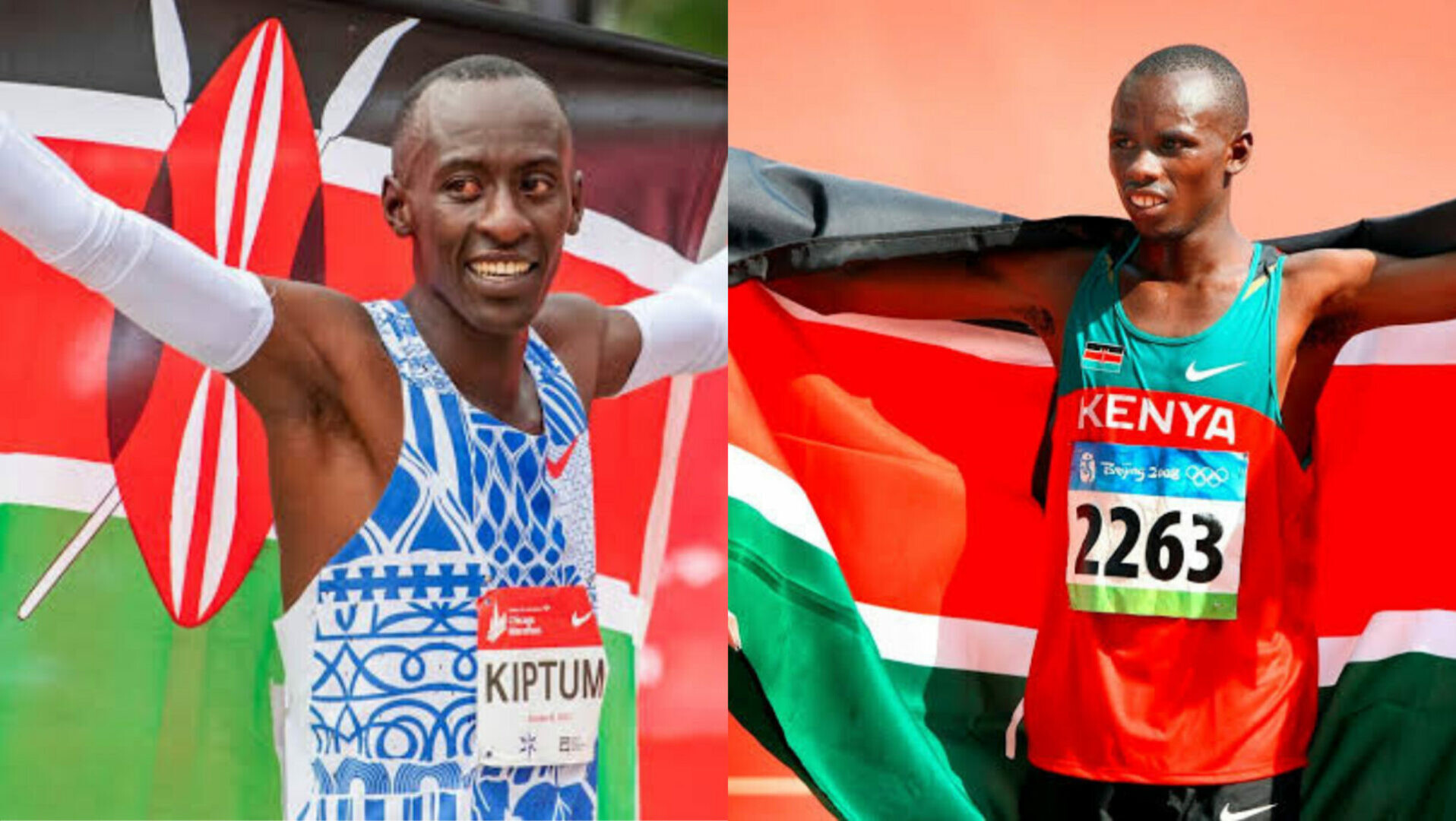
Just like Kiptum, the incident happened at night and his death remains a mystery that is yet to be unraveled to date.
Both died at 24
What is more heartbreaking is that the two runners died aged just 24 when they were just getting started.
Wanjiru had won the Chicago Marathon in 2009 and 2010 as well as the London Marathon (2009).
He was also the reigning Olympic marathon champion after winning gold in Beijing 2008 in an Olympic record time of 2:06:32.
For Kiptum, he held three of the six fastest times by the time he died, having broken the world marathon record in Chicago last year, clocking 2:00:35.
That came after an incredible win in London last April where he timed 2:01:25, coming close to the world record. Kiptum had run the fastest debut marathon in history when he won in Valencia in December 2022 in a time of 2:01:53.
Careers just taking off
Following their heroics in a short period of time, the two had the world at their feet by the time they died.
Wanjiru had been seen as the next big thing in marathon and was tipped to break the world record as well as retaining his Olympics gold in London the following year but he did not live to do it.
Kiptum was similarly tipped to be the man to take the mantle from legendary Eliud Kipchoge, especially after his astonishing run in London.
He was also seen as the man who would make history by running an official marathon under two hours and considered favourite to win Olympics gold in Paris, France this year.
Course records in London
In April 2009, Wanjiru won the London Marathon in a time of 2:05:10, a new personal record and also a new course record. That achievement saw him state that he was going to break Haile Gebrselassie's world record in the near future.
Fourteen years later in the English capital, Kiptum did the unthinkable, winning decisively with the second-fastest mark in history at 2:01:25, a course record which was only 16 seconds outside Kipchoge’s world record.
He would break the world record six months later in Chicago.
Sub-two-hour ambitions
Back in February 2008, Wanjiru declared he would become the first man to run a marathon under two hours.
"In five years' time, I feel capable of clocking a sub two hour-time for the marathon,” Wanjiru said at the Granollers Half Marathon which he won.
Meanwhile, since last year, the world has been waiting for Kiptum to run an official marathon under two hours.
He had already expressed his intentions of doing it at the Rotterdam Marathon in April.
“He had told me that he was feeling his body was in good shape and ready to run 1:59 or 1:58,” his heartbroken father Samson Cheruiyot told Citizen TV on Monday while recounting his last conversation with his son.
Last race in Chicago
The other striking similarity between Wanjiru and Kiptum is that Chicago Marathon was their last race before they died.
Wanjiru went to Chicago in October 2010 bidding to retain his title but a stomach problem had affected his preparations and his camp were just hoping for a podium finish.
He, however, surprised them when he defended his crown in a time of 2:06:24.
For Kiptum, Chicago was his third race in under a year and while he had set incredible times, not many expected a world record.
He delivered in style, clocking 2:00:35, to become the first man to break the 2:01 barrier, igniting hope that a sub-two-hour race was on the cards before death struck.
by Joel Omotto
Login to leave a comment
Ethiopian Tamirat Tola heads stellar field for RAK Half Marathon
Former world marathon champion Tamirat Tola of Ethiopia has confirmed his participation in the Ras Al Khaimah Half Marathon on February 24. The area is where he emerged as a world-class road runner when winning the neighbouring Dubai Marathon in 2017.
Chicago Marathon winner Seifu Tura and former women’s half marathon world record holder, Ababel Yeshaneh, will also be joining their compatriot in RAK. The entry for the 17th edition of the event is expected to read like a who’s who of international distance running as a wealth of elite athletes seek to take advantage of the benign Gulf conditions in the countdown for the spring marathons and the Paris Olympics.
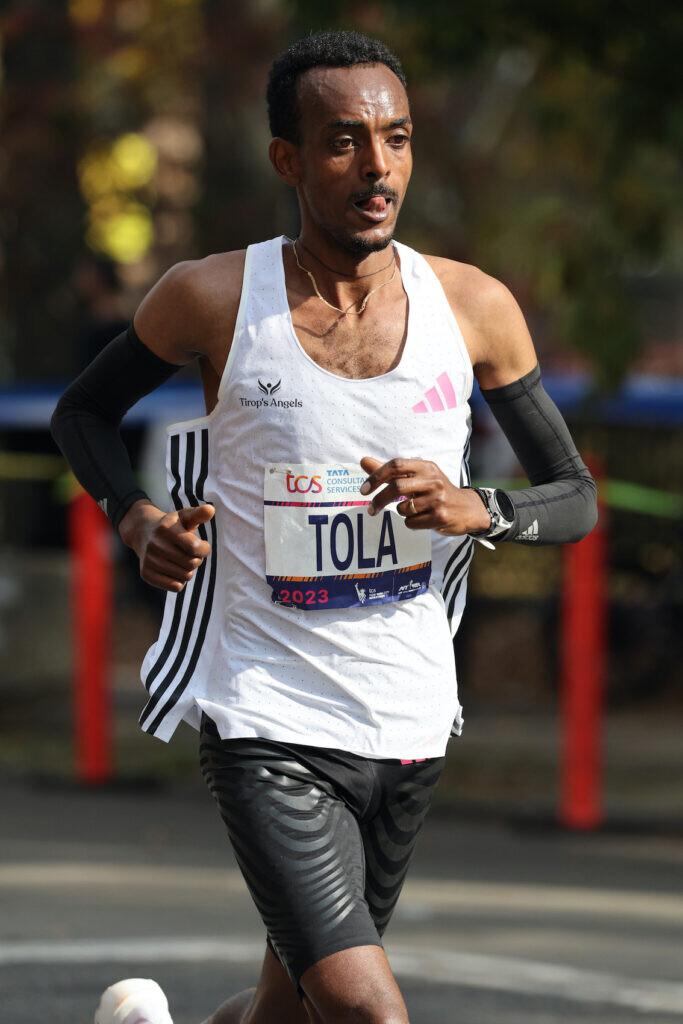
Having won Olympic bronze on the track at Rio 2016, Tola established himself as one of the leading road runners of his generation when he won Dubai 2017, and followed that up with silver at the World Championships in London later that year. Tola won world marathon gold in Eugene in 2022, but in the interim, he won the Amsterdam Marathon in 2021 and then topped that with victory in the New York City Marathon three months ago. He also finished third in the Tokyo and London Marathons in 2022. The 33-year-old’s fastest half marathon was a winning performance in 59:37 in Prague in 2017. His close family also keeps him on his toes; his wife Dera Dida won the Dubai Marathon 2023, and his younger brother Abdisa took the corresponding men’s title.
It’s a measure of the fast course in RAK that his compatriot Tura has run over a minute faster than Tola, but his 58:36 in 2022 was only good for fourth. But a victory and second place in the Chicago Marathon has bolstered his credentials.
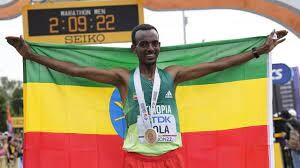
Their colleague Ababel Yeshaneh returns to the scene of one of her greatest victories, having set a world record of 64:31 in winning on the spectacular course around Al Marjan Island in the 2020 race. That time remains her personal best at the distance, although at the marathon distance, she also has two runner-up finishes to her name in Chicago 2019 and Boston 2022, as well as a third-place finish at the New York Marathon 2021.
The three Ethiopians will join elite fields that already include men’s defending champion Benard Kibet of Kenya (58:45) and his colleague, reigning Olympic Marathon Champion and three-time World Half Marathon Champion Peres Jepchirchir, who set her best half marathon in winning RAK 2017 in a then world record of 65:06.
by Christopher Kelsall
Login to leave a comment
Rak Half Marathon
The Rak Al Khaimah Half Marathon is the 'world's fastest half marathon' because if you take the top 10 fastest times recorded in RAK for men (and the same for women) and find the average (for each) and then do the same with the top ten fastest recorded times across all races (you can reference the IAAF for this), the...
more...6 Benefits You Gain from Slowing Down Your Runs
Pumping the brakes on your runs can boost your performance in a number of ways.
For many runners, embracing the concept of slow and easy runs is a game of mental gymnastics. Can you really become a better, faster runner if you’re consistently going at a pace that feels easy and relatively slow to you?

“It can be very hard, especially for new runners, to really understand that anything positive is happening when a run feels really easy,” South Carolina-based exercise physiologist Heather Hart, C.S.C.S., certified run coach and founder of Hart Strength and Endurance Coaching explains to Runner’s World.
That’s to a runner’s detriment, because there are tons of awesome benefits of slow running any athlete can reap from regularly training at an easy pace.
To convince you to pump the brakes, we tapped two experts to learn all there is to gain—both physically and mentally—from slowing down.
What “Slow Running” Really Means
Before we dig into its perks, let’s get clear on what constitutes “slow running.” Basically, it’s any run in which your heart rate is at or below about 70 percent of your maximum heart rate, Hart explains. This is typically considered zone 1 or zone 2 training.
You don’t have to track your heart rate to know if your run meets the criteria for “easy,” though. A simpler method is to tune into your own sense of what feels “easy” and what feels “hard” using the rate of perceived exertion scale (RPE). Imagine a scale of 0 to 10 where zero is no exertion at all and 10 is all-out work—an easy run should fall between a 4 and a 6, says Hart.
Another way to monitor whether you’re striding easy enough: Try holding a conversation. If you’re able to chat without gasping, then you’re likely nailing slow running, Hart says.
“My rule of thumb is that if an athlete [questions] am I running too fast?, then they probably are,” Hart explains. In fact, slow running is probably slower than you think.
6 Slow Running Benefits
Here are all the amazing things—in no particular order—that can happen when you embrace a slow pace.
1. Higher Lactate Threshold
It’s logical to think the only way to get better at running fast is to, well, run fast. But dedicating time to slow running can actually provide a physiological benefit that improves your ability to pick up the pace.
Here’s why: Slow running increases the density of your mitochondria, the little organelles in cells that help metabolize lactate, a byproduct of glycolysis or the process of turning food into fuel for exercise.
There’s an association between the onset of fatigue while exercising and elevated levels of circulating lactate, Janet Hamilton, C.S.C.S., exercise physiologist and coach with Running Strong in Atlanta tells Runner’s World. “That’s known as the lactate threshold,” she says. “You get more lactate production than you have consumption.”
Boosting your mitochondrial density with slow running means you can increase your lactate threshold even during hard efforts, Hart explains. Instead of hitting your lactate threshold (and thus fatiguing out) at, say, a 9-minute mile pace, you may be able to push, say, an 8-minute mile pace. In other words, “you can run faster,” without running out of gas as quickly, Hamilton explains.
2. Reduce Your Chances of Hitting a Wall
While runners rely on fast-twitch muscle fibers for speed work, there’s a subtype of fast-twitch fibers that are somewhat convertible—they can utilize fuel aerobically as well as anaerobically. That means you can strengthen them through high-intensity efforts or by doing long, slow aerobic runs, Hamilton explains.
During a long, slow run, when the slow-twitch fibers start to tire, your body recruits some of the convertible fast-twitch fibers to help out. Do this enough and you are training these fibers to pitch in more reliably. This can help you run longer without getting as fatigued.
Mitochondria also plays a role here, because aside from gobbling up lactate, it metabolizes fat. When running, your body primarily relies on glycogen (the stored form of glucose or sugar) in your muscles for fuel. Because you only have a limited supply of glycogen, that plan works well until it doesn’t. Any runner who has bonked during a distance race knows how awful this crash can feel.
As a backup, though, your body has an almost unlimited supply of intramuscular triglyceride, also known as fat. Training your muscles to more efficiently burn fat for fuel, as you do with long, easy runs, will decrease the likelihood of hitting the wall, Hamilton explains.
3. Happier Running
Though there are some folks who genuinely love running all out, for a lot of athletes, “speed work is hard,” says Hamilton. Not only can fast running be uncomfortable and demand a lot of focus, it can physically stress your body, she explains. And surprise, surprise: Physical stress can impact your mental health, too, says Hart.
Easy running, by contrast, “is a nice way to let running be a stress reliever instead of a stress producer,” Hamilton says. Indeed, Hart finds that low-intensity workouts provide a chill space where you can simply enjoy running for what it is without worrying about hitting certain paces. “You can stop and smell the roses,” she says.
And if you’re a beginner still trying to build a consistent run routine, finding this type of joy in the activity can make you more likely to stick with it. Case-in-point: A 2015 study involving 41 people concluded that experiencing more positive feelings during a training session improved participants’ adherence to their exercise program.
4. Improved Recovery
Running hard all the time can result in cumulative fatigue, which ultimately affects performance in all your workouts, Hart explains. So regularly slotting slow runs into your schedule can help facilitate recovery and conserve energy so that when it is time for a speed workout, you’re able to run at a high level and hit your target paces. As Hart puts it: “It’s super important to keep those easy days easy so that the hard days can be hard.”
Along those lines, a lot of people don’t realize the adaptations we make from intense training occur during the recovery period following a workout—and not during workouts themselves, Hart explains. By taking it easy after hard and fast runs, you will reap the full gains of those workouts.
5. Decreased Risk of Injury
Fast running places more strain on your feet and lower legs than easy running, and research suggests a link between logging speedy paces—especially when you’re not ready for speed—and potentially higher risk of certain injuries, like plantar fasciitis, Achilles tendinitis, and calf strains. Embracing slow running allows you to increase the percentage of your total weekly mileage while minimizing the amount of stress you’re placing on your body and reducing your overall injury risk, Hart explains.
Ultimately, this can translate to better performance. As Hamilton puts it: “The only way to get faster in your races is to train well, and the only way to train well is to stay healthy.”
6. Stronger Mind-Body Connection
Routinely alternating between hard and easy runs will encourage you to tune into your body and its relationship with different exertion levels. And this mindfulness can benefit you in a race scenario, Hart says.
It will give you an understanding of how hard you’re working at a given pace and whether or not you should pick up, slow down, or maintain the pace, she explains. Instead of blindly following a pacing plan that may or may not be right for you on a given day, you’ll be able to adapt in real-time to how your body is actually feeling, thus becoming a more strategic competitor.
by Runner’s World
Login to leave a comment


